
- Testimonials
- T’s & C’s

Torres del Paine W Trek Accommodation
And serviced camping information.

For a Torres del Paine W Trek or Circuit Trek Itinerary
Click through here, what is a refugio and what do they offer.
Effectively a refugio is basically a hostel. In other words a simple form of accommodation where there are “no frills”. Moreover, rooms are NOT individual, but dormitories with bunk-bed configurations, whereby other travellers will be sleeping – unless you book an entire dorm for exclusive use. In addition, there are NO en-suite bathrooms, only communal, but segregated shower rooms with WC’s.
Tightly Packed
What’s more, meals are served in an often “tightly packed”, “canteen style” set up. Another facility is that often there will be a mini market on site to sell snacks, drinks and other traveller-required products.
Younger Hikers
With this in mind, refugios are not for everyone. Younger, hikers are usually perfectly “at home” with the refugio set up, however, older guests may prefer the comfort of a hotel or even luxury lodge.
Direct Email: [email protected]
The picture below shows a dorm room, with bunk beds at one of the W Trek Refugios
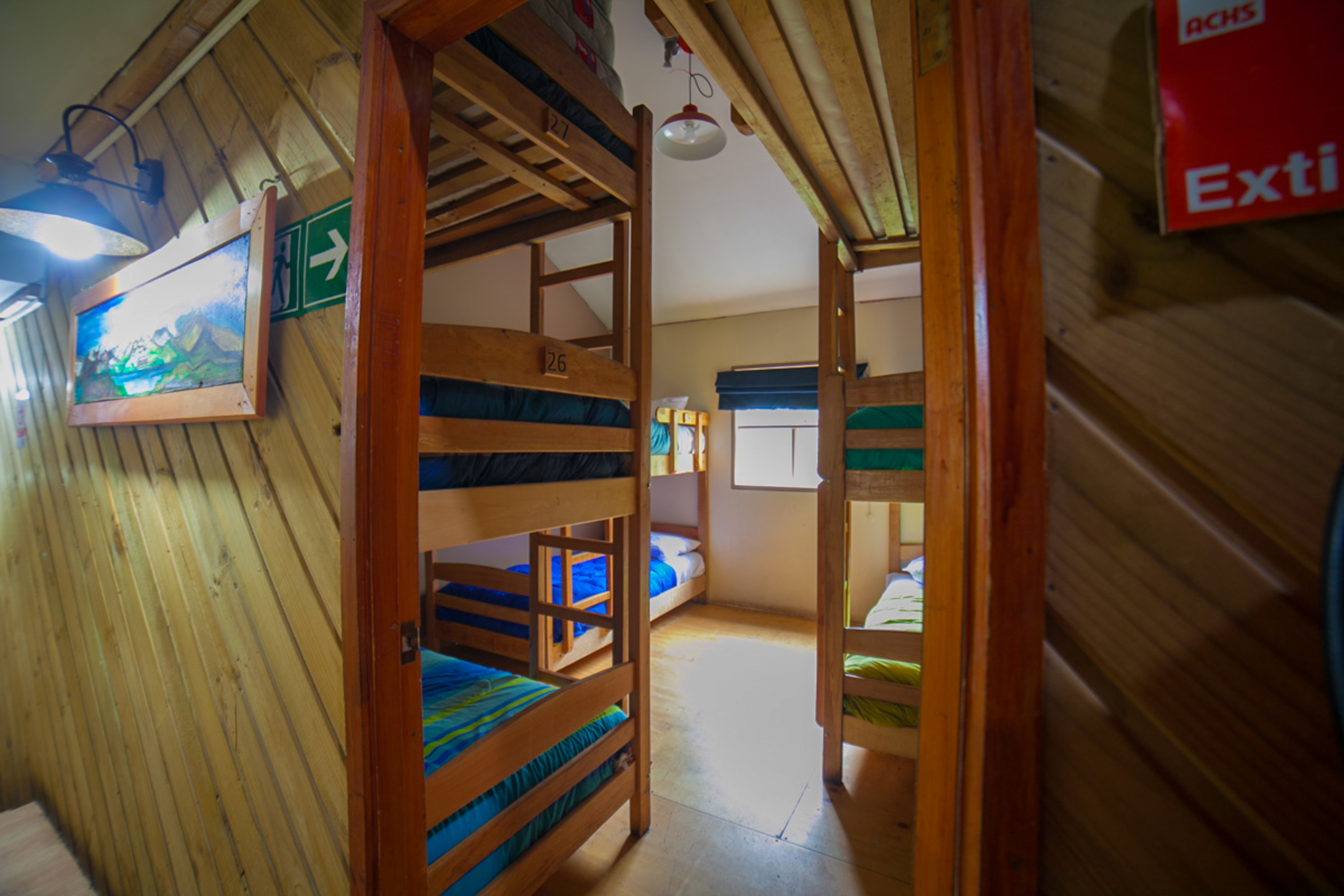
For a personal, custom-built Torres del Paine W Trek itinerary,
Email us here:, [email protected].

Above is a picture of a dorm room inside the Refugio Las Torres Central.
Torres del Paine W Trek refugio accommodation is similar to hostels that are located at key points along the trail. They provide a fun social space to unwind and re-charge after your day on the trail.
Making Friends
When you stay overnight in the refugios there is a jovial, friendly, holiday atmosphere. After all, everyone there is also on holiday and enjoying a spectacular adventure trek. Therefore, it is only natural that friendships are made, some enduring.
Those who decide to stay in the comfort of a hotel, or even a top-end luxury lodge, also enjoy this special, relaxed and friendly atmosphere. Particularly, it is common for hotel guests to strike up great friendships.
Size and Quality
For full information on the Torres del Paine W Trek Refugio Accommodation click through to our dedicated page here.
LINK TO REFUGIOS
However, we only book full-board accommodation , so all your meals will be included throughout the duration of your trip.
Q. How do I Book Refugios on the Torres del Paine W Trek?
Many people book their W Trek requirements via ExperiencChile.Org , with over 30 years’ experience and a presence in Patagonia. The reason for this is that they have established relationships with all the main suppliers in and around Torres del Paine. In addition, they understand the process involved in coordinating the complicated logistics that are involved. You need to decide if you want to trek west to east or east to west. More information about this is further below. You also need to ask yourself if you need a guide or wish to trek self-guided. Therefore, asking ExperienceChile.Org will be all you need to book the refugios on the W trek. Email: [email protected]
Q. Is there Food at the Torres del Paine Refugios?
All the refugios on the W Trek provide good, home-cooked food. Guests will receive, in this order, a hot dinner, breakfast and a box lunch to go.
Q. What is a Tent Like on the W Trek?
The serviced camping provided along the W Trek Trail includes a quality tent, already pitched for your use, usually on a platform, and inside will be a ground mat and sleeping bag. In addition, all of your meals will be taken inside the adjacent refugio, which is where the serviced camping spots are located.

How About Staying in Hotels and / or Luxury Lodges and Hiking the W Trek?
Please check out our accommodation options here: Link to ExperienceChile.Org Torres del Paine Accommodation Page
Or ask us by sending in an email to: [email protected]
Please send us your enquiry.
For the best service please supply us with as much information as you can. For example, where you want to go, what you want to do, what you want to experience and how much money you want to spend (or do not want to spend!). How many people, what type of beds (matrimonial, twin, single etc.)
In the event that you are a VIP in any of the fields such as celebrity and/or political and/or business, and you need “special attention”. For example, privacy and/or security for your trip please use an alias in the enquiry but mention that you are VIP and one of the directors will handle your request and keep your real name and details confidential.
Ask us to handle ALL of your South America, or Chile trip and we WILL include some items for free or at special lower-than-public rates. How much we can offer you depends on how much we can arrange and book for you. [email protected]
Remember, our specialty is to create a travel itinerary custom-built to your needs.

Step-by-Step Guide On How to Book W Trek Accommodations
- South America
Along the W Trek, there is a limited number of accommodations available. With the short open season and the number of hikers flocking to do this amazing trek, it makes booking the accommodations one of the most daunting tasks of this adventure.
This guide is to help anyone interested in completing W Trek, or just some stages of it, better understand how to book campsites, refugios (hostels/mountain huts), mountain cabins, or a hotel in Torres del Paine National Park. There is limited availability of such accommodation at each stage.
W Trek is a 5-day trek in Torres del Paine National Park. It is a popular hike named after the shape the hike takes. Learn more about the trek and get an overview of each day in our 5-Day W Trek Itinerary . And if you are looking for more detailed information about accommodation amenities and a cost breakdown on the W Trek check out our post W Trek Accommodations .
When can you hike the W Trek?
Torres del Paine National Park is open year-round. However, the hiking season is considered from September to April. This is when refugios are open and ferry services are running.
Hiking during winter is possible, but you risk hiking on snow-covered trails and no services are available at the refugios. Water pipes will most likely be frozen so cooking and drinking will require melting snow.
We hiked the W Trek from December 24 to December 28, which is probably the busiest time on the trail.
Factors Limiting Accommodation Availability
The narrow window of time, when you can hike the W Trek, is one of the factors that limit accommodation availability.
Also, there is a limited number of campsites, refugios, and hotels in the Torres del Paine National Park. People booking those accommodations are not just W Trek hikers but also, O Trek hikers and day hikers.
To ensure you can book your W Trek accommodations in proper order, it is important to know how to check availability, stay organized, and make your reservations as early as possible.
When to Book Your W Trek Accommodations
The earlier the better, right?
It helps to plan early and have flexibility in your hiking days. The accommodations are limited and book up fast. Not just by hikers but also by tour operators that always have a certain number of annual reservations in place. The booking websites make upcoming season dates available in mid-May.
Being flexible when it comes to accommodation style helps too. If you are willing to sleep in a tent or just need a campsite and plan to carry your camping gear, you do not need to plan as early as if you are strictly interested in sleeping in refugios.
We started looking at booking in July 2022 for December 2022 and it was too late. The reason it was late for us is we did not want to sleep at the campsite and our hiking dates were preset. The lack of this flexibility forced us to go to a tour operator to get what we wanted.
There is nothing wrong with using a tour operator however, it can be much cheaper if you do it yourself. If you are interested in how to do all the booking on your own this post will walk you through it step by step.
Sectors and Accommodation Options
Torre sector.
This is a sector that is either the beginning or the end of the W Trek. The trail to the base of the towers is the busiest section of the W Trek and luckily has a few different accommodation options. Here you can find Hotel Las Torres, Refugio Central, and Refugio Chileno.
Hotel Las Torres is the most luxurious and expensive accommodation on the trail. It is located at the trailhead of the towers. Refugio Central is a little over 0.5 miles east of Hotel Las Torres and has both refugio and camping-type of accommodations. Refugio Chileno is on the trail to the towers, a half point on the trail, and has both refugio and camping options.
Curenos Sector
Cuernos (the horns) sector also has multiple accommodation options, Refugio Cuernos and Refugio Frances.
Refugio Cuernos has both refugio and camping options but in addition, also has tiny mountain cabins that fit 2-3 people. Refugio Frances has dome-style refugios and campsites. Frances Domos was our favorite accommodation on the W trek.

Both Torre and Curenos Sector accommodations are managed by the Las Torres management company and all the accommodations can be booked here .
Paine Grande Sector
The only accommodation in the Paine Grande Sector is the Paine Grande refugio and campsite. Paine Grande refugio is a very busy location because a lot of people start the W Trek or day treks from here coming on the ferry over Lago Pehoe. Paine Grande Refugio is the biggest of all the refugios on the W Trek.

Grey Sector
The home of the Glacier Grey and either beginning or the end of the W Trek. The only accommodation here is Refugio Grey with a refugio and campsite option.
Both Paine Grande and Grey Sector accommodations are managed by Vertice Travel management company and all the accommodations can be booked here .
TIP: I could not get Vertice Travel bookings to work through Chrome and had to use Microsoft Edge.
Booking the Accommodations
This is our step-by-step approach to booking accommodations for the W Trek. It can be applied to any other hike as well.
A couple of things to note about the information in the spreadsheet:
We were not able to find all the refugio accommodations and ended up booking through a tour operator, but this is the approach we used.
Highlighted options in the spreadsheet are just an example.
The full board cost at Central is higher than other Las Torres accommodations because it was Christmas Eve.
Step 1 For Booking W Trek Accommodations – Set the Dates
The first step in booking the accommodations on the W Trek is deciding on the general time frame you would like to do the hike in. If you can be flexible with your dates, you will have a higher chance of finding availability.
Step 2 For Booking W Trek Accommodations – Develop a Spreadsheet
Yes, we are engineers and love spreadsheets, but one really helps in this case. Layout your desired dates, all available accommodations, and accommodation options (refugio vs campsite). Also, place them in order of how you would like to do W Trek, east to west or west to east. It’s a good idea to be flexible with this option too, gives you a better chance of finding desired accommodation.

Step 3 For Booking W Trek Accommodations – Populate the Spreadsheet
Once we developed the spreadsheet, we populated it with the cost for every option we were interested in. The cost of every option is preset and the same throughout the season. Once we found the match, we would highlight that cell and add up the costs right away.

Step 4 For Booking W Trek Accommodations – Book your Accommodation
When you have your dates, the trail, and accommodations figured out book them as soon as possible. Once you have them all booked, follow up with each of the accommodation management companies (Las Torres and Vertice) to make sure they have your booking. You are done!
This was a very stressful process for us. Kris spent a lot of time looking at the different options but being inflexible with the dates and the type of accommodations did not work in our favor. If that is the case for you as well, make sure you book much earlier than we did. Mid-May is when the booking opens for the upcoming season.
Other helpful posts…
5-Day W Trek in Torres del Paine W Trek Accommodations Things to Do in El Calafate Things to Do In Bariloche
South America | Travel
2 comment(s), contact us:.
Email Address
RECENT Posts

Amazing Two Days of Hiking in Sedona
Last updated Apr 8, 2024 | Explore , North America , Travel
This itinerary is packed with two full days of hiking, close to 30 miles. In these two days of hiking in Sedona, we hit all the most popular trails.

How to Spend Two Days in Aoraki/Mt. Cook National Park
Last updated Apr 1, 2024 | Explore , Oceania , Travel
Spending two days in Aoraki/Mt. Cook National Park is best utilized taking a scenic drive into the park, embarking on one of the many trails or taking a flight.

Kayaking in Milford Sound
Last updated Feb 27, 2024 | Explore , Oceania , Travel
Kayaking in Milford Sound is one of the must-do things in New Zealand. It is a great way to explore the area and do something adventurous and fun.

All You Need to Know About Milford Sound | New Zealand
This post will walk you through all you need to know about Milford Sound whether you are a first-time or returning visitor. What to expect and how to prepare.

New Zealand Itinerary | Epic 15-Days in North and South Island
Last updated Feb 27, 2024 | Oceania , Travel
This New Zealand Itinerary is designed to spend 5 days in the North Island and 10 days in the South Island. Renting a car is crucial for this itinerary.

Tongariro Alpine Crossing | The Best Day Hike in New Zealand
Last updated Feb 24, 2024 | Oceania , Travel
Tongariro Alpine Crossing is a point-to-point 19.4 km (12 miles) trail in New Zealand. It is considered the best day hike in the country.
Random question – when you’re looking to book your accommodation yourself, when you put in “for 2 people”, everything beyond that will assume the price of 2 people correct? (so breakfasts, etc, if you then enter 1, it knows you need 2 since you already told it in a previous field that you were booking for 2?) This is thing we’re most unsure of if trying to book ourselves (me: “one dinner can’t be $45” lol)
Hi Sheena, As unreasonable as it may sound, that is the price for 1 person. If you book half-board (breakfast and dinner) or full-board (breakfast, box lunch and dinner) it’s better value than buying individual meals. Cheers, Dana
Submit a Comment Cancel reply
Your email address will not be published. Required fields are marked *
Save my name, email, and website in this browser for the next time I comment.
Submit Comment

W-Trek Route
- Beitragsautor Von Mark
- Beitragsdatum 26. November 2019
- Keine Kommentare zu W-Trek Route
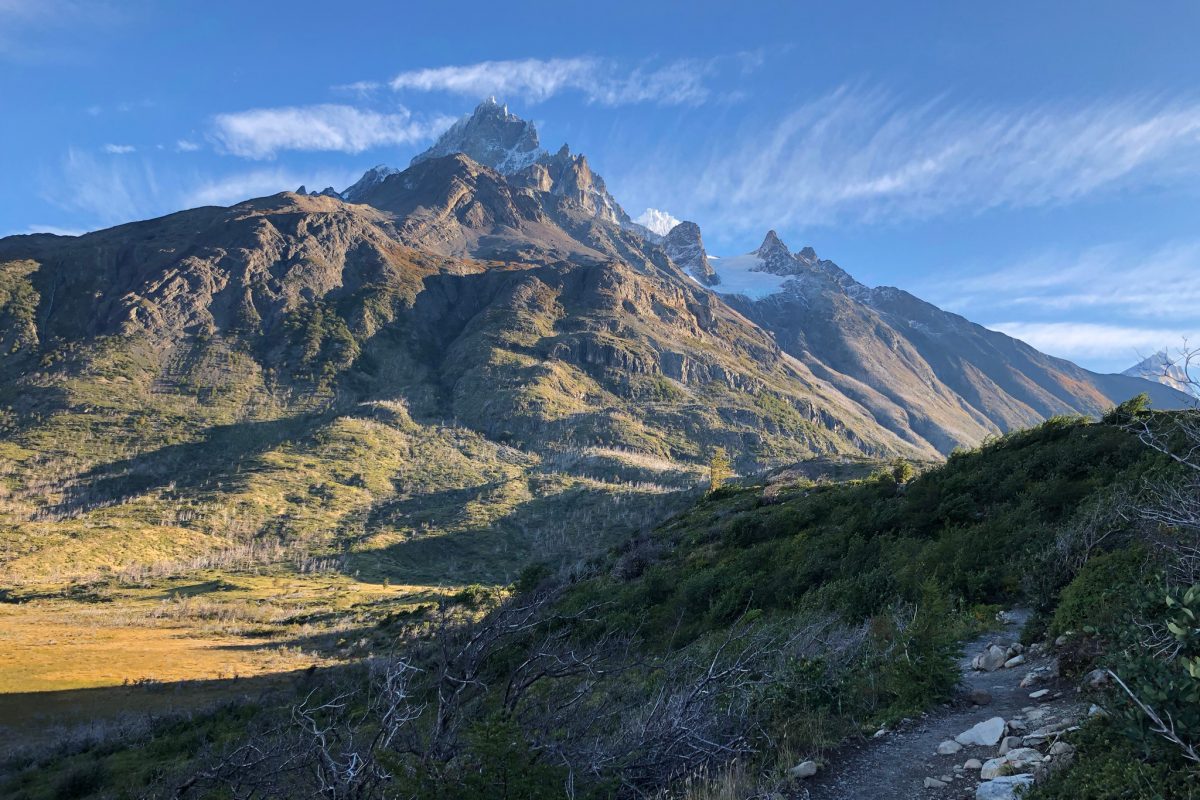
Für den W-Trek im Torres del Paine gibt es einige Variationsmöglichkeiten hinsichtlich der Unterkünfte . An manchen Tagen hat man bis zu drei Camps zur Auswahl, anderen nur Eines. Trotz dieser Möglichkeiten bleibt die grundsätzliche Route jedoch immer gleich. Lediglich die Tagesziele ändern sich durch die Auswahl der Unterkünfte.
Unsere Artikel zum W-Trek orientieren sich an folgenden Unterkünften:
- Refugio Grey, Tag 1
- Refugio Paine Grande, Tag 2
- Refugio Los Cuernos, Tag 3
- Refugio Chileno, Tag 4
- Rückkehr, Tag 5
Inhaltsverzeichnis
Mögliche Alternative n
Es kann erforderlich sein, eine alternative Route auszuwählen. Dies kommt insbesondere in der Hauptsaison vor, wenn man nicht früh genug bucht. Deshalb empfehlen wir Euch insbesondere für die Monate Januar bis März eine möglichst frühzeitige Buchung. Bitte bedenkt dass Ihr zwingend eine gültige Buchung haben müsst – Wildcampen ist verboten.
Standardvariante mit ähnliche r Strecke pro Tag aber anderen Refugios / Camps
- Tag 3: Camping Italiano (2019 geschlossen), Frances
- Tag 4: Camping Las Torres, Refugio Chileno
Variante ohne Grey
- Paine Grande, Tag 1 Ankunft und Übernachtung
- Gewaltmarsch zu Grey Gletscher und zurück
- Paine Grande, Tag 2. Übernachtung
- Cuernos / Italiano / Frances, Tag 3
- Chileno / Las Torres, Tag 4
Ohne Mirador Frances / Britannico, sonst wie Standardvariante
- Paine Grande, Tag 2
- Refugio Chileno, Tag 3 (extrem lange Gehzeit und sehr früh zu starten)
Option ohne Torres am letzten Tag, sonst wie Standardvariante
- Rückkehr Tag 4
Hier findet Ihr ein Karte des Nationalparks. Für den Fall dass der Download nicht funktioniert könnt ihr Euch auch eine Version der Karte von 2018 bei uns herunterladen. Dort findet Ihr auch die Gehzeiten zwischen den Camps eingezeichnet, um für Euch die beste Variante des W-Treks im Torres del Paine Nationalpark zu finden.
Schreibe einen Kommentar Antworten abbrechen
Deine E-Mail-Adresse wird nicht veröffentlicht. Erforderliche Felder sind mit * markiert
Kommentar *
Meinen Namen, meine E-Mail-Adresse und meine Website in diesem Browser für die nächste Kommentierung speichern.
{{#message}}{{{message}}}{{/message}}{{^message}}Deine Übertragung ist fehlgeschlagen. Der Server antwortete mit {{status_text}} (Code {{status_code}}). Bitte kontaktiere den Entwickler dieses Formularprozessors, um diese Nachricht zu verbessern. Mehr erfahren {{/message}}
{{#message}}{{{message}}}{{/message}}{{^message}}Es scheint, dass deine Einsendung erfolgreich war. Obwohl der Server mit dem Status „OK“ geantwortet hat, kann es sein, dass die Übertragung nicht verarbeitet wurde. Bitte kontaktiere den Entwickler dieses Formularprozessors, um diese Nachricht zu verbessern. Mehr erfahren {{/message}}
Sendevorgang läuft …
- National Turists
- Our Campings
- Our Mountain Hostels
- Torres del Paine
Torres del Paine W Trek - Hotel
Enjoy a 5-day/4 night W Hotel option for you to experience all the sights of the Torres del Paine W Trek but in a day trip format. With the comforts of sightseeing transport, you’ll head out for your adventure each day after a hearty breakfast and a good night’s sleep.
Portada » All Inclusive » All Inclusive Torres del Paine W Trek
Torres del Paine W Trek - World's best hiking!
Be prepared to fall in love with Chile’s Patagonia during the all-inclusive Torres del Paine W Trek at Las Torres Hotel & Reserve.
Torres del Paine has gained worldwide attention due to its big mountains, vivid contrasts, and vast landscape. Turquoise lakes mirror the jagged snow-covered peaks, and old, native forests tell the stories of generations past. For a reason, the Torres del Paine W Trek is the most popular hike in the Park – it’s stocked with all the highlights, including the Las Torres and Los Cuernos Mountains, Francés Valley, Paine Grande, and Grey Glacier.
Torres del Paine W Trek gets its name from the way it starts at one end of the Park, with the famous Torres, winds up and back down two spectacular mountain valleys, and then comes to a close at the other end, with Grey Glacier.
While the Torres del Paine W Trek offers luxuries like warm beds, hot showers, bathrooms, and stock-up points along the way, it remains a physically demanding experience that will leave you amazed by its immense beauty.
The 5-day/4 night W Hotel option lets you experience all the sights of the Torres del Paine W Trek but in a day trip format. With the comforts of sightseeing transport, you’ll head out for your adventure each day after a hearty breakfast and a good night’s sleep. Our remarkable guides will enrich your experience by helping you see the Park and learn about it. Each night, you’ll be able to enjoy a cozy hotel room, traditional cuisine, and relaxing treatments at our Wellness Center.
What is there to enjoy?
Amongst the most famous mountains in the world, these three towering, granite peaks soar in the blue sky at 2850m / 9350ft, 2800m / 9200ft, and 2600m / 8500ft. Molded by pure glacial force, these are the breath-taking towers that give the Park its name.
Los Cuernos
These three mountains put up a fight with the Las Torres Mountains over prettiest in the Park. Standing at 2600m / 8500ft, 2400m / 7900ft and 2200m / 7200ft, the different types of rocks that make up this massif create a stark, beautiful, and multi-colored contrast. A 700m / 3000ft wide slab of granite crosses the middle of these uniquely shaped mountains.
Francés Valley
This lookout in the middle of the W Circuit boasts unmatchable views. To the west, you can gaze at the Cuernos, Espada, Hoja and Máscara mountains. To the east, the Francés Glacier overhangs Mount Paine Grande. To the north, the jagged Fortaleza and Aleta de Tiburón (shark’s fin) peaks stand out against the sky. As if that wasn’t enough, the valley is immersed in a Nothofagus forest filled with many species of trees and vegetation that produce a variety of flowers and change colors during autumn.
Paine Grande
Made up of four summits, Paine Grande is recognized as one of the most beautiful mountains in the world. The highest peak towers at 3050m / 10000ft, making it the tallest mountain in the Macizo Paine Range and also the technically hardest mountain to climb in the entire Torres del Paine National Park.
Glaciar Grey
This is the largest glacier in Torres del Paine National Park, measuring 6km / 4mi wide, 30m / 100ft tall and 19km / 12mi long. Its floating icebergs and glacial moraines are just as picturesque as the glacier itself, which tumbles down from the massive Southern Ice Field. To see this gorgeous ice formation up close, you can take a boat ride, a kayak tour or an ice-hiking excurision.
Traditional Barbecue at Cerro Negro Estancia
A roasted lamb barbecue and pisco sours at our authentic family ranch. Watch sheep-shearing activities and wander around our house museum with decor and relics from the 1940s. This stop is available when coming from Punta Arenas.
Creative, fun cocktails
Our bar mixes original, eco-friendly cocktails served in handcrafted glasses with fresh produce from our large kitchen garden.
Chilean wines and craft beers
With your all-inclusive package, you can enjoy a variety of our cocktails, wines and craft beers. Try our house beer, Pionero!
Patagonian Cuisine
Dining at Hotel Las Torres is a gastronomical experience, with delicious and beautifully served dishes reflecting traditional recipes. All your meals at our bar and restaurant are included, and a majority of our fruits, vegetables, and herbs are grown in our very own regenerative kitchen garden.
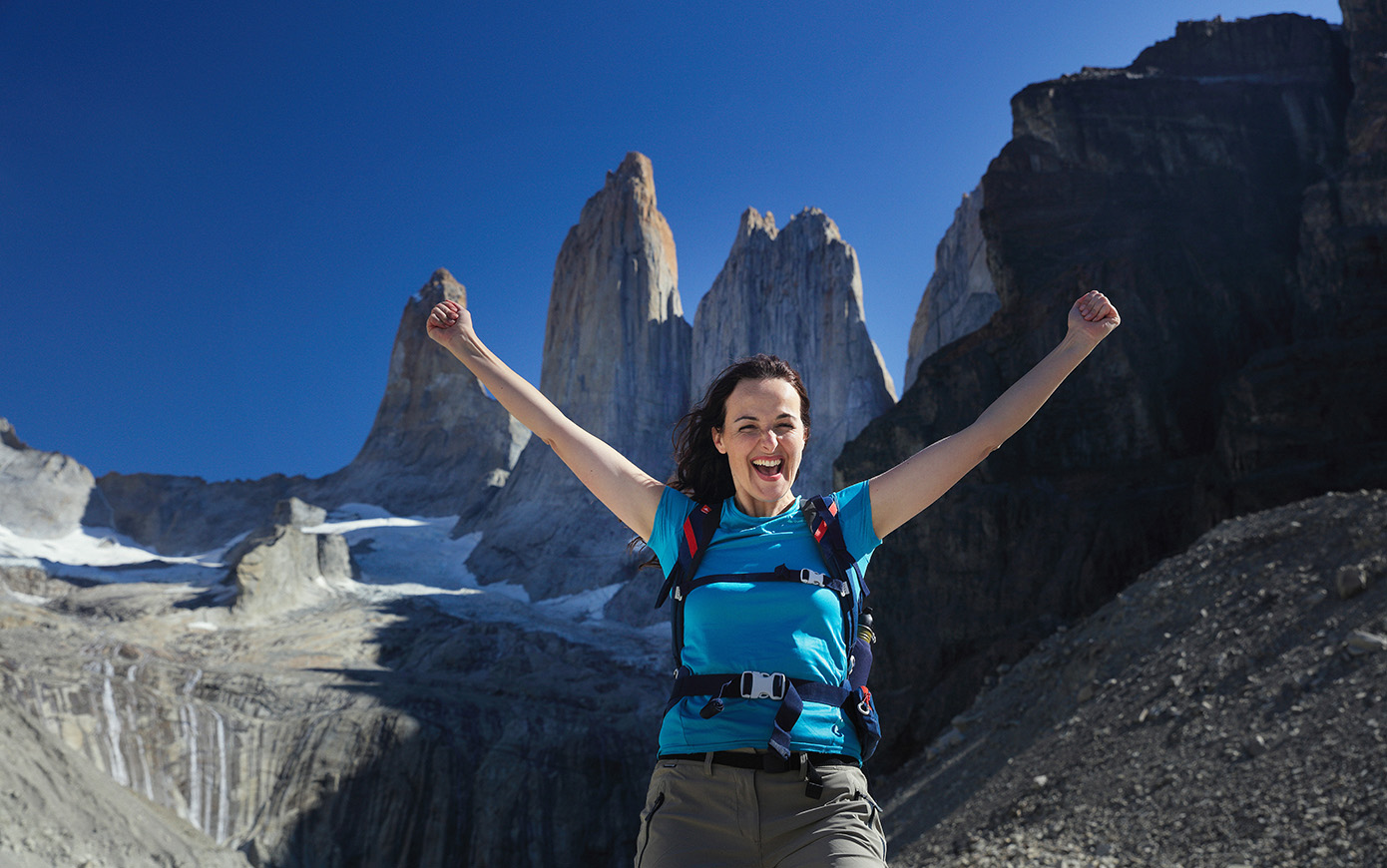
What does it include?
- This All-Inclusive Includes
- OUR PROGRAMS DO NOT INCLUDE:
- Reservations and Cancellation Policy
All-Inclusive W Circuit Hotel
All rates are per person.
Double room – 2 people per room :
Single room – 1 person per room :
Triple room – 3 people per room :
Suite Upgrade: USD $220
- 1 4 nights in superior room at Hotel Las Torres
- 2 All meals(patagonian BBQ with prior reservation)
- 3 Open bar, except premium beer, wine, and spirits
- 4 Scheduled regular transport to and from Punta Arenas, Puerto Natales or Calafate
- 5 Regular guided tours every day inside the National Park with bilingual guides
- 6 Entrance fee to Torres del Paine National Park
- 7 Catamaran Lake crossing
- 8 Navigations: Gray and Pehoe Lakes
- 9 Visit to Cerro Negro Ranch with Grilled Patagonian lamb and drinks (only for transfers from Punta Arenas)*
- 10 An experience of a lifetime
- Premium drinks (wines, beer, liquors)
- Transfers outside our regular scheduled times
- Service tips
- Laundry service
- Travel insurance
- Services not mentioned
Reservations, Changes and Cancellation
- Prices valid from October 2024 to April 2025
- USD rates are only for international visitors and non-residents.
- If you would like to read our Reservation and Cancelation Policy please click here .
Happy Guests and Incredible Memories
Our guests and visitors come to experience Torres del Paine for the purity of it´s nature and extraordinary contrasts.
They leave Reserva Las Torres with the most incredible memories from an authentic natural adventure.
We greatly enjoyed our time here. The excursions showed us things we’d been dreaming of for years. The staff were very friendly and helpful. My only regret is that our stay was too short to take every excursion we wanted! We took the all inclusive option and I would definitely recommend that route.

An amazing place with staff who were so friendly and helpful both in organising our excursions and room service. We especially appreciated our many guides, Josie, Alex, Deanne, Martius, Diago and Kristen for their understanding and knowledge of the area. I was very fortunate to see a puma during one of our excursions. Where the hotel is situated, leaves me breathless, each time I walk around.

Make an inquiry or a Reservation Here
Las Torres Patagonia

Gracias por contactarte con Reserva Las Torres Patagonia

- Best Hikes In The World
- Appalachian Trail
- European Hikes
- Nepal Hikes
- Patagonia Hikes
- See All Hikes
- Mount Kenya
- Mount Kilimanjaro
- Mount Toubkal
- See All Mountains
- South Africa
- New Zealand
- Switzerland
- United Kingdom
- Packing Lists
W Trek Patagonia – Guide To The Most Popular Hike In Torres Del Paine
Chile , Hikes , Patagonia , South & Central America
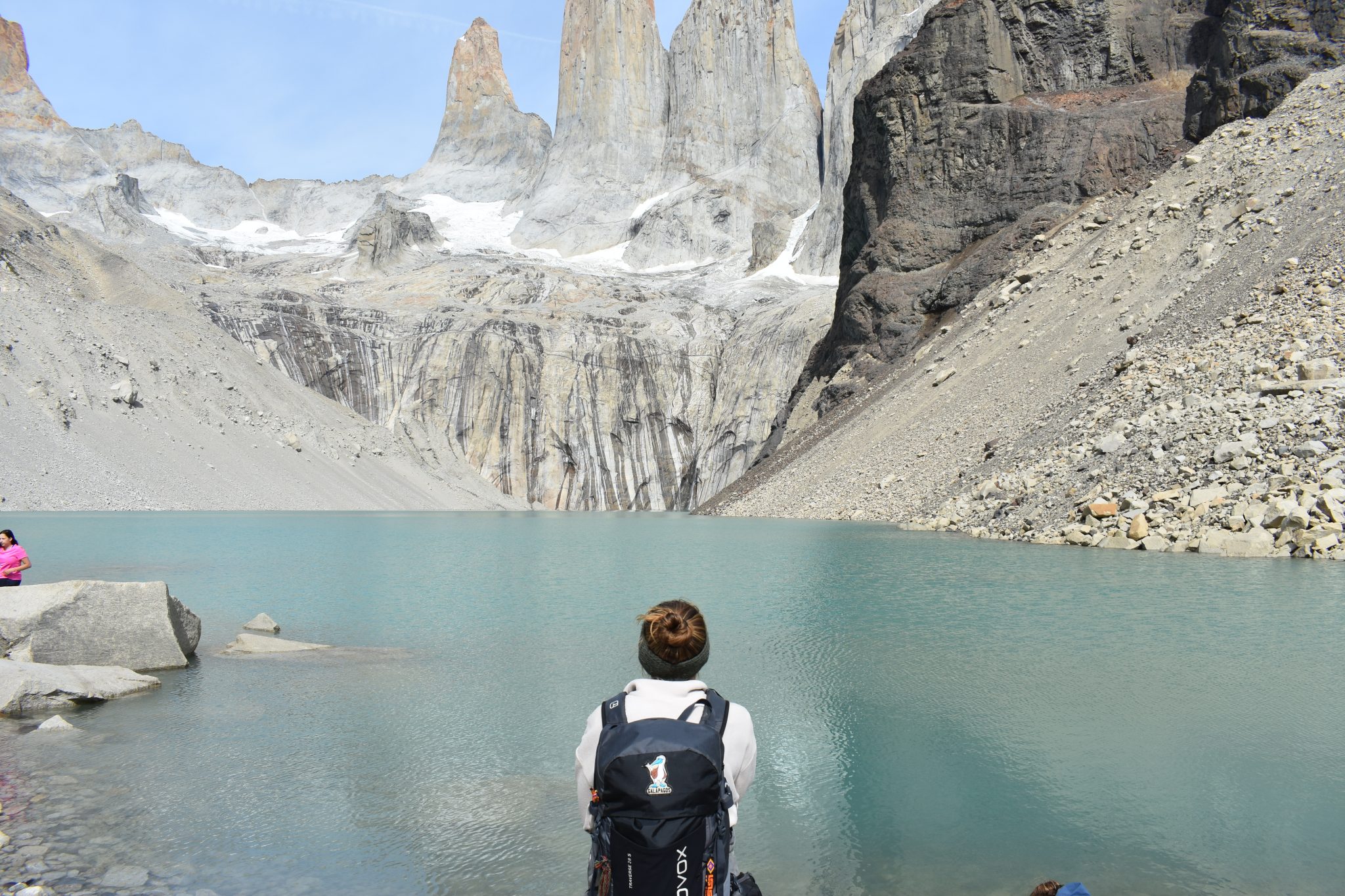
The Torres Del Paine W Trek in Patagonia is a 5-day, 100km adventure that brings you to some of the best features of Torres Del Paine. Visit Grey Glacier, the base of the Towers, the French Valley, and much more on this epic trek.
In this comprehensive guide, I'll go through everything you need to know about planning for and hiking this trail. I’ve also thrown in some up-to-date tips and links for booking campsites in Torres Del Paine.
Get ready to embark on the trail of a lifetime!
Why Hike The Patagonia W Trek?
See the highlights of torres del paine.
One of the main reasons why the W Trek in Patagonia is so popular is the stunning scenery that hikers encounter along the way. The route takes visitors past the park’s most popular features. See the granite spires of Torres del Paine, the turquoise waters of Grey Lake, and the vast glaciers that dominate the landscape.
An Accessible Trail If You Have Limited Time
Another reason why the W Trek in Patagonia is so popular is its accessibility. Unlike many other remote treks in Patagonia, the W Trek is relatively easy to reach and can be completed in a week or less. This is great if your Patagonian backpacking trip has a time limit.
Additionally, the W Trek offers several options for accommodations, from camping to refugios (mountain huts), making it accessible to a wide range of budgets and experience levels.
W Trek Patagonia- Know Before You Go
W trek in patagonia- location.
The Torres Del Paine W Trek is situated in Chile near the southern tip of South America. The park itself is located 112 km north of Puerto Natales and 312 km north of Punta Arenas.
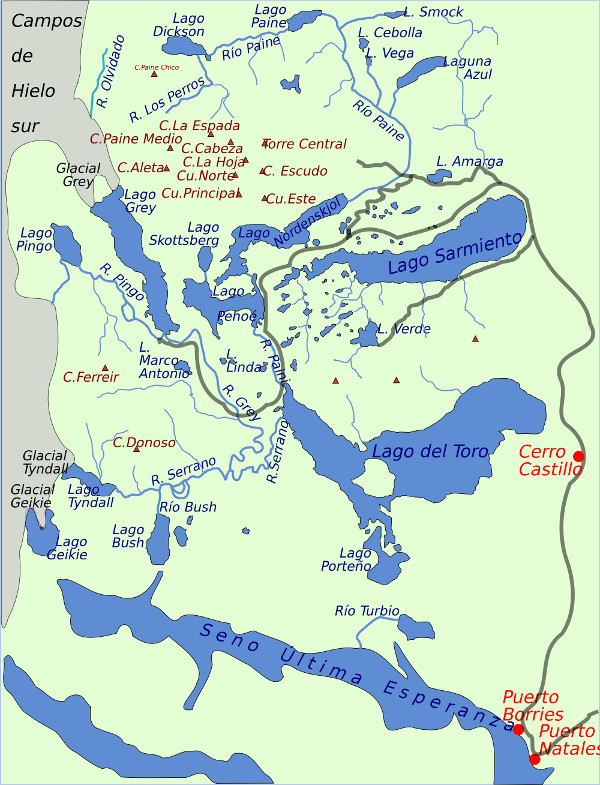
When is the best time to trek the W Hike Patagonia?
To highlight the pros and cons of each season, we have written a brief description of each below.
It’s worth also reading our articles on the best time to trek in Patagonia and, more specifically, when to hike in Torres Del Paine .
Spring - September to November
This is the perfect time of year to visit the park if you're wanting to experience warm, clear weather but without the huge crowds. Although not as warm as the summer months, the skies are often clear and you will get incredible views across the park. This is also the best season to see flowering flora in the region and witness the breeding season for wildlife.
Summer - December to March
This is the high season at Torres del Paine national park . Although the trails in Torres Del Paine are at their busiest, the weather is at its warmest. You'll get the maximum amount of clear days on your trek at this time of year. If you're the active type, then summer is also the period when you can horse ride, kayak, and mountain bike alongside your trek!
Fall - March to June
My favorite season without a doubt. The landscape becomes ablaze with color as the trails start to empty out and days become colder. The wind is often ferocious, but the spectacularly beautiful views are worth it!
Winter - June to August
Between May- September, self-guided hiking is not permitted in Torres Del Paine. Over this period, you can only hike Patagonia W Trek with a guide.
The major benefit of this season is that it is the quietest. There will be very few other visitors and you'll have many of the trails to yourself. This is the coldest period though and you will certainly experience cold nights and high, cold winds.
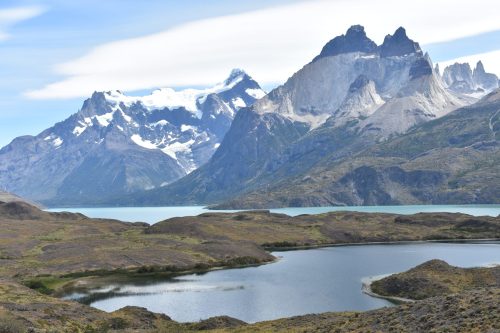
Torres Del Paine National Park
How Difficult Is Patagonia’s W Trek?
The Torres Del Paine W Trek is considered to be an easy multi-day trek as the elevation remains fairly steady throughout the hike. There is also the added benefit that the trek can be done over a longer or shorter period depending on your fitness levels.
Although regarded as easy, the trek still requires a solid level of fitness as you will be trekking a total of 100km/ 62 miles. This is 10-20km per day depending how many nights you camp out.
Hikers generally stay at the same elevation and certainly never go high enough for altitude sickness to become an issue.
The trails are well-defined and you’ll find signposts dotted along the trails at regular intervals. Water is available at all campsites, as is food. Ranger stations are dotted along the trail and you’ll most likely be among other trekkers (depending on when you trek).
Be careful though, storms are frequent in Patagonia and the wind can get extremely cold and strong. Always check weather forecasts before your day of trekking as the John Gardner Pass is often closed due to high winds.
Are Permits Required for The W Trek in Patagonia?
Yes, a permit is needed to enter the park. Permits cost $49 for more than three days. You need to book tickets online at least 24hrs before you visit.
You can print the permit or show it to officials on your phone. The park officials will need to see proof that you have booked your camping ground accommodation in advance.
Accommodation And Food On The W-Hike Patagonia
There are 11 campsites in the park which are run by three different companies. Currently, you can book campsites through Vertice Patagonia and Las Torres . Campsites cost between $10-$25 (Site only). Both companies also have the option to rent camping gear.
As well as tents, there is also options to stay in dormitories, cabins, and refugios. You can book these with the same companies mentioned above. I suggest using only one company to book your entire trek, for simplicity's sake.
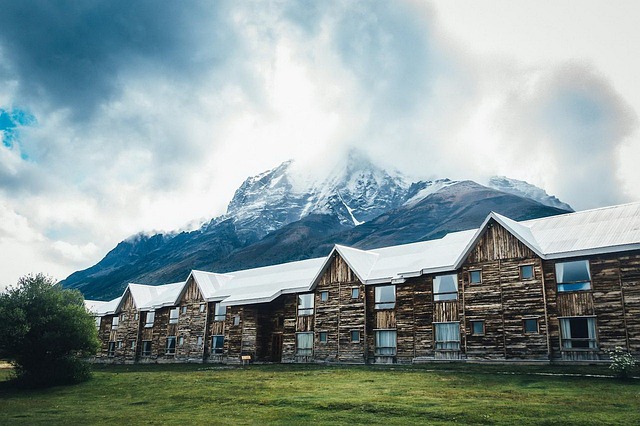
Hotel In Torres Del Paine National Park
At the camps, you will find bathrooms, shops, and even small restaurants. You may need to pre-order your meal so check beforehand.
Note: As of 2022/2023, the free CONAF campsites (El Paso and Italiano) are not available. It is unclear when and if these will re-open. It’s better to budget in paying for all your sites. If this has changed, please drop us a comment.
How Far In Advance Should You Book The W Trek, Patagonia?
Torres Del Paine treks are not something you can decide to do last minute. I’ve seen a friend break a sweat over finding campsites when she already had flights to Punta Arenas booked. This was a whole three months before her hike in November! To be safe, I’d say you should plan and book your trip at least six months in advance. Maybe even more if you plan on hiking the W Trek in the peak season (December-March)
Since 2016, the amount of people who can hike the W Trail is 80 persons per day. Visitors must reserve a place if trekking solo without an operator and you’ll need to take the trail in a counterclockwise direction.
How Do You Get To Torres Del Paine And The Start Of Patagonias W Trek?
Visitors can fly into Punta Arenas, Chile, or El Calafate, Argentina. From either of these towns. You can then take a bus to Puerto Natales.
The bus ride from Punta Arenas to Puerto Natales takes three hours and costs between $20-$30 dollars.
Buses between El Calafate and Puerto Natales are quite a bit longer (around 5 hours). Tickets cost between $30-$40.
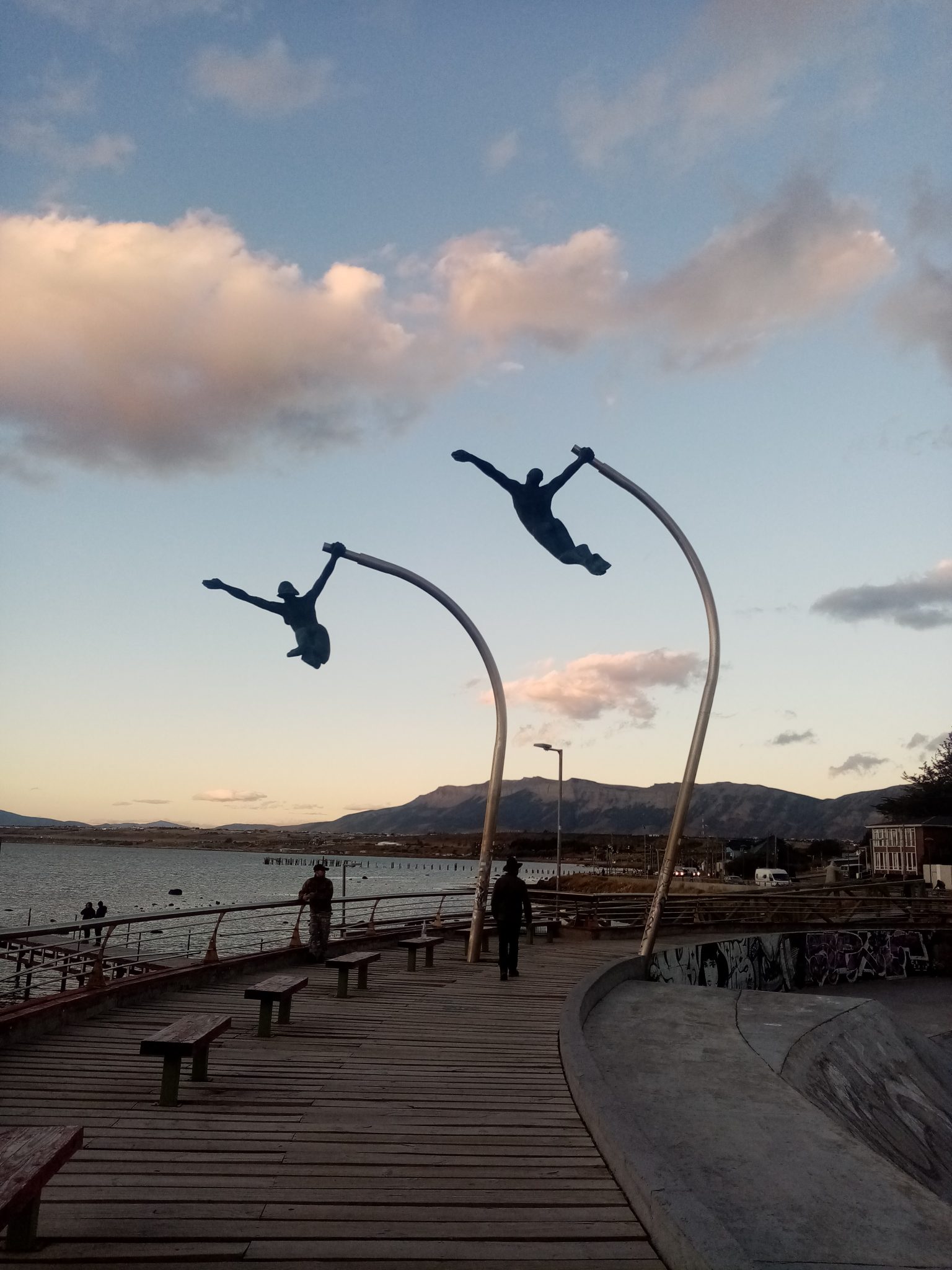
Its good to spend at least one night before the W Trek resting and exploring Puerto Natelensis
Daily buses run between the town of Puerto Natales to the entrance of Torres Del Paine. This ride will set you back $15-$15. If you have a higher budget, you could arrange a private transfer to the park and organize for the driver to pick you up after your trek.
How much does the W Trek Patagonia Cost?
The cost of a Torres Del Paine W Trek varies depending on when you book flights and when you trek (out-of-season tends to be a little cheaper). If you go with a trekking agency, local companies will be much cheaper than booking through an American or European operator. Trekking independently in Patagonia is always the most budget-friendly choice.
- Tour Agency: ~$500 for a cheap local agency to ~$2,000 for a pricey Western trekking agency
- Visa, Vaccinations, Insurance etc:~$300-$500
- Equipment (buying and hiring):~$500-$800 – camping gear can be rented at the park entrance for $200.
- Return flights to Punta Arenas: ~$1,500
- Tips: ~$10-20
- Misc (additional food, unplanned travel/hotels, etc): $50
Total costs with tour agency: $2,000 – $4,000 It is possible to plan an independent W trek for less than $300. This price includes food, park entrance, and camping (assuming you have your own equipment). Food can be purchased from refugios throughout the park, however, it is very expensive.
You may also like : Guide to Fitz Roy hikes
Hiking The W Trek Patagonia - Route Guide
The most popular trek in Patagonia , the Torres Del Paine W Trek is fast becoming one of the most well-respected short hikes in the world due to the trail's stunning scenery.
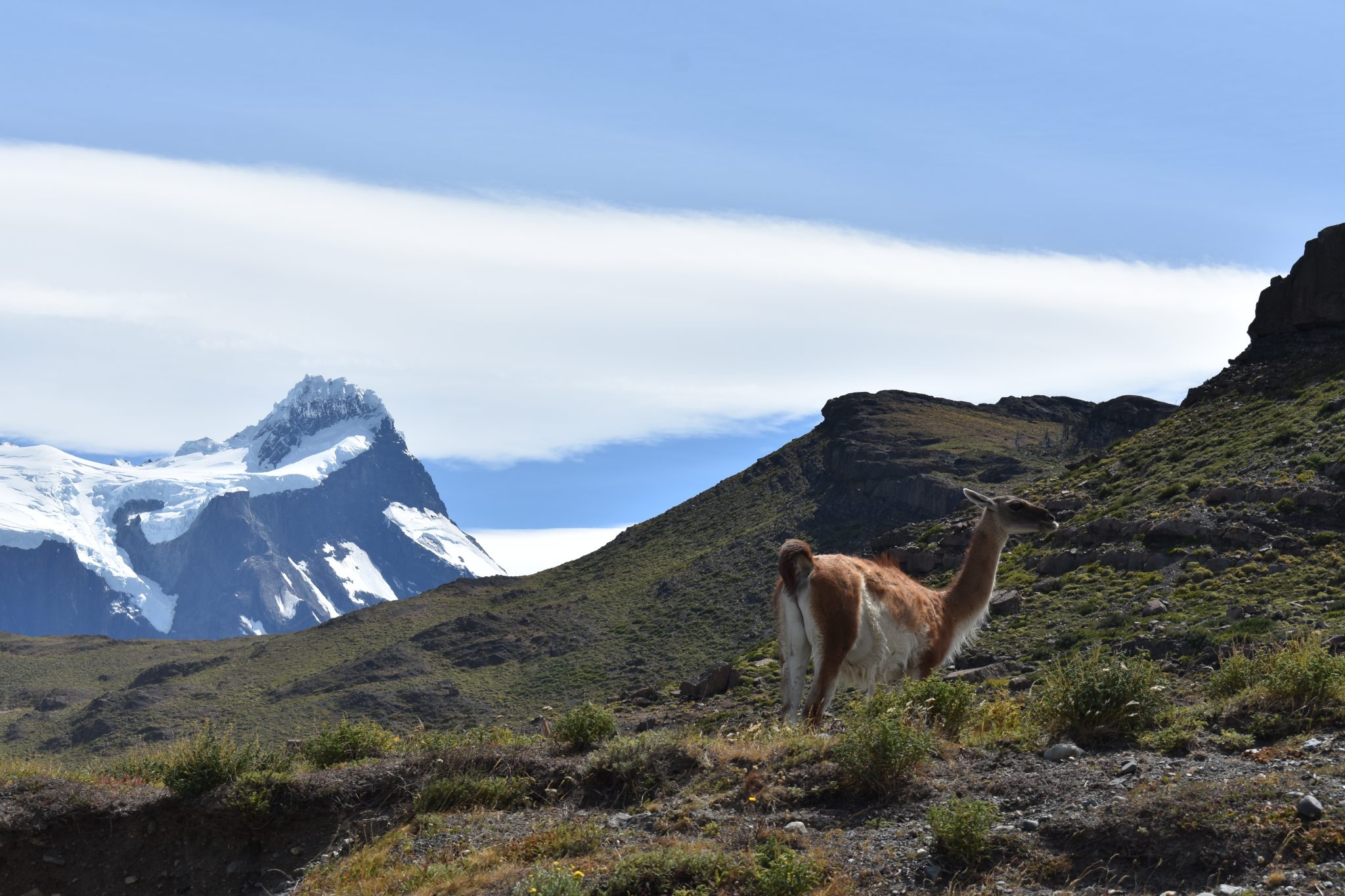
Guanaco in Torres Del Paine
Located in the amazing Torres del Paine National Park which was made a World Biosphere Reserve by UNESCO in 1978. The 100km trek generally takes around 5 days to complete. It takes visitors into the very heart of the park, through haunting forests, soaring mountains, and colossal glaciers.
Where does the W Hike Patagonia Start And End?
The trek begins with a lovely boat ride near the Grey Glacier and finishes with a magical sunrise at the famous Torres on the final morning. There is the option to do the longer full circuit O trek , however, most travelers opt for the shorter W Trek.
Patagonia W Trek - Day By Day Trail Information
Below is a standard, 5-day itinerary outline for your Torres Del Paine W Trek. This can vary depending on fitness levels, available camps, and routes. It should at least provide a good idea of what to expect. This is especially useful if you are trekking Patagonia independently .
Day 1: Puerto Natales to Refugio Grey (11km)
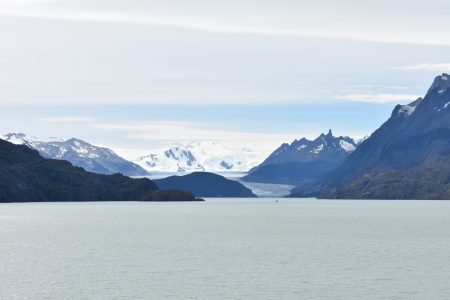
Grey Lake with Grey Glacier in the background, the start of the W Trek
Leave early from the town of Puerto Natales. Buses depart at 7:15, if you go with a tour or taxi, you will probably leave earlier.
Take your transportation Pudeto. This is the next stop after the park entrance.
If you have time, visit the local waterfall and take some pictures. You then take a lovely boat ride by catamaran to Paine Grande. After arriving you begin your trek in earnest with a 3-4 hour (uphill) hike along Lago Grey to Refugio Grey where you camp the night. If you have some energy after dinner, head down to the lake and feel the cold water!
Day 2: Grey Glacier to Paine Grande (19km)
Today you’ll be up early – around 8 am – to hike up to the former campsite of Paso. From the campsite, you take a small path to the lookout platform where you get stunning views across Grey Glacier.
After spending a little time appreciating the glacier, you have the option to continue the hike to Paso.
This is an uphill trek and will add extra mileage to your day. However, I’d recommend it as the trail is absolutely beautiful and gives incredible views all the way along the glacier.
After visiting Paso, return along the trail back down to where you camped the previous night.
After lunch, it is a 3-4 hour hike down to your next campsite at Paine Grande. If you can, find a campsite next to the hill so you’re not battered by the strong winds overnight.
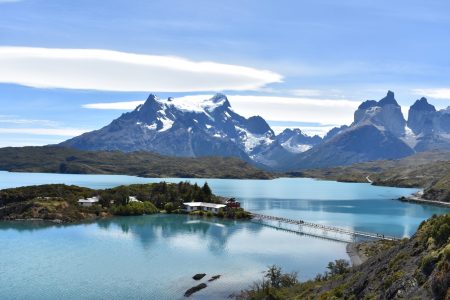
Refugio Paine Grande lies at the other side of Laguna Pehoe
Day 3: Valle del Frances to Los Cuernos (28km)
Today is a long one! Mentally prepare yourself for a full day of hiking. You begin your trek around 8am and hike for several hours until you reach camp.
At the camp, you should dump your large backpack at Campamento Italiano and head on up to Mirador Frances with your daypack. Take your lunch with you along with water and sunscreen.
The walk takes 2-3 hours and you should reach the Mirador around lunchtime.
After stopping to eat and explore the area, you’ll head back down to Campamento Italiano and retrieve your large backpack.
From there you head to your next campsite at Los Cuernos. This is roughly 2 hours walk away.
Day 4: Los Cuernos to Campamento Torres (20km)
This is the last full day of hiking on the circuit. After a leisurely breakfast, you should head off around 9 am towards Campamento Chileno.
Your trek begins on flat ground as you make your way along the Lago Nordernskjöld. After a few hours, you’ll come to a sign saying “shortcut to Chileno”.
Take the shortcut and walk for several hours until you reach the Refugio Chileno. Have lunch here before continuing on.
After lunch, you will walk uphill for an hour or so until you reach Campamento Torres. Leave your large backpacks here and head upwards for 45 minutes until you reach the Torres! Take a well-deserved break and soak in this iconic view.
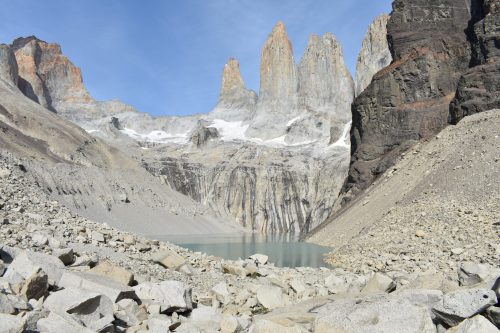
A steep climb up is rewarded with this view of the Iconic Las Torres granite spires
Back at the Refugio, make sure you hit the sack early. You’ll need to be up before sunrise the following day!
Day 5: Torres to Puerto Natales (10-15km)
Don’t sleep in on Day 5! You’ll want to rise early (around 5 am) to get the sunrise views at the mirador of the Towers. Sunrise happens around 6 am in summer and there is just a short walk to the viewing and picnic area. If you’re lucky with the weather, you’ll get an incredible view and witness one of the most beautiful sunrises on our planet! If it’s raining in camp, do not give up – the weather is frequently very different up near the viewing area and the weather can clear fast. It’s worth taking a chance. After your sunrise moment, head back down to camp and pack up all your gear. From camp, you will head down to the Hotel Las Torres. This walk takes roughly 3 hours. From the trail’s end, you can walk to the park entrance. The 7km/ 4.3 miles will take you around 1.5 - 2hrs. At this point, you will be exhausted and may prefer to take the 2 pm minibus to Laguna Amarga at the entrance. Its worth budgeting an extra $10 for this bus fee. The return bus to Puerto Natales leaves at 2:30 pm from the park entrance. Double-check bus times before you set off.
W Trek Patagonia Map
The best map I've found for the Torres Del Paine W Trek is the Torres del Paine Waterproof Trekking Map by Sergio Zagier. The map provides compressive satellite relief, contour lines, shelters, timed trails, camping, and inns.
Other W Trek FAQs
Is altitude sickness a risk on the w trek.
There is essentially zero risk of altitude sickness on the Torres Del Paine Full W Trek. The highest point reached is under 700 meters which is far too low to bring on altitude sickness. See our guide on altitude sickness .
What W Trek guidebook do you recommend?
The one guidebook that stands above all others is Trekking Torres del Paine: Chile’s Premier National Park and Argentina’s Los Glaciares National Park by Rudolf Abraham. The guidebook covers eight major trails within the park including the Full Circuit and the ‘W’ Trek. Maps, tips, and detailed information is provided for each trek and the book is a must for trekkers hiking solo.
What gear do you need for the W hike?
Trekking the W requires a certain amount of essential pieces of trekking clothing and equipment.
Many pieces of equipment including tents, sleeping bags, and mats, can be rented at the campsites. However, rental prices are high. We recommend bringing the most important pieces of gear with you.
To help you plan and prepare for your trek we have written a detailed hiking gear list .
About the author
Alison Macallister
With a degree in Nature Conservation and experience working with wildlife including the Big 5, Alison used to work as a guide for a 5-star safari reserve in South Africa. Today she is a full time traveller and editor for Mountain IQ. She has travelled and hiked extensively in South America, including many solo hikes in Patagonia, the Cusco region of Peru, Ecuador and Chile.
Leave a Reply
Your email address will not be published. Required fields are marked
We work with local guides to offer great value adventures at unbeatable prices

The Definitive Guide for the Torres del Paine W Trek, Patagonia
This post contains product affiliate links. These are mainly on items/hotels/tours that I personally endorse & love. I may earn a small commission if you make a purchase, but at no extra cost to you.
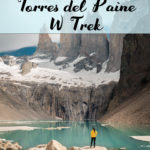
Are you looking at doing the epic Torres del Paine W Trek? From whether to go on a tour to which route to take, this is my guide to the W Trek in Patagonia!
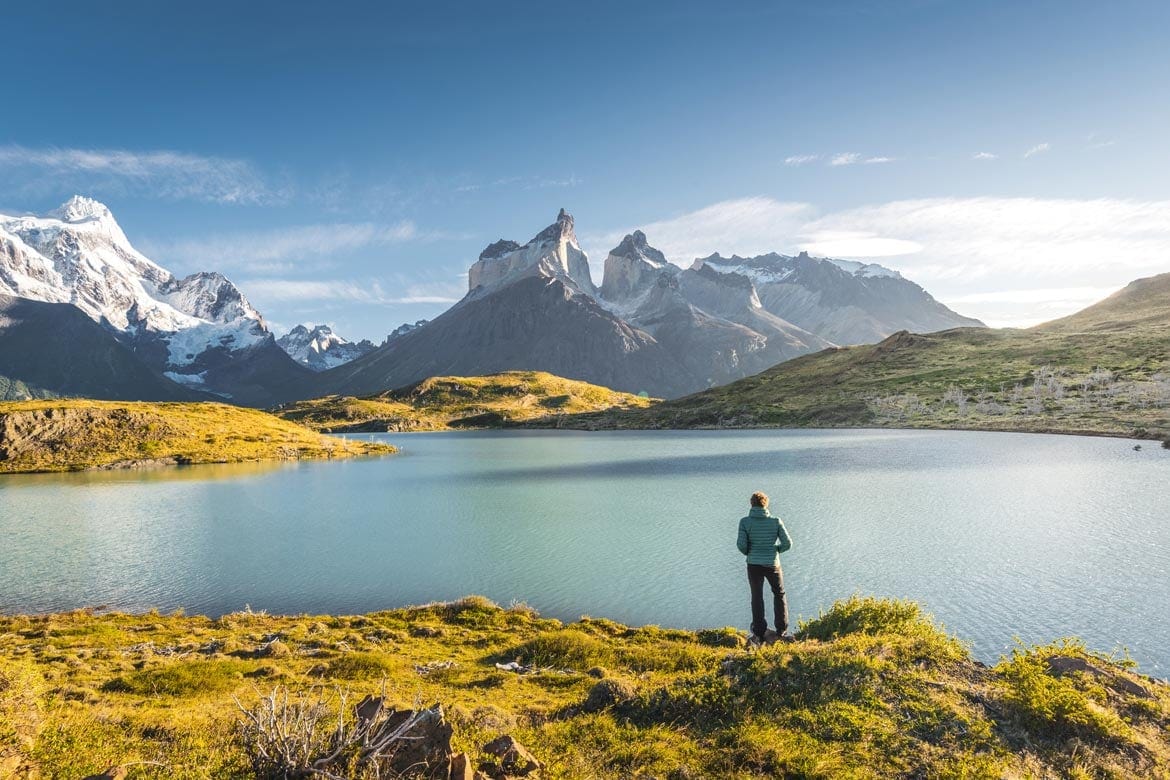
Patagonia. A place that many people dream of going. If hiking and exploring new parts of the world is something that you enjoy, it’s a good bet Patagonia is already near the top of your list of places to visit.
With its incredible vast mountain ranges, stunning blue glaciers and beautiful forests, what’s not to love? That’s what makes the Torrest del Paine W Trek arguably the best trek in the world. In this post I’ll tell you why!
Patagonia is massive, so visiting with a tour or guide is recommended to get the most out of your trip. It spans 1 million square miles across both Argentina and Chile . Surprisingly (or not considering its rugged landscape), Patagonia is home to less than 2 million people. That means you’ve got a lot of space all to yourself.
So, if you’re thinking of taking on the Torres del Paine trek then this is the post for you. In this post I go into hiking on a tour vs self-guided, which route to take, and loads of other practical information too. It’s time for your adventure to begin here!
Are you planning on hiking more of Chile? Then check out my guides to hiking Volcano Villarrica , Parque Nacional la Campana and the Atacama Desert too.
Chilean Patagonia
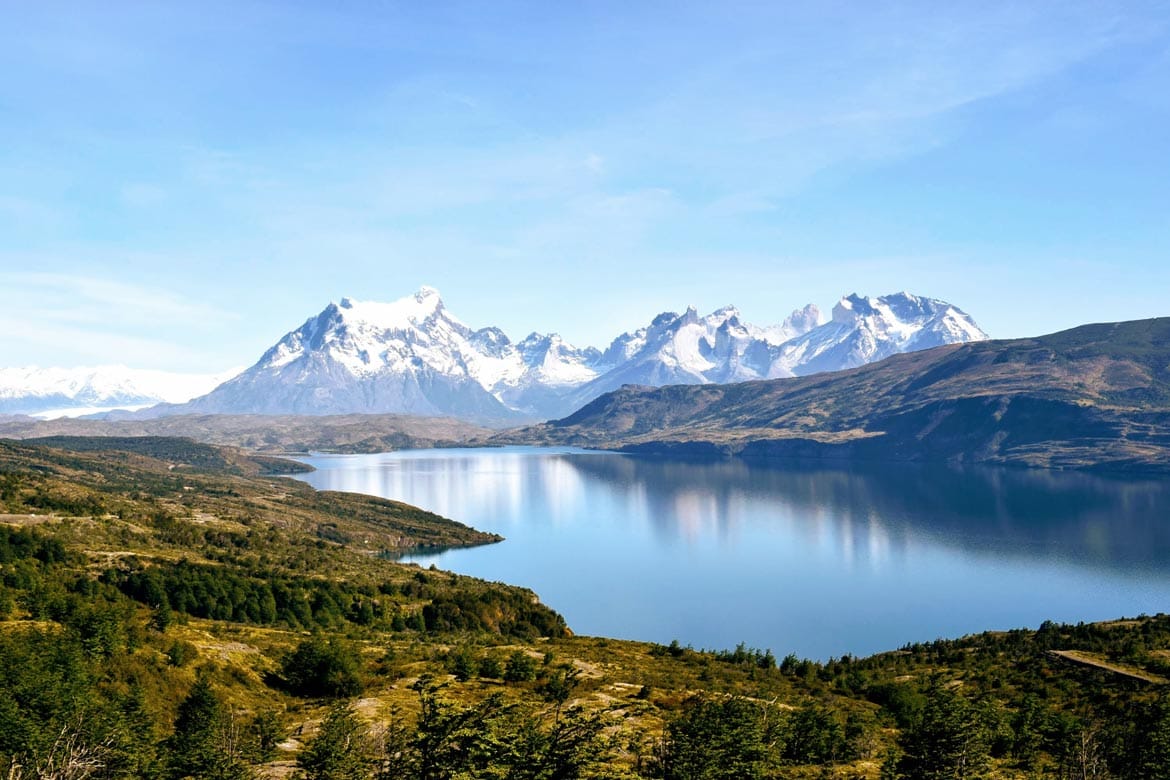
Visiting the Chilean side of Patagonia is a great option for a few reasons. First, it is more isolated than Argentina, so you can expect to see fewer visitors. Second, the Torres del Paine National Park is one of the most iconic parts throughout all of Patagonia. Lastly, the wildlife within Torres del Paine is very diverse and you’ll be able to see a wide range of animals along with your hike.
A little information about the Torres del Paine National Park: It is one of Chile’s largest parks, measuring at 598,593 acres of wilderness. Its grasslands provide safety and shelter for a variety of animals including, pumas, guanacos, condors, Huemul deer, foxes, and even swans. If you’re interested in wildlife then check out this guide on the animals of Patagonia . Seeing all these animals is one of the best things about visiting Patagonia, and you really do see them all!
Many of these animals can be spotted while on daily walking tours and multi-day hikes. Some animals, like the puma and Huemul deer, require a multi-day wildlife tour with a devoted guide to help you spot them. But keep an eye out, you might be able to spot some of these while visiting the park.
Hikes in Torres del Paine National Park
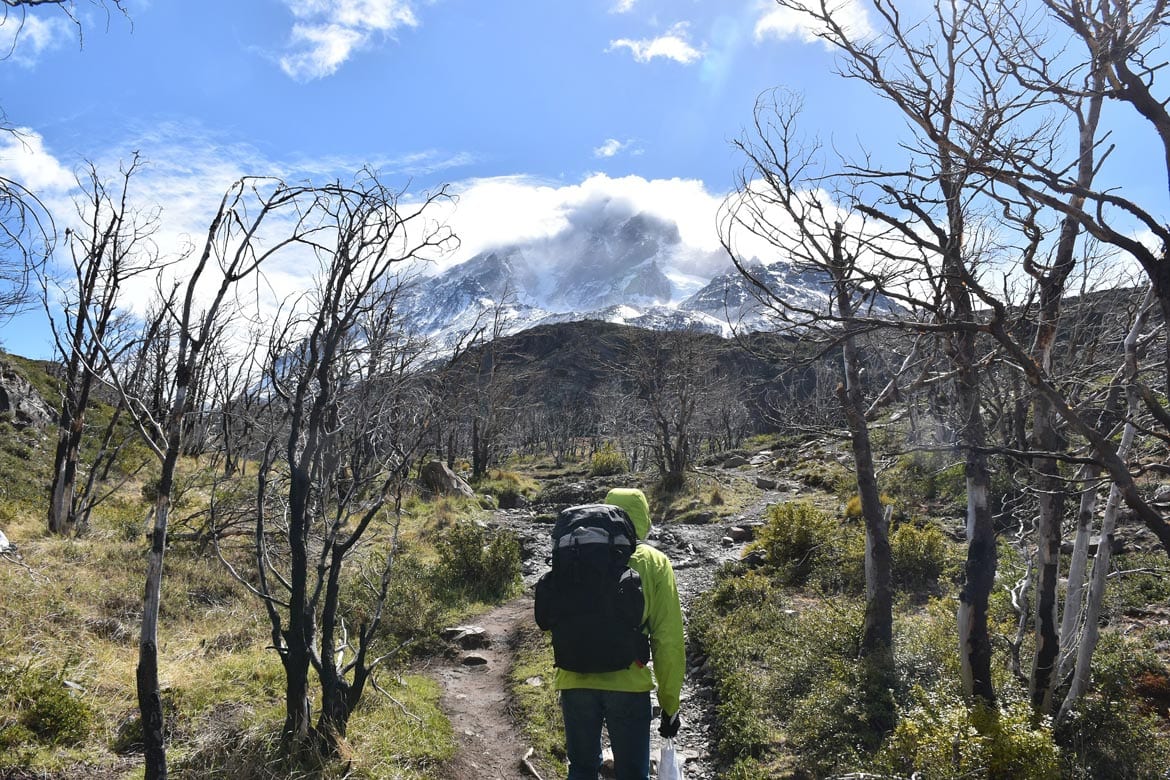
Throughout Torres del Paine National Park, there are numerous multi-day and day hikes for every hiker’s interests. One of the most famous multi-day hikes within the park is the W Trek in Patagonia.
It was given its name because the trail resembles a capital “W”. This 50 miles (80 km) trail will allow you to see incredible rock formations everywhere you turn, beautiful alpine lakes, and of course, the gorgeous 3 Towers. The Torres del Paine W Trek allows you to see all of this in a relatively short amount of time.
In addition to the beautiful landscapes, you will (hopefully) be able to see a variety of wildlife throughout the park. Sound interesting? Continue reading to see how you too can complete this incredible hike.
Alternatively, if you’re looking for a much shorter trip, you can also go on some day hikes in Torres del Paine . Check out this blog post to see where some of the best day hikes are.
Tour vs self-guided for the W Trek?
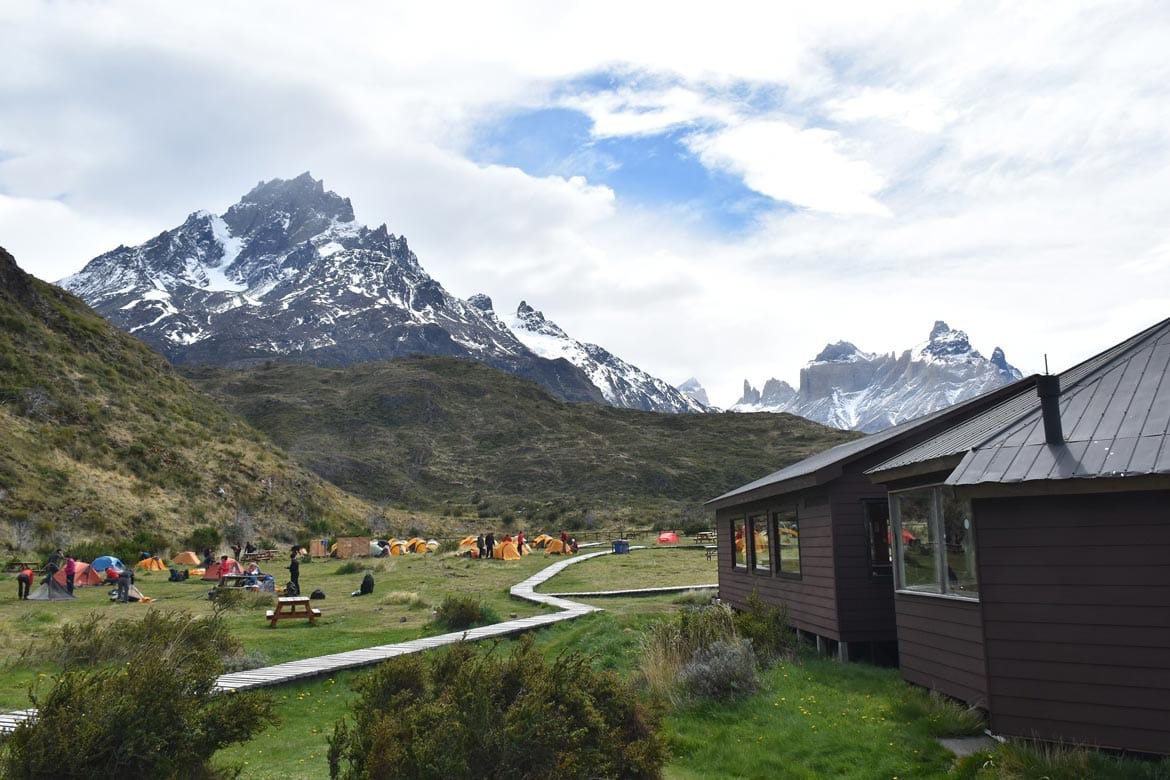
Unlike other famous hikes like the Inca Trail to Machu Picchu where you cannot hike without a guide, you don’t have to have a guide for the W Trek in Patagonia. Many experienced hikers decide to hike solo, which you absolutely can! However, for someone who isn’t as experienced with multi-day hikes, or Patagonia in general, it would be a good idea to reserve a tour for the W Trek. Plus, tours these days are pretty great!
Some of the advantages of having a tour guide are that they take care of everything for you. You won’t have to try and compete against other hikers for campsites and lodging along the way.
Instead of carrying around extra weight, like your sleeping bag, tent, food, and water, many Patagonia tour companies have the option to hire porters or offer them to carry your things for you. This is a great option for individuals who might not want to carry a 20 to 30-pound pack for multiple days.
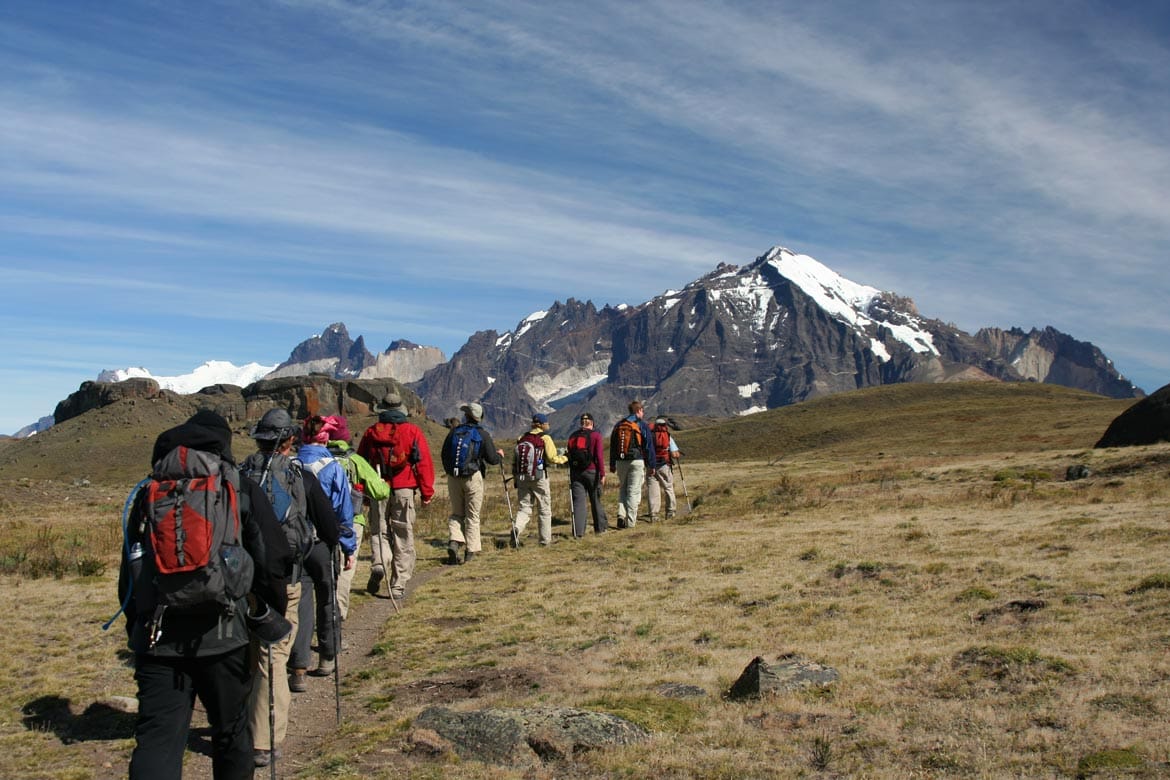
Another great thing about tours is that you can meet new people! Depending on your tour size, you will most likely be meeting and hiking with new people from around the world. This is a great time to start some new friendships, and how cool is it that you’ll be able to say that you made a friend while in Patagonia?
Overall, tours are a great option when deciding to hike the Torres del Paine W Trek. You’ll be able to have your accommodations taken care of, and all you’ll have to do is hike!
If you’re looking for your own separate accommodation on a self-guided tour then check out these stunning places to stay in Torres del Paine National Park .
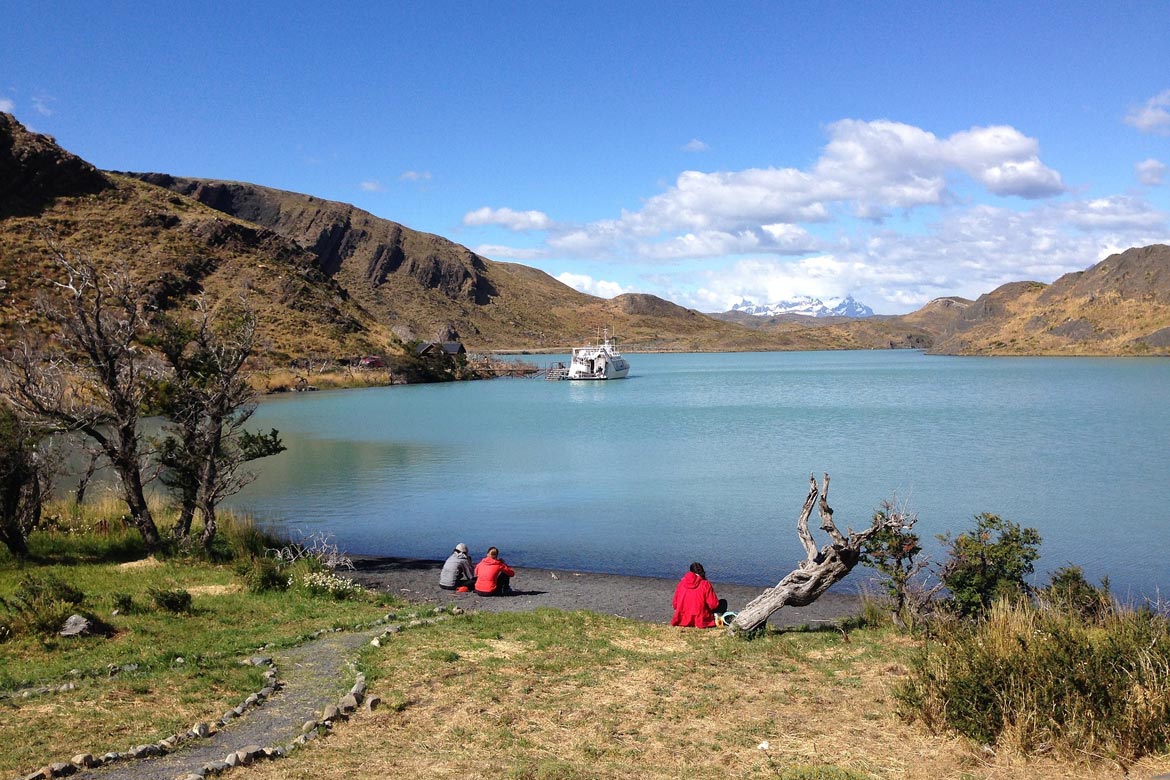
Unsure which W Trek tour is the right fit for you? Here are some of our favorite:
Torres del Paine W Trek – Self Guided – World Expeditions
This 8-day self-guided tour will let you experience the Torres del Paine Trek, and provide you a day to rest the day before and after hiking. Accommodations will range between Refugios and campsites depending on the night. This tour does not provide porters, you will need to carry your own pack the entire hike.
Trekking Torres Del Paine “W” Circuit – 5 days – Say Hueque
This shorter 5-day guide is great for someone who would like more time to explore other parts of Patagonia. You’ll still be able to hike all of the W Trek and see the iconic Three Towers. All accommodations are made at Refugios so you can relax after a day of trekking. Note that this tour does not include the National Park Entrance fee. Prices to enter range depending on the season. Make sure you check the current price before going as well as withdraw money. The park doesn’t have any ATM’s within it (obviously), so it is crucial that you have money before going.
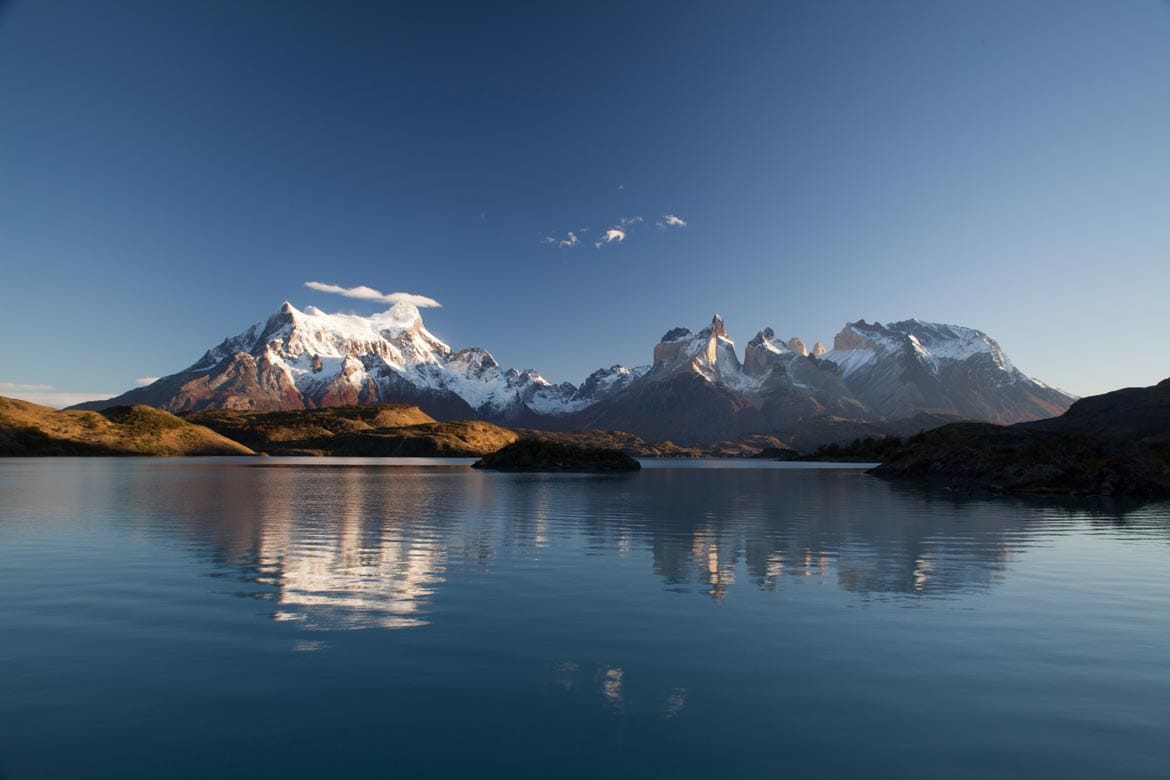
Torres del Paine W Trek – G Adventures
This quick 6-day guide will let you experience the Torres del Paine trek as well as give you the opportunity to visit other parts of Patagonia if you wish. You’ll spend 4 days hiking the W Trek, with a day to rest before and after. You will have a mix between Reguigos and campsites along your way.
Patagonia Trekking – Intrepid Travel
This 10-day tour is great for those who want to visit both the Argentina and Chile side of Patagonia. You’ll be hiking the famous W Trek on days 3 through 6 of the tour. After completing the W Trek, you’ll have the chance to visit El Calafate and Perito Moreno Glacier on days 7 and 8. To finish off your great 10-day tour, you’ll fly to Buenos Aires and explore sites like Plaza de Mayo, San Telmo neighborhood, and the Recoleta cemetery.
Getting to Patagonia?
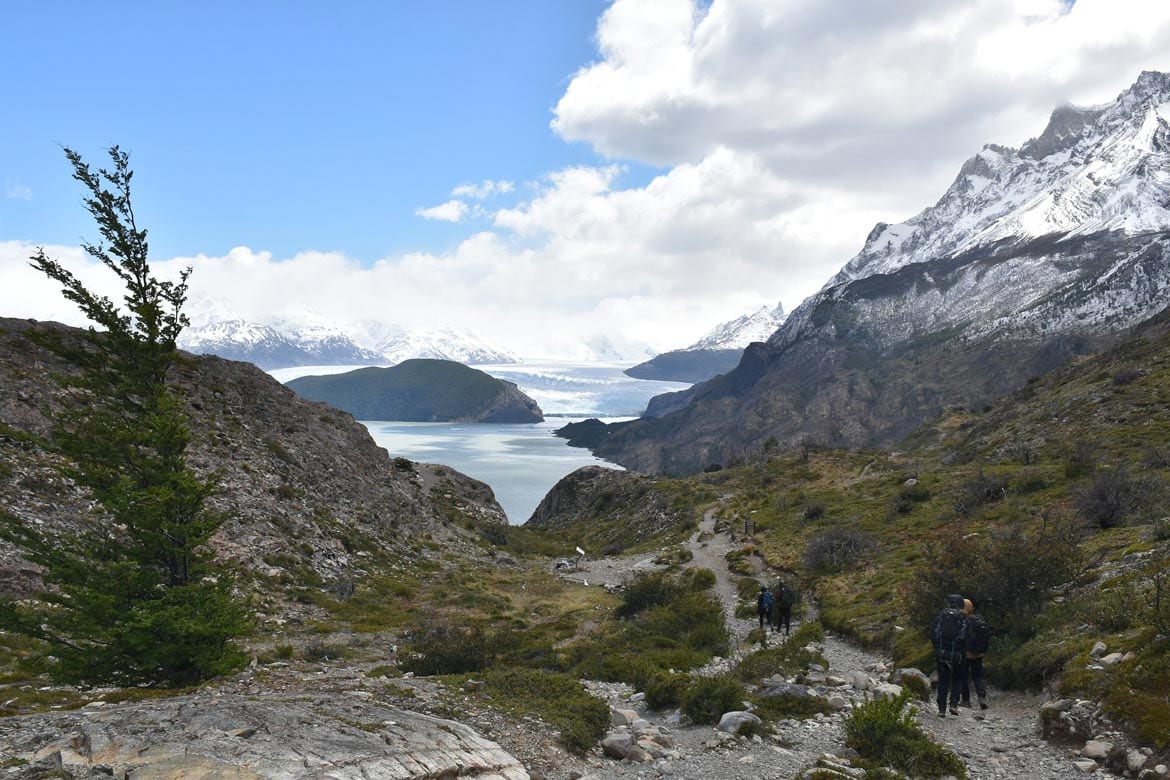
Getting to Patagonia can take a long time for a majority of travelers. Depending on where you are traveling from, you will most likely need to stop two to three times on the way there and back.
No matter where you are coming from, you will most likely be stopping in Santiago . If time and money permits, it would be a good idea to spend a day or two in the city either before or after your hike. Santiago has plenty of great things to see, including, La Moneda Palace, visit the Museo Chileno de Arte Precolombino to see ancient art, and the Plaza de Armas. There are also multiple day trips from Santiago, including Valparaiso and Cajon del Maipo.
Depending on your tour company, you will need to take an additional flight from Santiago to either Punta Arenas airport or the airport in Puerto Natales. Your tour operator will inform you about which airport they will be picking you up from and transporting you to the start of the hike.
What to expect on the Torres del Paine W Trek
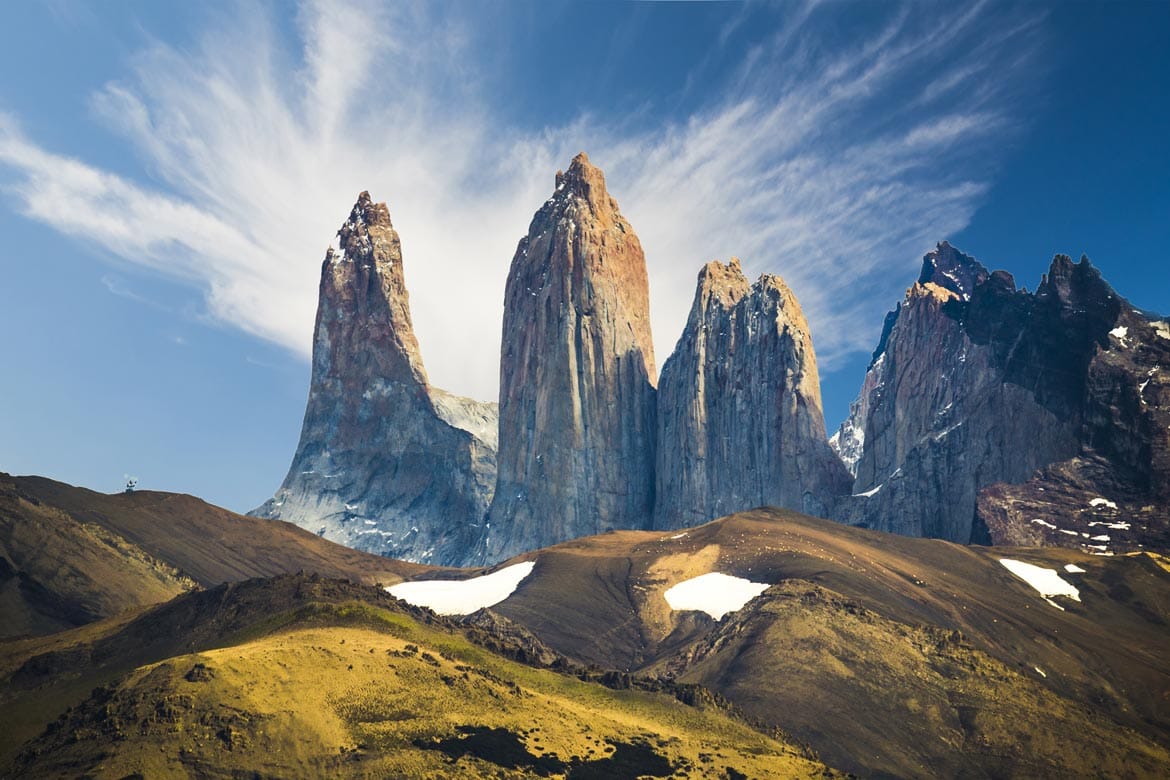
Depending on the tour that you choose will determine how many days you will be spending on the W Trek. For those who would like to take things a little slower, completing the hike in five to six days is a good option. You’ll be hiking fewer miles each day over the period of multiple days.
If you would like to complete the hike in a quick four days, you can expect to be hiking 12+ miles a day. No matter how many days you decide to hike the W Trek, you can still expect to see a wide range of wildlife, incredible glaciers, rock formations, and the 3 Towers.
The 3 Towers
The 3 Towers is a purely incredible rock formation that you will be reaching at the end of your hike on the W Trek Patagonia. Make sure you save enough battery on your camera so you can capture all the great shots when you get here. You’ll definitely want to brag about this one for years to come – it’s just one of those places!
Different routes/extensions to the W Trek
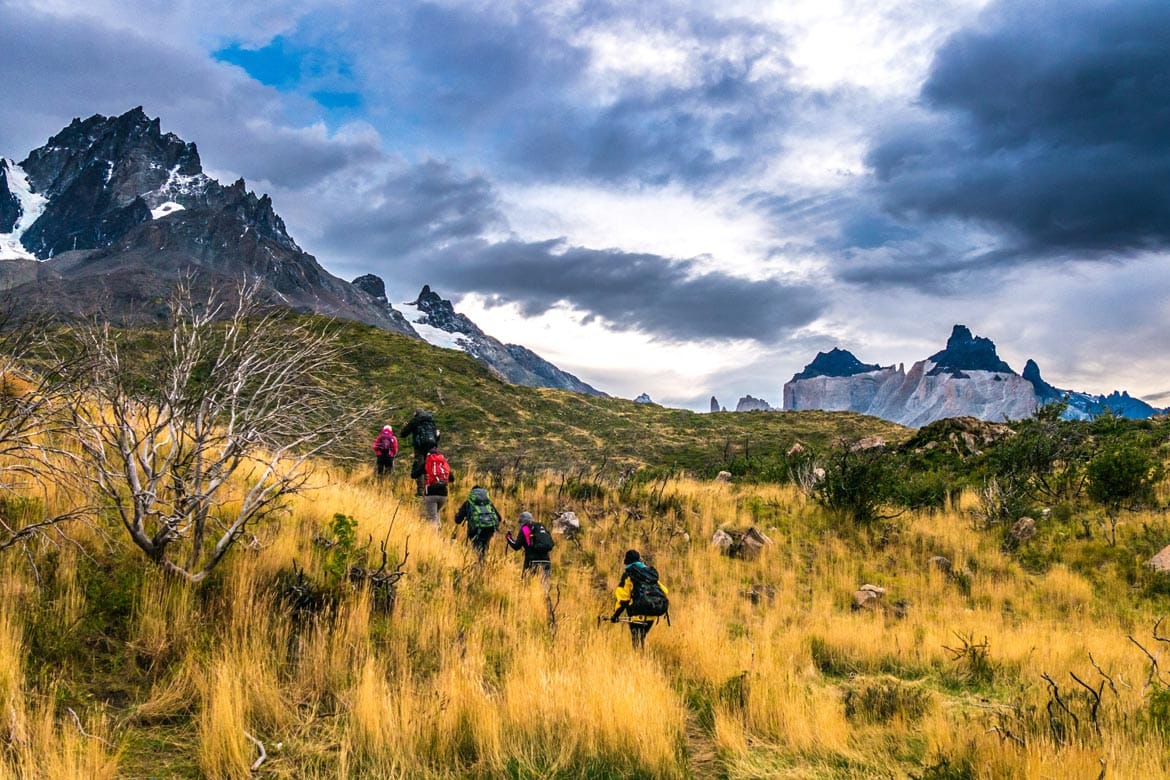
Do you want to extend your Torres del Paine Trek? Many devoted hikers chose to extend their hike to the O route. The O route is a very rigorous and strenuous hike, extending to 70 miles (112 km). This route generally takes around 8 days to complete. For a majority of hikers coming to Torres del Paine, they chose to only complete the W Trek. While the O Trek is part of the W Trek, you can expect fewer amounts of people to be on the O route of the trail.
Feeling extra ambitious? Take on the 9-day Q route! The Q route encompasses the W and O route while adding on an additional day in the beginning. While the W and O route reaches the iconic 3 Towers at the end of their hikes, you can expect to see this a few days into the Q trek. The Q trek finishes with astonishing views of Glacier Gray. A small number of hikers chose to add this additional part of the trek to their itineraries, so you can expect solitude while you hike.
Don’t fret if the Q trail seems too daunting and overwhelming. The Torres del Paine W Trek is still absolutely worth completing!
Things to know before you go:
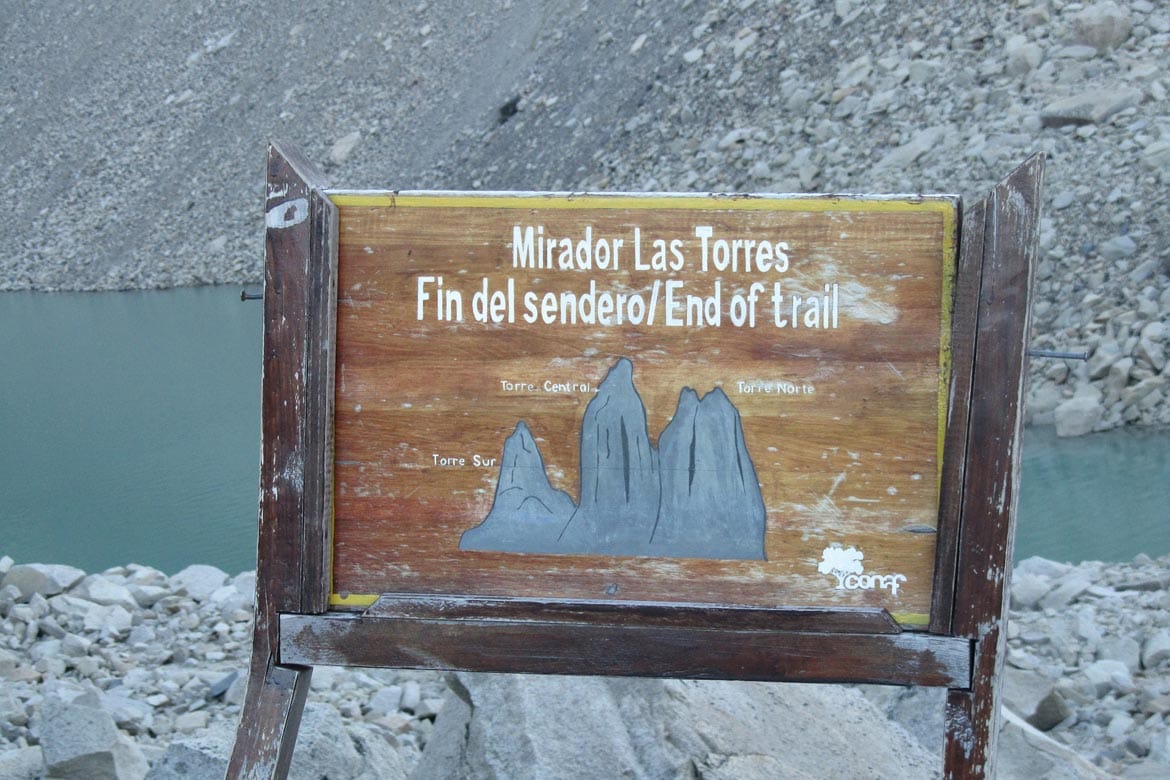
- When you arrive in Chile, you will be issued a PDI (tourism card). Do not throw it away! You will need the card to leave the country at the end of your hike, as well as you’ll need to show it at different campgrounds and lodges.
- You’ll want to reserve your tour well in advance, ideally, five to six months before you go. Although the park receives fewer visitors than other parks and places within Patagonia, it is growing in popularity. As a result, it is crucial that you reserve your tour in advance because spots fill up. The W trek doesn’t currently have a limitation on how many people can hike on the trail daily. However, if you are wanting to extend your hike to the O trek, they only allow 80 people a day on the trail so it is wise to plan for this.
- When is the best time to visit? There isn’t one exact month to visit that is better than others. Every season in Patagonia has its own advantages and disadvantages, and it’s up to each individual to decide their preferences Summertime months in the southern hemisphere are November to March. Temperatures are usually in the high 60’s (17-20 degrees Celsius) with the low in the 40s (6-8 Celsius). With warmer temperatures, you can expect a larger amount of people, and higher prices from November to March. Although there are generally more crowds during this time; if you enjoy engaging and meeting new people while hiking, this would be an optimal timeframe for your visit.Fall consists of the months March, April, May, and early June. The park remains full of crowds in March but dwindles out with the following months. You can expect the park to have an autumn feel to it with young wildlife exploring, and trees beginning to change colors. The high stays around the 40s to 50s (5-13 degrees Celsius), while the low drops significantly to the 20s (-3 to 3 degrees Celsius). For those who don’t mind the cold, this would be a great time to visit! Be aware that there is a high chance of snow in the later months. Winter make up the months from June to August. This is the most challenging time to visit the park, however, some tour companies like Cascada Expediciones provides a winter special to Torres del Paines National Park. You can expect the high to be in the low 40s (5-8 degrees Celsius) with the low in the 20s (-3 – 0 degrees Celsius). The weather during the winter months can be unpredictable with snowstorms and high winds. If you are planning on visiting Patagonia during this time, it is wise to do your research and come prepared.Spring goes from September through November and you can expect some colder weather during these months. The days still remain relatively warm, with temperatures in the high 50s (13-15 degrees Celsius) while the low drops down to 30s (3-7 degrees Celsius). If you don’t mind a little bit of chill in the air, this would be an excellent time to visit. As temperatures drop, so do prices. This makes the Torres del Paine an ideal time to visit for those on a budget, as well as people wanting to explore the park with fewer crowds.
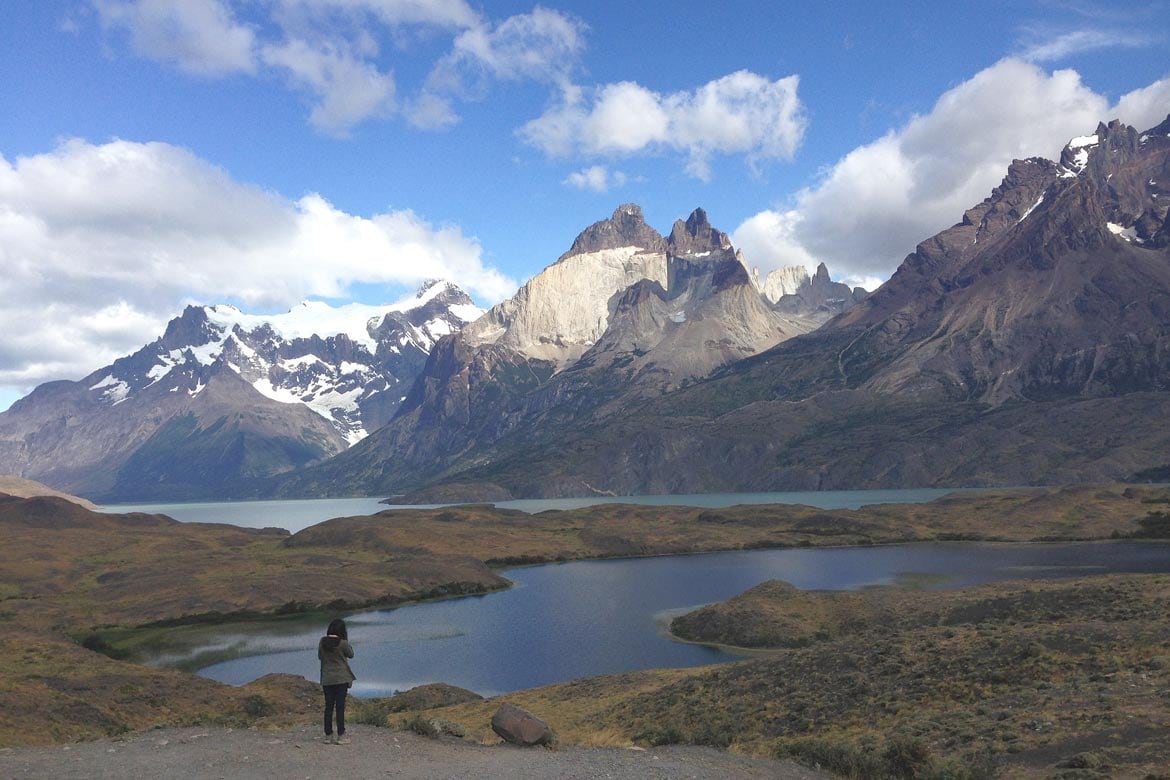
- Hiking the W trek? Or adding on the O or Q trail? You’ll want to get into shape! The W trek alone is 50miles (80 km) round trip. If you are planning on hiking the O or the Q trail, you’ll want to do some additional training. The best training for any of the Patagonia trails will be to go on multiple long hikes beforehand. In addition, using a treadmill or running outside, and stair climber machines are helpful.
- Mental stamina is also very important. You’ll be hiking 7+ miles a day for multiple days, and you’ll need to keep a good frame of mind to continue going.
- Buy good hiking boots! These are the ones I’ve got and always recommend to people. For any long hikes that you will be going on (not just in Patagonia) it is best to invest in some good hiking boots. They should be comfortable and have great ankle support, as well as a good gripping sole for those loose rocks and dirt. Make sure you break in your boots long before the W Trek.
- To help with your legs being sore after a day of hiking, bring a muscle/massage ball to rub out your calves and feet. I promise you’ll want one!
- Bring layers! The temperature can change frequently throughout the day, and you’ll want to be able to stay warm or cool while hiking. Layers are especially important for the night for all of the seasons.
- Hiking poles can be optional depending on the hiker preference. However, many hikers find them to be useful for providing stability while going up and downhill.
- Pack some of your favorite hiking snacks. Some of the best snacks to bring while hiking is jerky, trail mix, energy bars, and dried fruit. If you chose not to pack your snacks all the way to Chile, there is a large UniMark grocery store in town, as well as other small shops that you can pick up some snacks at.
Putting it all together: Planning your Torres del Paine W Trek
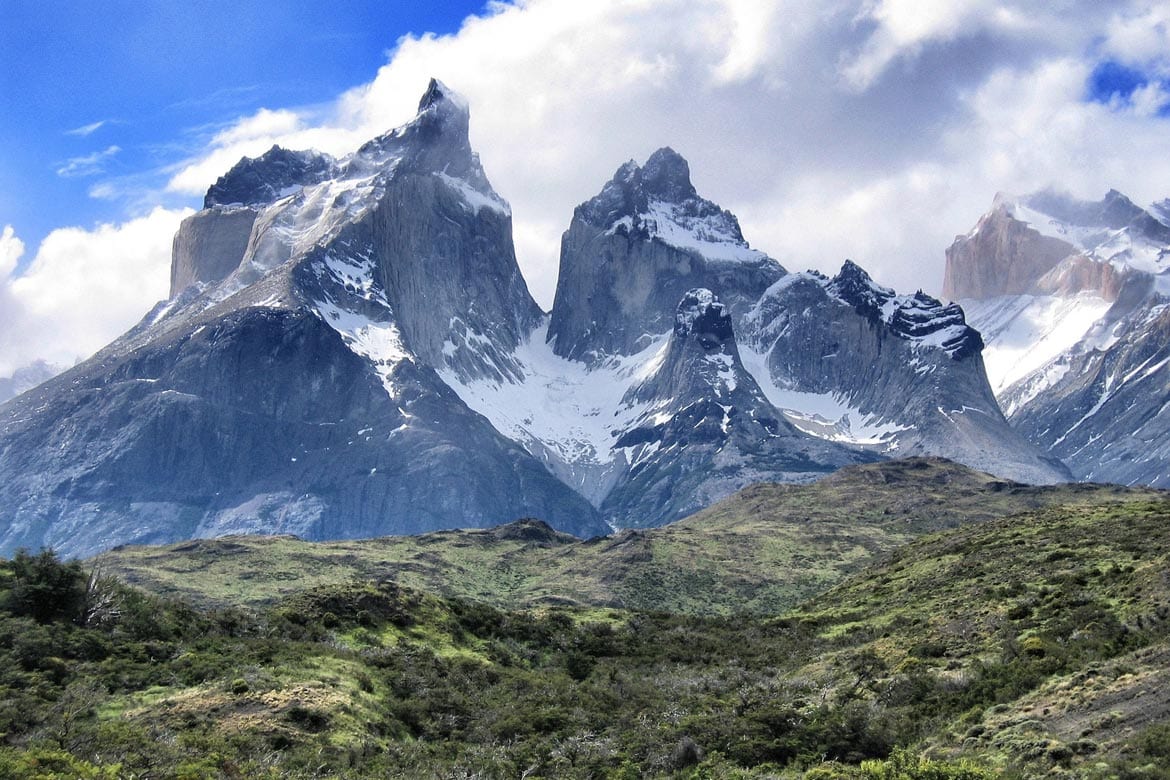
- Things you should do before going: Find your tour that best fits your style and interests and reserve it at least 5 to 6 months in advance. You’ll have more options and say in when you would prefer to go, and what type of tour you would most enjoy. Another great thing about booking in advance means that you won’t have to worry about it in the coming months.
- Break-in your hiking boots: You don’t want to show up to do the W Trek with brand new boots. Make sure that they are comfortable and fit well before beginning your hike.
- Make sure you don’t lose your PDI tourism card. You will need it to enter different lodging options along the way as well as to leave the country.
- Enjoy your hike!
Not sure if the W Trek is for you? There’s plenty more to do in Patagonia – which covers parts of Argentina and Chile. Read on for some more Patagonia activities to enjoy:
Should you visit the Argentine or the Chilean side of Patagonia? Or both?
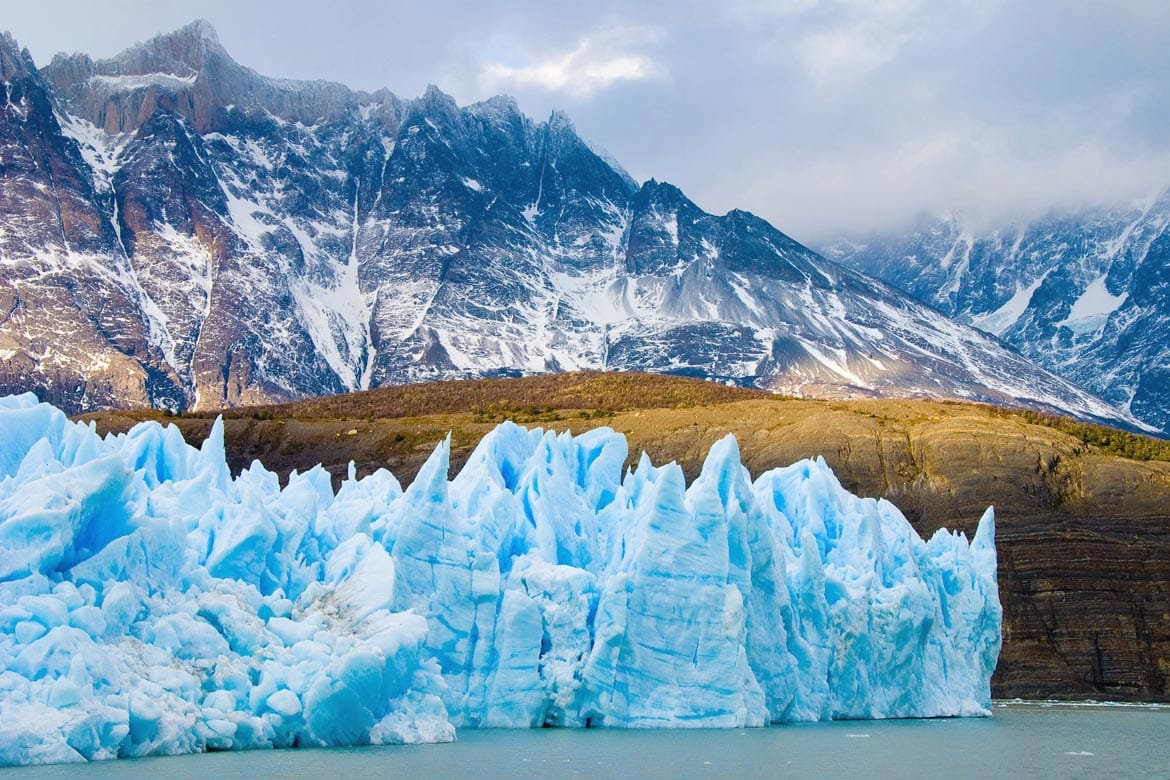
A common question that travelers who dream of going to Patagonia have is: which region is better to visit?
Unfortunately, most travelers don’t have millions of dollars in the bank, and months of time to explore all of Patagonia, so decisions have to be made on which region they would like to visit more.
Both Argentinian and Chilean Patagonia have their advantages and disadvantages. Deciding which region to explore will depend on a few factors – namely your interests, budget, and time.
Argentinian Patagonia
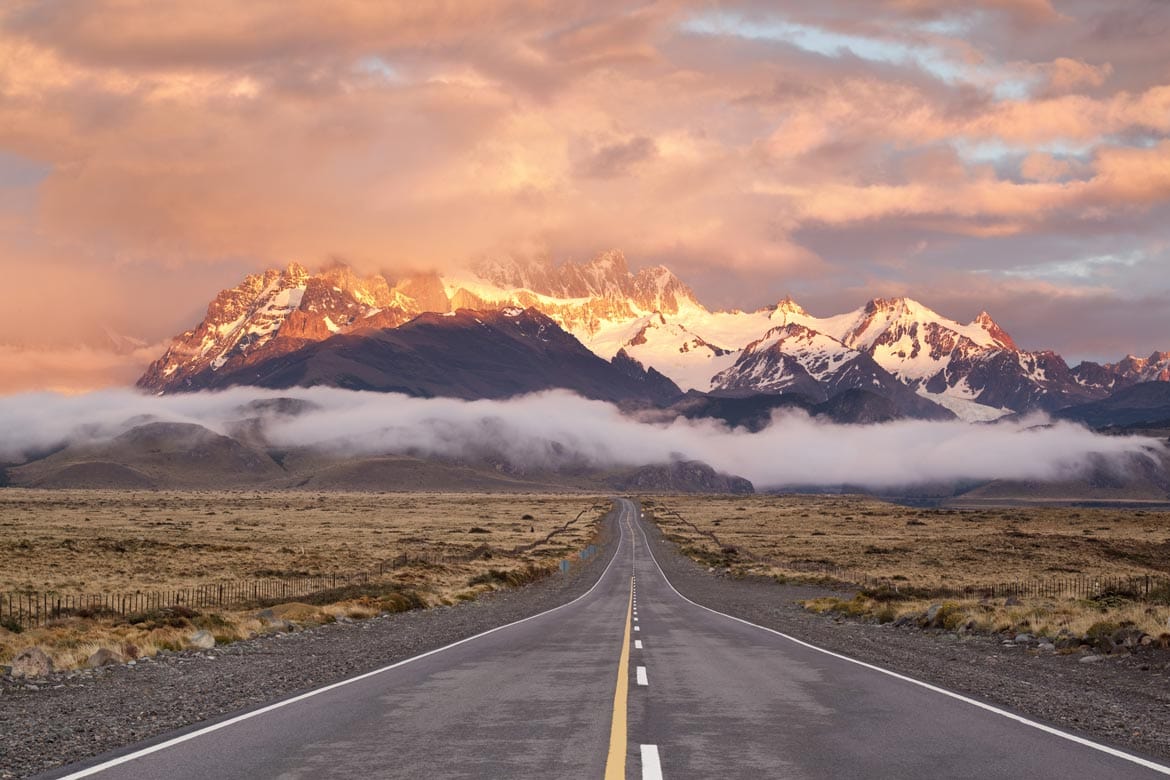
Comparing the two regions in size, it’s fair to say that Argentina easily comes out on top. Patagonia encompasses most of the southern part of the country. On the flip side, because there’s more space, it means there are a greater number of destinations within the Argentina side to explore. A few popular ones include Perito Moreno Glacier, Ushuaia, and Mount Fitz Roy.
One disadvantage of visiting the Argentina side is that flights tend to be more expensive. This can be expected given its growing popularity among travelers, as well as its size and a large number of sights to see. Trying to visit this side of Patagonia may prove to be more difficult for travelers on a budget.
Overall, Argentina still receives a higher number of visitors per year compared to its counterpart. If you decide to visit the Argentina side, you can expect to see a higher concentration of visitors throughout the year, as well as more expensive flights.
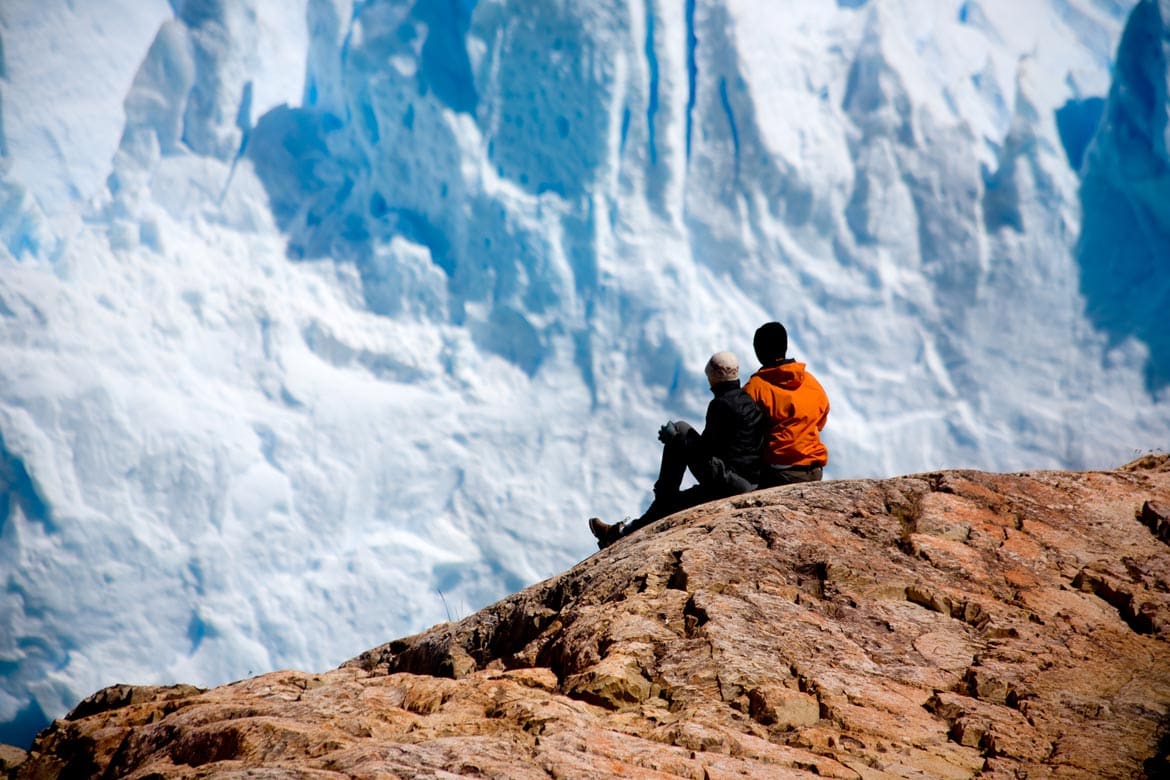
However, if the Argentina side doesn’t sound as appealing, the Chilean side is left virtually untouched. The perfect option for travelers who prefer quieter and less populated destinations, compared to overly crowded touristy places.
A large part of the Chilean side of Patagonia is isolated – to see the majority will be challenging for most travelers, requiring intense long periods of hiking like the W Trek.
But if that’s not for you, there are parts of the region that are more easily accessible to travelers. Many travelers choose to spend their time either in Carretera Austral or easier day hikes and wildlife tours in Torres del Paine National Park.
Even though the Chilean side receives fewer travelers, the Torres del Paine National Park still welcomes 150,000 travelers a year, with estimates expected to increase to 300,000 visitors by 2025.
If you are having a difficult time deciding between regions, and want to visit both, don’t fear! Many Patagonia tour companies will have extended tours for you to visit both the Argentinian and Chilean parts of Patagonia.
Are you planning on doing the Torres del Paine W Trek? Are you doing it alone or part of a tour? Let me know in the comments below!
Like this blog post? Then make sure you Pin it for the future!
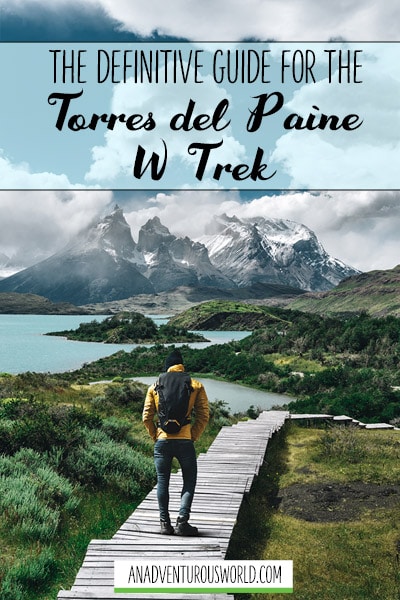
About the Author
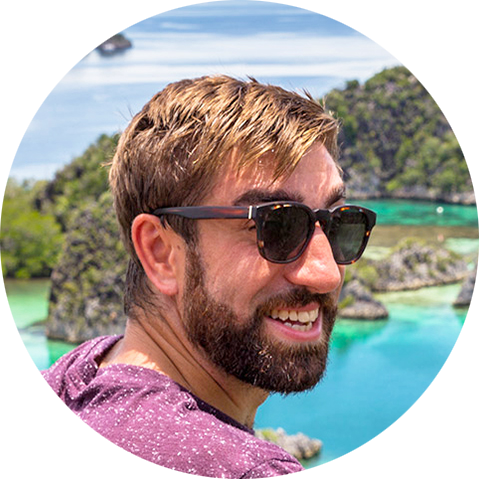
Macca Sherifi is the founder of the multiple award-winning blogs An Adventurous World and the Great British Bucket List. Every month he inspires over 200,000 avid readers to travel the world.
View all posts
4 thoughts on “The Definitive Guide for the Torres del Paine W Trek, Patagonia”
Jealous and inspired! *Moves to top of bucket list*
I visited both Chilean and Argetinian Patagonia earlier this year! I did the W trek solo and I loved it, but on the next trip (December 2020), I was thinking about trying to see some of the park by car. Do you have any tips or advice for this? Also, how do you get to the wooden walkway where you’re wearing that yellow jacket? Isn’t it part of one of the hotels? I can’t remember the name of it though… how did you get there? Did you actually stay at that hotel or just go for the viewpoint?
Thanks for a great post. Torres del Paine is definitely a dream trip of mine, hope to be able to go there some day 🙂
No worries at all Hans! Hopefully this post will help you for the future and I really hope you can make it to Torres del Paine National Park one day!
Leave a comment Cancel reply

The ultimate guide to the Torres del Paine W Trek in Chile
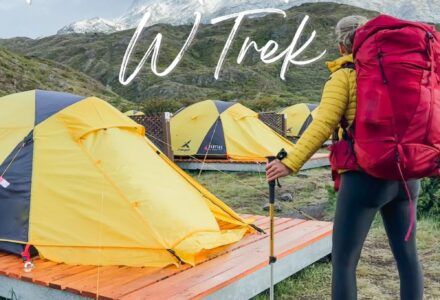
The W Trek in Chile is one of the hardest things I’ve ever done. And that’s coming from someone who thought it would be a good idea to cycle across the entire country of Jordan.
Now that we’ve got that out of the way, let me tell you why hiking in Torres del Paine National Park is also one of the most rewarding travel experiences I’ve had.
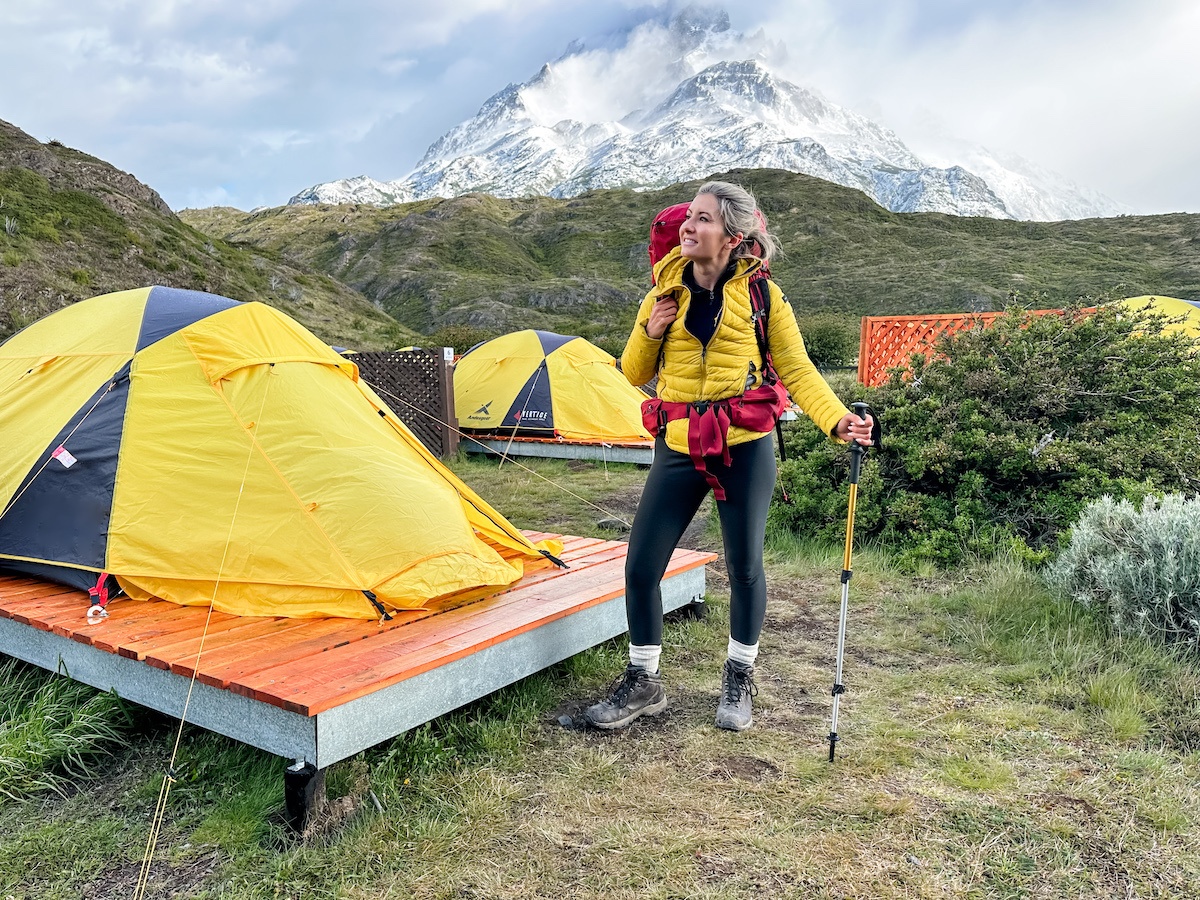
It’s rare to find an adventure that pushes your physical limits every single day, has you cursing under your breath more times than you can count as you face yet another sloshy water crossing or steep incline with a fully loaded pack on your back, and leaves you with aches, sore muscles and a few bruises on account of the inevitable stumbles over rogue rocks.
Yet, at the end of this multi-day grind, the feeling of accomplishment is unmatched. You just trekked through freaking Patagonia, one of the most remote and picturesque places on the planet!
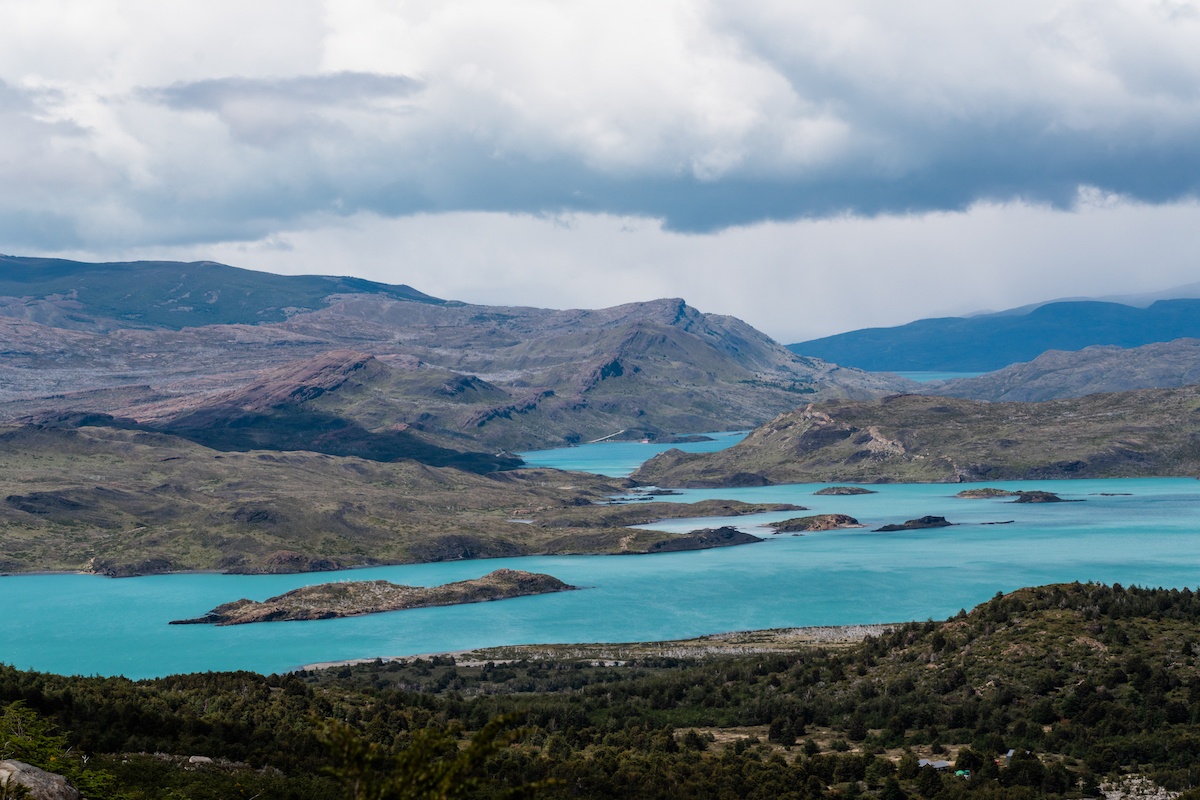
The scenery is stunning, the logistics and conditions are challenging, and your body is pushed to exhaustion with very little rest time.
Not only will you learn how capable your mind and body really are, but there’s the added bonus of not feeling guilty at all when indulging in a slice of chocolate cake and glass of Carmenere at a refugio at the end of each day. Because my god will you ever burn a lot of calories.
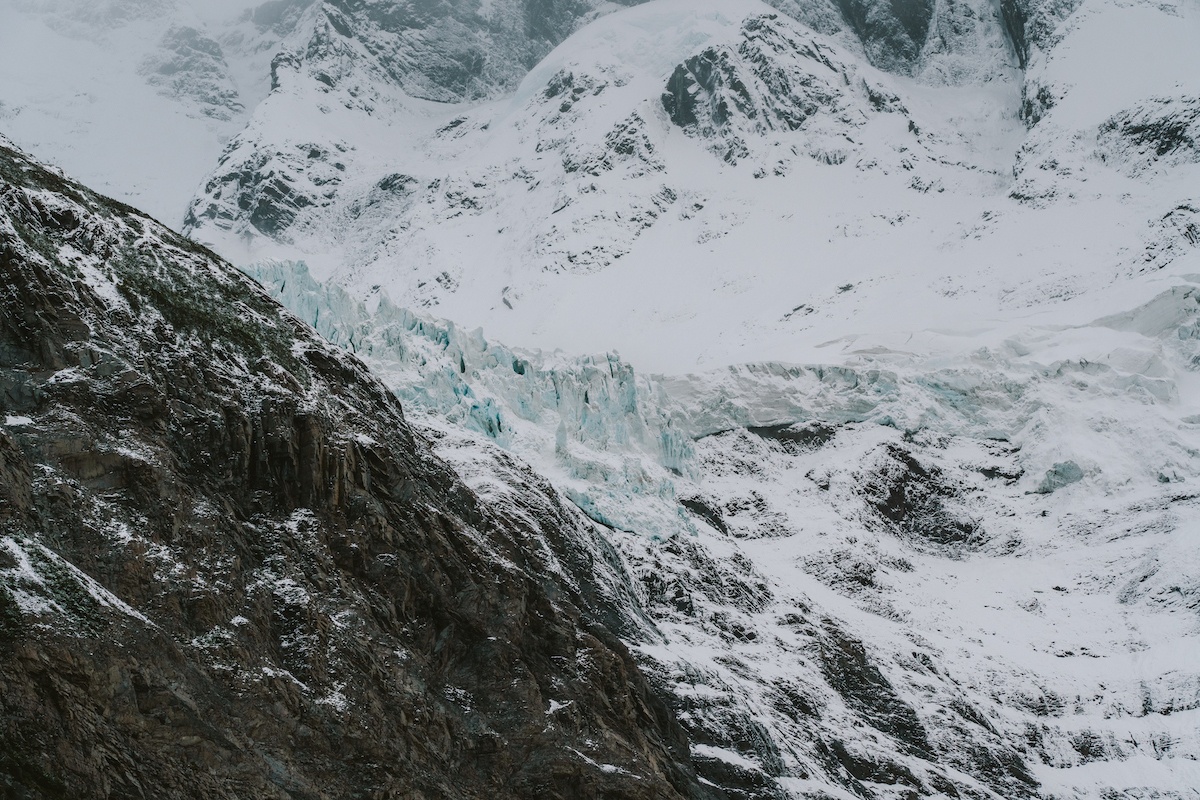
Is this trip for everyone? No.
Is it epic and unforgettable? Absolutely.
Here’s everything you need to know if you’re thinking about tackling the Torres del Paine W Trek in Chile.
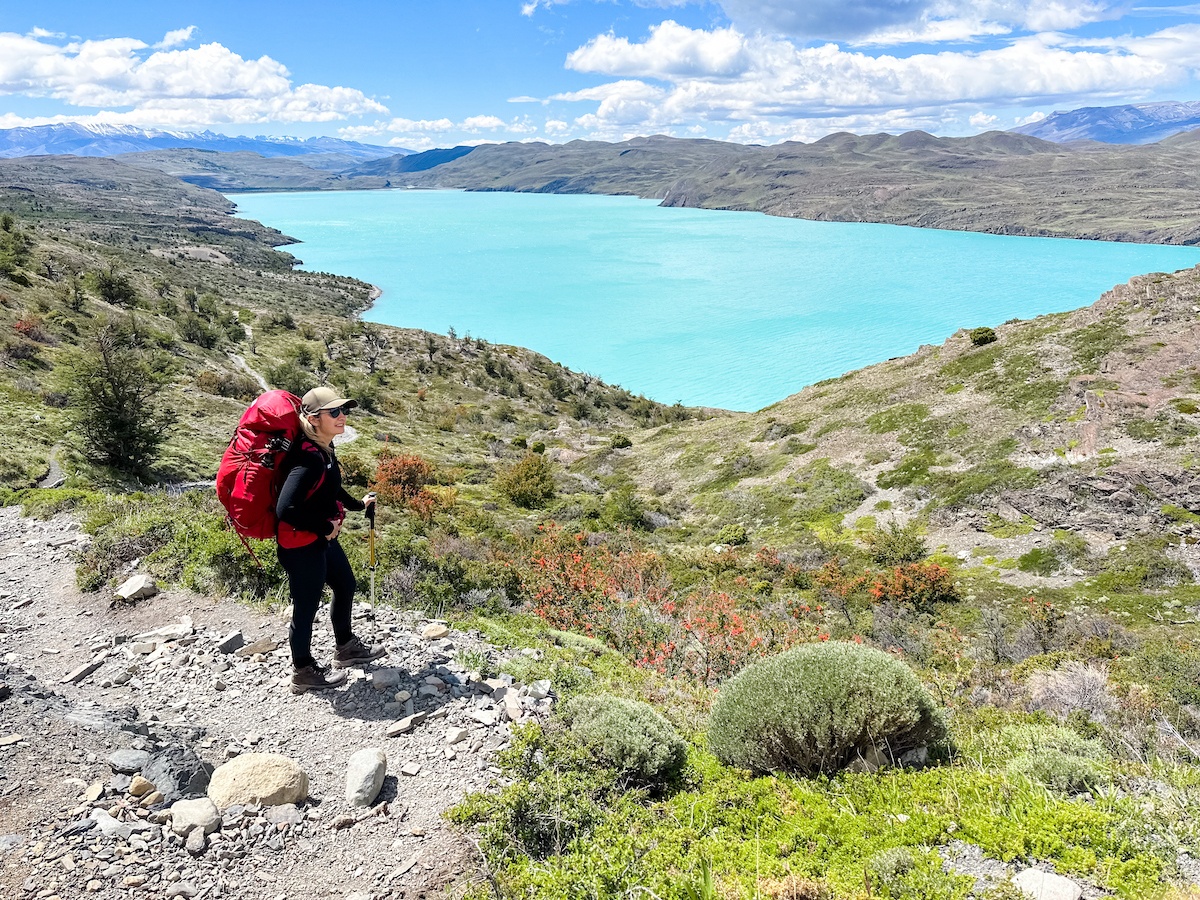
The Patagonia W Trek route
The W Trek takes four days to complete, and while its exact length seems to change depending on who you ask or which map you look at, the general consensus is that the trail is about 64 kilometers (40 miles) long.
Expect anywhere from six to 12 hours of hiking each day, more than 100,000 steps (my Apple Watch logged 125,458 to be exact) and of course countless photo-ops.
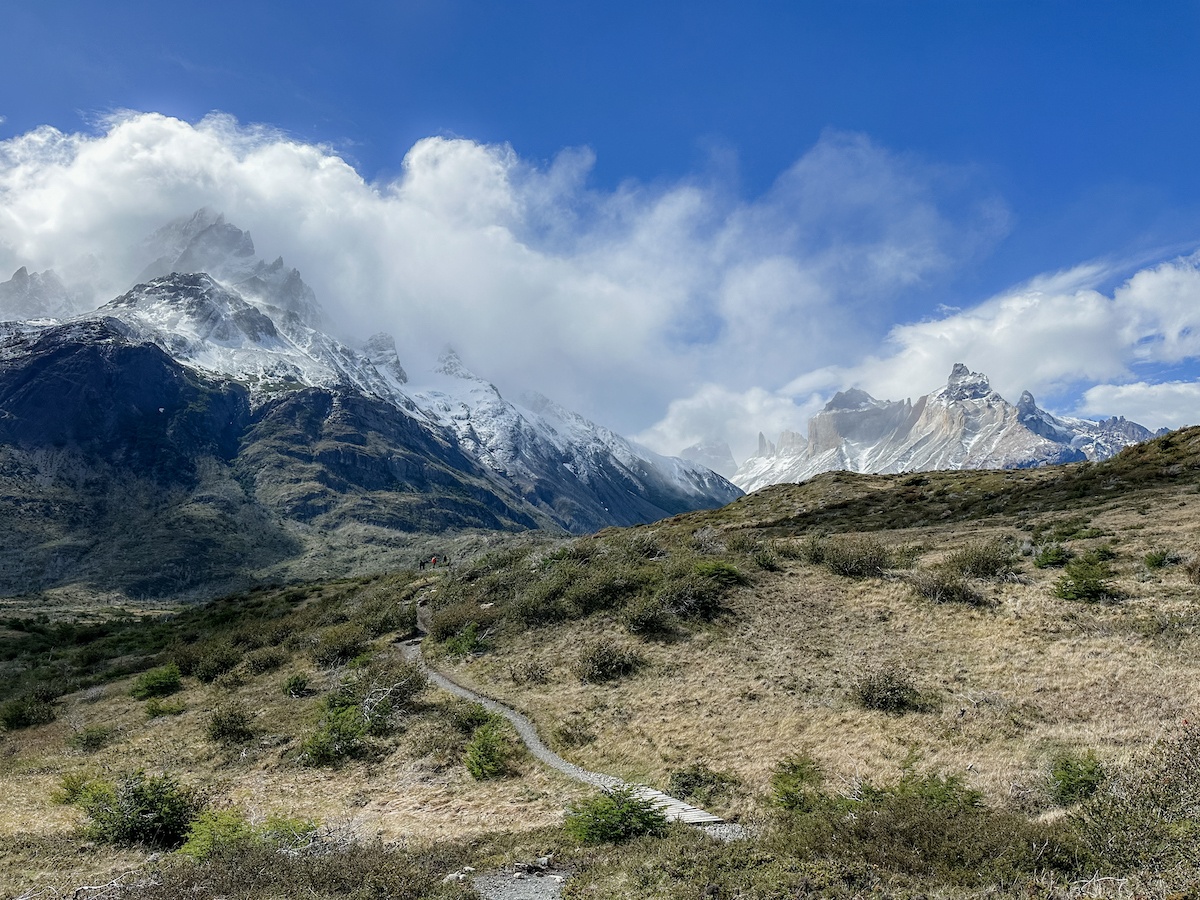
This is the most popular way to hike Patagonia, and those who are up for even more of a challenge can continue along the O Circuit which takes about nine days to complete the 122 kilometer, counter-clockwise loop.
This W Trek map outlines the exact route:
The W Trek in Torres del Paine can be done in either direction, starting from either the Torres del Paine Welcome Center on the east side or Lago Grey on the west which requires a boat ride over.
Deciding which side to start from simply comes down to preference and logistics, with the availability of refugios (the campsites that hikers stay at each night) being the most important to account for.
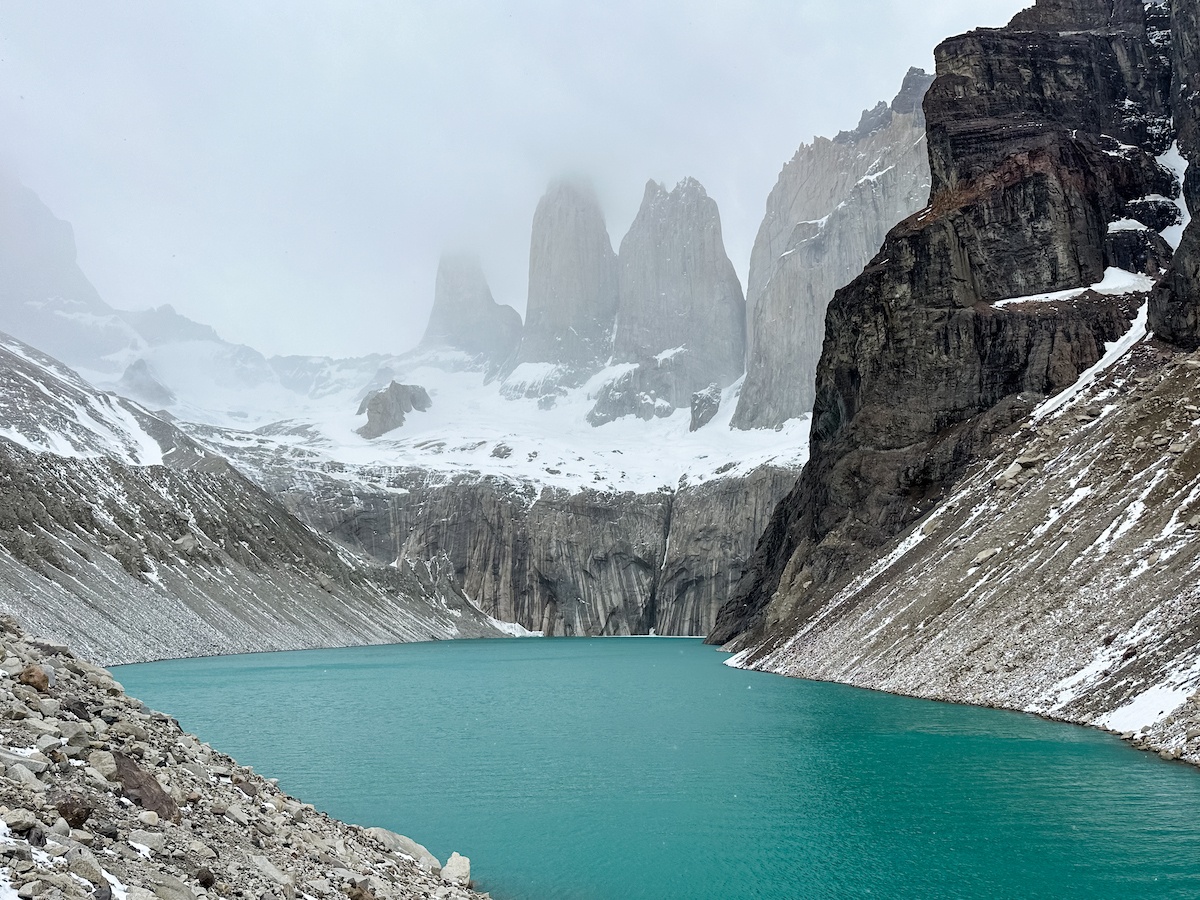
Another factor is when you want to take on the Mirador Base de Las Torres hike: this is the view you’ll see on pretty much every single postcard and basically the entire reason most people come all the way to Patagonia.
Thing is, it’s a very steep eight hour round trip hike, and the most challenging day of the W Circuit. So, some like to get it out of the way on day one while their legs are fresh, while others opt to start from the other side and save it for the last day of the hike as a culmination of their efforts.
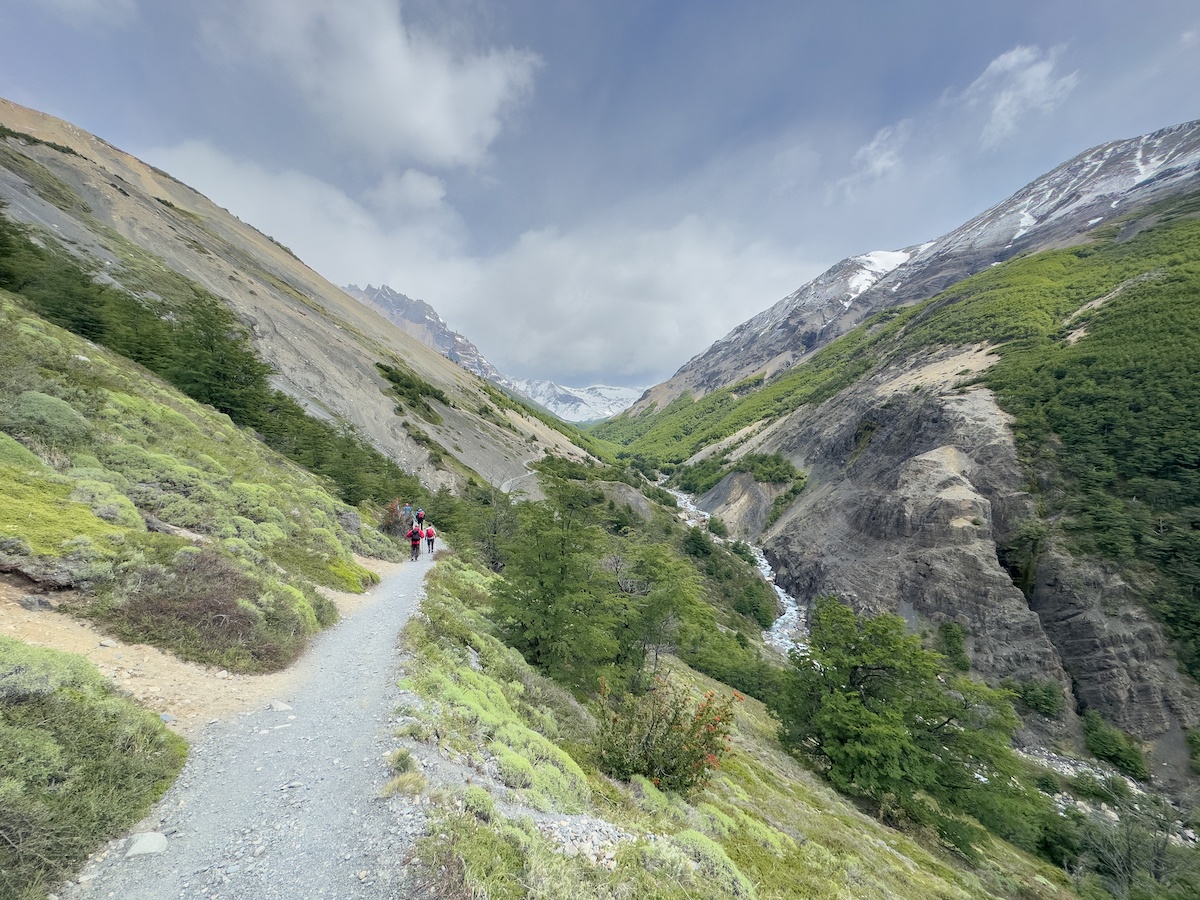
We did it on the first day, and there are pros and cons to both. I can’t imagine how much harder it would have been after already hiking for three full days and feeling worn down from camping and cold showers; that said, going full throttle on the first day wasn’t the best warmup as someone who doesn’t do intense hikes on a regular basis, and my legs were basically jelly the whole rest of the trip.
One perk of going from west to east is you can stay at Refugio Chileno the night before summiting Mirador Las Torres. That saves about 90 minutes of hiking compared to starting from Centro on the other side–a huge advantage for those wanting to make it up for sunrise or try and beat the crowds.
When I asked my guide who’s done the trek hundreds of times which direction he prefers, he said he likes to do it on day one to get it over with. So there you have it.
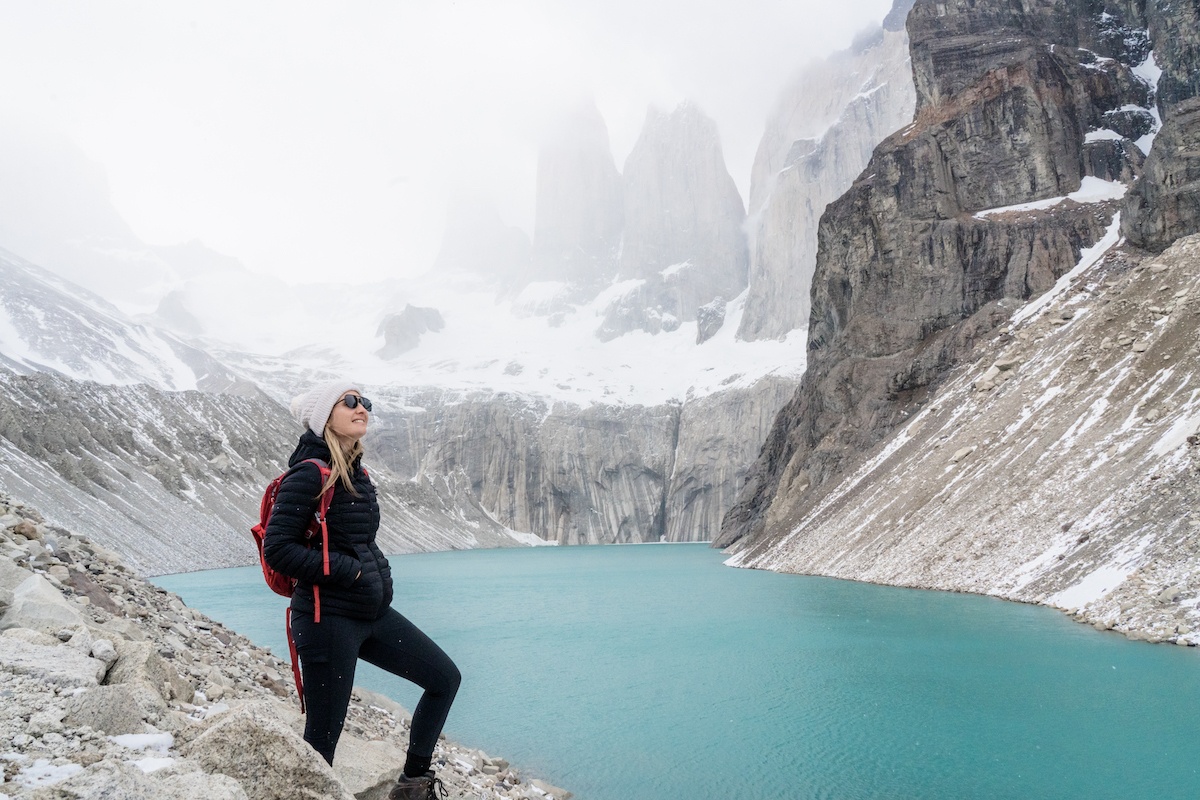
How to book a W Trek itinerary
As you might have noticed already, there are a stupid amount of logistics involved with trekking in Torres del Paine–and in true Chilean fashion, they don’t make it easy.
Some of the things you’ll need to book and consider are:
- Transportation to and from the park gates and to/from the welcome centre (yup, these are separate buses)
- Refugios for each night of the trek
- Food (either carry your own or book meals at each stop)
- Sleeping bag and mat rentals (if not carrying your own)
- Permits/entrance fees
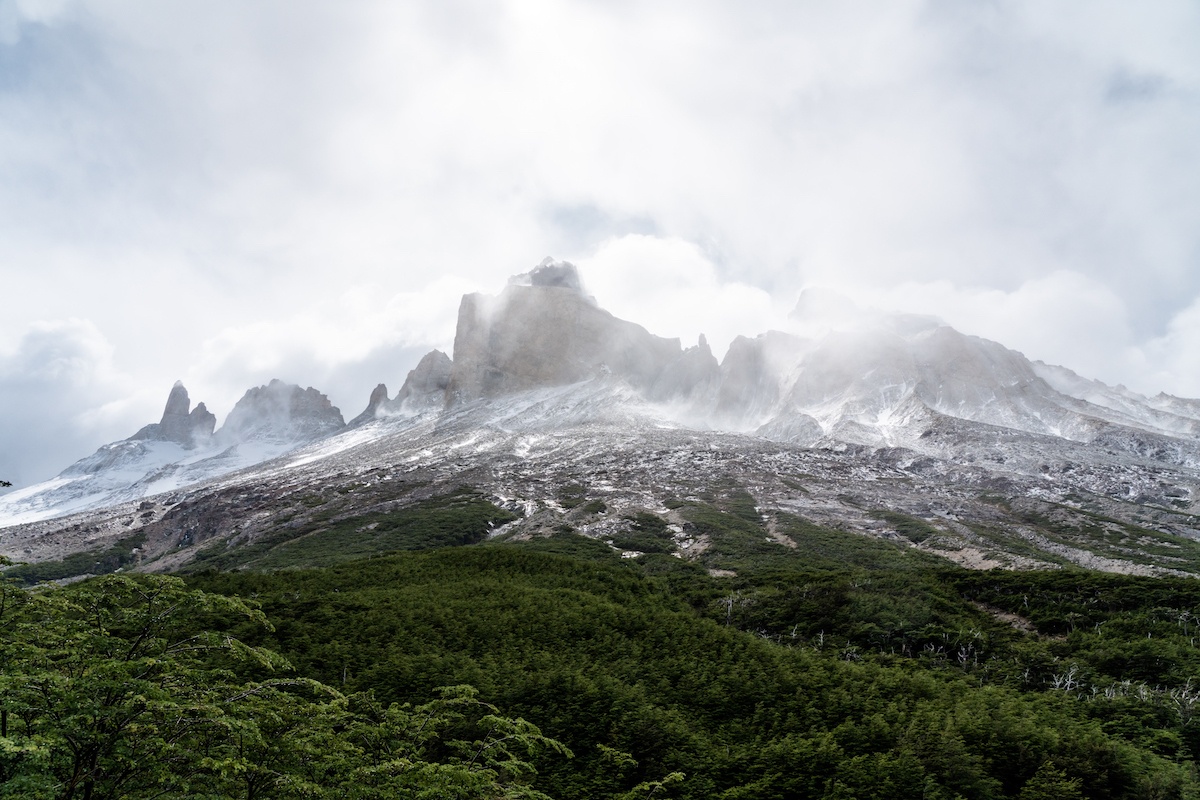
The problem is that tour operators secure a lot of the spots ahead of time, so there are a limited amount left for those planning self-guided trips. You’ll also have to ensure you book each night you need in the correct order of the route, and since two different companies ( Vertice and Fantástico Sur ) operate the refugios you’ll need to coordinate this on separate websites.
Fun, right?
Globe Guide tip: Some hikers have had success contacting the companies directly via e-mail or WhatsApp in advance to secure bookings.
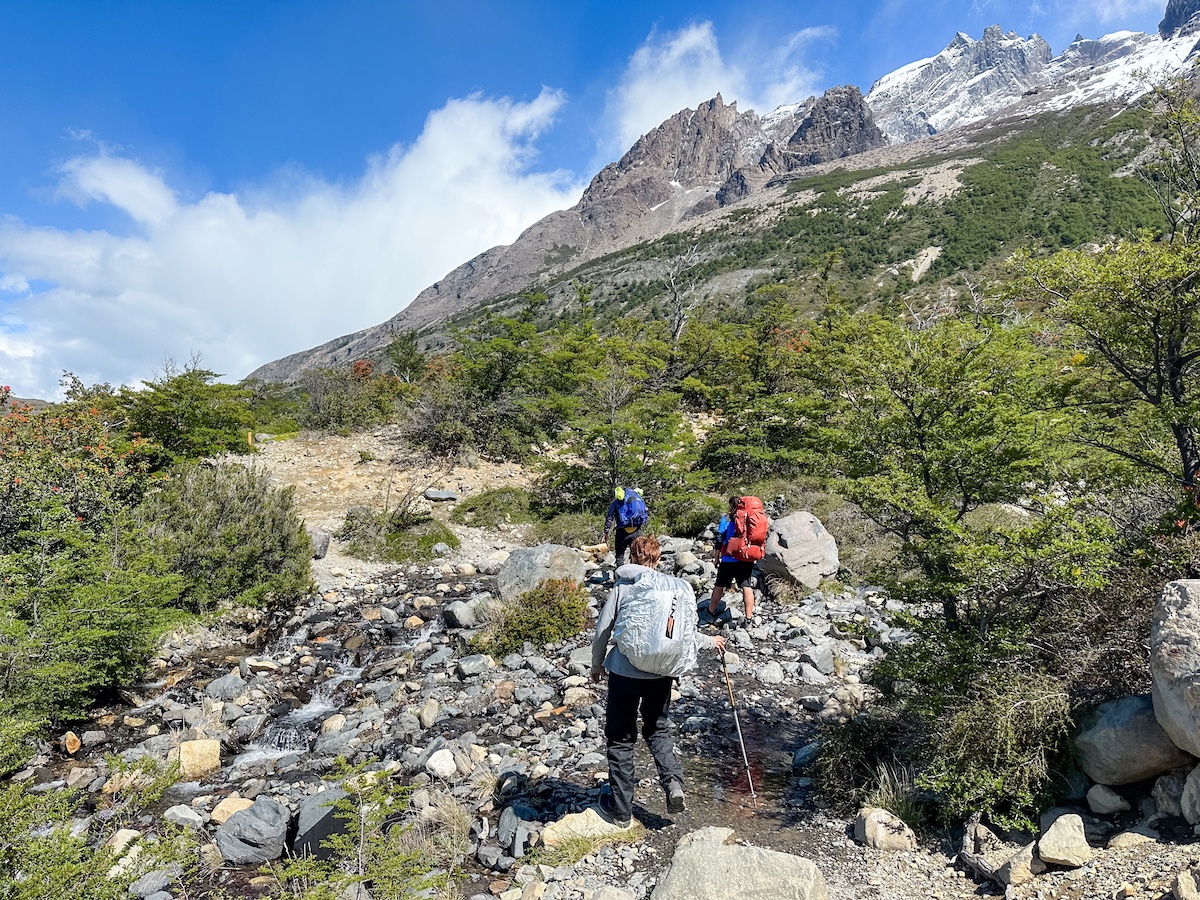
My recommendation: save yourself a lot of time and stress, and book through a small group tour operator instead.
I went with Traverse Journeys , which offers both self-guided and group trip options, as well as (optional) stops in the Strait of Magellan to see the famous penguins, horseback riding, wine tasting among the Casablanca vineyards and city sightseeing in Valparaiso and Santiago.
Traverse handles every single detail right down to what’s in your lunch bag, and donates a portion of the proceeds from each trip to support a local community partner. We saw this firsthand by learning about the efforts the Torres del Paine Legacy Fund is spearheading to conserve the fragile environment and ensure a safer experience for visitors, and even passed some of their volunteers working on the trail.
Globe Guide readers get $200 off of any booking with Traverse Journeys by entering code GLOBEGUIDE200 at checkout!
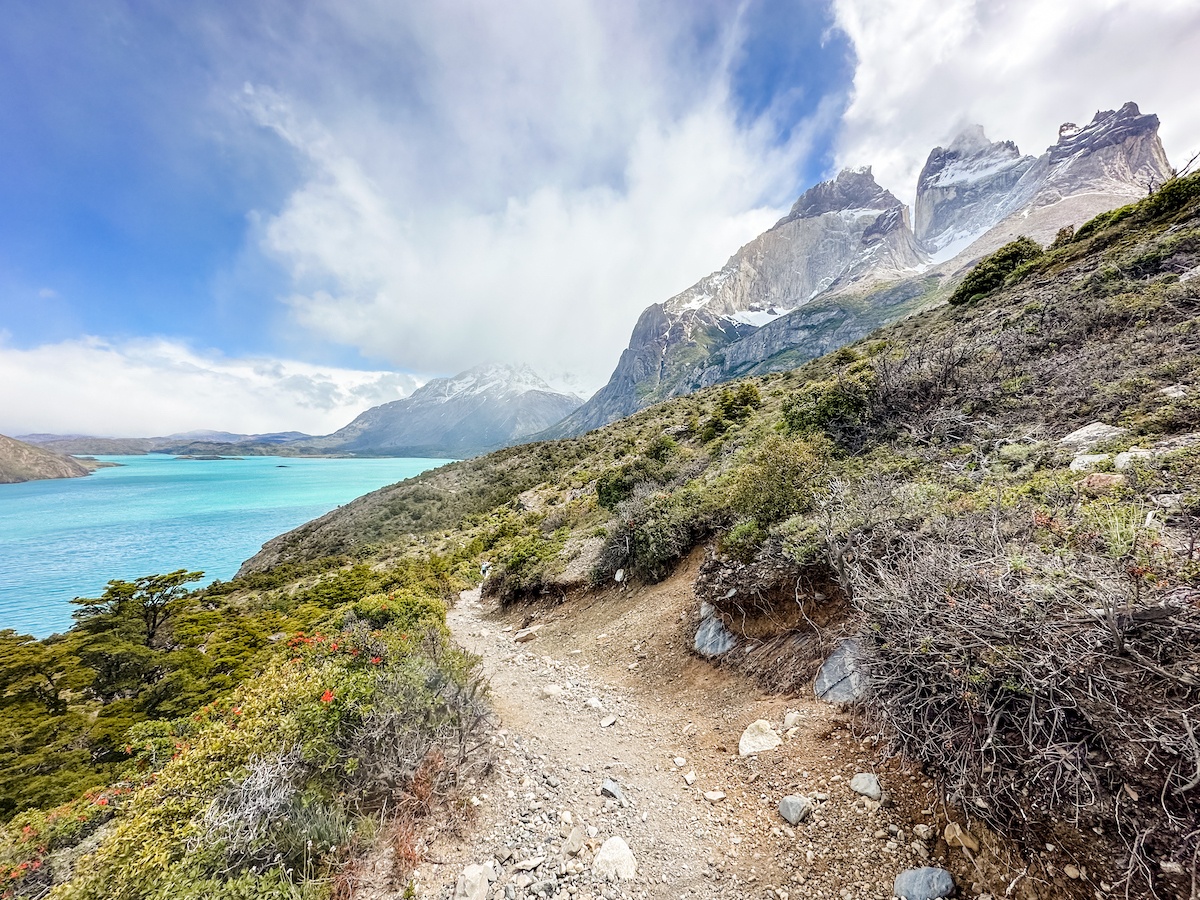
Getting to and from the entrances for trekking Torres del Paine National Park
The cute town of Puerto Natales is like basecamp for Torres del Paine National Park, despite being a scenic 90 minute drive away.
This is where the closest airport is, along with lots of great restaurants and accommodations, grocery stores for stocking up on food or snacks, and gear outfitters for any last minute purchases.
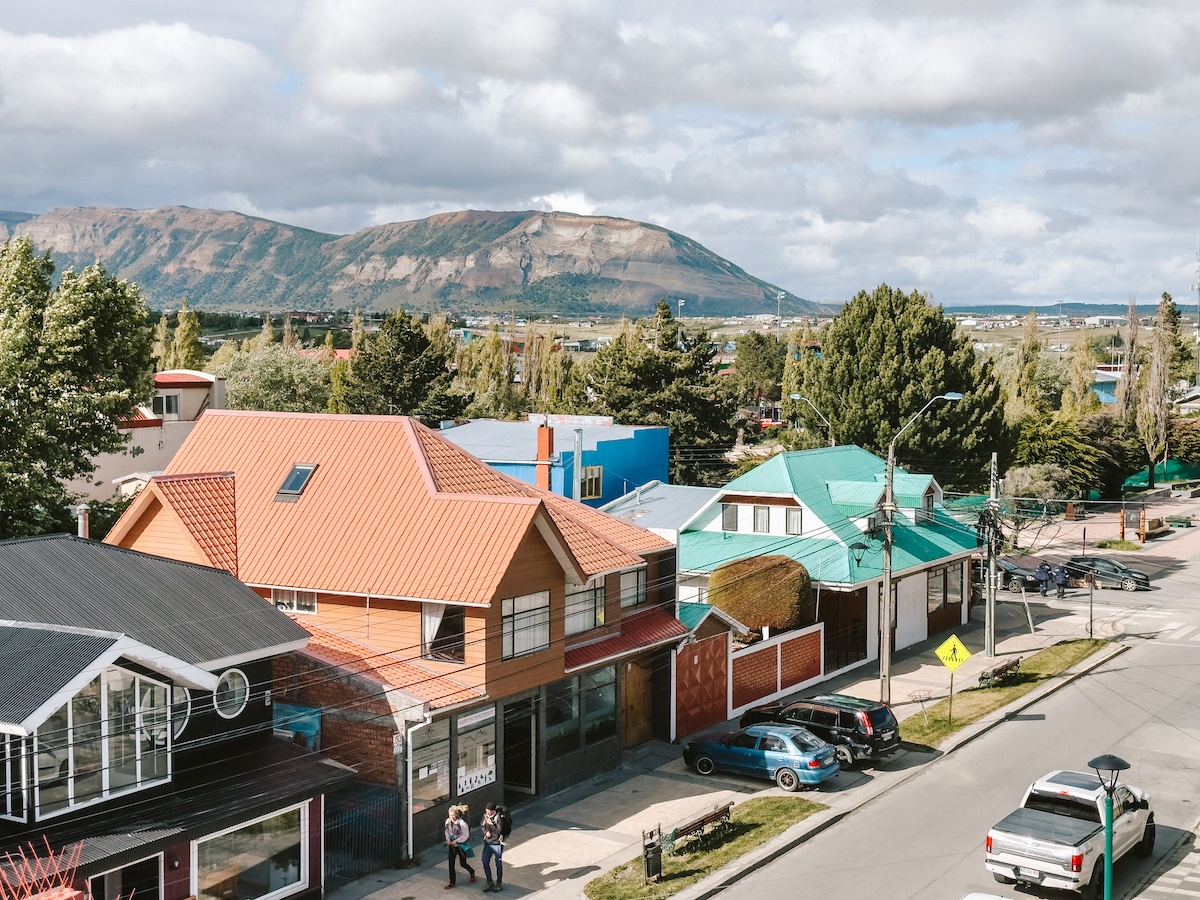
Buses depart from the main depot around 7 AM for both entrances to the park. If you’re starting on the east side like we did or doing the day hike up to Mirador Base Torres, you’ll present a QR code with your permit then hop on another bus (3,000 pesos) to get to the Torres del Paine Welcome Center.
Those starting from the west will head to Lago Grey and take a catamaran over. In theory this means all the way up to the glacier for incredible views, but if the weather is bad a ferry crosses Pehoe Lake to the Paine Grande refugio instead.
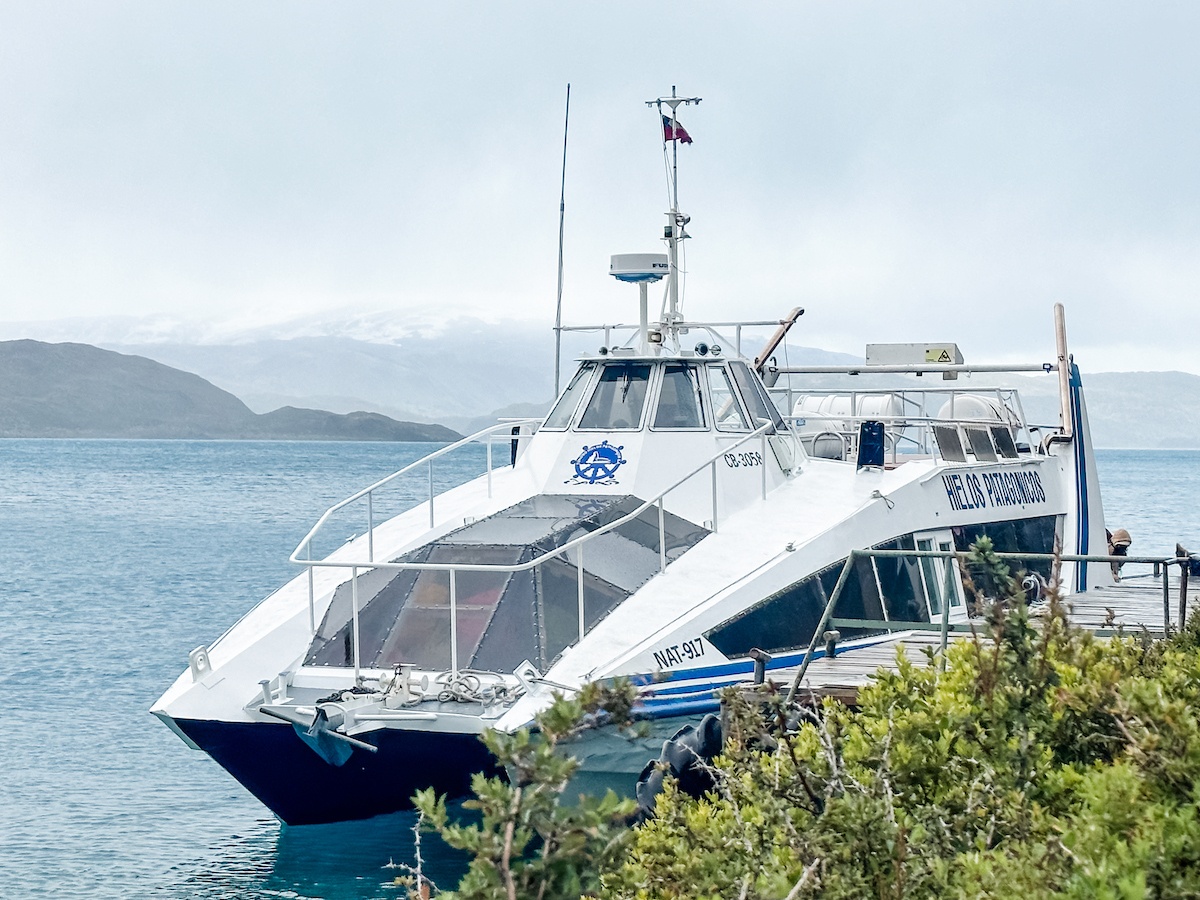
In this case, you’ll have to do an out-and-back to see the glacier on foot, before taking the ferry across Pehoe Lake. This website has more information on prices and schedules.
Globe Guide note: If neither of the boats are operating which happens on occasion due to weather or maintenance issues, it adds an extra 6-7 hours of walking to get to the pickup/dropoff spot.
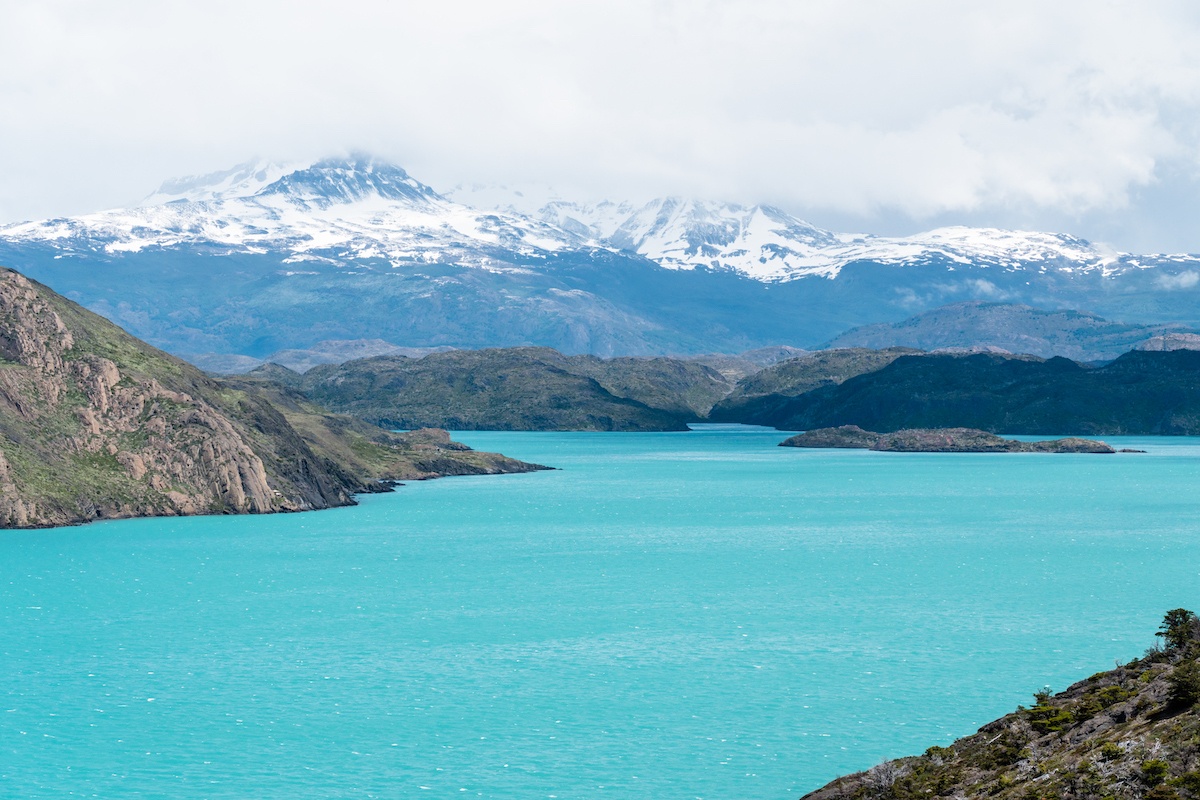
W Trek refugios
Refugios are a key part of the experience, and not all are created equally.
At the very least you can expect a communal eating area, shared bathrooms with (sometimes) warm sinks and showers, a canteen, bar and outdoor hangout area. Camping options are either elevated tents or tents on low platforms (both with sleeping pads), or sites for pitching your own tent.
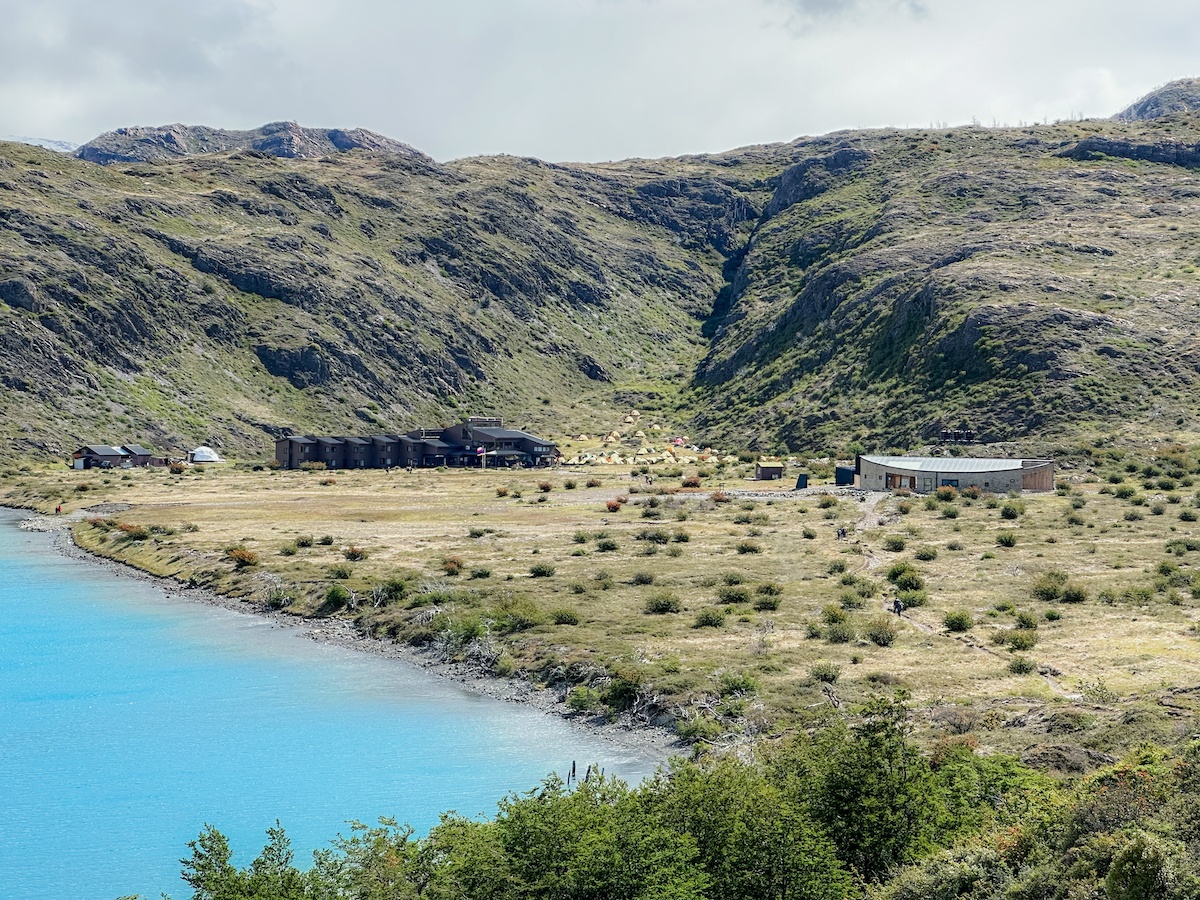
Some refugios also offer dorm-style rooms that sleep about six to eight people in bunk beds, private rooms for couples in the main lodge, and even unique accommodation options like domes and tiny houses.
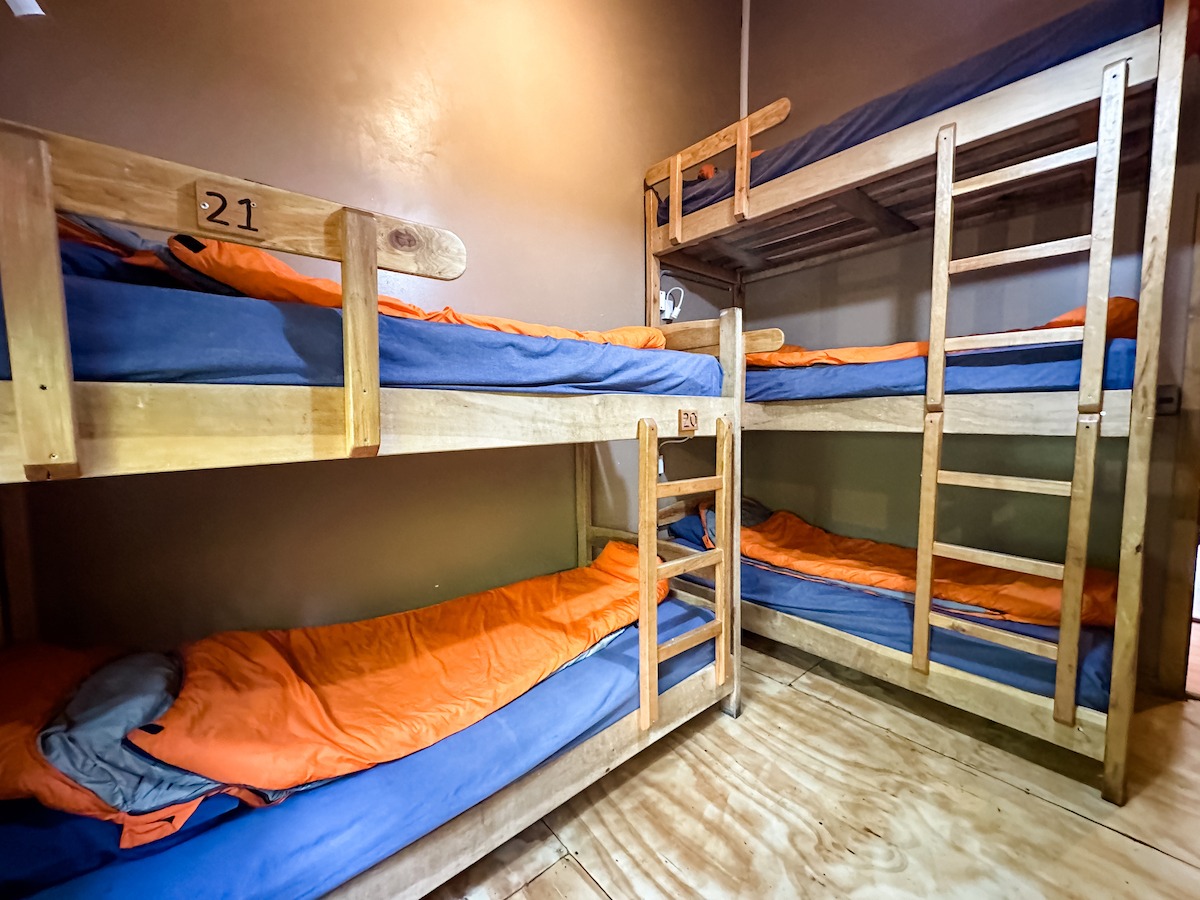
We didn’t get to stay at Refugio Los Cuernos, but absolutely loved the vibe of it from the short time we spent there on a lunch break. It has lovely views from the patio, a warm hangout space and some very cool accommodation options.
Paine Grande has a great feel with lots of communal spaces and a second-floor bar, and Centro has a cozy wood-stove fireplace and large dining area (though we didn’t love how far we had to trek to get to our tent–it felt like climbing another soggy mountain!).
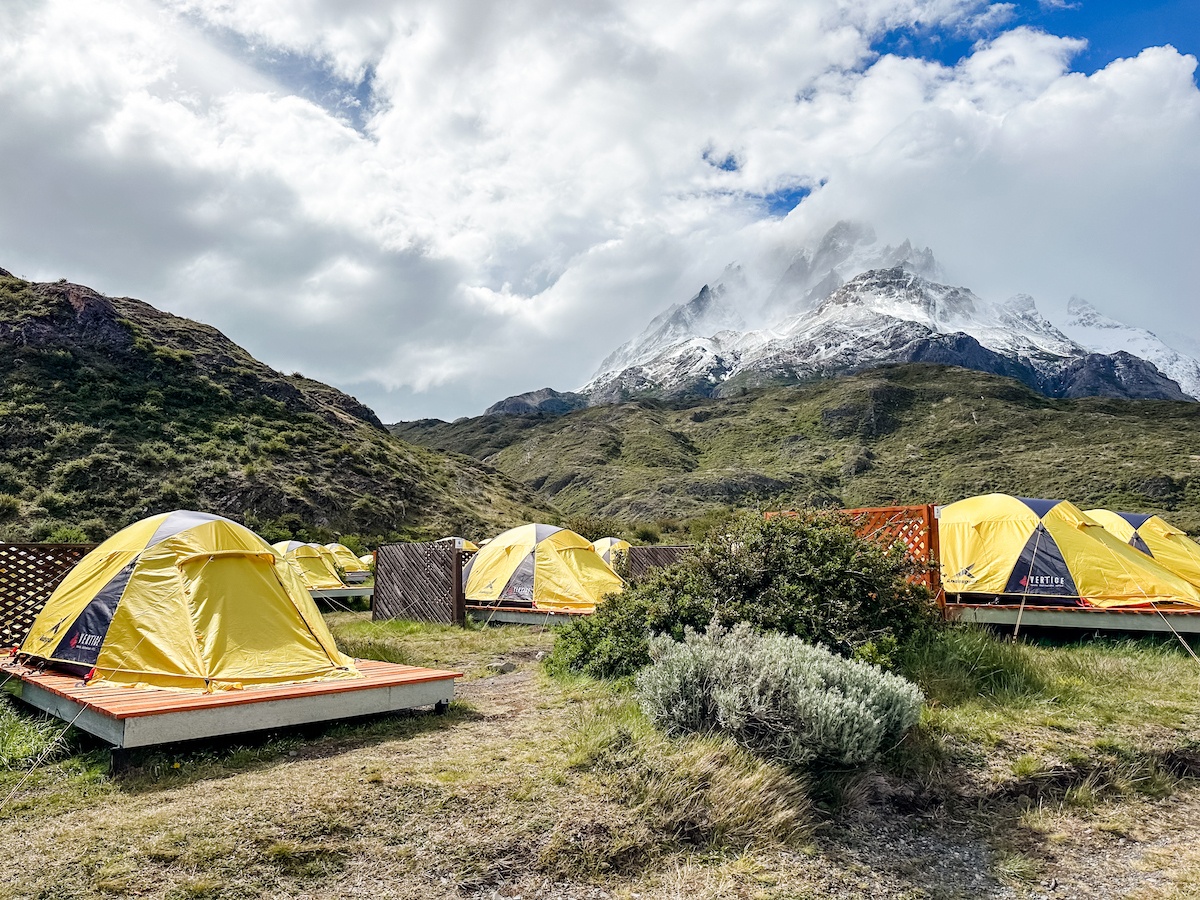
Frances was a total bust and we couldn’t wait to get out of there.
The layout is awful, with all the tents at the top of a hill and the restaurant at the very bottom and not well marked—not fun to deal with going up and down after a full day of hiking. To add insult to injury, dinner seatings start early and there’s no other warm place to sit or enjoy a drink, so you’re literally stuck out in the cold waiting to get in.
The bathrooms were filthy (to be fair, they aren’t very clean at most refugios ) and even though there were limited hours for hot water it still ran out before the time was up. My top tip would be to stay at Los Cuernos instead of Frances if possible.
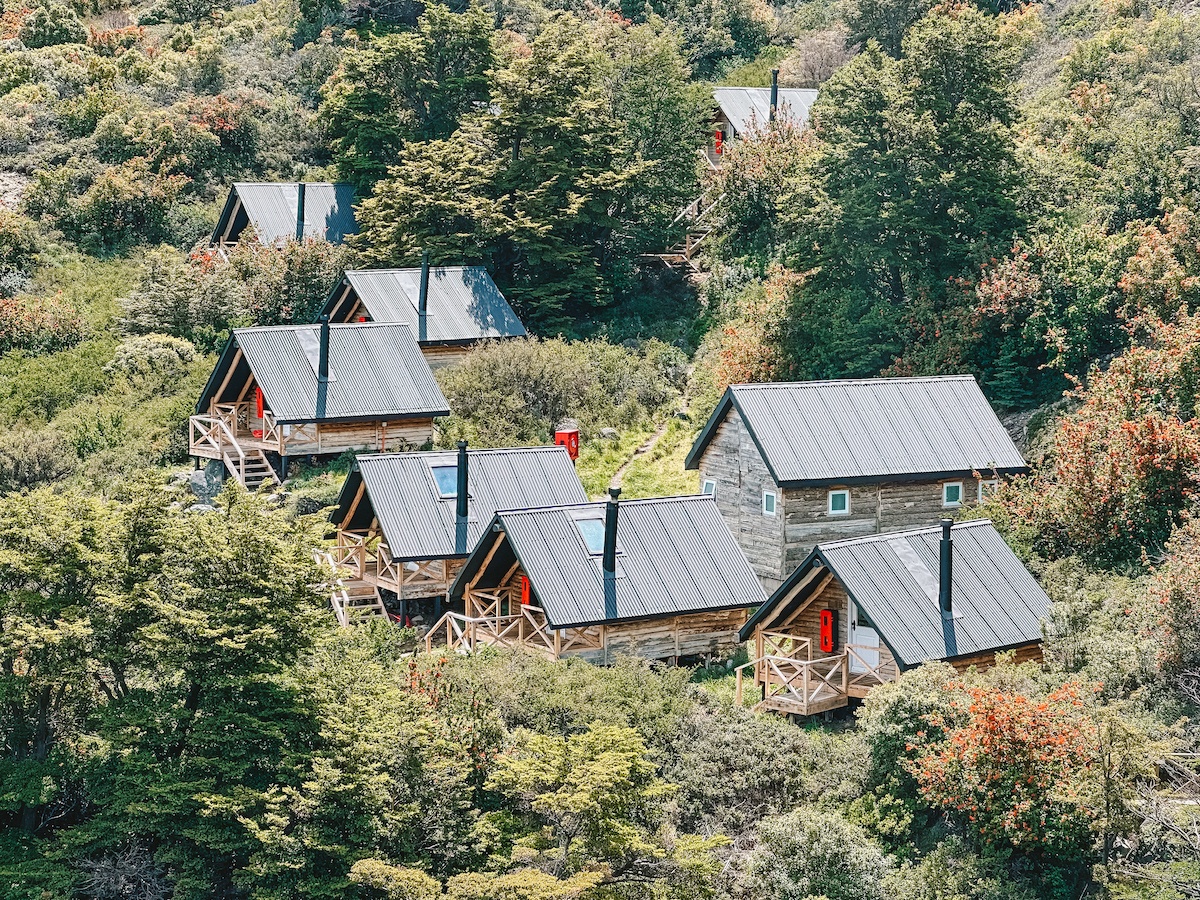
Prices differ by refugio , but expect to shell out about (per night, in USD):
- $13 for a campsite
- $40 for a tent
- $25 sleeping bag rental
- $12 mat rental
- $65 per bunk in bunk bed (comforter extra)
- $100+ for private accommodations like domes
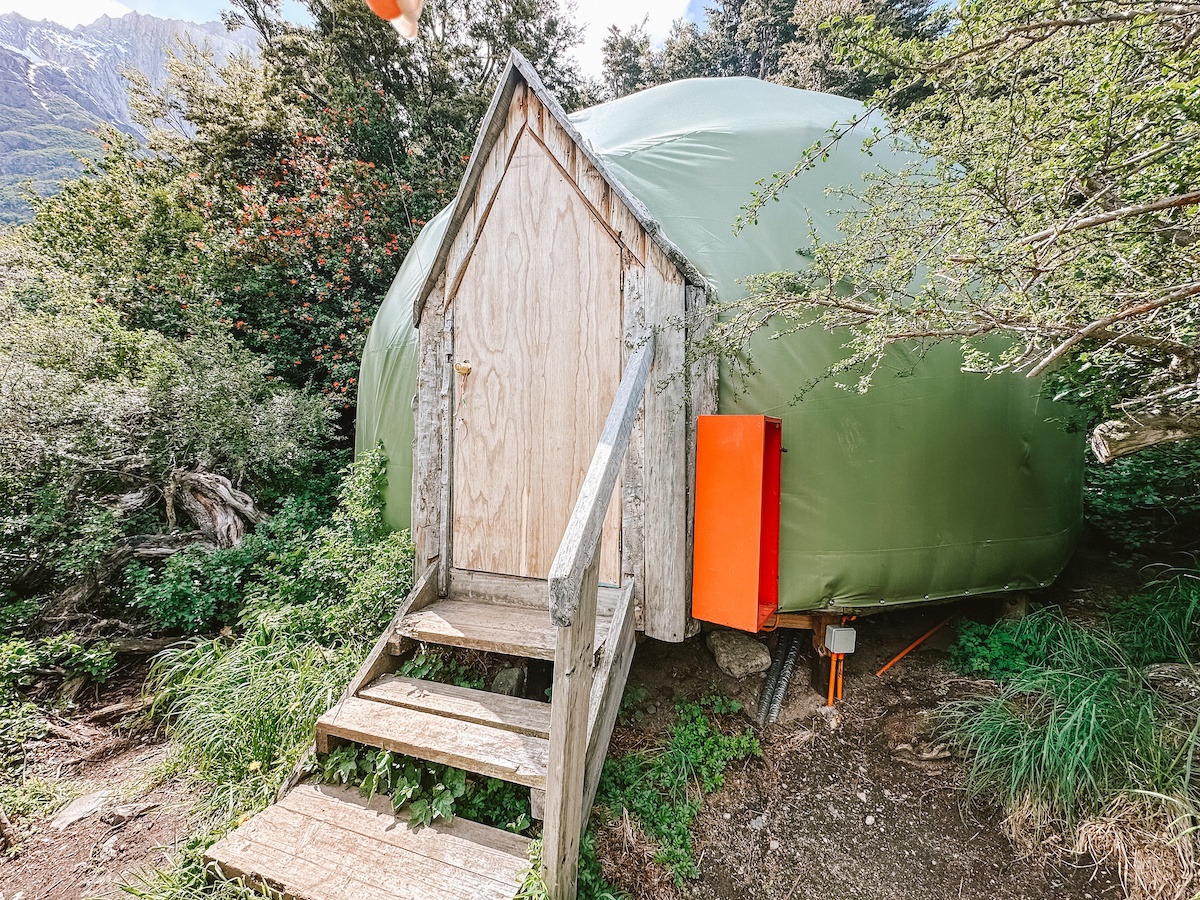
Hikers can bring their own food, or opt for a meal plan with breakfast (usually just bread and a small portion of scrambled eggs), boxed lunch and a hearty family-style dinner (timed seatings).
You’ll get a lot more out of the experience if you embrace being off-the-grid during the trek; however, those who need to connect can pay for minutes at the WiFi stations inside most refugios .
There are also outlets in the refugios for charging devices, but they can be in-demand so I recommend bringing a lightweight portable charger instead.
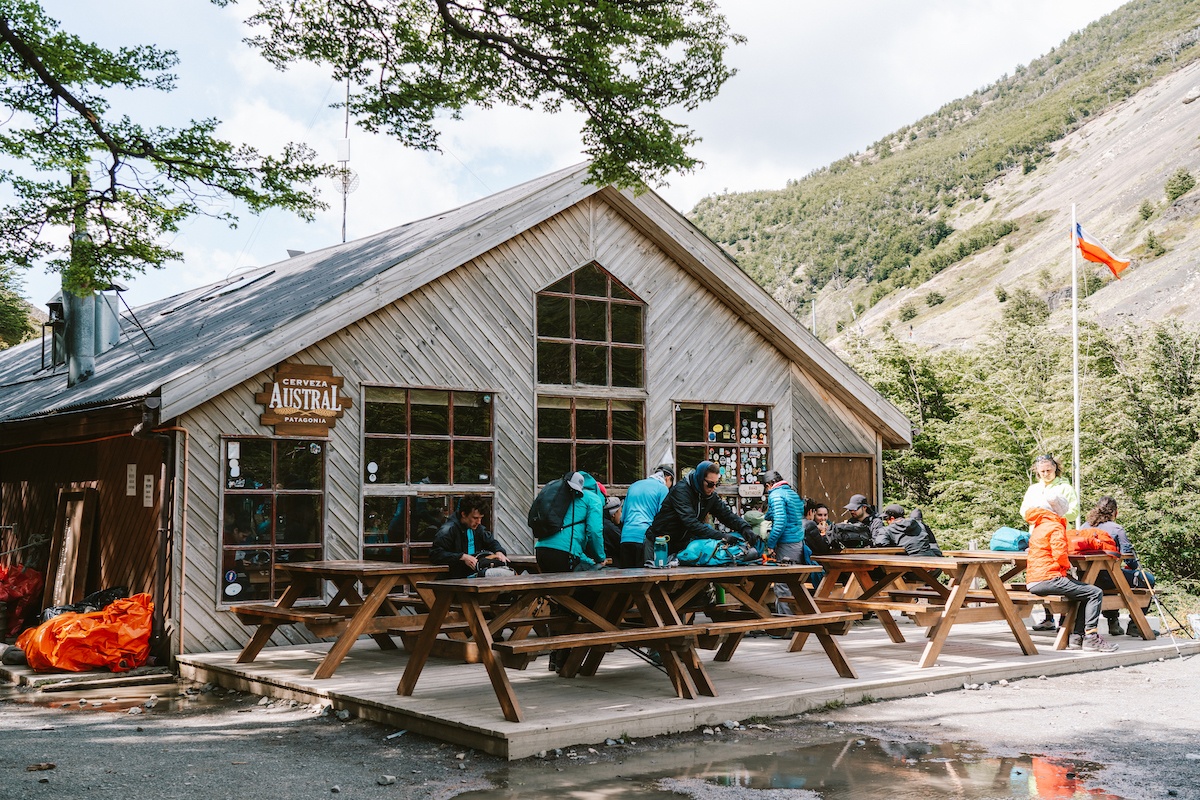
Life on the trail during the Torres del Paine W Trek
There’s a huge sense of camaraderie on the trails that feels like the good ol’ backpacking days. You’ll see the same people over and over, since there are only two potential routes and a handful of refugios.
You’ll spend anywhere from six to twelve hours walking per day (depending which part of the route you’re on), and likely only see a few dozen hikers until you get to a refugio.
The exception is the Mirador del Torres hike, which is absolutely packed with people. It sees about 1000 people per day since it’s the area’s most famous trail and can easily be done by day trippers from Puerto Natales.
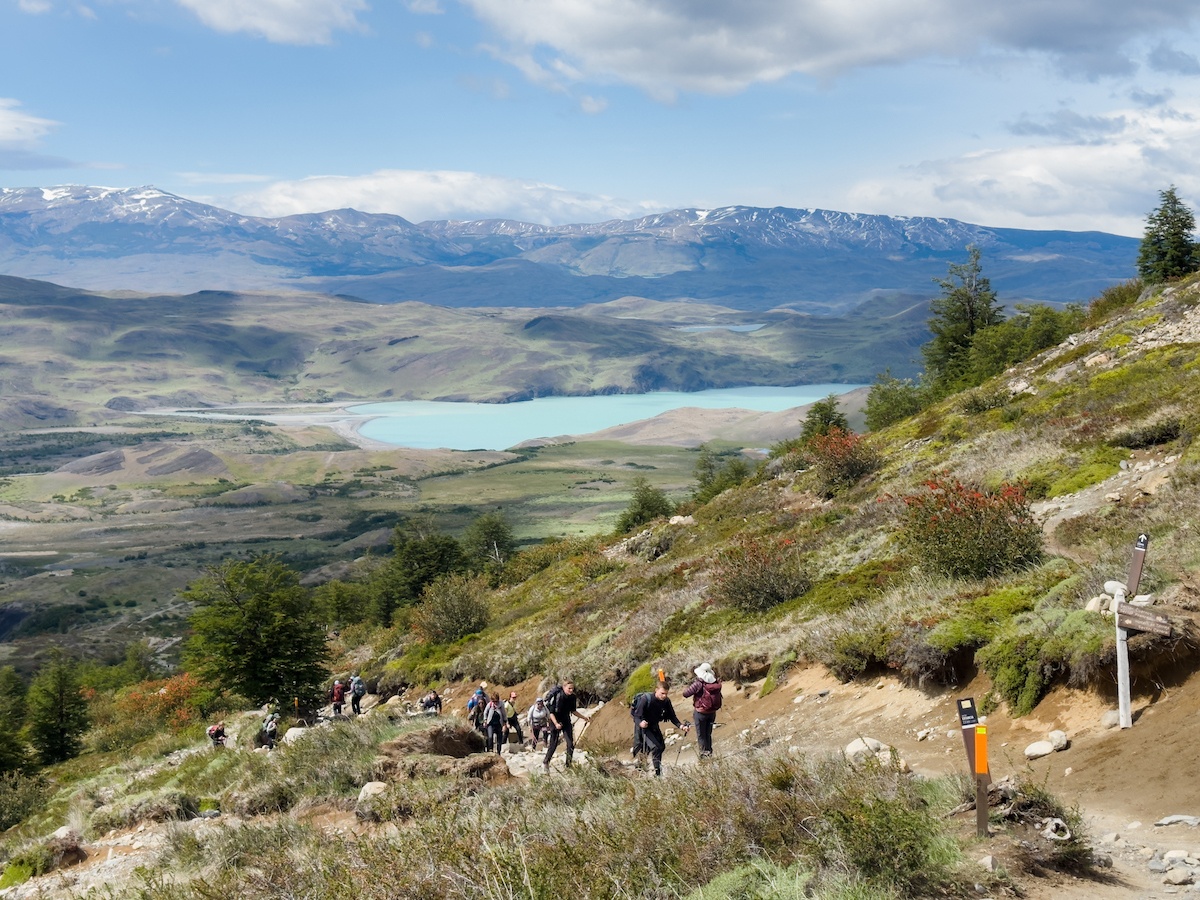
In terms of the age range, hikers seemed to be anywhere from in their early 20s to late 60s. My mom did it, and she’s turning 70 this year! I only saw one child the entire time, so the W Trek doesn’t seem to be popular with families.
It’s definitely a good idea to have hiking experience (and make sure you break in your shoes and test your outdoor gear ahead of time, obvs). That said, a couple people in our group aren’t regular hikers and managed alright, as it’s not a super technically challenging trail.
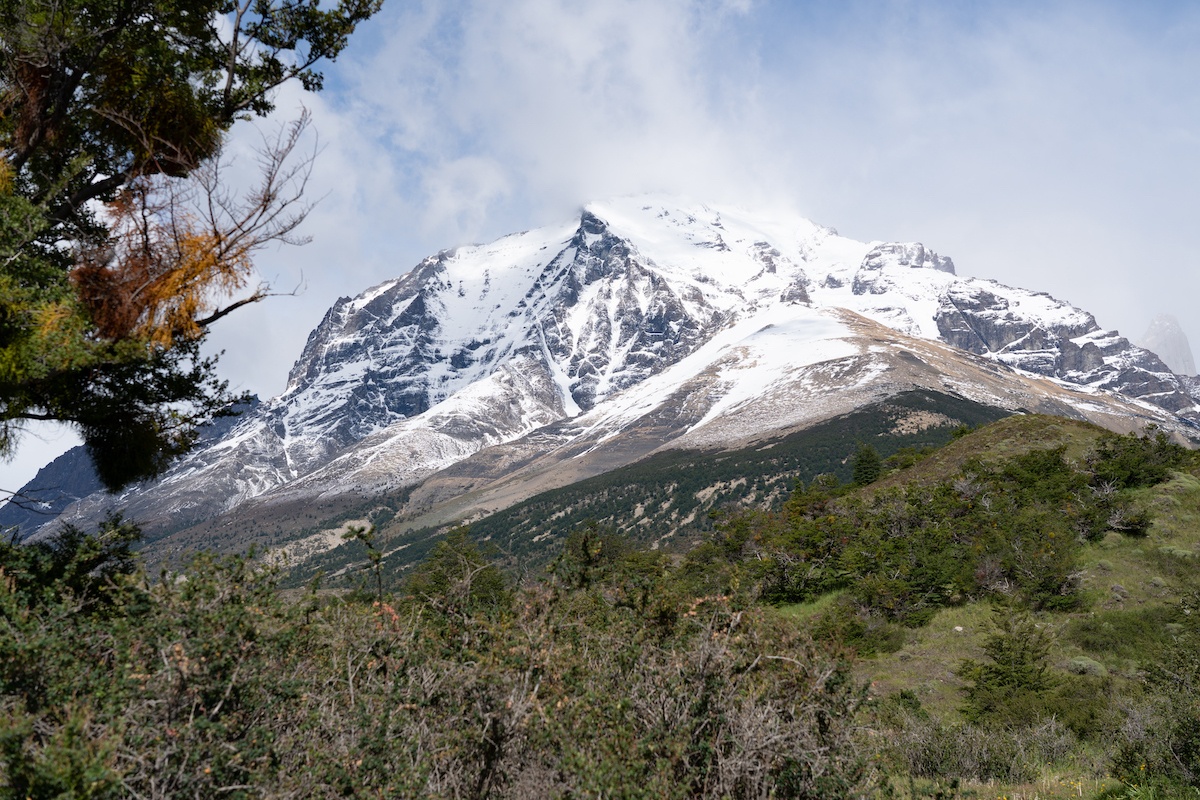
The main challenge for me was how long each day is, with very little time to rest before doing it all over again the next day. And let’s be honest, tents aren’t that comfortable. 10/10 would recommend upgrading to a bed if budget allows.
Completing the W Trek is definitely a mental and physical challenge–luckily, the feeling of accomplishment coupled with jaw-dropping scenery like soaring peaks shrouded in mist, calving glaciers and gem-toned lakes makes it all worth it.
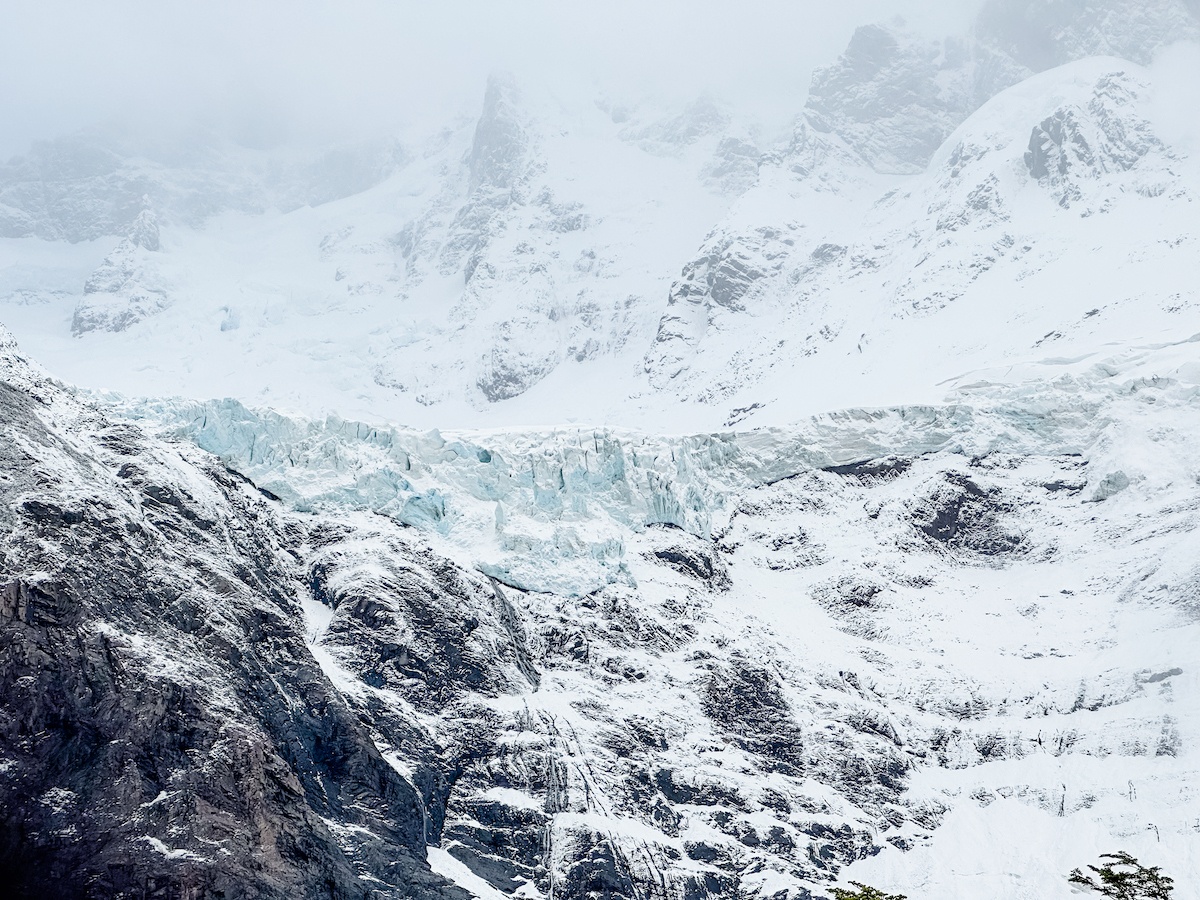
Patagonia packing list: The essentials
It’s not uncommon to experience all four seasons in a single hour in these parts, so preparation is key when planning your packing list for Patagonia.
Unless you hire a porter you’ll be carrying all of your belongings in a large trekking pack for at least two full days, and will also need to bring a lightweight sleeping bag, mat and travel pillow unless you rent them at each refugio.
READ MORE: Patagonia packing list for the Torres del Paine W Trek
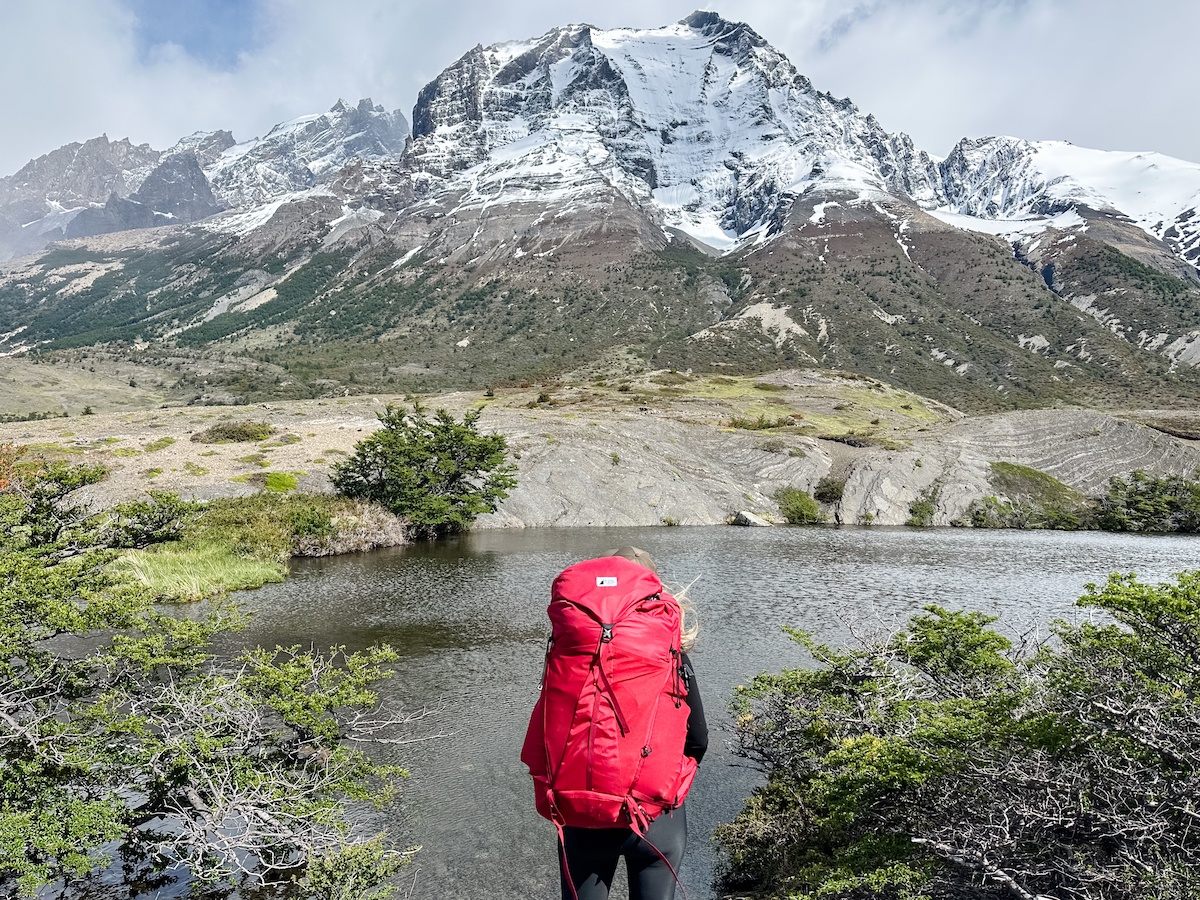
This W Trek packing list outlines every single item you’ll want to bring and a few you might not have thought of– you’ll definitely want a lightweight portable charger , collapsible hiking poles , a quick dry towel and Chilean pesos in case there’s a connectivity issue with using credit cards at the refugios .
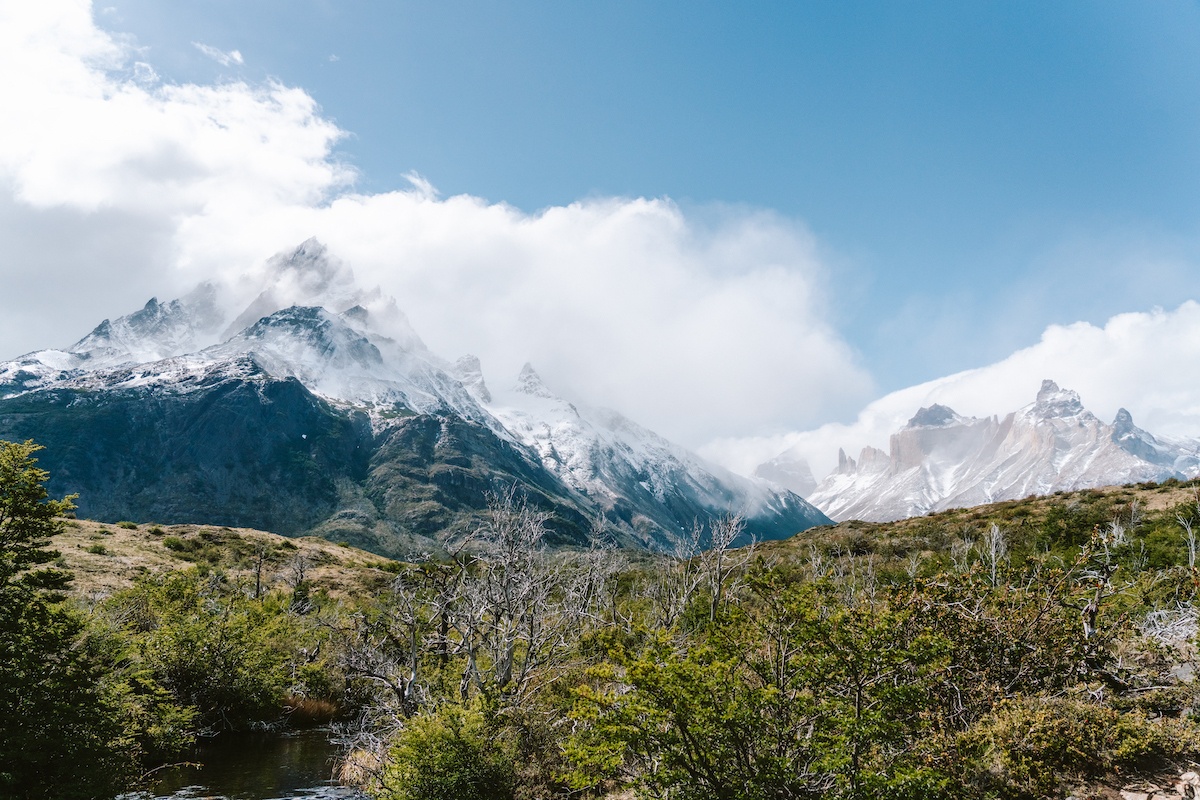
Insider tips for the W Circuit, Torres del Paine
- The Patagonia W Trek can be done all year round, but the best time is from November to March. Chile is in the southern hemisphere, so this is spring/summer when temperatures are warmer and there’s usually less rain and snow.
- If you’re planning to hike Torres del Paine without a guide, it’s critical to download a GPS map ahead of time. While the trail is generally well marked, one wrong step away from the path can get you lost in a hurry since the terrain is so untouched. Unfortunately this happened to me near Glacier Grey and resulted in a frantic 20 minutes of running up and down ravines and ridges, yelling ‘help!’ in hopes fellow hikers would hear me over the wind–luckily, a couple did. Man, was I ever thankful to see them (side note: stick with your hiking buddies!).
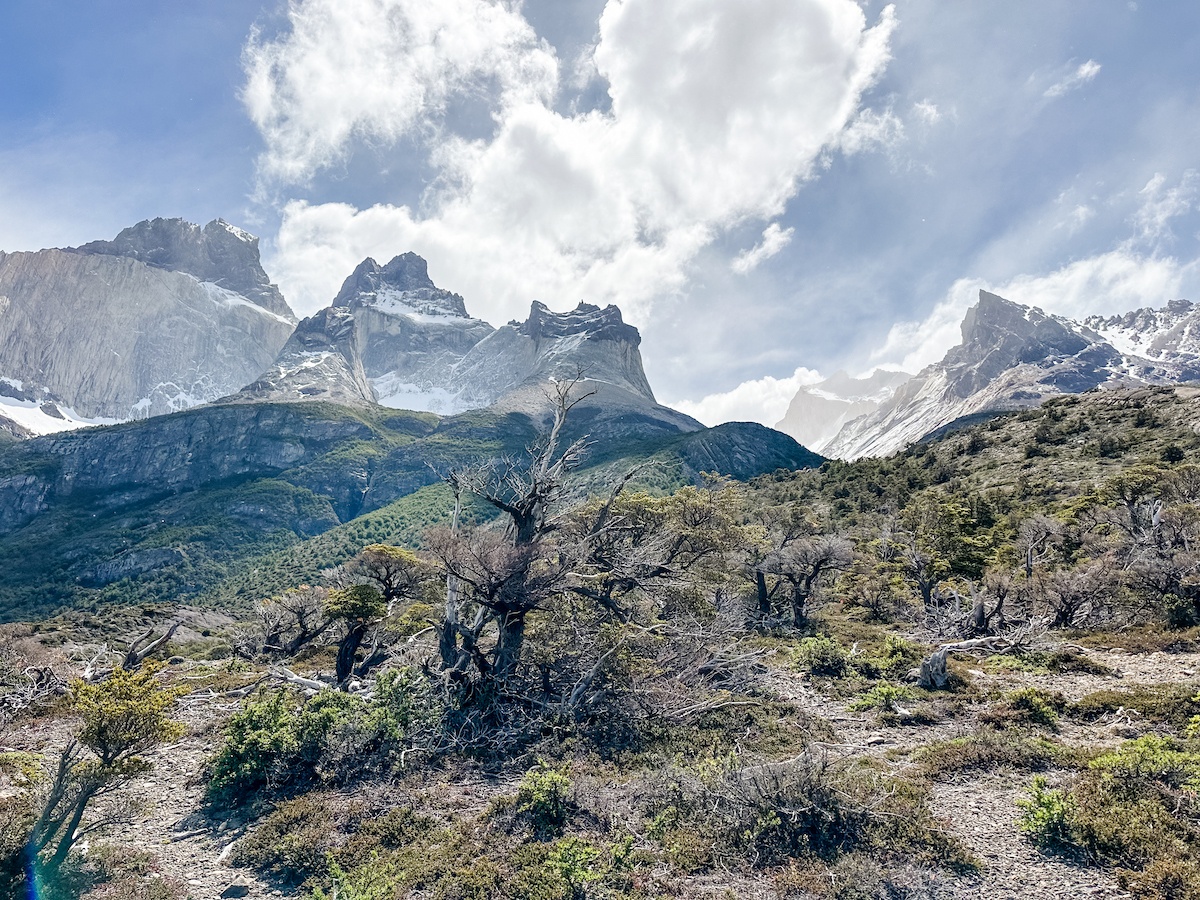
- While most people complete the W Circuit in four days straight, another option is to spend an extra day at Los Cuernos. Not only is it one of the nicest refugios with spectacular views, but that way you’ll be able to either spend the day resting up, or do the hike up to the French Valley and back to save several hours the day after by walking straight to Paine Grande.
- It’s not uncommon for refugios to ‘lose’ reservations, so bring a printed or screenshot confirmation of your booking with you on the Torres del Paine W Trek.
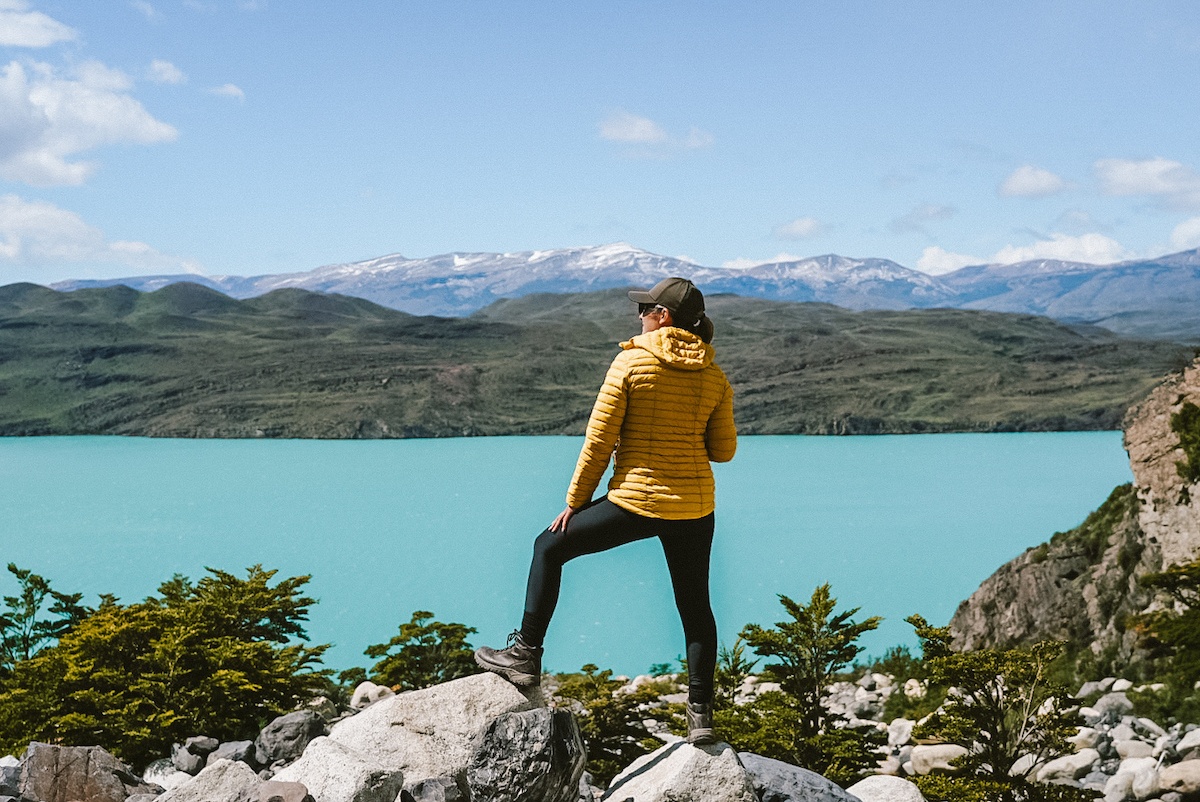
YOU MIGHT ALSO ENJOY:
- Patagonia itinerary: How to spend one week exploring southern Argentina
- 5 reasons to go backpacking in South America
- Epic hiking spots you need to add to your bucket list right now
SHARE THE PINSPIRATION! CLICK THE IMAGES BELOW TO PIN:
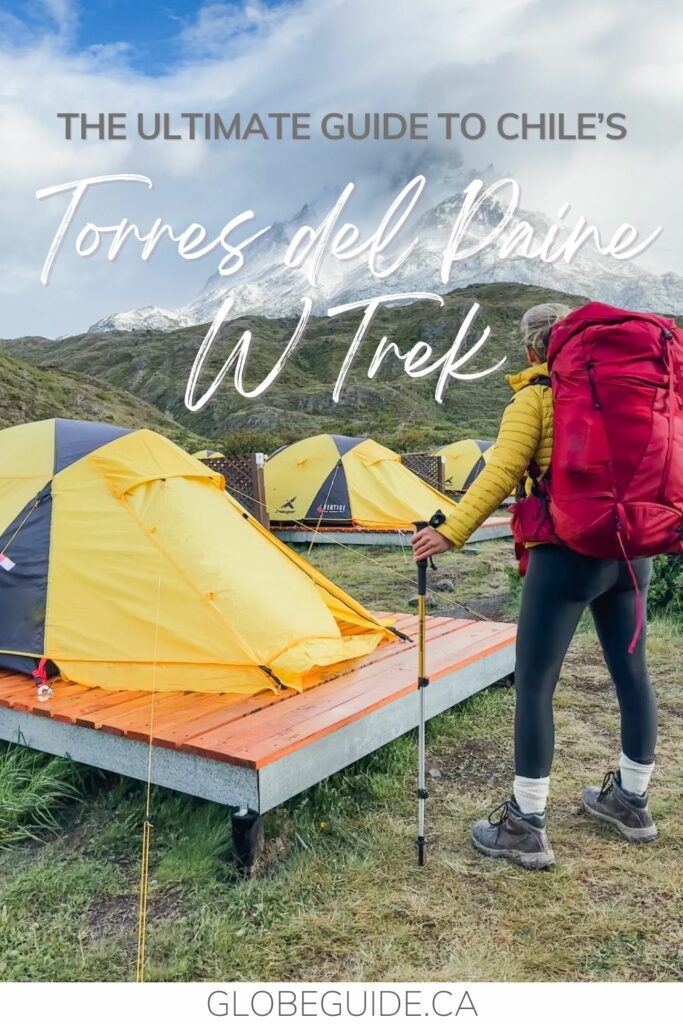
This post may contain affiliate links, which Globe Guide receives compensation for at no additional cost to you.
About The Author
Tamara Elliott
Leave a comment cancel reply.
Your email address will not be published. Required fields are marked *
Save my name, email, and website in this browser for the next time I comment.

The Ultimate Guide to Hiking the ‘W’ Trek in Torres del Paine Without A Tour
By Author Steph Dyson
Posted on Last updated: 12th December 2023
Hiking the W in Chilean Patagonia’s Torres del Paine National Park is one of the absolute highlights of a visit to Patagonia – I should know, I’ve done it twice!
Back in March 2016, I walked the Torres del Paine W trek as part of a tour around Patagonia and was so struck by the park that I returned in March 2017 to hike the Full O Circuit .
In September 2022, I returned on a third occasion, this time to explore the other attractions of Torres del Paine National Park beyond these two, multi-day hikes.
It’s fair to say that on all occasions I have fallen head over heels in love with this part of Chilean Patagonia.
The problem is, the first time I hiked the W trek in Patagonia, I did so as part of a guided tour. We were dropped off at the Pudeto ferry port on Lake Pehoé and from that point onwards barely even had to think for ourselves.
We hiked the W during the day led along the one path by our guides and arrived at night to pre-pitched tents and pre-paid food.
However, it didn’t take more than five minutes of being in the park to realize that a tour was utterly unnecessary and that trekking in Torres del Paine solo and self-guided is easy and will also save you a whole stash of money.
Click to navigate this article:
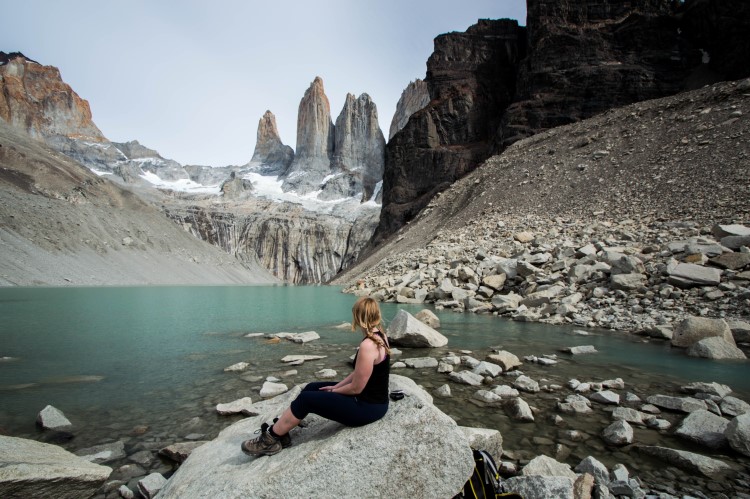
Know-before-you-go facts about the Torres del Paine W Trek
- How long is the W trek in Torres del Paine? It’s an 80-kilometer (50-mile) hike that most do over four or five days.
- When can you hike the W trek? The park is open year-round, however, for self-guided trekking, you can only hike between October and the end of April. If you want to hike during the winter months (May through September), you’ll need to arrange a guide. Our local partner, Chile Nativo, lead winter tours of the W trek and offer a 5% discount to Worldly Adventurer readers (use “Worldly Adventurer” in the referral discount box when you book!).
- Do you need to reserve camping spots/dormitory accommodation in advance of hiking the W? Yes, you must have reservations at each of the campgrounds or dormitories in which you plan to stay during the hike. You might be required to show your reservations when you enter the park, too.
- What about food? You can reserve full board at the campgrounds, which will include an evening meal, breakfast the day after your stay, and a packed lunch for you to take to the next campground. This typically needs to be booked in advance, although if you get to the campground early enough, you can sometimes do it on the day. Some campgrounds offer buffet dining (Grey and Paine Grande), so can be a good place to stock up on some snacks for the following day.
- Are reservations open for the campgrounds and dormitories along the W trek for the 2023/2024 season? Yes, reservations opened in July.
- How fit do you need to be to hike the W trek? While previous backpacking experience is not necessary, you do need a reasonable level of fitness to be able to climb up into the Frances Valley and up to the towers themselves. It’s helpful to have done a couple of practice walks, with a backpack weighing around 10 kilograms (22 pounds), in preparation for the trail.
- Do you need to book your park entrance ticket in advance? You must book online as they are no longer accept payments at the park entrance. Book your ticket online here . You need to download the QR code in Puerto Natales while you have internet (there is no signal in the park) and may need to show a copy of your passport to prove you do not live in Chile.
- How much does it cost to enter Torres del Paine National Park? The cost of entering the park varies according to how long you plan on staying. For up to three days in the national park, it costs $31,200 CLP ($34 USD) for adults and $16,000 CLP ($17 USD) for children aged 12 to 17. For over three days in the park, the cost is $44,500 CLP ($48 USD) for both adults and children.
- What is the altitude of Torres del Paine National Park? The highest point in the park is the John Gardner Pass at an altitude of 1,200 meters (3,900 feet) above sea level. However, only those trekking the O Circuit are required to reach this height; all of the W trek is at altitudes below this.
Firstly though, what actually is the W? The W is a four- or five-day hike in Chilean Patagonia’s Torres del Paine National Park. It’s named the W because it follows a W-shaped route and can be hiked either from west to east (my preferred route) or from east to west.
Along the way, you stay overnight in official campgrounds, which also have indoor dormitories, covered cooking areas for campers, and restaurants where you can eat pre-ordered meals.
Is the W worth it, though? It’s one of Patagonia’s easiest multi-day hikes and, while hiking for five days might not be at the top of everyone’s to-do list, the scenery in Torres del Paine National Park makes up for the hard work! Every day has spellbinding views: whether of Grey Glacier on day one, the French Valley on day two or three, or the eponymous towers on the final day of the hike.
You’ll finish tired but truly fulfilled by the experience – and proud of yourself for having completed it! Bear in mind that the W trek is a moderately challenging hike. If you’re able to walk up to 18 kilometers (11 miles) per day (and feel like you would be able to do that over multiple days), then you will find this hike perfectly doable.
That said, the hike up to the towers on the final day of the W (or the first, if you’re hiking east to west), is classed as a difficult hike due to the elevation gain of 900 meters (2,956 ft).
Bear in mind that you will be trekking with a backpack; the contents will depend on whether you’re carrying your tent and meals or planning on renting camping equipment and paying for meals at the campgrounds en route. Before hiking up the French Valley and up to the towers, you can also leave your backpacks at the rangers’ station or campsite, which means you won’t have to carry them up much elevation.
I highly recommend that, before heading to Patagonia, you go on a couple of hikes of around 18 kilometers (11 miles) with a backpack that will mimic the weight you’ll be carrying in the park – this will also help you to break in any hiking boots you might have bought for the trek and find out if they give you blisters!
How much does it cost to hike the W?
I’ve hiked the W twice: once as part of a tour and another time independently as part of hiking the O Circuit (which is a nine- or ten-day hike circumnavigating the national park and whose final five days are the W).
On my second visit to the national park, it became clear that I really didn’t need to hike the trails using a tour company. Not only is it expensive (it costs from $1,500 USD per person), but it’s unnecessary; all of the trails are clearly marked and busy with people and it’s easy enough to make camping reservations yourself.
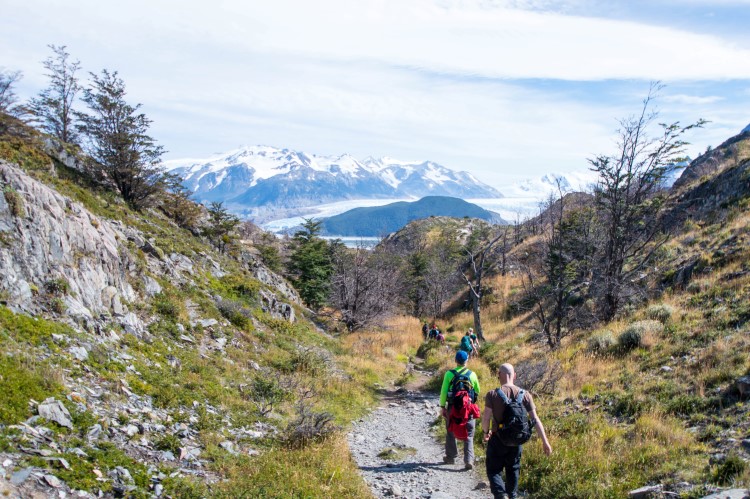
Hiking the W independently costs $157,000 CLP per person ($173 USD – check here for the most up-to-date conversion), plus the cost of food .
Camping and Transport cost breakdown*
- Return bus from Puerto Natales to Torres del Paine National Park: $13.323 CLP ($15 USD)
- Adult entrance fee into the park: $44,000 CLP ($49 USD)
- One-way ferry from Pudeto de Paine Grande Ranger Station: $30,000 CLP ($40 USD)
- Grey Campsite: $11,000 CLP (per person) ($12 USD)
- Paine Grande Campsite: $11,000 CLP (per person) ($12 USD)
- Francés Campsite: $31,000 CLP (per person) ($35 USD)**
- El Chileno Campsite: $31,000 CLP (per person) ($35 USD)***
* these figures are all updated for the 2023/2024 season.
**based on two people sharing a tent
***Torres Ranger Station (the free camping closest to the towers) is closed for the foreseeable future.
Food breakdown
- When we hiked the Full Circuit, we paid $68,620 CLP ($95 USD) between four people for all of our food. That’s $17,155 CLP ($20,5 USD) per person. No kidding.
- So for your food budget, expect to spend no more than $10,000 CLP ($12 USD) (read this full outline of exactly what we took with us in terms of food when we walked the Circuit)
If you want to save time, the website Torres Hike can show you the availability of accommodation and allows you to book it directly through them , rather than having to go via the Vertice Patagonia and Las Torres (previously known as Fantastico Sur) websites. All you need to do is plug in your dates and it’ll show you which campgrounds and refugios are available – saving you LOTS of time. You can then book directly with them, rather than having to try and book through the other websites!
How do you make campsite and refugio bookings for Torres del Paine?
The system for making refugio and camping reservations has changed dramatically over the past couple of years and a lot of the information you find online about the subject is out of date.
I also put together this epic, 5,000-word post about securing camping reservations in Torres del Paine that literally walks you through the process. However, I highly recommend just using Torres Hike . Yes, they charge you a small fee, but it honestly saves you so much time.
The reason it’s so challenging to make reservations independently is because there are two different companies who offer campgrounds and dorms in the park and you will have to reserve some campgrounds with one on their website and some with another on their website; trust me, it’s a painful process. Save yourself the stress and hassle of doing this by using Torres Hike instead.
Reservations are now open for the 2023/2024 season. If you’re struggling to find spots for the coming season, you should also read my article about alternative ways to hike the W if you can’t get camping reservations .
You can also check out this ultimate guide to Torres del Paine National Park , covering everything from the best time to visit, to where to stay and what to do beyond the W trek.
If you’re completely baffled by the process and just want someone else to deal with it, you can book with my partner in the region, Chile Nativo , who organise, guided, self-guided and fast-track (three-day) W treks. They give a 5% discount to Worldly Adventurer readers (use “Worldly Adventurer” in the referral discount box when you book!).
What equipment do you need to hike the W without a tour?
To pay as little as possible trekking Torres del Paine solo, it does require that you have the following pieces of equipment:
- A tent: I strongly recommend the lightweight Big Agnes Copper Spur HV UL2 tent ( REI | Backcountry | Amazon ), the North Face Stormbreak 2 (buy it on REI | Amazon ), or, for more room, the North Face Stormbreak 3 (buy it on ( REI ).
- A sleeping bag: I recommend the Nemo Disco 15 for women (buy it on REI ) and for men (buy it on REI ).
- A sleeping pad: Get a cheap foam pad ( REI | Backcountry | Amazon ) or a more comfortable Therm-a-rest Prolite (buy it on REI | Backcountry | Amazon ).
- A headlamp : Useful for midnight toilet visits and the hike up to the towers (buy one on REI | Black Diamond | Backcountry ).
- A cooking stove and gas: The affordable MSR PocketRocket 2 (buy it on REI | Backcountry | Amazon ) is great value for those on more of a budget, and is super lightweight.
- Cooking pots: I recommend the MSR pots set (buy them on Backcountry | Amazon ) as they’re good quality and food will stick less, which will make them easier to clean.
- Plates, a mug, and cutlery : A collapsible bowl is a great space saver (check out Sea to Summit on REI | Backcountry | Amazon ); I recommend a reasonably cheap, plastic mug (buy it on REI | Backcountry | Amazon ) and for cutlery, a multipurpose spork is a good choice (check them out on REI | Backcountry | Amazon ).
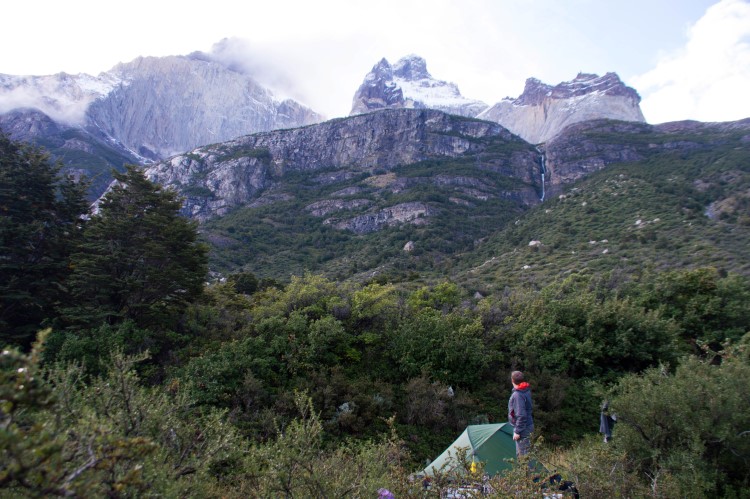
I’ve detailed exactly the items that I packed for the O Circuit in Torres del Paine (and which are still relevant to the W trek) and also what I pack in my rucksack on a trip to Patagonia in this packing checklist . Both have a free packing checklist download, too.
I recommend you take a look if you’re thinking of investing in camping equipment before you head over to Patagonia (something I would strongly advise if you plan on doing any other hikes or wild camping or if you’re looking at exploring the Carretera Austral ).
Planning Your Trip to Patagonia?
Save time, stress & money with a customized travel itinerary planned for you by a Patagonia expert
What previous clients have said:
Steph’s help laying out an itinerary for Chile was huge toward us having a great trip. She listened to our interests and compiled a framework that we could follow to make our plans. She included many practical tips as well as numerous options. She truly saved us many, many hours of research.
If you’re already traveling around Patagonia, what can you do to get your hands on this camping equipment for Torres del Paine?
You have three options:

Buy equipment in Punta Arenas or Puerto Natales
There is a wide range of hiking and camping equipment shops in these two towns. Punta Arenas is a tax-free zone so prices here are cheaper than you will find in Puerto Natales, although Calle Manuel Bulnes in the latter has some gear shops.
I actually found a pair of waterproof trousers for only $15,000 CLP ($18 USD) in one of the shops there, which is a lot cheaper than I thought they would be.
If you’re looking to buy equipment for camping and hiking in Torres del Paine National Park, you should be able to find everything that you need in these shops, but you will pay an elevated price for good-quality gear.
Estimated additional cost: $360,000 CLP+ ($400 USD+) per person
Rent equipment from Puerto Natales
Your second option is to rent all of your camping and cooking equipment from Puerto Natales. Yaghan House (O’Higgins 584; contact them here to reserve; they also have a 12pm daily talk about the park) and Lili Patagonico’s (Arturo Prat 479; you can book online here ) have cheap, good-quality rental gear. Rental Natales (you can book online) has more stock but is very expensive.
Remember to check the equipment thoroughly before committing as it does get a lot of wear and tear on the trail and you want something without holes and with zips that close to keep you warm and dry!
Estimated additional cost: $147,000 CLP ($162 USD) per person (based on two sharing) for five days’ rental
Rent equipment at each campsite in Torres del Paine National Park
Your final option is by far the most expensive. Each of the main camping grounds in Torres del Paine rents out tents, sleeping bags, and sleeping mats – but at a very high cost.
For example, in Grey campground, you can hire a two-man tent for $29,000 CLP ($32 USD), a sleeping bag for $21,000 CLP ($23 USD), and a sleeping mat for $8,000 CLP ($9 USD), bringing up your overnight cost (including the cost of the camping site) to $53,000 CLP ($58 USD) per person per night (based on two sharing).
Bear in mind, this doesn’t include the cost of hiring cooking equipment (which you can’t do at the campsites), so you will also need to pay for meals at each – an additional cost of between $55,000 CLP ($61 USD) and $80,000 CLP ($88 USD).
Estimated additional cost: $232,000 CLP ($256 USD) per person for equipment and $256,000 CLP ($282 USD) per person for full board for five days hiking the W circuit (based on two sharing).
How do you get from Torres del Paine National Park to Puerto Natales ?
It’s easy enough to get to Torres del Paine National Park with public transport.
Four companies travel from Puerto Natales to Torres del Paine each morning and all cost around $22,000 CLP ($25 USD) for a return ticket (which can be used on any of the company’s buses back from the park).
You can buy tickets online for Bus Sur (who have lots of departures); other companies do run this route, however you need to buy tickets from their offices, which are inside the Terminal Rodoviario (Av. España 1455) in Puerto Natales.
If there are a few of you, consider negotiating a group price like we did, which got us a few thousand pesos off per ticket.
It’s advisable to book your bus ticket at least a week in advance when visiting the park in high season (December through February).
Timetables for buses from Puerto Natales to Torres del Paine (east to south: Laguna Amarga, Pudeto and Administración)*
Conventionally, buses have departed from Puerto Natales and entered the park via the northeastern entrance at Laguna Amarga (for the minibus to the eastern starting point for the W), before continuing to Pudeto (for the catamaran to the western starting point for the W) and finally to Administración (not a destination along the W trek).
These now continue along to Hotel Lago Grey and stop at Camping Pehoé en route, too.
These bus timetables are below and can be booked online in advance via Bus Sur’s website:
Pre-pandemic, the following companies also offered services. However, their websites are no longer active and I can’t find them on any local booking sites.
That doesn’t mean they don’t have buses, however; if you can’t get a reservation with Bus Sur then it’s still worth going to the bus terminal in Puerto Natales as some will likely still be in operation and with similar departure times:
- Transport Maria José (tel. 61/2410 951)
- Buses Gómez (tel. 61/2415700)
- JB Buses Patagonia (tel. 61/2410 242)
- Buses Juan Ojeda (tel. 9/8943 7808)
*Service available November through April
Timetables for buses from Torres del Paine to Puerto Natales (Administración, Pudeto, Laguna Amarga)*
The following timetables are when buses can return you to Puerto Natales from the four different stops in the park. They can also be booked online and in advance via Bus Sur’s website.
Note that you have to return with the same bus company you entered the park with – you won’t be allowed on a different company’s buses. You don’t have to book a particular bus time; you will be able to turn up and get onto whichever bus you choose.
As above, there should be other companies offering buses to and from Puerto Natales into the park; visit the Terminal Rodovario in Puerto Natales to find out if you can’t make a reservation with Bus Sur.
Where do you buy your Torres del Paine entrance ticket?
The cost of entering the park varies according to how long you plan on staying. For up to three days in the park, it costs $31,200 CLP ($34 USD) for adults and $16,000 CLP ($17 USD) for children aged 12 to 17. For over three days in the park, the cost is $44,500 CLP ($48 USD) for both adults and children.
It’s no longer possible to buy your ticket at the Laguna Amarga entrance to the national park (the first stop on the bus if entering via that entrance) or at the Administración entrance (if entering via that entrance).
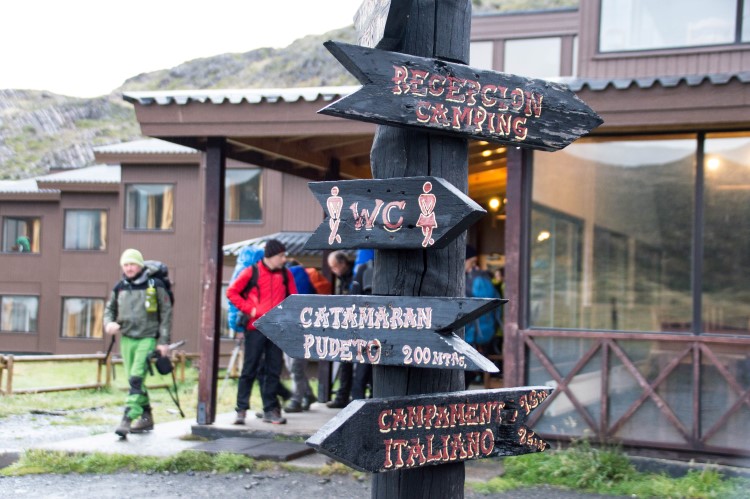
You must buy it in advance online here . You must download the QR code to your phone before you enter the park (as you won’t have signal when you get there!) and bring your passport to show that you’re not a Chilean resident.
Torres del Paine W trek itineraries
Hiking in Torres del Paine National Park is significantly cheaper if you go self-guided.
There is also absolutely no chance that you’ll get lost. Believe me, the W trek is now so busy that (unfortunately) you see people all the time.
If you want to trek Torres del Paine solo, you can either hike from west to east (my preference, as I’ll go into below) or east to west.
When you enter the park and pay your fee, you will be provided with a Torres del Paine W trek map to be used when you’re walking.
Unfortunately, the map that you get from CONAF doesn’t include distances. I would strongly recommend you download Maps.me, a free app that has all the trails marked and you can use it to work out distances if required.
Itinerary one: W trek in five days with sunrise at Mirador Las Torres (west to east route)
Why hike this route:
- This trail builds up to the most exciting part of the trek, the Mirador Las Torres viewpoint on the final day.
- It also starts with a short first day, giving you time to get into your stride.
Want to know how to book the campsites mentioned in this itinerary? Head over to this comprehensive article about booking Torres del Paine camping or hostel accommodation .
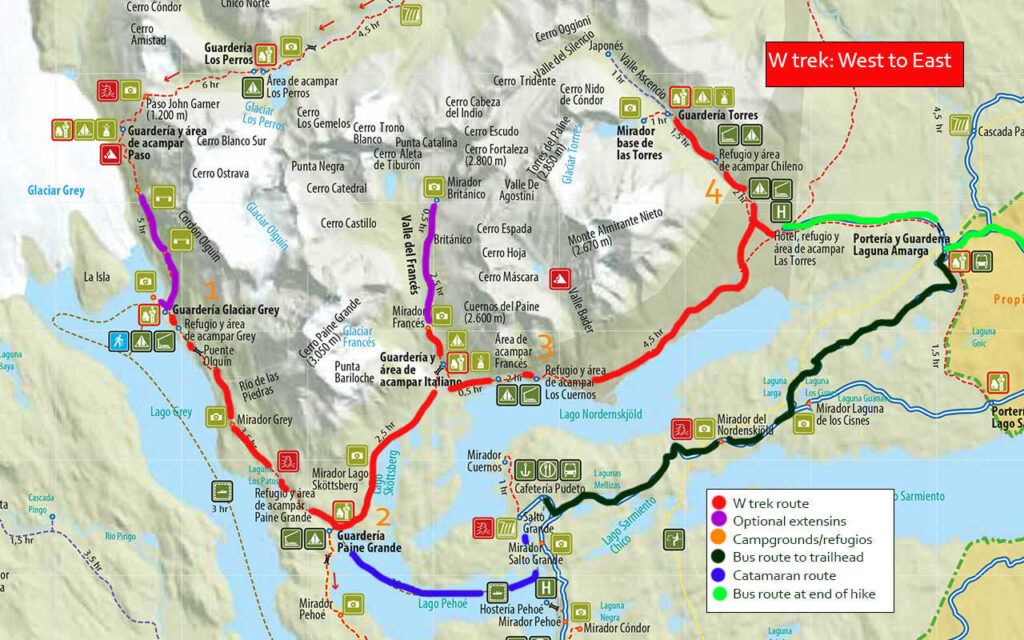
Day One: Puerto Natales to Grey
- Distance: 11 kilometers (6.8 miles)
- Duration: 3-4 hours hiking
6:50am Take a bus from Puerto Natales to the Pudeto (the catamaran ferry stop). You will stop at the park entrance when you first get into Torres del Paine to show your entrance ticket.
You must have bought this in advance online here and downloaded the QR code to your phone (there isn’t internet cell service at Laguna Amarga!).
9:50am Arrive at Pudeto. Queue up for the catamaran ferry across the lake.
10:30am Take the ferry across to Paine Grande*. This service is operated by Hielos Patagonicos ($25,000 ($30 USD) single, cash only). Tickets cannot be reserved in advance; you buy them at the ferry port.
Ferry schedules do sometimes change; you can check up-to-date ones here .
11:40am Arrive at Paine Grande and trek to Grey. The trail starts to go uphill but soon levels off and has great views of Lago Grey to keep your spirits up!
16:00pm The hike from Paine Grande takes between three and four hours so expect to arrive late afternoon at Grey to pitch your tent, meet some other hikers, and cook dinner.
Day Two: Grey to Paine Grande
- Distance: 18 kilometers (11 miles)
- Duration: 6-7 hours hiking
8:00am Wake up and have breakfast.
9:00am Leave your stuff at the campsite and return a few hours later to pack everything up. From the campsite, an additional one kilometre north through the forest brings you go two viewpoints lying over a kilometre from the glacier’s snout. From here, look out for enormous chunks of ice in the water.
Continue a further 2.5 kilometres (around a one-hour hike) along the path along the edge of the glacier to reach a series of two rope bridges hanging over ravines.
From here you get the best views of the glacier and, if you’re lucky and it’s a clear day, the Southern Patagonian Ice Field beyond.
Return to Grey along the same path and back to Paine Grande.
16:00pm You’ll arrive at Paine Grande at around 4pm, which is where you’ll spend the night. The facilities are great here, with a covered dining area for campers.
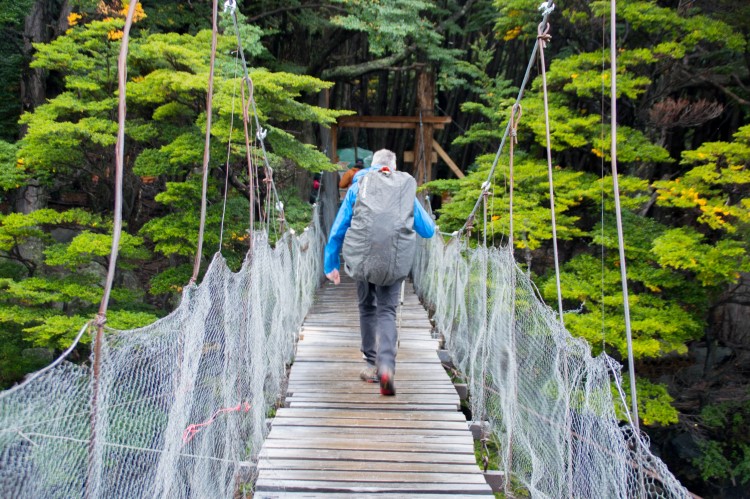
Day Three: Paine Grande to Francés
- Distance: 11.5 kilometers (6.8 miles) plus 9 kilometers (5.6 miles) for the extension to Mirador Británico)
- Duration: 4 hours hiking (7.5 hours with extension to Mirador Británico)
8:00am Get up, have breakfast and pack up your tent.
9:00am Today begins with a flattish trek around Lake Nordernskjold to Guardería Italiano. You can leave your bags here with the ranger before hiking up into the Francés Valley.
Note that there’s a new trail that begins about one km (15 mins) after you leave Paine Grande. It’s a little longer – 9 km (5.6 miles) rather than 7 km (4.3 miles) – and so takes around 30 minutes longer, but it has fewer hikers on it and is really pretty.
11:00am The hike up the Francés Valley may be long or painfully short – all depending on the weather. Both times I’ve walked Torres del Paine W hike I’ve experienced dreadful weather in the Francés Valley.
This part of the hike marks the central section of the W and it’s all uphill. After an hour’s steep gradient up a rocky, slippery trail to Mirador Francés, look for Glaciar Francés as it clings to the mountainside in the west.
If you’re feeling energetic, and the weather’s playing fair, you can continue climbing to Mirador Británico (an additional 3.5 km (2 miles) each way; around three hours’ return), where you’ll view a ring of toothy granite peaks, including the park’s second most famous landmark, the three-horned Cuernos del Paine.
It’s one of the park’s most stunning viewpoints—when the sky is clear. You may even see an endangered Southern Andean huemul (a type of deer) around here.
Luckily, the hike back is downhill to return to Campamento Italiano, where you pick up your rucksack and hike the 30 minutes to reach Francés.
13:00pm-16:00pm Arrive at Francés*, pitch up and enjoy the views across the lake.
*If there is no availability at Francés when you go to make your refugio or campsite reservations , you can instead book to stay at Los Cuernos, which is a further 3.5 kilometers (one hour) from Francés.
Day Four: Francés to El Chileno*
- Distance: 17 kilometers (10.5 miles)
- Duration: 4-5 hours hiking
9:00am Leave the campsite and begin the trek to El Chileno, situated about two hours from the bottom of the towers.
This trek meanders alongside the lake, gaining and losing altitude as it goes, until you reach the start of the valley where it becomes all uphill. The views are incredible but if it’s sunny, it will be hot!
16:00pm Arrive at El Chileno* and pitch your tent. Get everything organised for the morning as you’ll be leaving early. Check with the staff what time sunrise will be the next morning.
*For the 2023-2024 season, and for the foreseeable future, Torres Ranger Station is not open to the public. It’s no longer as easy to get to the towers for dawn as the distance is now around four kilometres, rather than one kilometre; however, it is still possible to do it.
If you can’t get a pitch at Chileno, it is possible to hike from Torres Central/Norte ($25 USD camping pitch per person). Although you’re not officially supposed to hike from here up to the towers, you can: leave four hours ahead of sunrise. It’s an additional one-hour 45 minutes if starting from Torres Central/Norte to reach the towers.
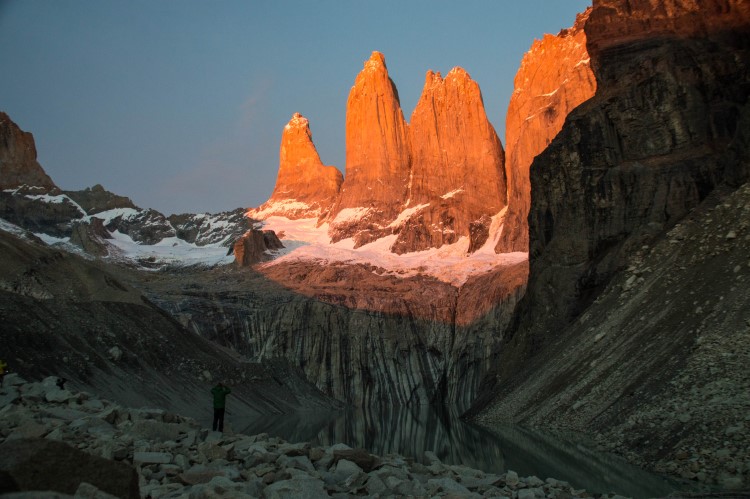
Day Five: El Chileno* to Laguna Amarga and Puerto Natales
- Distance: 13 kilometers (8 miles) plus 8 kilometers (5 miles) for the hike from the Centro de Bienvenida to Laguna Amarga)
- Duration: 6 hours hiking (add an extra 1.5-2 hours for the hike to Laguna Amarga)
4:30am Wake up and take a small bag (including warm clothes and a snack) to see the torres at dawn. Don’t forget your torch as the route is over rocks and can be treacherous.
4:45am Start hiking up to the torres . For us at the very start of March, dawn was at about 7:15am.
8:00am Leave the torres and return to the campsite. Pack up, have breakfast start the long walk down.
12.30pm When you get to Las Torres Hotel car park, there is a shop selling ice creams. To get the shuttle minibus to take you to Laguna Amarga, you need to hike one kilometre down the road towards Torres Central/Norte to reach the Centro de Bienvenida /Welcome Centre.
Shuttles ($4,000 CLP ($6 USD) – you must pay in cash at the shuttle) leave throughout the day to take you to Laguna Amarga. Departures leave the Welcome Centre at 8am, 2pm, 4pm and 7pm daily , and take about 30 mins.
If you can face the walk, it’s about another one and a half hours to the Laguna Amarga Ranger Station where buses are waiting to pick you up.
Hiking there, you can get good views of the towers as they rise out of the Cordillera Paine if the weather is clear.
14:30pm Take the bus from Laguna Amarga back to Puerto Natales.
17:00pm Arrive in Puerto Natales bus station and go and enjoy a pint at Cerveza Baguales on the Plaza de Armas to celebrate!
If time allows, consider spending a night in Puerto Natales to explore all the town has to offer before your onward journey. Our guide to the best hotels in Puerto Natales caters for all budgets, styles and preferences.
*If you can’t get a pitch at Chileno, it is possible to hike from Torres Central/Norte ($21 USD camping pitch per person). Although you’re not officially supposed to hike from here up to the towers, you can: leave four hours ahead of sunrise. It’s an additional one-hour 45 minutes if starting from Torres Central/Norte to reach the towers.
Make sure you bring a headtorch for climbing in the dark (it will get lighter as you reach the more difficult stretch of hiking just below the towers), plus warm clothing (even including a sleeping bag) to use at the top and keep you cozy as you enjoy the sunrise.
Itinerary two: Torres del Paine W trek in four days with sunrise at Mirador Las Torres (west to east route)
Why hike this route?
- It’s a good option if you don’t have much time
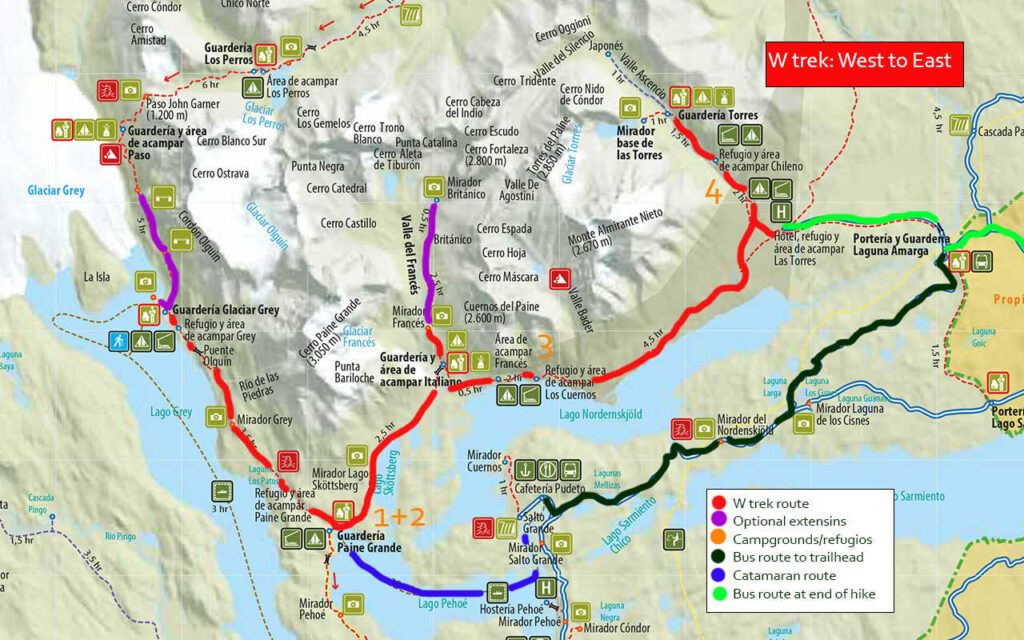
Day Zero – Puerto Natales to Paine Grande
- Distance: nil
- Duration: nil
2.30pm Catch the Bus Sur bus from Puerto Natales.
You will stop at the park entrance at Laguna Amarga when you first get into Torres del Paine to pay your entrance fee.
You must have paid for your ticket in advance online here AND downloaded the QR code; you will not find cell service or WIFI at the entrance.
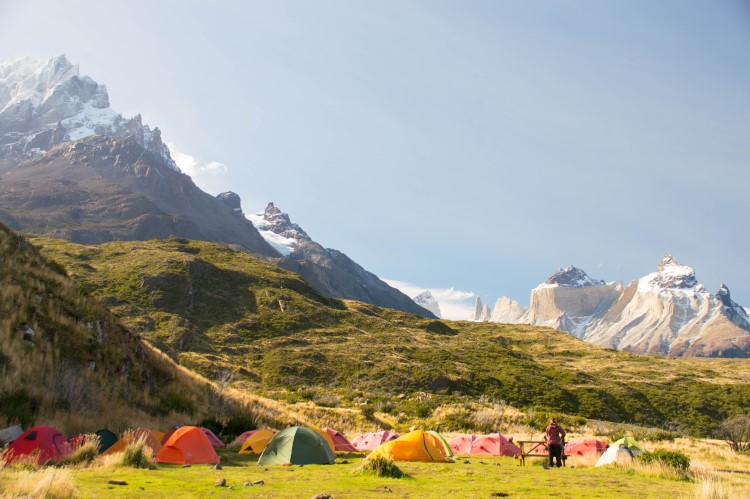
5.15pm Arrive at Pudeto take the ferry across to Paine Grande at 6pm. This service is operated by Hielos Patagonicos ($25,000 ($30 USD) single, cash only).
Tickets cannot be reserved in advance; you buy them at the ferry port. Ferry schedules and prices do sometimes change; you can check up-to-date ones here and the 9am ferry only runs November through the end of March.
6.30pm Pitch up at Paine Grande, have some dinner and then have an early night in preparation for a long day’s hiking tomorrow.
Day One – Paine Grande to Paine Grande
- Distance: 22 kilometers (14 miles) plus 7 kilometers (4.3 miles) if you hike to the last viewpoint)
- Duration: 7-9 hours hiking
7:00am Get up, have breakfast, and pack up your tent.
08:00am Take the trail towards Grey; it starts uphill but soon levels off and has great views of Lago Grey to keep your spirits up!
If you’re fit, you can hike an additional one kilometre north through the forest brings you go two viewpoints lying over a kilometre from the glacier’s snout. From here, look out for enormous chunks of ice in the water.
Turn back and return the way you came, past Grey and then back to Paine Grande.
17:00pm Arrive late afternoon back at Paine Grande to meet some other hikers and cook dinner.
Day Two – Paine Grande to Frances
9:00am Hike to the ranger station, Guardaria Italiano (around two hours), where you leave your rucksack with the ranger. You’ll pick it up on your way back down from the Francés Valley.
The hike up the Francés Valley may be long or painfully short – all depending on the weather. Both times I’ve walked Torres del Paine W hike I’ve experienced dreadful weather in the Francés Valley.
If you’re feeling energetic, and the weather’s playing fair, you can continue climbing to Mirador Británico (an additional 3.5 km each way; around three hours’ return), where you’ll view a ring of toothy granite peaks, including the park’s second most famous landmark, the three-horned Cuernos del Paine.
Luckily, the hike back is downhill to return to Italiano, where you pick up your rucksack and hike the 30 minutes to reach Francés.
*If there is no availability at Francés when you go to make your refugio or campsite reservations , you can instead book to stay at Los Cuernos, which is a further 3.5 kilometres (one hour) from Francés.
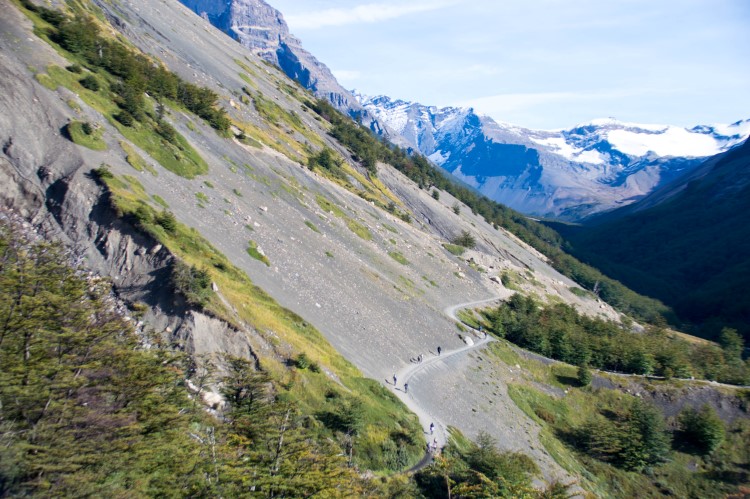
Day Three: Francés to El Chileno*
9:00am Leave the campsite and begin the trek to El Chileno, situated about two hours from the bottom of the towers. This trek meanders alongside the lake, gaining and losing altitude as it goes, until you reach the start of the valley where it becomes all uphill.
The views are incredible but if it’s sunny, it will be hot!
*For the 2023-2024 season and for the foreseeable future, Campamento Torres, the campground just below the towers, is not open to the public. It’s no longer as easy to get to the towers for dawn as the distance is now around four kilometres, rather than one kilometre; however, it is still possible to do it.
Day Four: El Chileno* to Laguna Amarga and Puerto Natales
Shuttles ($4,000 CLP ($6 USD) – you must pay with cash in the shuttle) leave throughout the day to take you to Laguna Amarga. Departures are at 8am, 2pm, 4pm, 7pm and takes about 30 minutes.
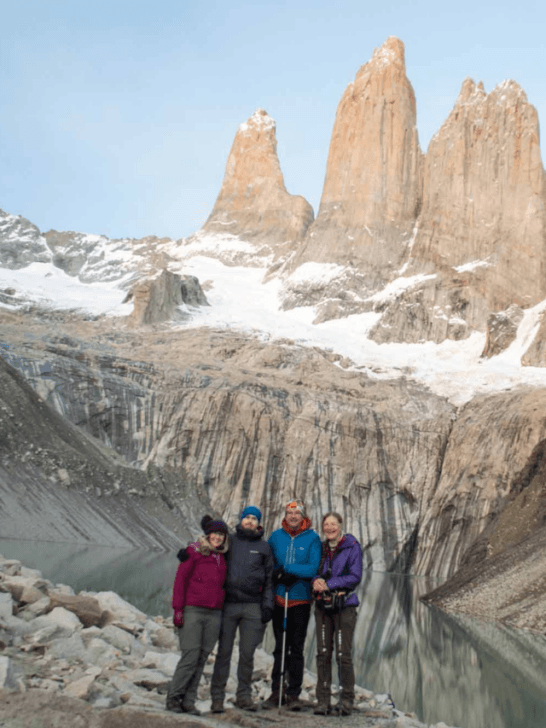
*If you can’t get a pitch at El Chileno, it is possible to hike from Torres Central/Norte ($25 USD camping pitch per person). Although you’re not officially supposed to hike from here up to the towers, you can: leave four hours ahead of sunrise.
Make sure you bring a headtorch for climbing in the dark (it will get lighter as you reach the more difficult stretch of hiking just below the towers), plus warm clothing (even including a sleeping bag) to use at the top and keep you cosy as you enjoy the sunrise.
Itinerary three: Torres del Paine W hike in five days (east to west route)
Why hike this route:
- Not only do you get to complete the W, it gives you time for a bonus extra hike to the Los Cuernos or Salto Grande viewpoints.
Want to know how to book the campsites mentioned in this itinerary? Head over to this comprehensive article about booking Torres del Paine camping or hostel accommodation .
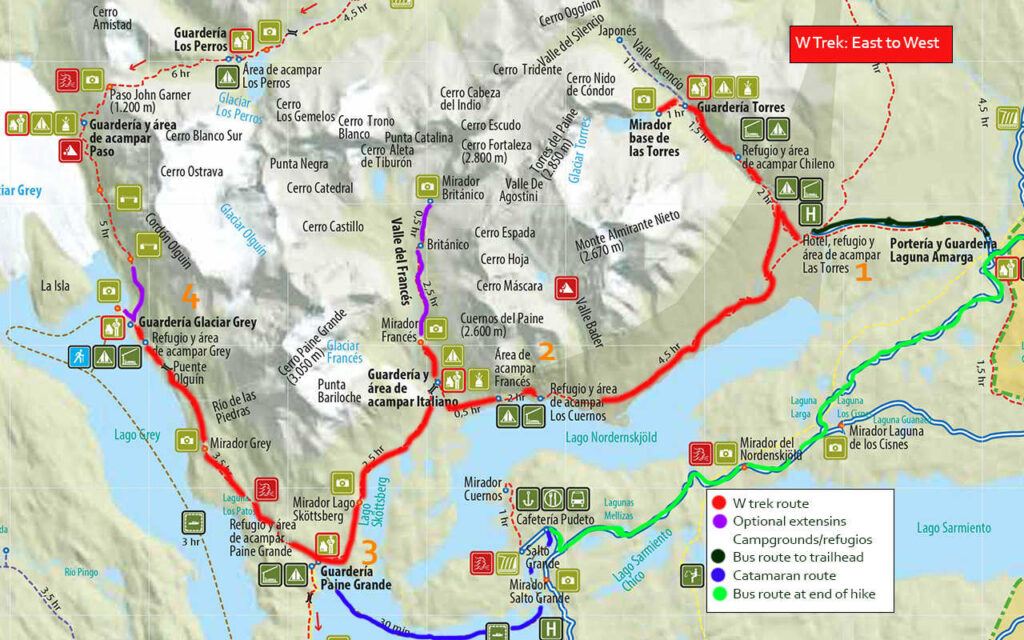
Day One: Puerto Natales to Mirador Las Torres & Torres Central/Norte
- Distance: 18.4 kilometers (11.4 miles)
- Duration: 6-7 hours hiking
6:45am Take a bus from Puerto Natales to Laguna Amarga. You can book tickets online with Bus Sur or go to the bus station in Puerto Natales the day before you start hiking and book with them or one of the other companies there.
8:45am Arrive at Laguna Amarga. Show your entrance ticket at the ranger’s station.
9:00am To get to the start of the W, you need to take a shuttle bus ($4,000 CLP ($6 USD) – you must pay in cash at the shuttle) to the Centro de Bienvenida (Welcome Centre).
Departures theoretically leave from Laguna Amarga at 9am, 3pm, 5pm and 8pm daily , and take about 30 mins. However, Las Torres (who run the shuttle service) have assured me that the shuttle bus awaits the arrival of the bus from Puerto Natales and will take all passengers that are waiting to board – sending for a second shuttle if there are more passengers than seats.
9.30am You’ll be staying overnight at the Torres Central/Norte campground, so check in and leave your big bags and take warm layers, food, and plenty of water for the hike up to the towers.
Start hiking up to the torres . It’s all uphill and it can be quite steep at points, but it’s worth the effort! All in all, you gain around 800m (2,620 feet).
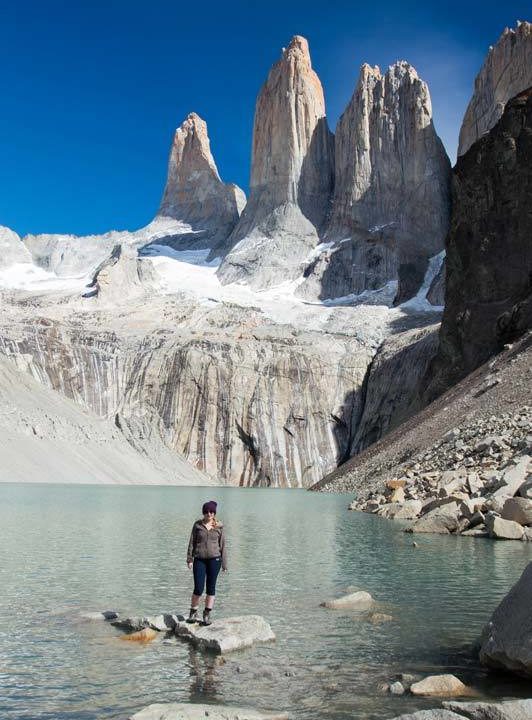
Take your time, drink plenty of water, and relax when you get to the top.
13:30pm Arrive at Mirador Las Torres and enjoy the views.
15.00pm Start hiking back to the campsite; you’re trekking back the way you came.
17.00pm Pitch your tent, have dinner, and relax!
Day Two: Torres Central/Norte to Francés
- Distance: 14.5 kilometers (9 miles)
- Duration: 5.5 hours hiking
9:00am Get up, have breakfast and pack up your tent.
10:00am You leave Torres Central heading west and reach Lago Nordernskjold. The trail meanders alongside the lake, gaining and losing altitude as it goes. The views are incredible but if it’s sunny, it will be hot!
15:30pm Reach Francés campground, where you’ll stay tonight. Pitch up and enjoy views across the lake. Bear in mind that check-in at Francés doesn’t start until 2.30pm and hot showers aren’t available until 5pm, so take your time on the hike.
Day Three: Francés to Mirador Británico & Paine Grande
- Distance: 14 kilometers (8.6 miles) from Francés to Mirador Británico and 7 kilometers (4.3 miles) from Guardería Italiano to Paine Grande
- Duration: 5.5 hours hiking from Francés to Mirador Británico and 2.5 hours from Guardería Italiano to Paine Grande
9:00am If the weather is good, today is going to be a long day as you climb up into the Francés Valley. Both times I’ve walked Torres del Paine W hike I’ve experienced dreadful weather in the Francés Valley.
From Francés, head west along the path beside the lake to reach Guardería Italiano, a rangers’ station and former (now defunct) campground. Here, you can drop your big rucksacks; just take warm clothing and food for the hike up to the Mirador Británico* (British Viewpoint). This part of the hike marks the central section of the W and it’s all uphill. After an hour’s steep gradient up a rocky, slippery trail to Mirador Francés, look for Glaciar Francés as it clings to the mountainside in the west.
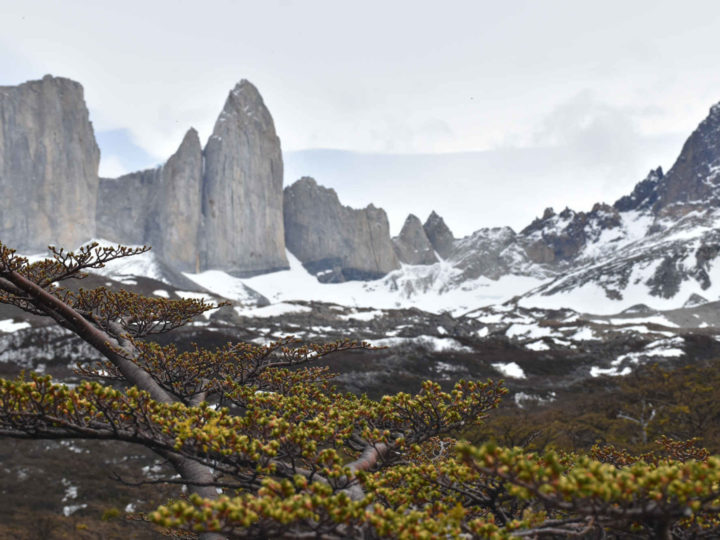
Luckily, the hike back is downhill to return to Guardería Italiano. Pick up your bags and take the new trail that begins just after the rangers’ station; take the lefthand fork that follows closer along the lake. It’s a little longer – 9 kilometers (5.6 miles) rather than 7 kilometers (4.3 miles) – and so takes around 30 minutes longer, but it has fewer hikers on it and is really pretty.
18:30pm Arrive at Paine Grande, pitch your tent and enjoy a hot shower!
*You’re only allowed to start hiking up to the viewpoint until midday, so don’t delay getting to the rangers’ station – although this rule isn’t always enforced!
Day Four: Paine Grande to Grey & Puerto Natales
- Distance: 11 kilometers (6.8 miles) plus six kilometers (3.7 miles) to reach rope bridges
- Duration: 4 hours hiking plus 1.5 hours to reach rope bridges
10:00am Take the trail heading north to Grey. It starts by going uphill but soon levels off and has great views of Lago Grey to keep your spirits up! It takes between three and four hours.
14:00pm Arrive at Grey, where you can leave your big bags. From the campsite, an additional one kilometre north through the forest brings you to two viewpoints lying over a kilometre from the glacier’s snout. From here, look out for enormous chunks of ice in the water.
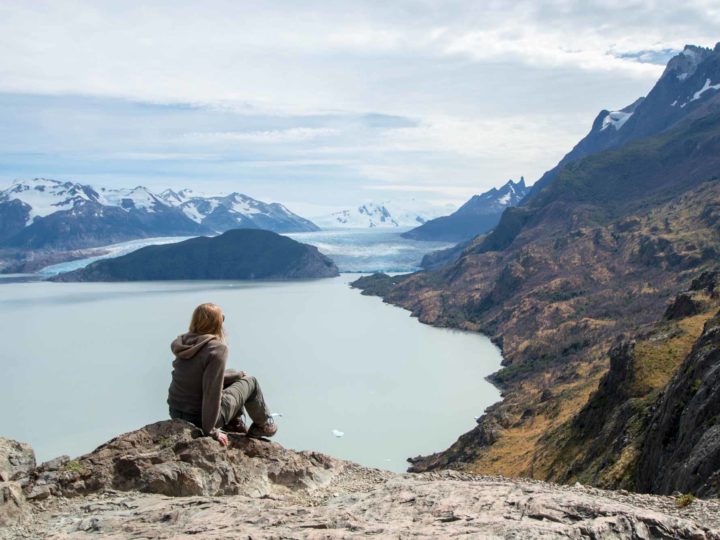
From here you get the best views of the glacier and, if you’re lucky and it’s a clear day, the Southern Patagonian Ice Field beyond. Return back to Grey.
16:00pm Arrive at Grey, pitch up and relax – you’ve almost finished the hike!
Day Five: Grey to Paine Grande and Puerto Natales
- Distance: 11 kilometers (6.8 miles) plus 2.3 kilometers (1.4 miles) to the Cuernos Viewpoint
- Duration: 4 hours hiking
7:00am Get up, pack up your tent, and have breakfast. Return to Paine Grande along the same path.
10:30am Join the queue for the ferry to Pudeto.
11:00am Take the ferry to Pudeto. This service is operated by Hielos Patagonicos ($25,000 ($30 USD) single, cash only). Tickets cannot be reserved in advance; you buy them at the ferry port.
11:30am Arrive at Pudeto. From here, you can either have lunch in the tiny cafeteria at the ferry dock or you can hike from Pudeto to the Cuernos Viewpoint, a 2.3-kilometer (1.4-mile) one-way hike from the ferry dock; it should take you around an hour each way and grants you incredible views west and east along the Paine Massif range.
A shorter option is the 600-meter (0.3-mile) trail to the Salto Grande Waterfall, which has stunning views of Los Cuernos behind it.,
2:30pm Take the bus from Pudeto back to Puerto Natales. You should arrive around 5.05pm.
Itinerary four: W trek in five days with sunrise at Mirador Las Torres (east to west route)
- You get to see the sunrise at Mirador Las Torres and hiking to it on your first day means your legs won’t be as tired.
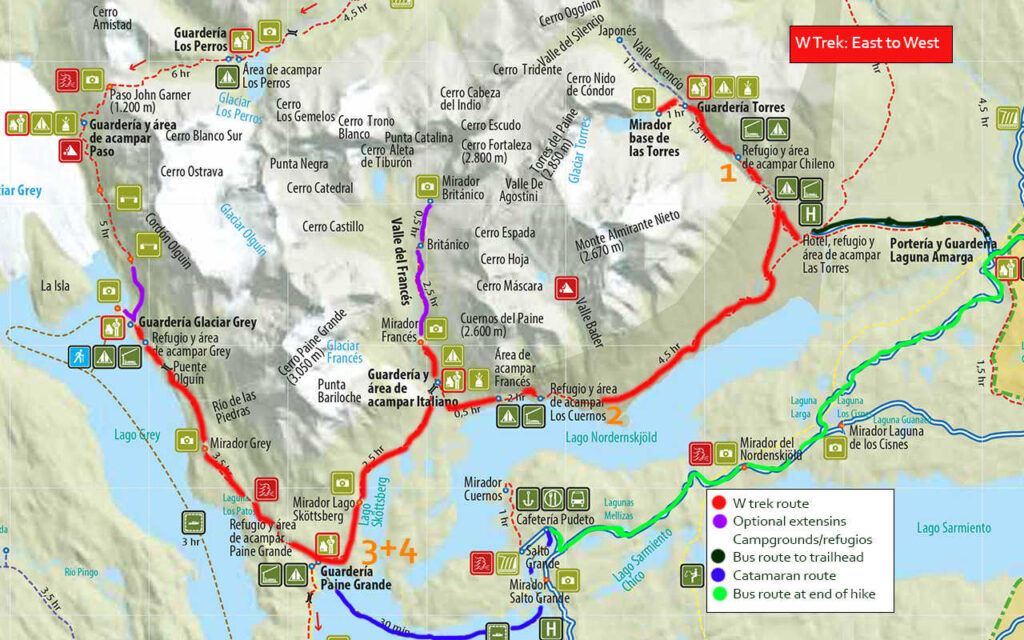
Day Zero: Puerto Natales to El Chileno
- Distance: 5 kilometers (3miles)
- Duration: 2 hours hiking
12:00pm Take a bus from Puerto Natales to Laguna Amarga.
2.00pm Arrive at Laguna Amarga. Show your entrance ticket at the ranger’s station.
2.30pm To get to the start of the W, you need to take the shuttle bus ($4,000 CLP ($6 USD) – you must pay in cash at the shuttle) to the Centro de Bienvenida (Welcome Centre).
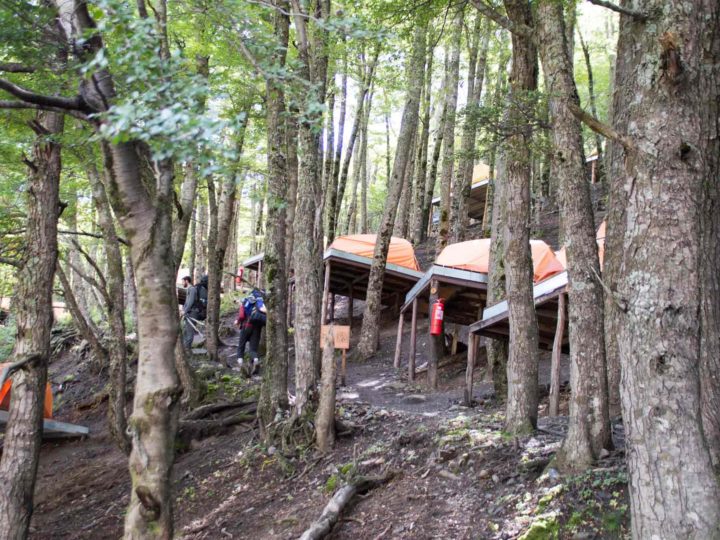
3pm Start hiking up to El Chileno, the closest campground to Mirador Las Torres, the famed viewpoint of the towers. This is the smallest campground, so sells out fast.
If you can’t get a spot here, you’ll need to camp at Torres Norte/Central and hike four hours tomorrow to reach the viewpoint.
5pm Arrive at El Chileno. Set up your tent, have dinner and relax.
Day One: El Chileno to Mirador Las Torres and then Los Cuernos
- Distance: 19.4 kilometers (12 miles)
- Duration: 6.5 hours hiking
4:30am Wake up and take a small bag (including warm clothes, a sleeping bag, and a snack) to see the torres at dawn. Don’t forget your torch as the route is over rocks and can be treacherous.
8:00am Leave the mirador and return to the campsite. Pack up, have breakfast start the walk down. When the trail splits, you’ll need to take the righthand path that goes alongside Lago Nordenskjöld.
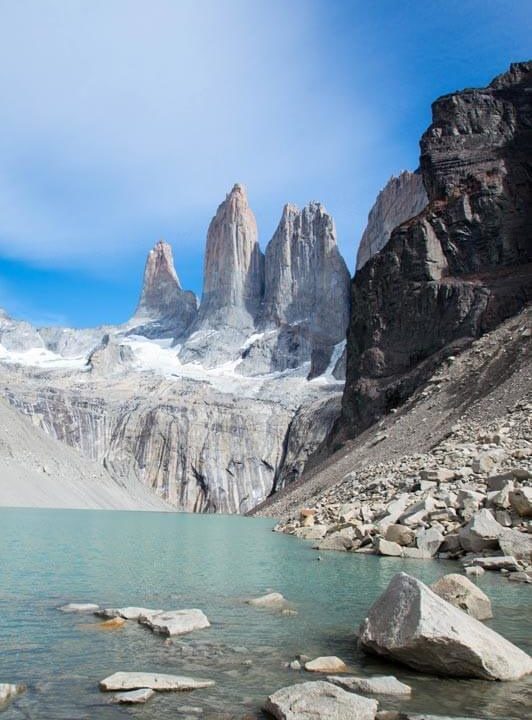
This trek meanders alongside the lake, gaining and losing altitude as it goes. The views are incredible but if it’s sunny, it will be hot!
3:00pm Arrive at Los Cuernos*, pitch up and relax.
*If there is no availability at Los Cuernos, when you go to make your refugio or campsite reservations , you can instead book to stay at Francés, which is a further 3.5 kilometers (one hour) beyond Los Cuernos.
Day Two: Los Cuernos to Paine Grande
- Distance: 17.5 kilometers (10.8 miles) from Los Cuernos to Mirador Británico and 7 kilometers (4.3 miles) from Guardería Italiano to Paine Grande
- Duration: 6.5 hours hiking from Francés to Mirador Británico and 2.5 hours from Guardería Italiano to Paine Grande
7:00am Get up, have breakfast and pack up your tent.
8:00am Today begins with the path alongside Lake Nordernskjold to Guardería Italiano. You can leave your bags here with the ranger before hiking up into the Francés Valley to Mirador Británico*.
10:30am The hike up the Francés Valley may be long or painfully short – all depending on the weather. Both times I’ve walked Torres del Paine W hike I’ve experienced dreadful weather in the Francés Valley.
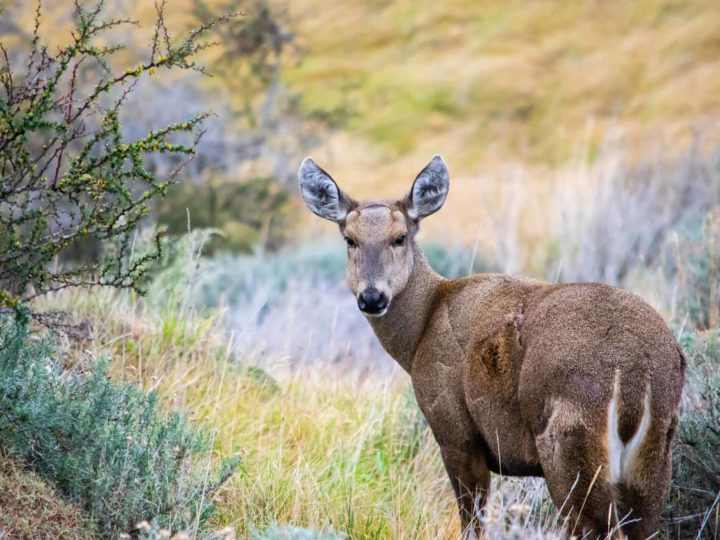
Luckily, the hike back is downhill to return to Campamento Italiano. From there, pick up your rucksack and hike the two remaining hours to reach Paine Grande.
Note that there’s a new trail that begins just after Campamento Italiano; take the lefthand fork that follows closer along the lake. It’s a little longer – 9 km (5.6 miles) rather than 7 km (4.3 miles) – and so takes around 30 minutes longer, but it has fewer hikers on it and is really pretty.
17:00pm-18:00pm Arrive at Paine Grande, pitch up and enjoy the views across the lake.
Day Three: Paine Grande to Grey and back to Paine Grande
9:00am Hike from Paine Grande to Grey; you can leave everything in your tent, except the items you need for today. The trail starts to go uphill but soon levels off and has great views of Lago Grey to keep your spirits up!
13:00pm Arrive at Grey. From the campsite, an additional one kilometre north through the forest brings you to two viewpoints lying over a kilometre from the glacier’s snout. From here, look out for enormous chunks of ice in the water.
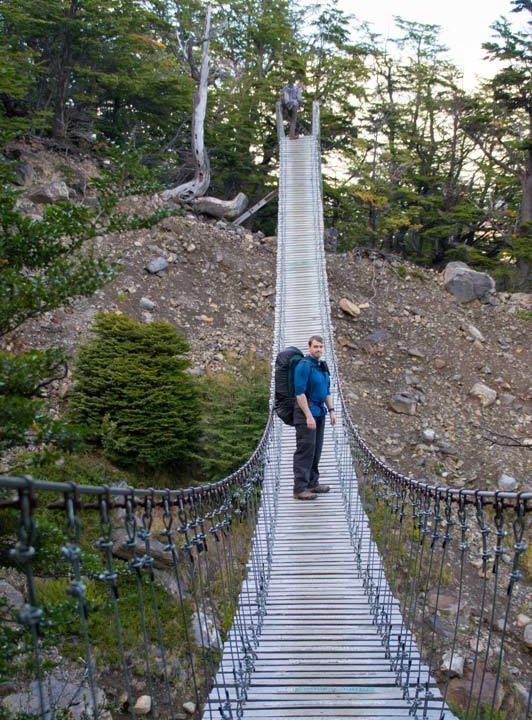
15:00pm Return to Grey along the same path and back to Paine Grande.
19:00pm Arrive at the campground, relax, have dinner and enjoy the feeling of finishing the trek!
Day Four: Paine Grande to Puerto Natales
- Distance: N/A
- Duration: N/A
9.00am Join the queue for the ferry to Pudeto.
9:30am Take the ferry to Pudeto. This service is operated by Hielos Patagonicos ($25,000 ($30 USD) single, cash only). Tickets cannot be reserved in advance; you buy them at the ferry port.
10:00am Arrive at Pudeto.
10.30am Take the bus from Pudeto to Puerto Natales and celebrate your successful completion of the W!
Top tips for hiking the Torres del Paine W Trek self-guided
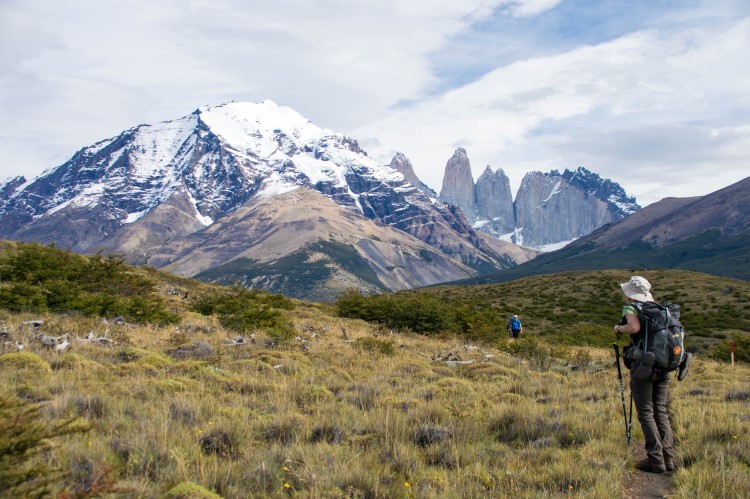
Having now been hiking in Torres del Paine National Park twice, I’ve learned a few important tips that have kept me happy, sane and comfortable en route :
Top equipment tips
- Camping in Torres del Paine at Francés, Los Cuernos, and El Chileno is on wooden platforms. If you plan to stay at any of these campsites, you will need extra cord or string to help you attach your tent without using pegs.
- Bring a range of warm and wet weather clothing. Check out my packing list for hiking the Circuit in Torres del Paine for the full guide to the clothing that I packed for the trip (and which is also a good guide to what to pack for the W). It also includes a free, downloadable checklist.
- Bring a book or some cards for the evenings as you tend to finish hiking quite early and if it’s cold and wet, you’ll want to retire to the shelters with something to do.
- Having a lightweight tent really does make a difference camping on this trek. Have a look at my review of the Big Agnes HVUL2 , the really lightweight backpacking tent that we used for the O Circuit.
- If you’re carrying all of your own equipment, a 60-litre rucksack should be big enough.
- Pack all of your clothes into dry bags (better than a bin bag which can easily rip). The weather changes rapidly and on days when it’s pissing it down, you’ll welcome the fact that your sleeping bag and clothes are dry. I recommend the Sea to Summit dry bags (buy them on REI | Amazon ).
- Bring a rucksack cover. I’ve heard mixed advice on this one, but a rucksack cover kept our bags dry (and so lighter) when we were hiking in Torres del Paine National Park and no, they didn’t blow away in the wind. If your rucksack doesn’t come with its own, you can find them in various sizes on | Osprey | Amazon (make sure it’s the correct size for your bag – otherwise it will blow away!).
Top food tips
- There is a much wider (and cheaper) selection of food in the supermarkets in Punta Arenas than in the one Unimarc supermarket in Puerto Natales. I recommend doing your food shop there before you take the bus to Puerto Natales. We left the stuff we didn’t need in our hostel in Punta Arenas.
- You can also buy trekking food and bring it with you , but it’s heavier and far more expensive than organising your food when you get to Puerto Natales.
- Pack everything into zip-lock plastic bags and bin all the original packaging that you can to save on carrying any extra weight. Also, don’t bring the full pack of rice if you’re only going to eat half of it – every bit of weight counts!
- You can buy basic staples (pasta, biscuits, tomato puree etc.) from the shops at Paine Grande, Grey, Francés and El Chileno to stock up on supplies. It’s pretty expensive, but totally worth it. They also all stock beer – an additional expense that I didn’t include in the costings for the W trek!
- You don’t need to bring water with you as it’s available from all the glacier meltwater streams that you’ll run into along the W and is drinkable from the taps at each of the campsites. If you’re nervous about drinking the water, you can also bring a Steripen (read my review of the Steripen Adventurer or buy one from Amazon or buy a newer Steripen UV Ultra from REI ) to zap anything that might be nasty or a Grayl ( REI | Backcountry | Amazon ) – find out why I recommend these water filters for South American travel .
- My dad is a pro at packing food for multi-day treks. Read what food we took with us for the O Circuit (and which you can use as a guide for the W too).
- You will need Chilean pesos on you for the park as nowhere accepts cards. You’ll need $25,000 CLP ($35 USD) for the catamaran ferry and then extras for additional food, beer, and anything else you want to buy.
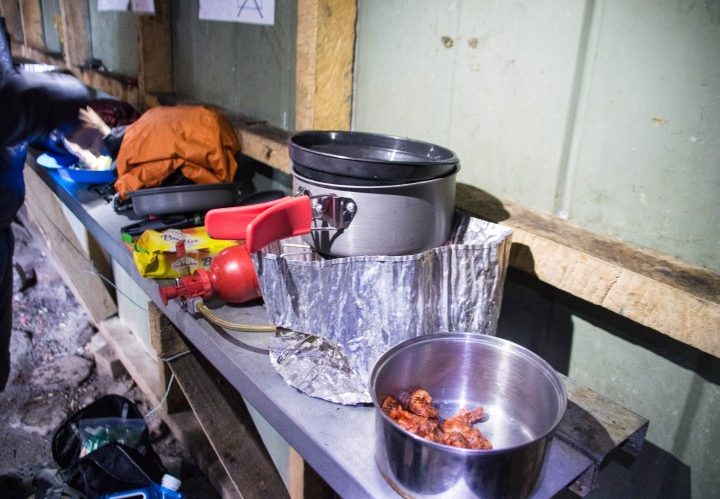
Camping in Torres del Paine
The following summarises some of the main points about booking campsites and refugios in Torres del Paine for the W trek, but you can get a full overview of how to book campsites in Torres del Paine with this article updated for the 2023/2024 season.
Reservations with Las Torres and Vertice Patagonia
You will need to book your campsites in Torres del Paine in advance. For example, in August 2022, many of the campsites and refugios were fully booked for December through February 2023, which just shows how far in advance it gets booked up.
Before you start panicking, what happens each year is that reservations free up again in September/October, probably due to the fact that tour agencies in Puerto Natales make mass reservations for the high season, and then cancel them when they don’t fill the bookings.
If you need anything planned well in advance, then this isn’t going to suit your plans. If your plans are a little more open and you can wait until closer until the time (and keep checking back to see if any spots have opened up), then you should still be able to hike the W during these months.
My recommendation would be to hike outside of these months anyway (November or March) to avoid the crowds as much as possible, but either way, you still MUST SECURE YOUR RESERVATIONS with Las Torres (Francés, Los Cuernos, El Chileno) and Vertice Patagonia (Paine Grande and Grey).
If you’re trying to get a space last-minute, you can always pop into either of their offices in Puerto Natales and see if they can book you in. I’ve heard of people having success with this with only a day or two’s notice.
Reservations with CONAF
For the 2023/2024 season, and for the foreseeable future, all of the CONAF campsites remain closed.
Upgrade your solo Torres del Paine W trek, Patagonia with these changes
If you’re not so bothered about hiking the W in Torres del Paine National Park on a complete budget, consider making the following small tweaks to your itinerary.
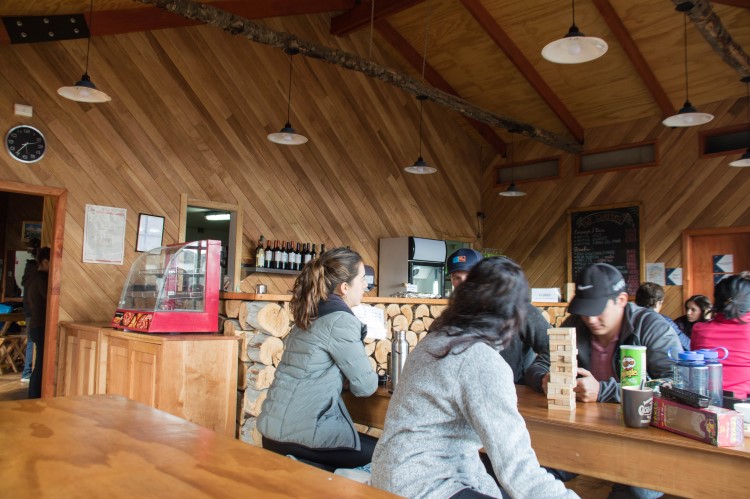
Stay overnight at Los Cuernos ($80,000 CLP ($88 USD) per person full board) instead of Francés
Again, this is only really possible if you stay overnight on Day Two in Paine Grande. When we hiked the Full Circuit, we decided to treat ourselves to an all-inclusive night at Los Cuernos.
This meant we still pitched our own tent on a wooden platform, but we had a three-course dinner, breakfast, and packed lunch for the next morning, which reduced the amount we had to pack in our rucksacks for the hike.
The food from Las Torres (previously known as Fantastico Sur) is much better than Vertigo Patagonia too, so I would recommend this instead of eating in the big canteen at Paine Grande.
Los Cuernos now offers camping sites without full board (previously you had to pay for full board at this campsite).
This means that for $25 USD per person you can pitch up your own tent here. They also offer half-board options priced at $62 USD per person, which include dinner and breakfast.
Book full board and a tent or bed at each campsite
You can rent gear and get food at all campgrounds, so if you don’t want to carry anything, then you can also book this way!
Bear in mind that full board at Los Cuernos comes in at $158 USD per person for a fully-equipped tent and full board – so it certainly won’t come cheap!
Did you find this guide to the Torres del Paine W hike useful? Pin it!
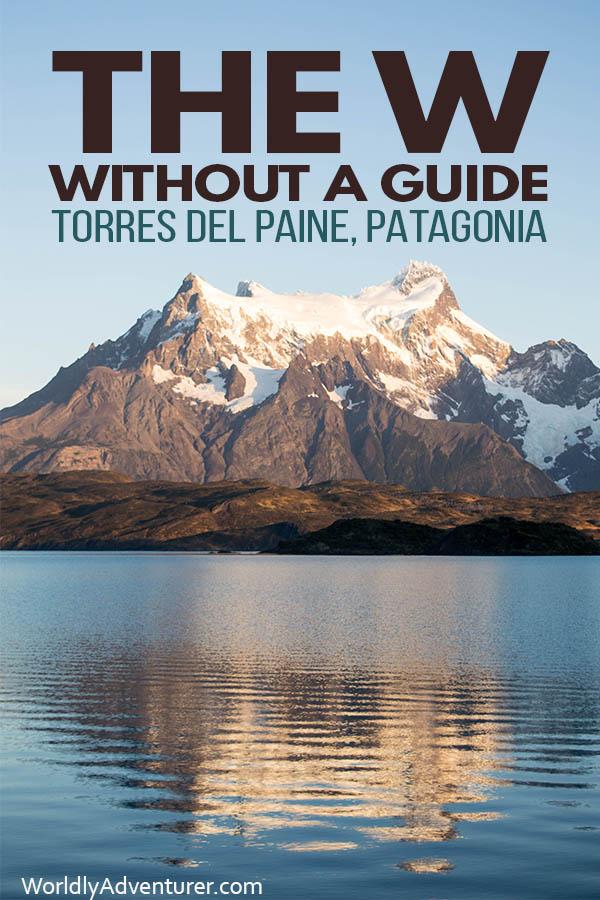
Helen Turner
Sunday 4th of February 2024
Excellent article. Plenty of food for thought. Thankyou
Steph Dyson
Friday 9th of February 2024
Thanks Helen! Steph
Sunday 26th of November 2023
We were hoping to hike to Refugio Grey, then take the Navigation boat toward Hotel Grey, then take a shuttle to our car at Pudeto. But I'm not sure how the timing works out. If we take the 14:00 navigation from Refugio Grey, is there time to make the last shuttle from Hotel Grey?
Tuesday 28th of November 2023
Hi Karen, I'm not sure. You would need to go off the timings on the Hotel Grey website or reach out to them directly. Steph
Jonny Collins
Tuesday 24th of October 2023
Thank you for your brilliant blog posts on all things South America - they're perfect for someone like me that loves knowing the logistics of our upcoming trips! My wife and I were meant to visit Patagonia for the first time in 2020 as part of a wider trip that was cut short due to COVID - we read your blog posts at the time whilst planning. We're finally planning to visit in 2024!
Unfortunately due to work commitments we are not able to take more than two weeks off and it is making our itinerary from the UK quite tight (we want to get to El Calafete and El Chalten in the same trip).
Whilst I appreciate you recommend doing the W Trek in 4 or 5 days, we are considering doing it in 3 days (we are experienced hikers and have done multi day hikes before). We had always planned hiking West to East. For the most even split on distance it seems that staying at Paine Grande and Los Cuernos would work best. We're really keen to see the towers at sunrise but appreciate that staying at Paine Grande and Torre Norte to do this would result in a very big second day. We have thought of two alternatives:
Option 1 (West to East): Night 1: Campo Italiano Night 2: Torre Norte
Option 2 (East to West): Night 1: Refugio Chileno Night 2: Campo Italiano
We've not considered yet if these options work with bus and ferry timetables. Do you think either of the above options are feasible to do the hike in 3 days and get to see the towers at sunrise? If not is there an alternative that might work, or if we do the trek in 3 days do we need to accept that we would not be able to see the towers at sunrise?
Any advice on the 'best' way to do the W trek in 3 days would be much appreciated. Apologies if anyone has asked this before! Thanks in advance :)
Sunday 28th of January 2024
Hi Steph, Thank you for your reply. In the end we decided to find an extra day from elsewhere in the trip so that we could do the W Trek and not miss out on anything! Thanks again for your help and for keeping this brilliant blog post up to date!
Thursday 23rd of November 2023
Hi Jonny, Italiano isn't open any more unfortunately. I would recommend just doing day hikes rather than the W. That way, you can actually enjoy your day hikes and not worrying about trying to cover the ground quickly. Steph
Tuesday 10th of October 2023
Great post, thank you! A group of five of us is heading to TDP to do the W-trek in January 2024. Very excited! We're flying from Santiago (SCL); is Puerto Natales a great option to fly into? I heard the drive to TDP from P. Natales is shorter than when coming from P. Arenas? It seems SKY airline has some flights during our time frame. Any great spot to hang out or visit at in P. Natales?
Hi LuAnn, yes you can fly directly into Puerto Natales. Steph
Wednesday 22nd of March 2023
Hi Steph! Can you please provide link where it is stated that a guide is required for hiking in May in Torres del Paine? I had not come across this requirement yet. Thank you!
Thursday 23rd of March 2023
Hi Megan, it's something I was told in a conversation with CONAF, the national parks office. You can reach out to them https://www.conaf.cl/parques/parque-nacional-torres-del-paine/ Steph
Patagonia: Torres del Paine Classic W Trek
6 days | challenge yourself with the w trek in chilean patagonia – one of the best hiking spots in the world.

Immerse yourself in the Patagonian wilderness, on this 6-day hiking trip in the Torres del Pain National Park of Chile. Coined one of the most beautiful and popular treks in the world, the W Trek traverses through rolling grasslands and mountainous peaks, alongside the breathtaking blues of lakes, rivers and streams. You’ll stay in Refugios by night (backcountry huts or lodges with all the comforts of home) and walk the ever-changing landscape by day. Along the way, witness jagged icebergs on Lake Grey, diverse flora and fauna (look out for Andean condors and grazing guanacos) and the famous Los Cuernos del Paine (The Horns of Blue) and Torres del Paine (Towers of Blue) distinctive to Patagonia. If you’re looking for a challenge, this multi-day hiking trek is perfect for you.
Trip overview
- Immerse yourself in the sheer majesty of Chilean Patagonia – one of the most beautiful landscapes on earth with its vast mountain ranges, glacial lakes, grasslands and beech forests.
- Explore French Valley, Lake Grey and the famous Towers of Blue (Torres del Paine) on an actioned-packed multi-day hiking trip. This part of the world is widely considered one of the best for hiking.
- Witness this raw, untamed landscape on a low-altitude trek that takes you through a designated UNESCO World Biosphere Reserve. Keep your eye out for Andean condors, flamingos and guanacos.
- Stay in Refugios with fully serviced kitchens and bathrooms, comfortable beds and all meals taken care of – so you don’t need to worry about anything other than the experience.
- Hike the W Trek in Torres del Paine National Park West to East, saving the crown jewel (the three peaks of Torres del Paine) for last. What a way to cap off the perfect hiking trip!
- This is a hiking trip, so it does require a good level of fitness, but no previous experience is needed. The longest day will see you hiking for 24 km with 1100 m of elevation gain.
- Please read the packing list carefully and come prepared, as you may not have a chance to buy any missing parts of equipment or trekking clothing.
- You will need to carry your luggage on the trek as porter services is not included. Your fully packed trekking backpack should not exceed 12kg total weight.
- This trip is new to our range this year. Despite rigorous planning and research, new itineraries can sometimes throw us some unexpected surprises. More often than not, it’ll be a welcome surprise, but every now and again there might be a hiccup. We like to think that’s what puts the ‘adventure’ in ‘adventure travel’.
Bienvenidos! Welcome to Puerto Natales, in Chilean Patagonia. This port city is famously the gateway to Torres del Paine National Park – the centre of your 6-day hiking trip. Depending on when you arrive, you may want to acquaint yourself with the city on foot, taking in the snow-capped mountainous horizon, or maybe you’ll pop into the Municipal Historical Museum in the city centre to brush up on some local history. You’re free until 6 pm when there is a welcome meeting with your group. After, you may want to head to a restaurant or bar to get to know your fellow trekkers a little better and taste some classic Patagonian flavours.
- Hotel (1 night)
There are no meals included on this day.
- Full W Trek guided hike West to East
It’s very important that you attend the welcome meeting as we will be collecting insurance and emergency contact details at this time. If you are going to be late, please let your travel agent or hotel reception know. Ask reception or look for a note in the lobby for more information on where the meeting will take place. Please note your Tour Leader will not stay in the same accommodation as the group for tonight, and will re-join you in the morning of Day 2.
After breakfast at the hotel this morning, you’ll take a transfer from the hotel to the Grey Sector of the W Circuit in wild Patagonia. This is the most famous and well-travelled hiking trail in the park because although it can be challenging, the trail can be completed by anyone of any fitness level (as long as you are reasonably active and able to walk long distances). First, take a boat ride from Hotel Grey to the trailhead and explore a landscape, which you will soon trek, from a different perspective. Then, from your starting point, the path is quite flat for the first hour, passing through beech-lined woods and crossing over some small streams. Along the way, you’ll have multiple opportunities to see the beautiful Lake Grey, with its electric-blue icebergs that jut from the water like small, otherworldly mountains. As you start to ascend, you’ll see a marvellous view of the Grey Glacier in the distance. Along the way, you’ll stop for a packed lunch, where you can keep your eye out for the Patagonian fox and the Andean condor. Eventually, make your way downhill once more and reach your accommodation for the night – Refugio Paine Grande. Refugios are backcountry huts or lodges that are along the trail, with full-service kitchens, beds and bathrooms. After a nice warm shower, cap off your first hiking day with a group dinner.
- Refugio Paine Grande (1 night)
- Paine Grande refuge overnight stay (fully equipped)
- Lake Grey boat ride
- Grey Trek guided trek
The trekking time for today will be about 4 hours or 11 km. There is no experience required for this trip, however, you do need to be reasonably fit and accustomed to long walks.
After breakfast at your Refugio, you’ll embark on a full-day trek through the French Valley. From here, the well-trodden path leads towards the Cuernos of Paine – look! You can see the jagged peaks in the far distance. Passing through woods and over small streams, you’ll have a beautiful view of Lake Nordenskjold, and later, the amazing sight of ancient sedimentary rock among the rolling hills. You’ll arrive at a rickety-looking hanging bridge, like something out of an Indiana Jones movie (don’t worry, it’s completely safe). Head on into the French Valley, which if you opt for the full round-trip, will take about 5 hours. Your path is a steady, uphill trail that reaches an altitude of around 900 m. If the weather is clear, the views are spectacular. After traversing rivers and forests of beech trees (or lenga trees), the skyline is dwarfed by towering granite spires and the famed Paine Grande – the highest mountain peak in the park, sitting at 3,050 m above sea level. The return trek (along the breathtaking Lake Nordenskjold) will eventually lead you to your accommodation and dinner spot for the night – Refugio Domos Frances.
- Refugio Domos Frances (1 night)
- French Valley guided trek
- Frances refuge overnight stay (fully equipped)
The trekking time for today will be about 10 hours or 24 km (although you will have the option to cut your hike short).
Fuel up on brekkie this morning and pack up your gear ready for another beautiful day of hiking. Today’s trek passes through beech tree woodlands and continues along the northern shore of Lake Nordenskjold, with its amazing dark-blue hues. On your left, the incredibly tall granite spires of Los Cuernos del Paine (The Horns of Blue) impose upon your track. The Horns are one of the distinctive features of the park and part of the overall Paine massif – which is nestled within the heart of the southern Andes. Along today’s trail, look out for grazing guanacos, swooping eagles, Magellanic ducks and the diverse flora of the area. On the lake, you may even see black-necked swans and pink flamingos! Today’s hike will come with a fair few rolling hills and potentially steep climbs, but after every incline, you’ll be met with stunning scenery that reminds you why you’re there. Tonight, you’ll arrive at Refugio Torre Central where you’ll enjoy a group dinner and a restful night’s sleep under the stars.
- Refugio Torre Central (1 night)
- Central Valley guided trek
- Central refuge overnight stay (fully equipped)
The trekking time for today will be about 5 hours or 13.5 km.
Arise nice and early and fuel up on brekkie, ready for your last full day of trekking this spectacular trail. As this is your last day in the park, it’s a good idea to remind yourself to be present, taking in all the majestic beauty of the area and the friendly faces who have been by your side along the way. Once you turn the final bend of today’s hike, you’ll witness the spectacle of the giant towers of Torres del Paine (Towers of Blue) – the gem of the park. This trail follows the W Circuit backwards, meaning you’ll finish your trip off with the highlight of this incredible view. Take a moment to appreciate the massive vertical structures with the reflective milky-blue lake at the base. You’ll have about half an hour to relax and take photos, have some lunch and enjoy the view. This scene is at a high altitude, however, meaning it will be windy and cold. When the time is right (when everyone’s noses start to turn pink) turn around and head back the way you came. You’ll have the option of stopping off at Refugio Chileno to stretch and refuel. Once past Refugio Chileno, head back to the French Valley and then downhill towards the buildings of Hotel las Torres. It’s time to say your goodbyes to the national park! Eventually, you’ll reach the ECO Camp, where you’ll meet your private transfer back to Puerto Natales.
- Base Las Torres guided hike
The trekking time for today will be about 8-9 hours or 19 km. Tour leader’s service will finish tonight in the evening after group is checked in the hotel in Puerto Natales.
This morning after breakfast your trip will come to an end. If you would like to extend your stay, just speak to your booking agent.
5 breakfasts, 4 lunches, 3 dinners
Private vehicle, boat
Hotel (2 nights), Refugios (3 nights)
Dates and availability
Important notes.
1. Full passport details are required at the time of booking in order to purchase entrance fees to Torres del Paine National Parks. 2. This trip starts with a welcome meeting at 6 pm on Day 1. 3. Tour leader is also a qualified Trekking Guide and will join the group for Welcome Meting and then on the morning of Day 2 for the start of the trek. 4. A single supplement is available to add on, this will be included on Days 1 and 5 (Hotel) only and is subject to availability. Please speak to your booking agent for further information. 5. All overnight stays in Torres del Paine are booked in authentic refuges, with shared facilities and mixed gender dorm style rooms. Occasionally we are not able to reserve one or more nights in the Refugios, in which case accommodations will be in tents that are provided and set up by the Refugios. In these cases, we will still have access to the Refugios for meals, relaxation and showers. The price of the trip remains the same and all camping equipment is provided. 6. You will need to carry your luggage on the trek (porter services is not included), so please read a packing list and our recommendations carefully. Your fully packed trekking backpack should not exceed 12kg total weight. Excess luggage can be stored in our hotel in Puerto Natales for the duration of the trip. 7. A porter service can be pre booked (subject to availability) at an extra cost to carry up to 15kg weight, contact your booking agent for more details.
Want an in-depth insight into this trip? Essential Trip Information provides a detailed itinerary, visa info, how to get to your hotel, what's included - pretty much everything you need to know about this adventure and more.
Check back later or explore reviews for similar trips.

W Trek Torres del Paine: Tipps, Routen, Entfernungen und Essentials für Wanderer

Reise-Ressourcen
- Unterkunft zu den besten Preisen.
- Buchen Sie Aktivitäten und Ausflüge.
- Suche nach Billigflügen
- Buche dein Auto für Patagonien
- -5% eSIM-Rabatt mit unbegrenzten Daten und ohne Roaming-Gebühren
- Lagere dein Gepäck für US$ 5,90 pro Tag
- Reiseversicherung und Stornierung mit -5% Rabatt
- Ich organisiere deine Reise
Bist du bereit für eine unvergessliche Wanderreise in einer der schönsten Landschaften der Welt? Der Torres del Paine Nationalpark in Patagonien in Chile ist die Heimat des kultigen W Treks, einem fünftägigen Abenteuer, das dich durch das Herz dieser atemberaubenden Region führt. In diesem ultimativen Leitfaden erfährst du alles, was du über die W Trek Patagonien-Karte wissen musst – von der detaillierten Reiseroute für jeden Tag bis hin zu wichtigen Tipps zu Wetter, Unterkünften, Essen, Sicherheit und vielem mehr. Mach dich bereit, das Abenteuer deines Lebens zu erleben!
Die zentralen Thesen
- Entdecke Patagoniens wilde Schönheit auf dem kultigen W Trek mit dieser umfassenden Kartenübersicht
- Fordere dich selbst heraus, indem du die Entfernungen zwischen wichtigen Punkten erfährst und eine unvergessliche Reise genießt
- Bereite dich auf dein Abenteuer vor – mit wichtigen Tipps, Entfernungen, Reiserouten und dem Wichtigsten zum Packen!
W Trek Patagonien: Ein umfassender Kartenüberblick
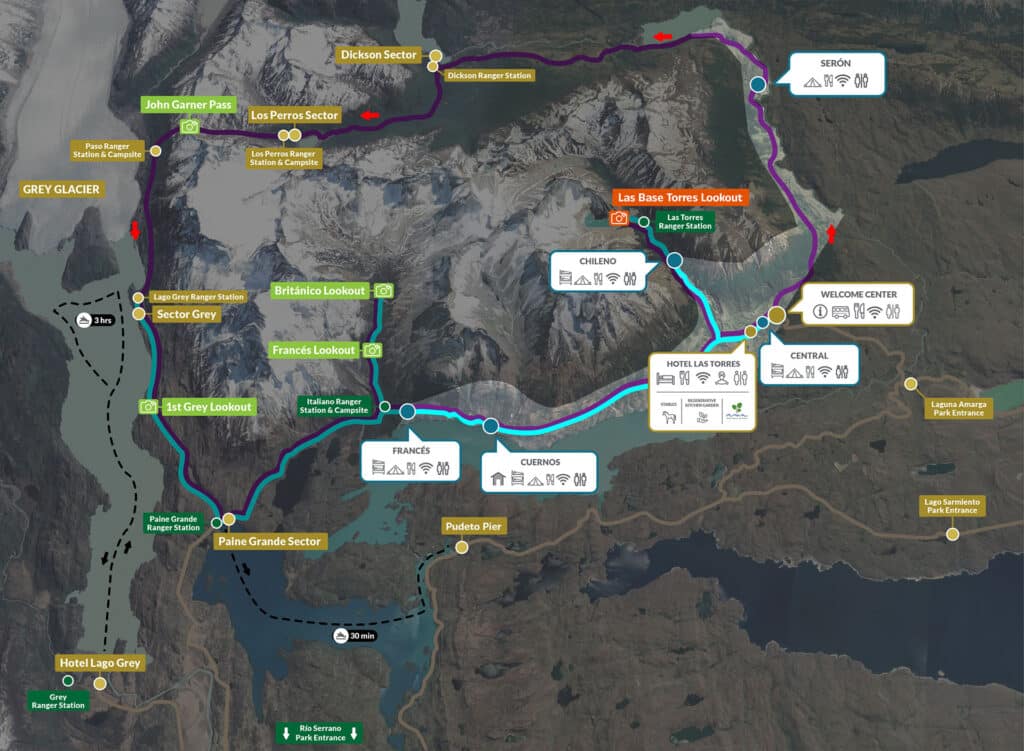
Der W-Trek in Patagonien ist eine aufregende mehrtägige Wanderroute, die dich durch den faszinierenden Torres del Paine Nationalpark führt, eines der bemerkenswertesten Wanderziele in Südamerika. Dieser 80 km lange Wanderweg bietet eine aufregende Mischung aus spektakulären Landschaften, herausforderndem Gelände und unvergesslichen Erlebnissen.
In diesem Abschnitt findest du eine ausführliche Übersicht über die Wanderkarte des W-Treks mit den wichtigsten Sehenswürdigkeiten und Entfernungen, die dir bei der Planung deines Abenteuers helfen.
Wichtige Punkte von Interesse
Der W Trek ist berühmt für seine ikonischen Granittürme, das beeindruckende French Valley und den majestätischen Grey Glacier. Diese atemberaubenden Wahrzeichen werden einen unauslöschlichen Eindruck bei dir hinterlassen, während du die anspruchsvollen, aber lohnenden Pfade durch den Nationalpark durchwanderst.
Einer der aufregendsten Höhepunkte des W-Treks ist das French Valley, wo du die Gelegenheit hast, majestätische Berge und ruhige Seen zu bewundern. Ein weiteres Muss ist der Grey Glacier, eine imposante Eiswand, die dich angesichts ihrer Größe und Schönheit sprachlos machen wird. Nicht zu vergessen ist der Paine Grande, der höchste Gipfel des Parks, der die unglaubliche Kraft der Natur eindrucksvoll unter Beweis stellt.
Streckenabstände
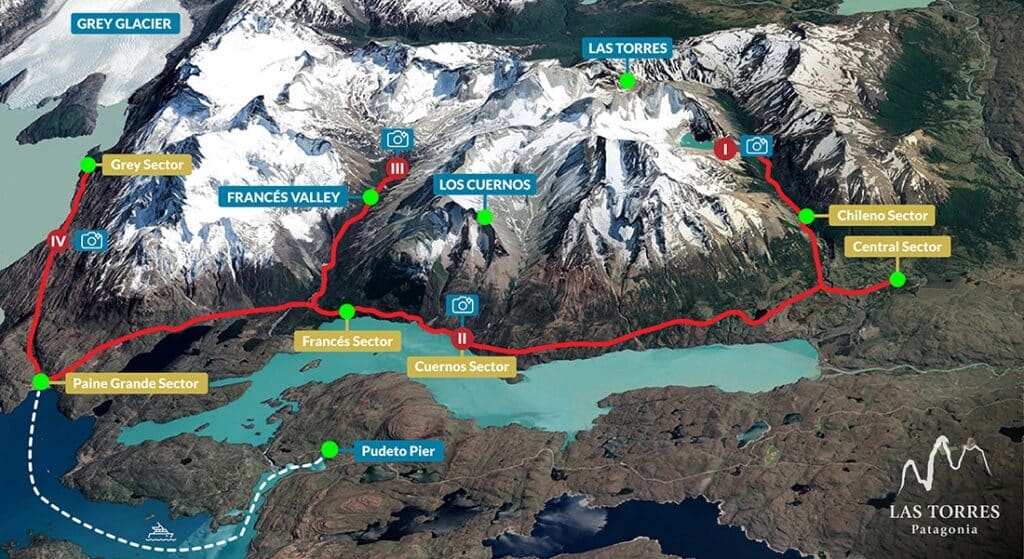
Um deine täglichen Routen auf dem W Trek zu planen, ist es wichtig, dass du dich mit den Entfernungen zwischen den wichtigsten Punkten des Weges vertraut machst. Der erste Tag des W-Treks zum Beispiel führt über beeindruckende 22 km vom Hotel Las Torres zum Refugio Los Cuernos.
Während des Trekkings erwarten dich erfrischende Wanderungen wie die zu den Türmen am letzten Tag, die einen Höhenunterschied von 900 Metern aufweisen. Unterwegs hast du auch die Möglichkeit, den atemberaubenden Glacier Grey zu sehen.
Wenn du die Entfernungen des Weges kennst, kannst du dich besser auf den W-Trek vorbereiten und so deine unvergessliche Reise durch die wilde und ungezähmte Schönheit Patagoniens optimieren.
W Trek-Reiseplan: Tag für Tag Aufschlüsselung
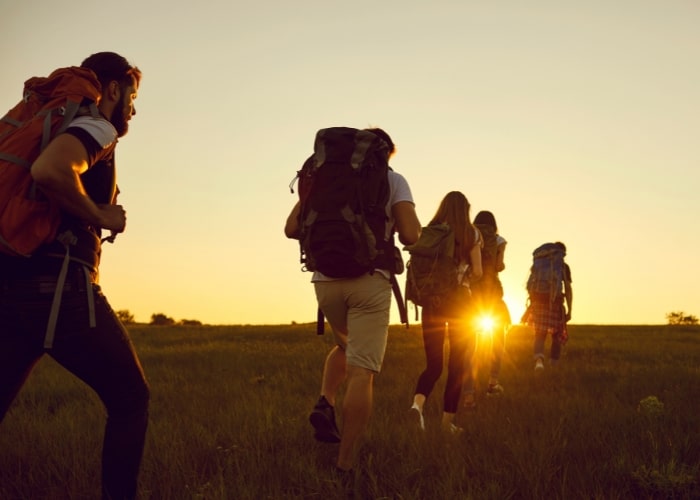
Am besten erlebst du die atemberaubende Landschaft des Torres del Paine W Treks, wenn du dir Zeit nimmst und sie über 4 Nächte und 5 Tage genießt. In diesem Abschnitt findest du einen detaillierten Tagesplan für den W-Trek in Patagonien, inklusive empfohlener Zwischenstopps und Unterkünfte, die du auf deiner Reise antreffen wirst.
Egal, ob du ein erfahrener Trekker bist oder zum ersten Mal wanderst, diese Route wird dir helfen, das Beste aus deinem Abenteuer in einer der außergewöhnlichsten Landschaften der Welt zu machen.
Tag 1: Hotel Las Torres zum Refugio Los Cuernos
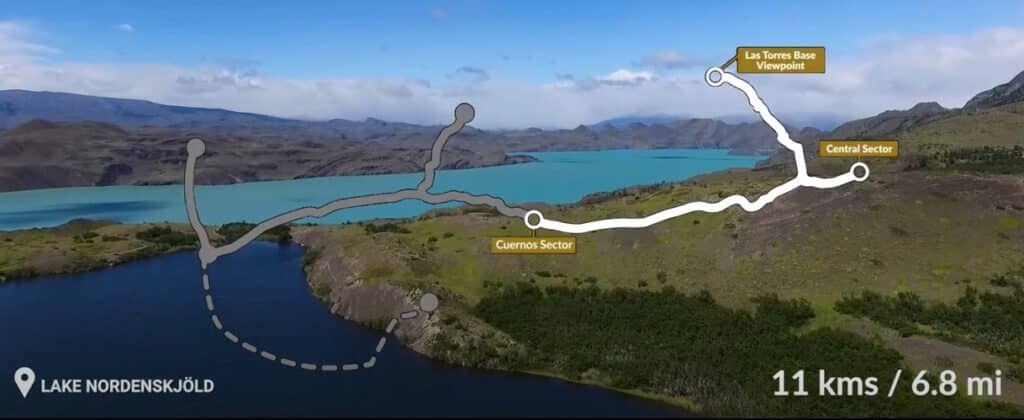
Dein erster Tag auf dem W Trek beinhaltet:
- Anreise vom Hotel Las Torres zum Refugio Los Cuernos
- Entfernung von 22 km (13.6 mi)
- Dauert etwa 6 Stunden
- Folge dem Ascencio-Fluss, um das Ascencio-Tal zu erreichen
- Passiere den Aussichtspunkt für die Türme auf 900 Metern
- Das Refugio Los Cuernos ist treffend nach den „Hörnern“ benannt, einem Paar beeindruckender Granitgipfel in der Gegend.
Um dein Abenteuer zu beginnen, nimmst du am Vortag um 15 Uhr den Bus Sur von Puerto Natales nach Pudeto und kommst rechtzeitig zur letzten Fähre des Tages um 18 Uhr an. Die Busgebühr beträgt 12.000 CLP (14 US$) und die Fährgebühr 20.000 CLP (25 US$). Alternativ kannst du auch einen spannenden Spaziergang vom Eingang der Laguna Amarga zum Hotel Las Torres machen. Die Busfahrt von der Laguna Amarga zum Hotel Las Torres kostet 5.000 CLP (6 US$).
Tag 2: Refugio Los Cuernos nach Paine Grande
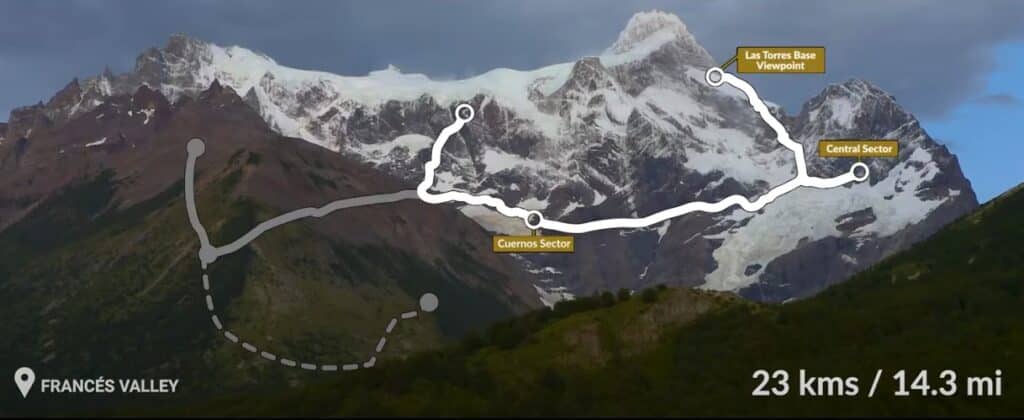
Tag 2 deines W-Trek-Abenteuers führt dich vom Refugio Los Cuernos zum Paine Grande. Dieser Teil des Treks hat eine beeindruckende Länge von 20 km (12,4 Meilen) und dauert etwa 7 Stunden. Unterwegs kannst du den majestätischen Blick auf den Grey Glacier von verschiedenen Aussichtspunkten aus genießen.
An diesem Tag hast du auch die Möglichkeit, das French Valley zu erkunden, eines der atemberaubendsten Highlights des W-Treks. Dieses üppige, grüne Tal bietet einen atemberaubenden Blick auf die umliegenden Berge und Seen und ist der perfekte Ort, um sich auszuruhen und die Schönheit Patagoniens zu genießen.
Tag 3: Paine Grande zum Grey Campsite
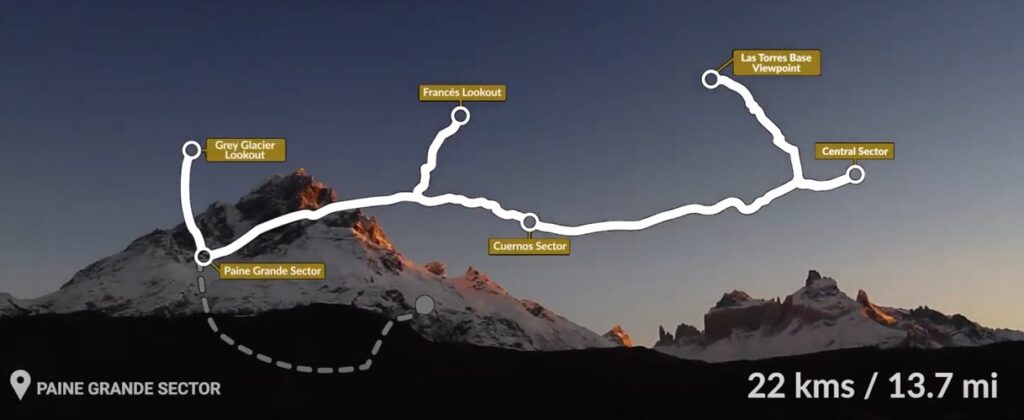
Am dritten Tag des W-Treks legst du die Wanderung vom Paine Grande zum Grey Campsite zurück. Dieser Abschnitt des Trekkings ist 19 km lang und dauert etwa 8 Stunden. Du beginnst deinen Tag am Paine Grande und fährst dann zum Campingplatz Italiano und anschließend zum Mirador Frances.
Wenn das Wetter gut ist, kannst du einen Abstecher zum Mirador Britanico machen, von wo aus du einen atemberaubenden Ring aus gezackten Granitgipfeln bewundern kannst, darunter das zweitberühmteste Wahrzeichen des Parks, die dreihörnigen Cuernos del Paine. Danach lässt du den Tag im wunderschönen Francés-Tal und auf dem Campingplatz ausklingen.
Tag 4: Grey Campsite nach Paine Grande
Am vierten Tag des W-Treks wanderst du vom Grey Campsite zurück nach Paine Grande. Diese Etappe ist 11 km lang und dauert etwa 3-4 Stunden. Auf dem Weg dorthin kannst du die herrliche Aussicht auf den Grey Glacier und die umliegenden Landschaften genießen. Wenn du auf dem Campingplatz Paine Grande ankommst, kannst du dich ausruhen und dich auf das Abenteuer des nächsten Tages vorbereiten.
Auf dem Weg zurück nach Paine Grande kannst du die atemberaubenden Ausblicke auf Los Cuernos und die majestätischen Berge genießen, die dich umgeben. An diesem Tag kannst du es etwas ruhiger angehen lassen und die atemberaubende Schönheit des Torres del Paine Nationalparks voll und ganz auf dich wirken lassen.
Tag 5: Paine Grande zum Hotel Las Torres
Der letzte Tag des W-Treks umfasst die Wanderung vom Paine Grande zurück zum Hotel Las Torres. Auf dieser Etappe kannst du einen aufregenden Nachmittag mit Kajakfahren, Eiswandern oder einer kurzen Wanderung zu den Hängebrücken verbringen. Wenn du über dein unglaubliches Abenteuer durch die wilde und ungezähmte Schönheit Patagoniens nachdenkst, nimm dir einen Moment Zeit, um die unvergesslichen Erinnerungen zu würdigen, die du auf deinem Weg gemacht hast.
Nach deiner epischen Reise fährst du mit Bus und Fähre zurück nach Puerto Natales. Der Bus von Laguna Amarga oder Pudeto nach Puerto Natales kostet 14 US$ (CLP 20.000/US$23 vom Hotel Grey). Am Ende deines W-Trek-Abenteuers wirst du mit einem Herzen voller Erinnerungen und einer neu entdeckten Wertschätzung für die bemerkenswerten Landschaften Patagoniens nach Hause fahren.
Wichtige Tipps für die Wanderung auf dem W Trek in Patagonien
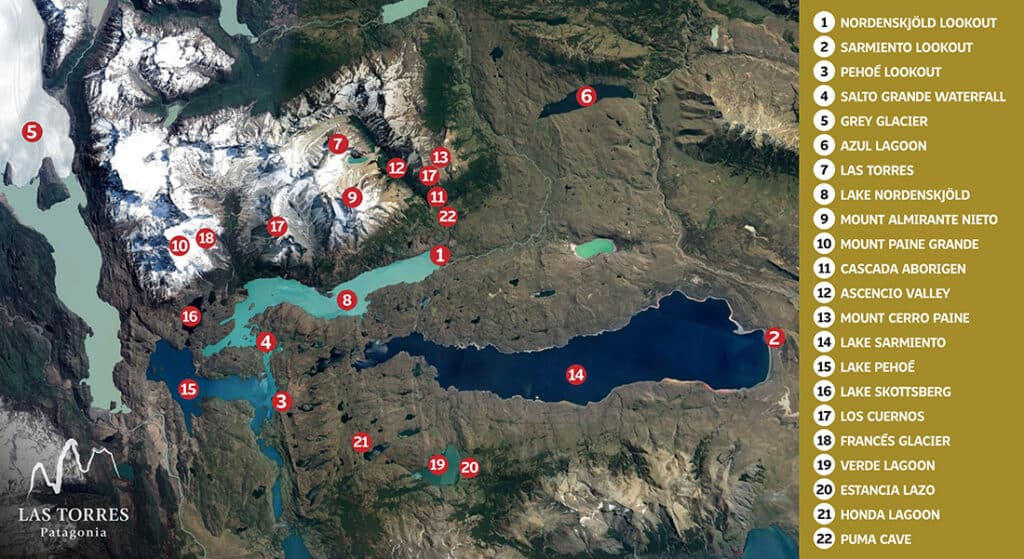
Gut vorbereitet und informiert zu sein, ist das A und O für das bestmögliche Erlebnis auf dem W Trek. In diesem Abschnitt findest du wichtige Tipps für den W-Trek, z. B. zu folgenden Aspekten
- Unterkünfte
Egal, ob du ein erfahrener Trekker bist oder zum ersten Mal wanderst, diese Tipps werden dir helfen, das Beste aus deinem Abenteuer in einer der außergewöhnlichsten Landschaften der Welt zu machen.
Wetter und Kleidung
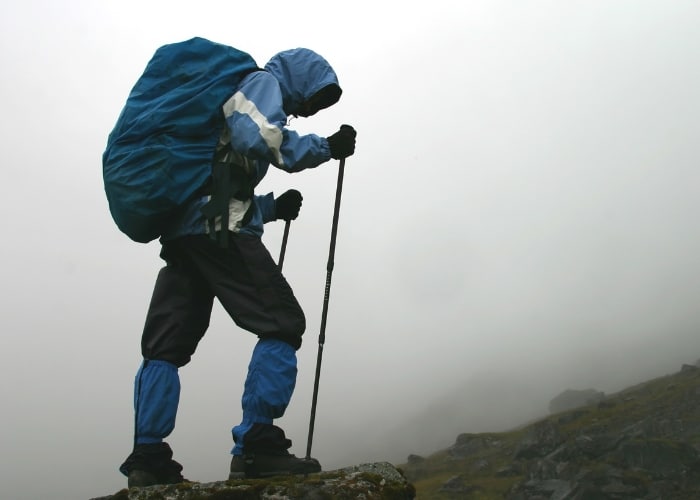
Das unberechenbare Wetter in Patagonien ist einer der Faktoren, die den W-Trek zu einem aufregenden Abenteuer machen. Die beste Zeit für den W Trek ist von November bis Anfang März, wenn die Durchschnittstemperaturen zwischen 10°C und 18°C liegen. Obwohl es in der Regel während der gesamten Wandersaison regnet und schneit, sind die Monate März und April die niederschlagsreichsten, daher ist es ratsam, wasserdichte Kleidung mitzunehmen.
Bei der Auswahl von Kleidung und Schuhen für den W-Trek müssen Faktoren wie die Art des Geländes, die Wetterbedingungen und die Länge des Treks berücksichtigt werden. Packe auf jeden Fall eine feuchtigkeitsableitende Basisschicht, eine Fleece-Schicht für Isolierung und Wärme sowie eine wasserdichte Jacke und Hose zum Schutz vor Regen und Wind ein. Mit diesem Schichtensystem kannst du deine Kleidung schnell und effizient anpassen, wenn sich das Wetter auf dem Trekking ändert.
Unterkunft buchen
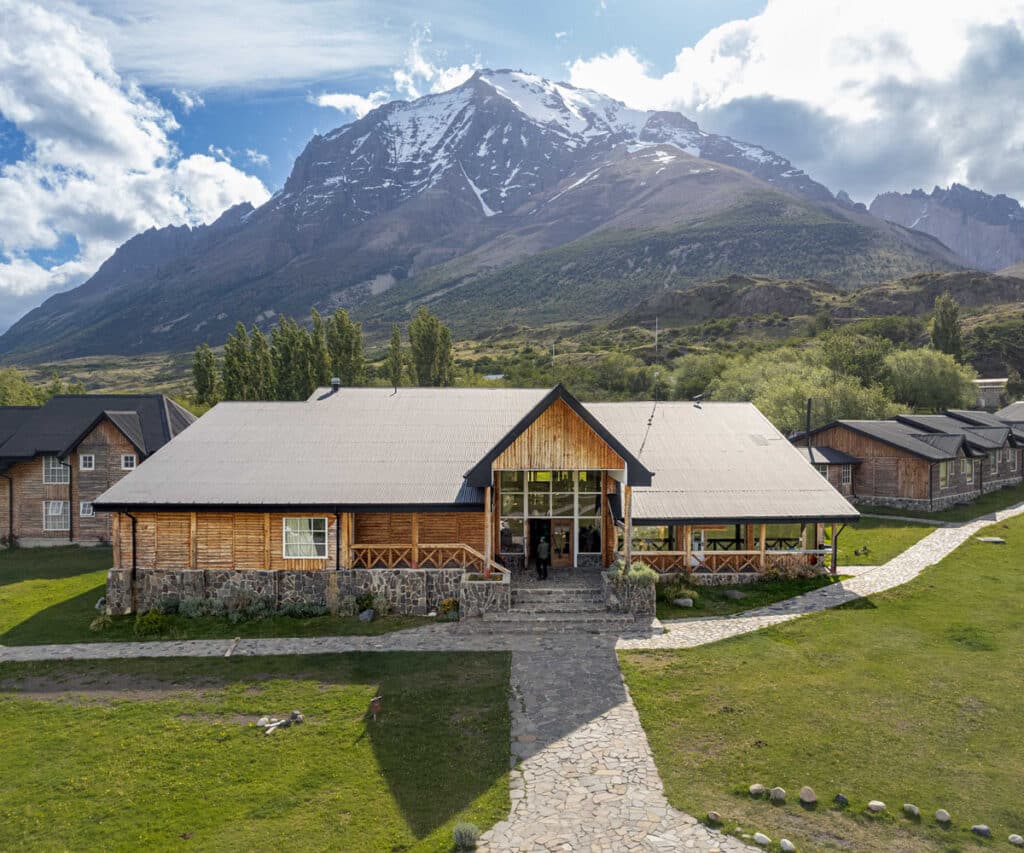
Zu den Unterkünften entlang des W-Treks gehören kostenpflichtige Zeltplätze mit einfachen Berghotels (Refugios) und ein kostenloser Zeltplatz. Wir empfehlen dir, deine Unterkunft im Voraus zu buchen, da die Plätze vor allem in der Hochsaison schnell ausgebucht sein können. Auf Websites wie Patagonline kannst du die Verfügbarkeit von Unterkünften prüfen und sie direkt buchen.
Wenn du eine Unterkunft buchst, solltest du Faktoren wie Lage, Preis und verfügbare Einrichtungen berücksichtigen. Das Refugio Los Cuernos zum Beispiel bietet eine atemberaubende Lage zwischen Granitgipfeln, während die Campingplätze Paine Grande und Grey einen atemberaubenden Blick auf Los Cuernos bzw. den Grey-Gletscher bieten. Indem du deine Unterkunft im Voraus recherchierst und buchst, stellst du sicher, dass dein W-Trek-Erlebnis reibungslos und angenehm ist.
Nahrung und Wasser
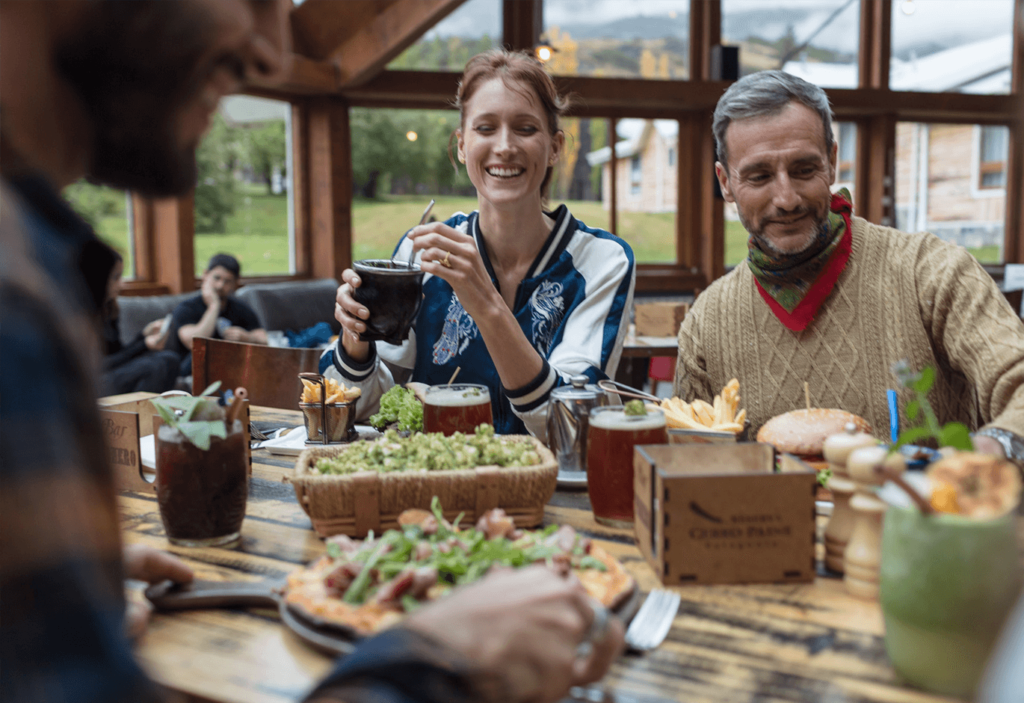
Die Versorgung mit Lebensmitteln und Wasser während des W-Treks ist ein wichtiger Aspekt deines Abenteuers. Die meisten Campingplätze und Schutzhütten haben Geschäfte und Restaurants, in denen du dich mit Vorräten eindecken und eine warme Mahlzeit genießen kannst. Aber wenn du dein eigenes Essen kochst, kannst du viel Geld sparen und deine Wanderung noch spannender machen.
Um sicherzustellen, dass du gut hydriert bist, solltest du eine wiederverwendbare Wasserflasche und einen Wasserfilter oder Reinigungstabletten mitnehmen. Trinkwasser ist überall im Park zu finden und hat eine ausgezeichnete Qualität. Wenn du deine Mahlzeiten und Wasservorräte planst, hast du die nötige Energie und Ausdauer, um das anspruchsvolle Gelände zu bezwingen und das Beste aus deinem W-Trek-Abenteuer zu machen.
Sicherheit und Erste Hilfe
Sicherheit hat beim W-Trek oberste Priorität. Hier sind einige wichtige Sicherheitstipps, die du beachten solltest:
- Bleib erreichbar und informiere die Menschen zu Hause über deine Pläne.
- Nimm ein aufgeladenes Telefon mit Notrufnummern mit.
- Erwäge, ein Satellitentelefon, einen Wanderführer oder eine Karte auf Papier mitzunehmen, um dich zu beruhigen und die Navigation zu erleichtern.
Es ist auch eine gute Idee, einen kleinen Erste-Hilfe-Kasten mit Pflastern, Schmerzmitteln und Medikamenten, die du vielleicht brauchst, mitzunehmen. Wenn du diese Sicherheitsvorkehrungen triffst und auf kleinere Verletzungen oder Unpässlichkeiten vorbereitet bist, kannst du ein erfolgreiches und angenehmes W-Trek-Erlebnis haben.
Alternative Wanderrouten im Torres del Paine National Park
Wenn du nach alternativen Wandermöglichkeiten im Torres del Paine National Park suchst, hast du Glück! Neben dem berühmten W-Trek gibt es noch einige andere spannende Wege, die du erkunden kannst. In diesem Abschnitt wird vorgestellt:
- Der anspruchsvollere und längere O-Rundkurs
- Eine Vielzahl von Tageswanderungen
- Kürzere Wanderungen, perfekt für alle, die wenig Zeit haben oder ein weniger anstrengendes Parkerlebnis suchen.
Der O-Kreislauf
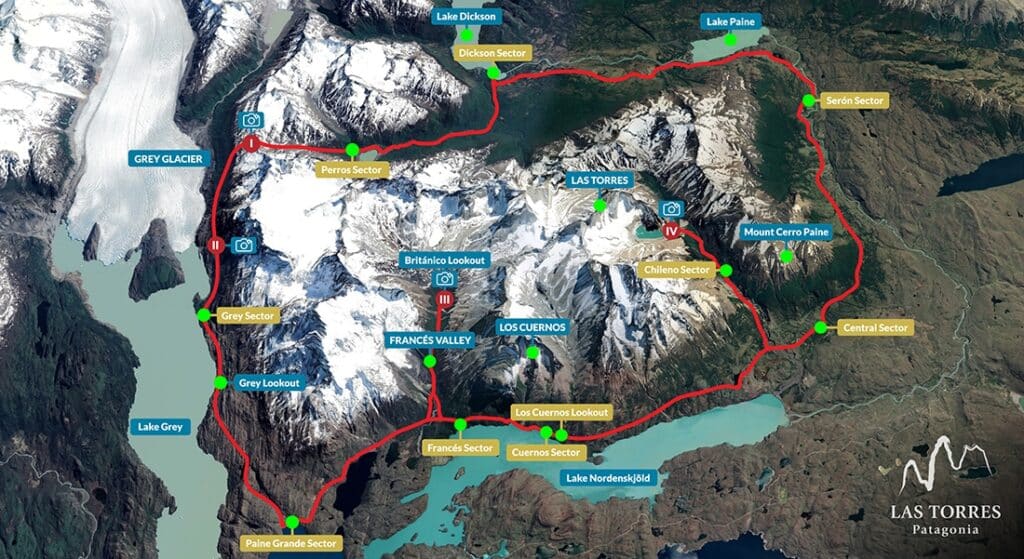
Der O Circuit ist eine unglaubliche Rundwanderung um die Cordillera del Paine, die etwa 136 Kilometer lang ist und etwa 6-10 Tage dauert. Dieser herausfordernde Trek umfasst die beliebte „W“-Route und die abgelegenere Rückseite und bietet eine einzigartige und lohnende Erfahrung für abenteuerlustige Wanderer.
Während der W-Trek für diejenigen geeignet ist, die eine kürzere und etwas einfachere Wanderung suchen, ist der O-Rundweg perfekt für diejenigen, die ein raueres und abgelegeneres Erlebnis suchen. Der O Circuit führt dich durch verschiedene Landschaften, darunter dichte Wälder, weite Ebenen und hoch aufragende Gipfel, und bietet dir ein wahres Eintauchen in die wilde und ungezähmte Schönheit Patagoniens.
Tageswanderungen und kürzere Wanderungen
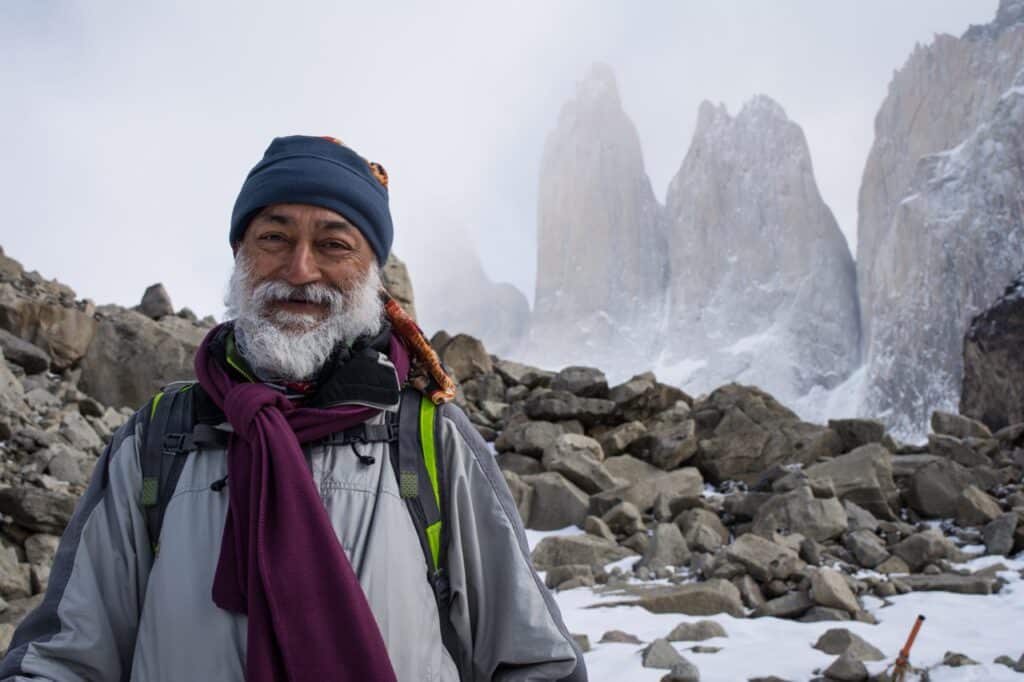
Für alle, die wenig Zeit haben oder ein weniger anstrengendes Erlebnis suchen, bietet der Nationalpark Torres del Paine eine Reihe von Tageswanderungen und kürzeren Trekkings an, darunter den beliebten Trek Torres del Paine. Einige der beliebtesten Tageswanderungen im Park sind:
- Mirador Las Torres
- Mirador Cuernos/Salto Grande
- Laguna Azul
- Salto Grande Wasserfall
Diese Wege bieten atemberaubende Ausblicke auf die berühmtesten Wahrzeichen des Parks und können in nur wenigen Stunden bewältigt werden.
Egal, ob du einen gemütlichen Spaziergang machen willst, um die atemberaubende Landschaft zu genießen, oder eine anspruchsvollere Tageswanderung, um an deine Grenzen zu gehen – Torres del Paine hat für jeden etwas zu bieten. Mit seinen vielfältigen Wanderwegen und atemberaubenden Landschaften ist der Park ein Wanderparadies, das nur darauf wartet, erkundet zu werden.
Tag Wanderung: Mirador Las Torres
Mirador Las Torres ist eine der beliebtesten Tageswanderungen im Torres del Paine Nationalpark und es ist leicht zu verstehen, warum. Dieser Weg führt dich zum Fuße der berühmten Granittürme des Parks – den Torres del Paine – und bietet dir einen atemberaubenden Blick aus der Nähe.
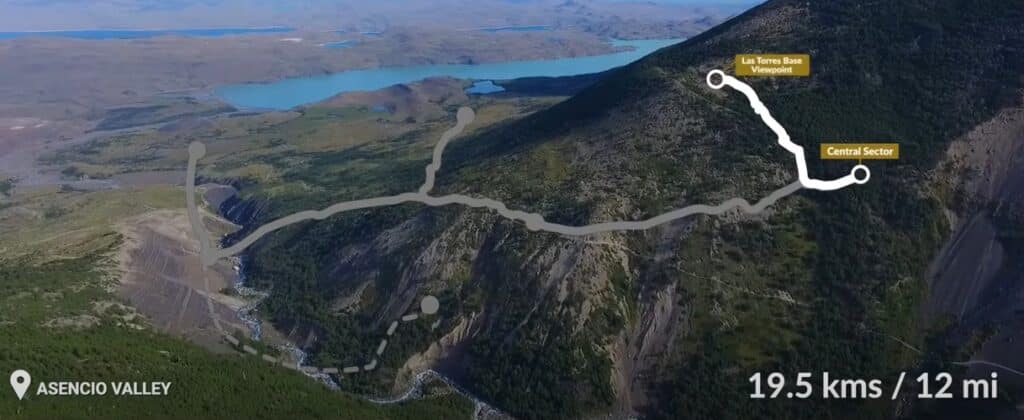
Die Wanderung ist eine Herausforderung, denn sie führt über eine Strecke von etwa 19 km (12 Meilen) hin und zurück und hat einen erheblichen Höhenunterschied. Aber die Mühe lohnt sich. Beim Aufstieg kommst du durch üppige Buchenwälder und über rauschende Flüsse, bevor du schließlich die türkisfarbene Lagune am Fuße der Türme erreichst. Der Anblick der Sonne, die auf den Türmen auf- oder untergeht, ist ein Spektakel, das du dir nicht entgehen lassen solltest und das diese Wanderung zu einem Muss für jeden Besucher des Parks macht.
Anreise zum Torres del Paine: Transportmöglichkeiten
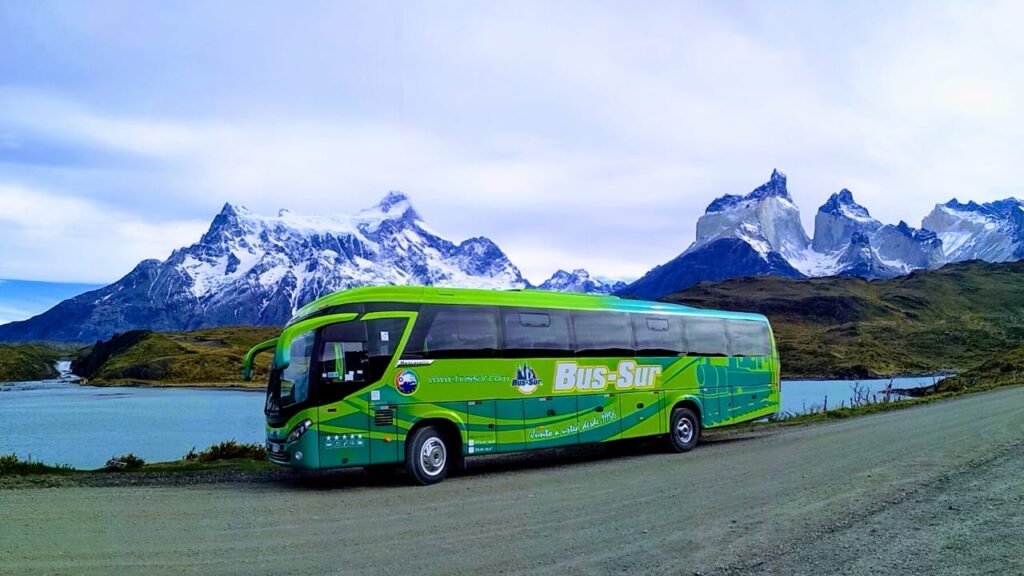
Der Torres del Paine Nationalpark ist einfacher zu erreichen, als du vielleicht denkst, denn es gibt mehrere Transportmöglichkeiten. In diesem Abschnitt findest du Informationen zu Busverbindungen und Autovermietungen, die dir bei der Planung deiner Reise zum Park helfen.
Egal, ob du die Bequemlichkeit der öffentlichen Verkehrsmittel oder die Flexibilität des Autofahrens bevorzugst, es gibt für jeden Reisenden eine passende Option.
Es gibt mehrere Busverbindungen, um Torres del Paine von nahegelegenen Städten wie Puerto Natales aus zu erreichen. Wir empfehlen dir entweder Bus-Sur oder Buses Fernandez für deine Reise nach Torres del Paine. Die Busfahrt von Puerto Natales nach Torres del Paine kostet nur 25 USD (hin und zurück), und du kannst deine Tickets online über Websites wie diese buchen:
Wenn du deine Busreise planst, denke daran, dass es bestimmte Abfahrtszeiten von Punta Arenas nach Puerto Natales gibt, wie zum Beispiel:
Wenn du deine Busreise im Voraus planst, kannst du eine reibungslose und problemlose Fahrt zum Torres del Paine Nationalpark sicherstellen.
Busse im Torres del Paine National Park
Sobald du im Torres del Paine Nationalpark bist, stehen Shuttlebusse bereit, die dich zwischen den wichtigsten Punkten des W-Treks transportieren. Diese Busse fahren den ganzen Tag über in regelmäßigen Abständen und bieten eine bequeme Möglichkeit, den Park zu erkunden und deine Beine zwischen den Wanderungen auszuruhen. Überprüfe unbedingt den Fahrplan und plane deine Wanderungen entsprechend, um diesen Service optimal zu nutzen. Der Busservice innerhalb des Parks ist eine hervorragende Möglichkeit, um Energie für den Weg zu sparen und in kürzerer Zeit mehr Strecke zurückzulegen, was dein Gesamterlebnis dieser atemberaubenden Landschaft verbessert.
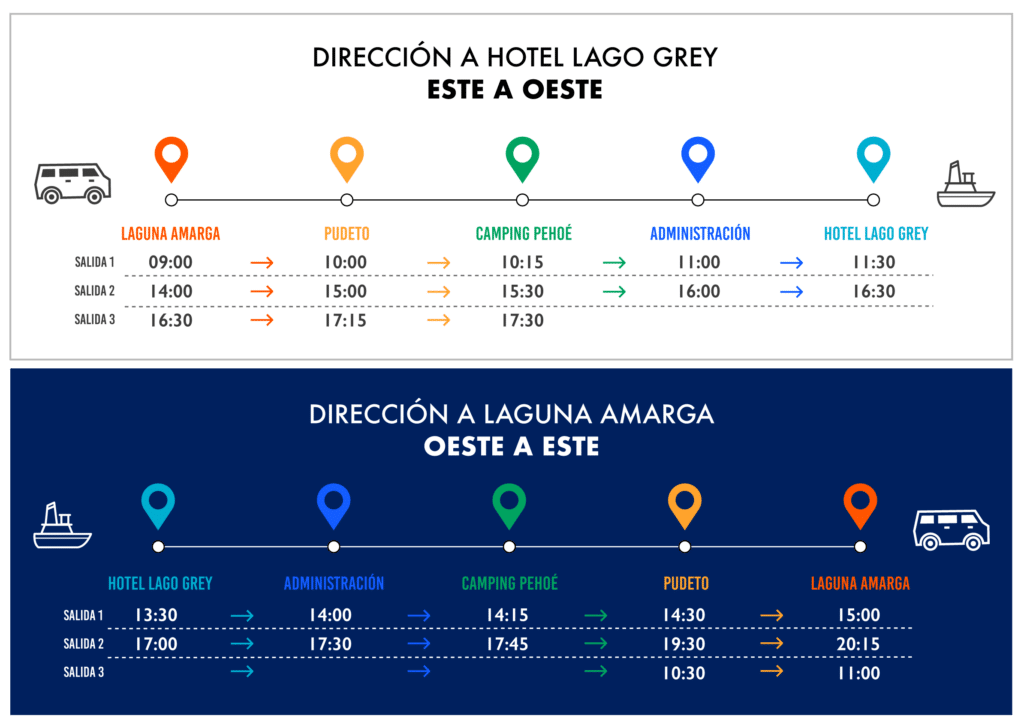
Autovermietung

Für diejenigen, die eine flexiblere und unabhängigere Reiseoption bevorzugen, ist das Mieten eines Autos eine gute Wahl. Um ein Auto in Patagonien zu mieten, musst du einen gültigen Führerschein aus deinem Land haben und mindestens 21 Jahre alt sein. Die allgemeinen Kosten für die Anmietung eines Autos in Patagonien können variieren, aber im Durchschnitt kannst du davon ausgehen, dass du etwa 76 US-Dollar pro Tag für einen Kleinwagen bezahlst.
Zu den am besten bewerteten Autovermietungen in Patagonien gehören:
- Autos entdecken
Wenn du ein Auto mietest, hast du die Freiheit, den Torres del Paine Nationalpark in deinem eigenen Tempo zu erkunden und unterwegs Pausen einzulegen, um die atemberaubende Landschaft zu genießen.
Das Wichtigste für den W-Trek einpacken
Die richtige Ausrüstung zu packen ist entscheidend für ein erfolgreiches und angenehmes W Trek-Erlebnis. Dieser Abschnitt enthält eine umfassende Packliste für Wanderer, die sich auf den W-Trek begeben, einschließlich Kleidung, Campingausrüstung und Elektronik.
Indem du sicherstellst, dass du alles Notwendige dabei hast, bist du gut vorbereitet, um das herausfordernde Terrain zu meistern und das Beste aus deinem Abenteuer in der wilden und ungezähmten Schönheit Patagoniens zu machen.
Kleidung und Schuhe
Bei der Wahl der Kleidung und des Schuhwerks für den W-Trek müssen die Art des Geländes, die Wetterbedingungen und die Länge des Treks berücksichtigt werden. Hier sind einige Empfehlungen:
- Packe eine feuchtigkeitsableitende Basisschicht ein
- Nimm eine Fleece-Schicht für Isolierung und Wärme mit
- Vergiss nicht eine wasserdichte Jacke und Hose zum Schutz vor Regen und Wind
Mit diesem Schichtensystem kannst du deine Kleidung schnell und effizient anpassen, wenn sich das Wetter auf der Wanderung ändert.
Die ideale Schuhwahl für den W Trek in Patagonien sind wasserdichte Volllederstiefel mit tiefem Profil. Außerdem sind Gamaschen eine gute Möglichkeit, deine Füße trocken zu halten und zu verhindern, dass Wasser über die Oberseite der Stiefel eindringt. Wenn du in die richtige Kleidung und das richtige Schuhwerk investierst, sorgst du für deinen Komfort und deine Sicherheit auf dem W-Trek, damit du die unglaubliche Landschaft und das Abenteuer, das dich erwartet, voll und ganz genießen kannst.
Campingausrüstung
Campingausrüstung ist für dein W-Trek-Abenteuer unerlässlich. Investiere in:
- Ein gutes Zelt, wie das Big Agnes Battle Mountain 2 oder das ALPS Mountaineering Highlands Tent
- Ein leichter und kompakter Schlafsack, der für kalte Temperaturen geeignet ist
- Eine Rollmatte zum Schlafen
- Ein Mess Kit zum Kochen
Vergiss außerdem nicht zu packen:
- Basisschichten
- Trekkinghose
- Wandersocken
- Eine wasserdichte Rucksackhülle
Mit der richtigen Campingausrüstung bist du gut vorbereitet, um das herausfordernde Terrain zu meistern und das Beste aus deinem W-Trek-Abenteuer in den atemberaubenden Landschaften Patagoniens zu machen.
Elektronik und Navigation
Elektronik und Navigationsgeräte können während deines W-Trek-Abenteuers von unschätzbarem Wert sein. Ein GPS-Gerät wie das Garmin inReach Mini oder Handgeräte von Outdoor Gear Lab und Switchback Travel können dir helfen, auf dem richtigen Weg zu bleiben und dich durch den Park zu navigieren. Außerdem können Smartphone-GPS-Apps wie Gaia GPS und AllTrails nützlich sein, um dich auf dem Weg zu navigieren.
Denke daran, ein aufgeladenes Telefon mit Notrufnummern, ein Satellitentelefon (falls vorhanden) und eine Stirnlampe für Wanderungen am frühen Morgen oder in der Nacht mitzunehmen. Wenn du die richtigen elektronischen Geräte und Navigationsinstrumente einpackst, kannst du ein sicheres und angenehmes W-Trek-Erlebnis haben und die atemberaubenden Landschaften des Torres del Paine Nationalparks in vollem Umfang erkunden.
Zusammenfassung
Zusammenfassend lässt sich sagen, dass der W Trek im Torres del Paine Nationalpark in Patagonien ein unvergessliches Abenteuer durch einige der atemberaubendsten Landschaften der Erde bietet. Wenn du unserem umfassenden Reiseführer folgst, bist du gut vorbereitet, um das herausfordernde Terrain zu meistern, deine Unterkünfte und Mahlzeiten zu planen und das Beste aus deiner Zeit in dieser außergewöhnlichen Region zu machen. Also schnüre deine Wanderschuhe, packe deine Taschen und mach dich bereit für das Abenteuer deines Lebens!
Häufig gestellte Fragen
Wie lang ist der w-trail in patagonien.
Der W-Trek in Patagonien ist eine mittelschwere Wanderung über 76 km (46 Meilen) und dauert in der Regel 4-5 Tage. Sie umfasst hauptsächlich sanftes Gelände mit einigen anspruchsvollen Anstiegen von bis zu 800 m. Stelle sicher, dass du auf unterschiedliche Wetterbedingungen vorbereitet bist.
Wo schläfst du auf dem W-Trek in Patagonien?
Auf dem W Trek in Patagonien kannst du in Gemeinschaftsschlafsälen schlafen oder ein Upgrade auf eine private Alternative buchen. Entlang der Route gibt es fünf Schutzhütten/Campingplätze: Grey, Paine Grande, Frances, Cuernos und Central – alle Details findest du in unserem Beitrag!
Was ist der härteste Treck in Patagonien?
Der El Chaltén Trek in Patagonien ist eine der schwierigsten Wanderungen mit anspruchsvoller Natur und Blick auf den Cerro Solo. Mach dich also auf einen vollen Test gefasst und genieße die atemberaubende Landschaft in dieser weniger bekannten Gegend!
Wann ist die beste Jahreszeit, um den W-Trek zu wandern?
Die beste Jahreszeit für den W-Trek ist von November bis Anfang März, wenn die Temperaturen mild sind und das Wetter stabiler für optimale Trekkingbedingungen ist.
Wie lange dauert es, den W-Trek abzuschließen?
Du kannst den W Trek in 4-5 Tagen bezwingen, je nachdem, wie schnell du gehst und welche Route du nimmst.
PAINE TREKK
Buche eine 30-minütige Beratung mit einem Reiseexperten, um deine geplante Reise zu optimieren. Ich helfe dir bei der Organisation deines Trekkings im Torres del Paine und sorge dafür, dass es ein unvergessliches Abenteuer wird.
PAINE TOWERS
Sparen Sie bei Ihrer Reise nach Patagonien
- Buchen Sie Ausflüge auf English.
- Suchen Sie nach günstigen Flügen.
- Die besten Bücher und Reiseführer.
Buche deine Ausflüge
Suchen sie ihr hotel, zusammenhängende posts.
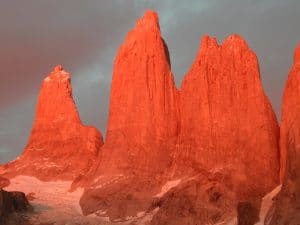
Der Nationalpark Torres del Paine: Wo er liegt, wie du hinkommst und was es zu sehen gibt…
Der 1978 von der UNESCO zum Biosphärenreservat erklärte Nationalpark Torres del Paine (in der XII. Region
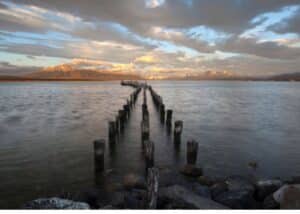
Wo ist Puerto Natales
Im Süden von Chile ist Puerto Natales einer der obligatorischen Punkte für diejenigen, die den Torres
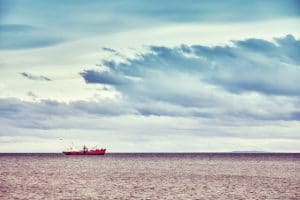
Wo ist Punta Arenas
Punta Arenas liegt an der Südspitze Südamerikas, nördlich der Magellanstraße. Die Stadt, die oft als „das

- Torres del Paine
Torres del Paine Torres del Paine ist ein Nationalpark im chilenischen Patagonien. Es befindet sich im
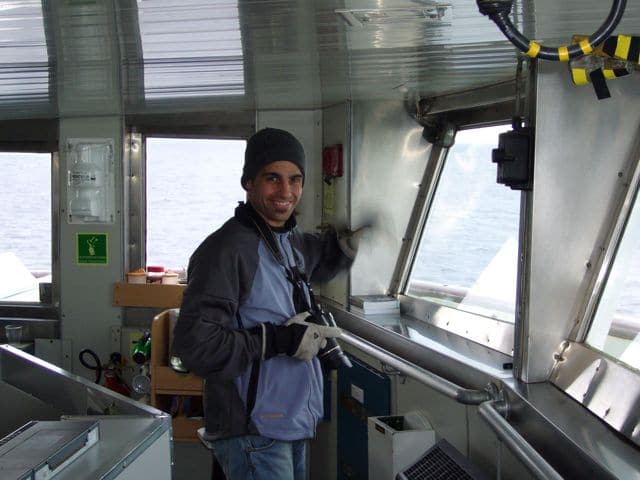
Über den Autor
Ich bin Matias, geboren in Patagonien und ein Liebhaber meines Landes.
Seit mehr als 20 Jahren helfe ich ausländischen Reisenden, ihre Reise nach Patagonien zu organisieren .
Ich verwalte auch diese exotische Unterkunft an der Atlantikküste.

Neueste Beiträge
Kannst du von buenos aires nach patagonien fliegen, gibt es einen zug von buenos aires nach patagonien, dein ultimativer perito moreno gletscher reiseführer, wie man nach patagonien kommt: ein umfassender leitfaden, die beste gepäckaufbewahrung in buenos aires: sichere und bequeme optionen für reisende, tango-nächte: wo man in buenos aires tango tanzen kann, wo man in buenos aires tango sehen kann, was ist eine milonga die seele des argentinischen tangos enthüllen, sparen sie bei ihrer reise.
- Buchen Sie Ihre Ausflüge
- Suchen Sie nach günstigen Flügen
Terms & Conditions / Privacy Policy
- Südamerika Reiseberatung
- Argentinien
- Unterkünfte
- Geld und Finanzen
- Essen & Trinken
- Reisegedanken
- Reise mit mir
- Mein Chile Reiseführer “Quer durch Chile”
- Mein Patagonien Reiseführer
- Mein Foto-Onlineshop
- Media & PR
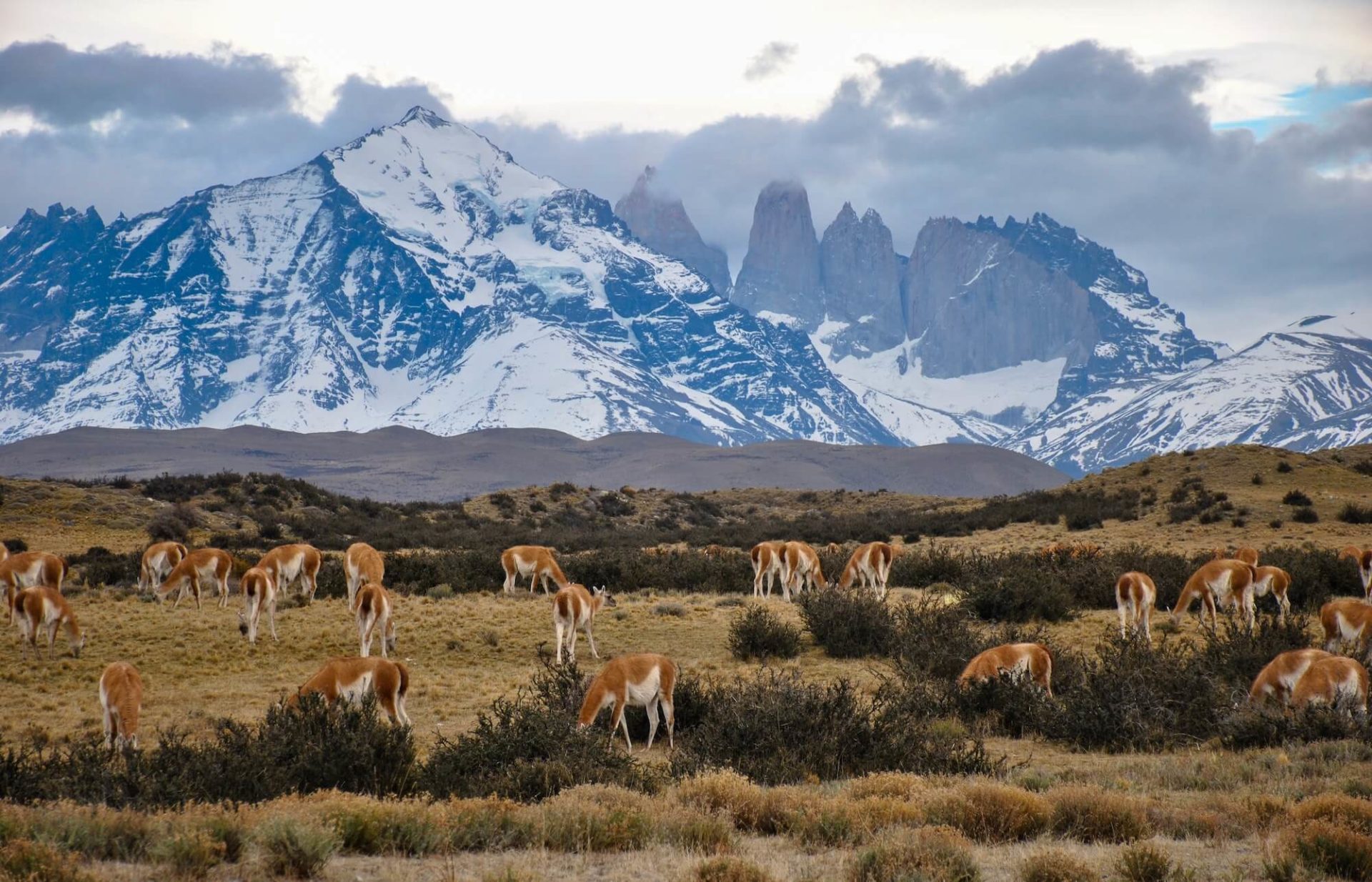
Torres del Paine Nationalpark – Der ultimative Guide 2023/24
Der Torres del Paine Nationalpark gehört zu den bekanntesten und beliebtesten Nationalparks in Chile und zählt zu den schönsten Parks in ganz Südamerika.
Wer kennt es nicht, dieses bekannte Bild der spitzen Granittürme des Torres del Paine Nationalparks inmitten unberührter Natur? Jahr für Jahr zieht es tausende Wanderer in den tiefen Süden des Kontinents, um eine der schönsten Wanderungen zu machen, die diese Welt zu bieten hat.
Ich weiß selbst aus Erfahrung, wie überfordernd die Planung für Wanderungen im Park sein kann und habe dir hier alles aufgeschrieben, was du für einen Besuch des Torres del Paine Nationalpark wissen musst.
Wo ist der Torres del Paine Nationalpark?
Das Schutzgebiet liegt im chilenischen Teil von Patagonien nahe dem Ort Puerto Natales und bietet ein vielseitiges Outdoor-Erlebnis mit mächtigen Gletschern, schroffen Bergen und glasklaren Seen direkt am südpatagonischen Eisfeld, dem größten Gletschergebiet auf der Südhalbkugel außerhalb der Antarktis.
Am besten lässt sich der Torres del Paine Nationalpark auf einer der Mehrtages-Trekking-Routen, dem W-Trek oder, für ambitionierte und erfahrene Wanderer, auf dem O-Trek erkunden.
In diesem Beitrag erfährst du alles, was du im Vorfeld über einen Besuch im Torres del Paine Nationalpark wissen musst:
Wie kommt man in den Torres del Paine Nationalpark?
Von Santiago de Chile kannst du mit LATAM , Sky Airline oder Jetsmart nach Punta Arenas fliegen (Die Preise beginnen bei frühzeitiger Buchung bei 50 € mit Handgepäck).
Von Punta Arenas (Flughafen oder Stadtzentrum) aus fahren reguläre Busse mehrmals täglich nach Puerto Natales, dem Ausgangspunkt für einen Besuch des Torres del Paine Nationalpark. (Buses Fernandez, Buses Pacheco oder Bus Sur) Die Tickets für Bus Sur kannst du vorab online auf Recorrido.cl kaufen.
Alternativ kannst du mit oben beschriebenen Airlines auch direkt nach Puerto Natales fliegen, was allerdings etwas teurer ist, aber ideal für Reisende mit weniger Zeit. In der Hauptsaison (Dezember – Februar gehen täglich Flüge mit Sky oder LATAM von Santiago nach Puerto Natales.
Anreise zum Torres del Paine Nationalpark aus Argentinien
Von Buenos Aires aus kannst du mit Aerolineas Argentinas oder Fly Bondi nach El Calafate fliegen und dir dort den mächtigen Perito-Moreno Gletscher ansehen. Von El Calafate aus gibt es tägliche Busverbindungen nach Puerto Natales. Die Strecke beträgt 350 km und die Fahrt dauert ca. sechs Stunden mit Grenzüberquerung ( Bus Sur , 28.000 CLP (etwa 30 Euro), Tickets kannst du vorab online kaufen.
Die Anreise zum Torres del Paine Nationalpark aus Chile
Die Parkgrenze liegt ca. 115 km von Puerto Natales entfernt. Du erreichst Puerto Natales per Flug von Santiago aus. Wenn du deinen Besuch des Torres del Paine Nationalparks mit einem Besuch von Punta Arenas und der Isla Magdalena (mit tausenden von Pinguinen) kombinieren willst, dann kannst du nach Punta Arenas fliegen und mit dem Bus weiter nach Puerto Natales (Kosten 10.000 CLP mit Bus Sur )
Von Oktober bis April fahren täglich mehrere Busunternehmen von Puerto Natales zum Parkeingang Amarga und zum Katamaran (Eingang Pudeto), dem Ausgangspunkt der Wanderung auf dem W-Trek (je nachdem, in welche Richtung du läufst).
Unten findest du die Abfahrtszeiten von Bus Sur, sie sollten aber vor Ort nochmal auf Aktualität gecheckt werden (Am besten bei deiner Ankunft am Busterminal in Puerto Natales). Hin- und Rückfahrt in den Park kosten CLP 24.000 = ca. 27 €.
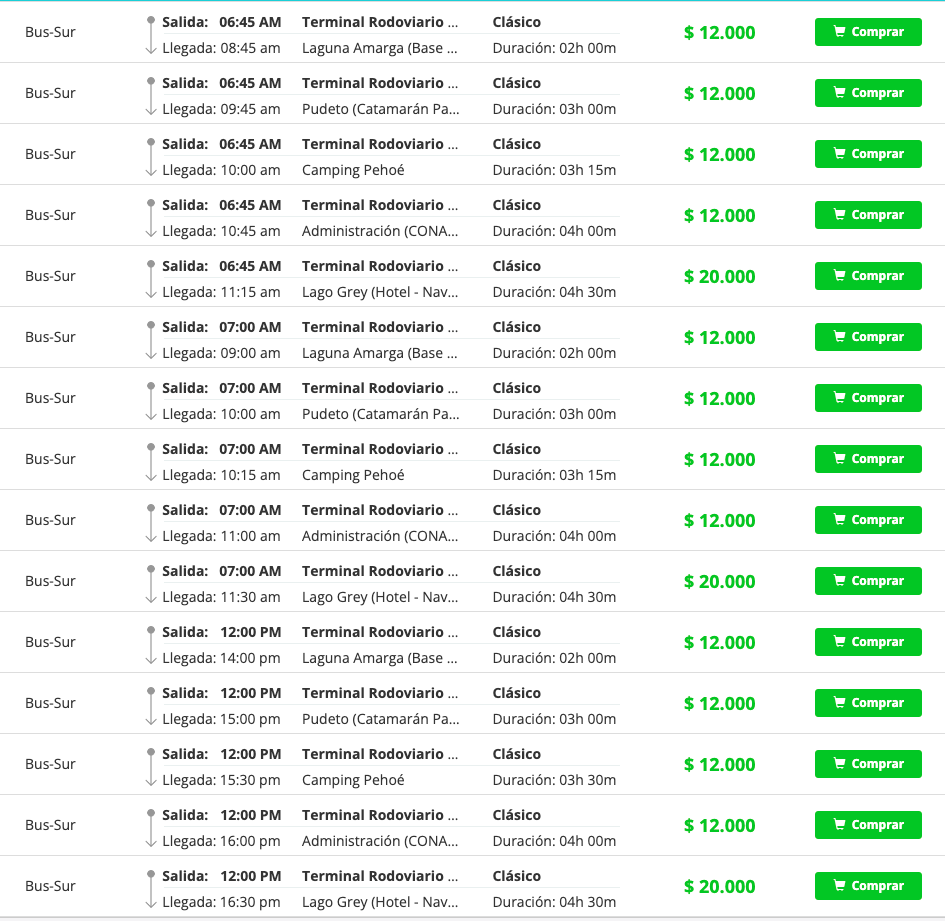
Mein Tipp: Du kannst die Tickets für Bus Sur direkt online kaufen, so musst du dich nicht vor Ort darum kümmern. Ansonsten solltest du am besten gleich nach deiner Ankunft in Puerto Natales die Tickets erwerben, denn gerade in der Hauptsaison sind die Sitze schnell ausverkauft.
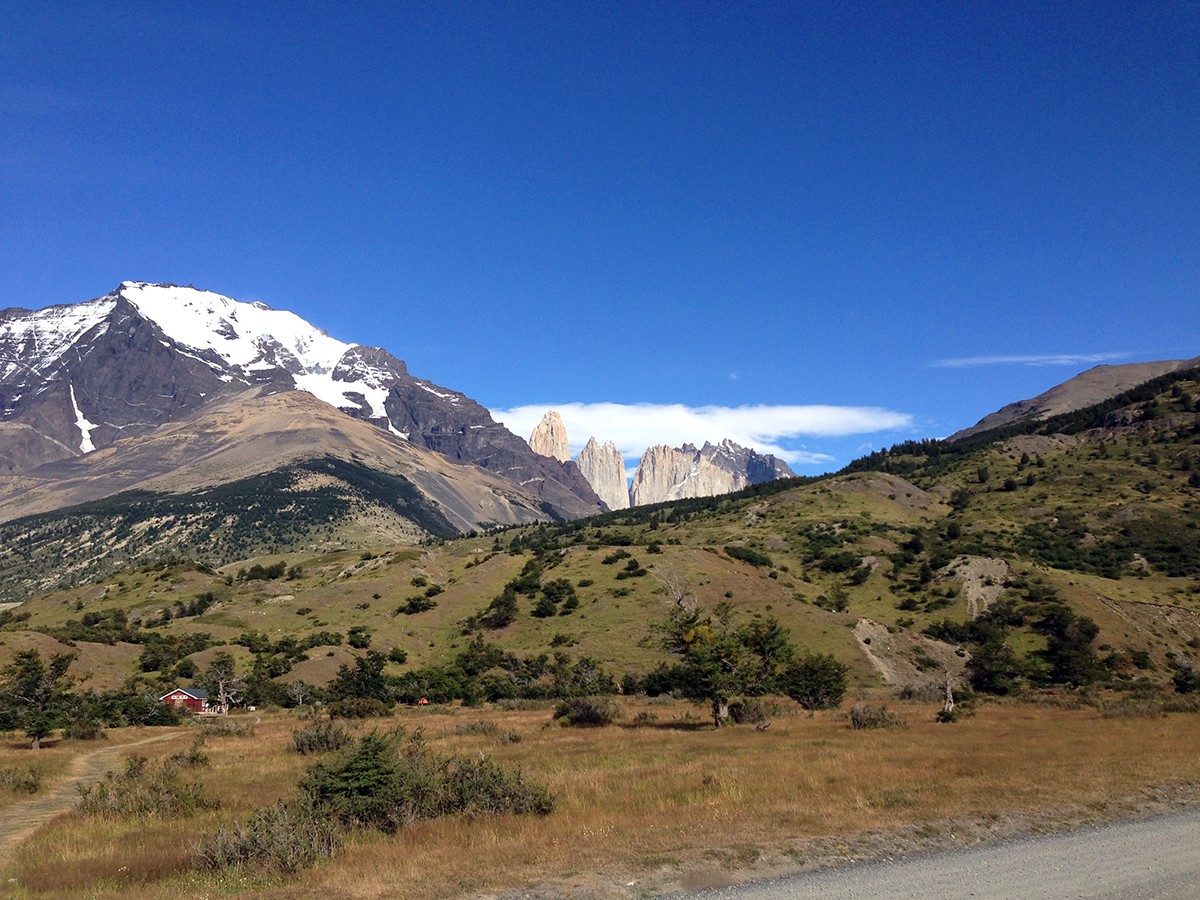
Wann ist die beste Reisezeit für den Torres del Paine Nationalpark?
Patagonien und der Nationalpark Torres del Paine sind das ganze Jahr über eine Reise wert. Natürlich ist der Winter eine ganz besondere Herausforderung, hat aber auch seinen Reiz, den Park in einer verschneiten Winterlandschaft zu erleben. Hier muss allerdings beachtet werden, das die Transportmöglichkeiten eingeschränkt und viele Refugios über den Winter geschlossen haben. Es bedarf einer guten Vorbereitung und guter Ausrüstung.
Ich würde dir den Frühling (Ende September bis Anfang Dezember) für den Besuch empfehlen. Das Klima ähnelt dem im Sommer und die Zahl von Parkbesuchern hält sich in noch in Grenzen. In dieser Zeit fangen die Wildblumen Patagoniens zu blühen an – einer der schönsten Zeitpunkte für den Besuch des Parks.
Die Hauptsaison im Sommer , also von Dezember bis Anfang März (im Februar sind in Südamerika Sommerferien) zieht zweifellos die meisten Besucher in den Nationalpark Torres del Paine. Es ist die wärmste Jahreszeit in Patagonien, allerdings ist der Park sehr überlaufen.
Im Herbst von Mitte März bis Juni beginnt die Landschaft im Torres del Paine, sich in herbstliches Rot und Gelb zu verwandeln. Eine magische Zeit! Im Herbst besuchen weniger Menschen den Park, alles geht ein wenig ruhiger zu. Ideal um die Ruhe und Einsamkeit Patagoniens zu genießen.
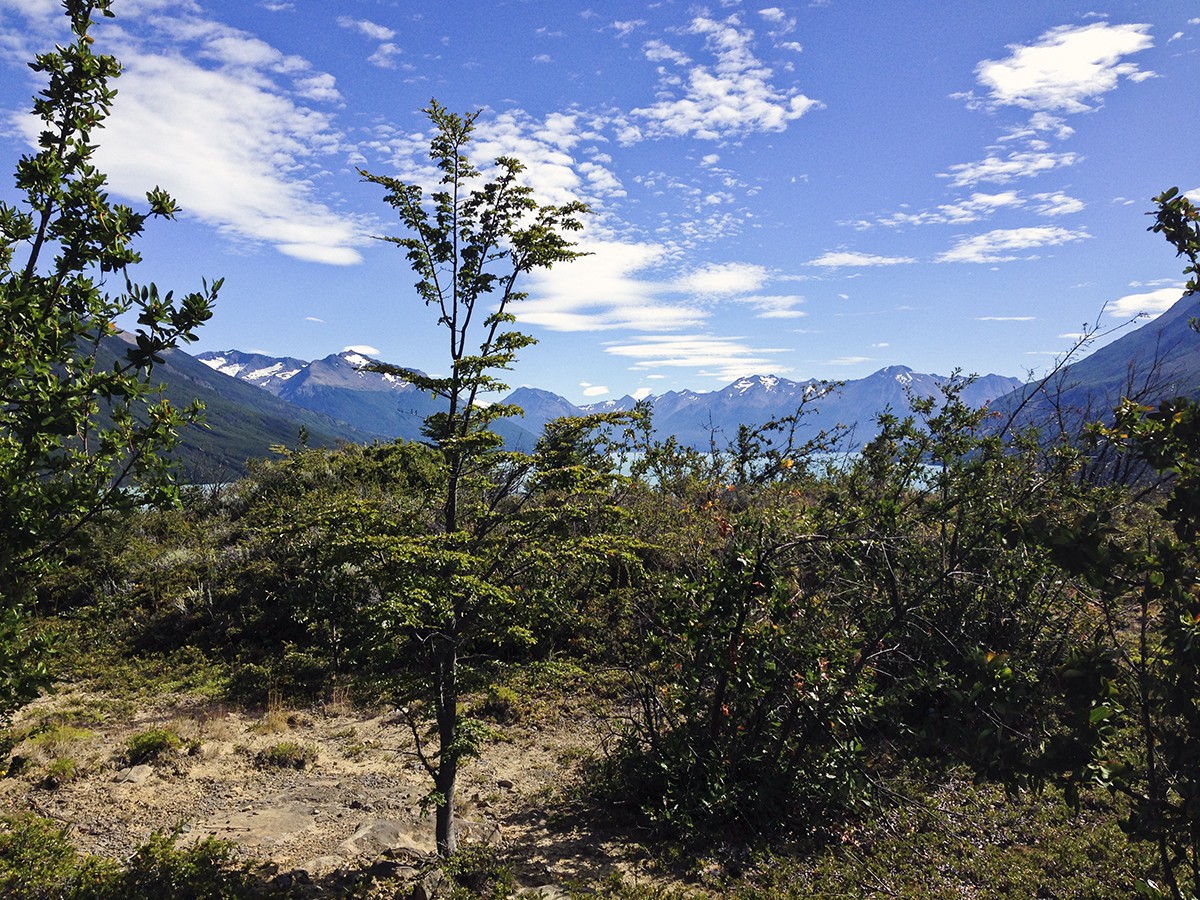
Unterkünfte in Puerto Natales
Puerto Natales ist das Tor zum Torres del Paine Nationalpark und dementsprechend gibt es hier Unterkünfte aller Art. Wichtig ist, dass die Duschen heiß sind, die Bettdecken entsprechend warm (es kann in Patagonien schließlich ziemlich kalt werden) und man ein ordentliches Frühstück zur Stärkung vor und nach den Wanderungen bekommt. Hier sind meine Favoriten:
$ Hostel Treehouse: Schönes, kleines Hostel mit stilvollen Zimmern. Pancho ist eine Seele von Besitzer und sehr freundlich und hilfsbereit. Er kann dir einige Tipps über Ausflüge in der Gegend geben. Früh buchen, da die Kapazität begrenzt ist.
$$ DT Loft: Schönes Apartment, mit viel Liebe zum Detail eingerichtet. Leckeres Frühstück und zentral gelegen. Etwas teurer, aber es lohnt sich!
$$ Weskar Lodge: Die gemütliche Lodge hat einen tollen Ausblick auf die Berge, gemütliche Zimmer und ein sehr gutes Restaurant.
$$ AKA Patagonia: Hier bekommst du deine eigene kleine Hütte mit Panoramafenster, mit Blick auf den blauen Himmel und die schneebedeckten Berggipfel. Abends kannst du in einem warmen Whirlpool im Freien entspannen.
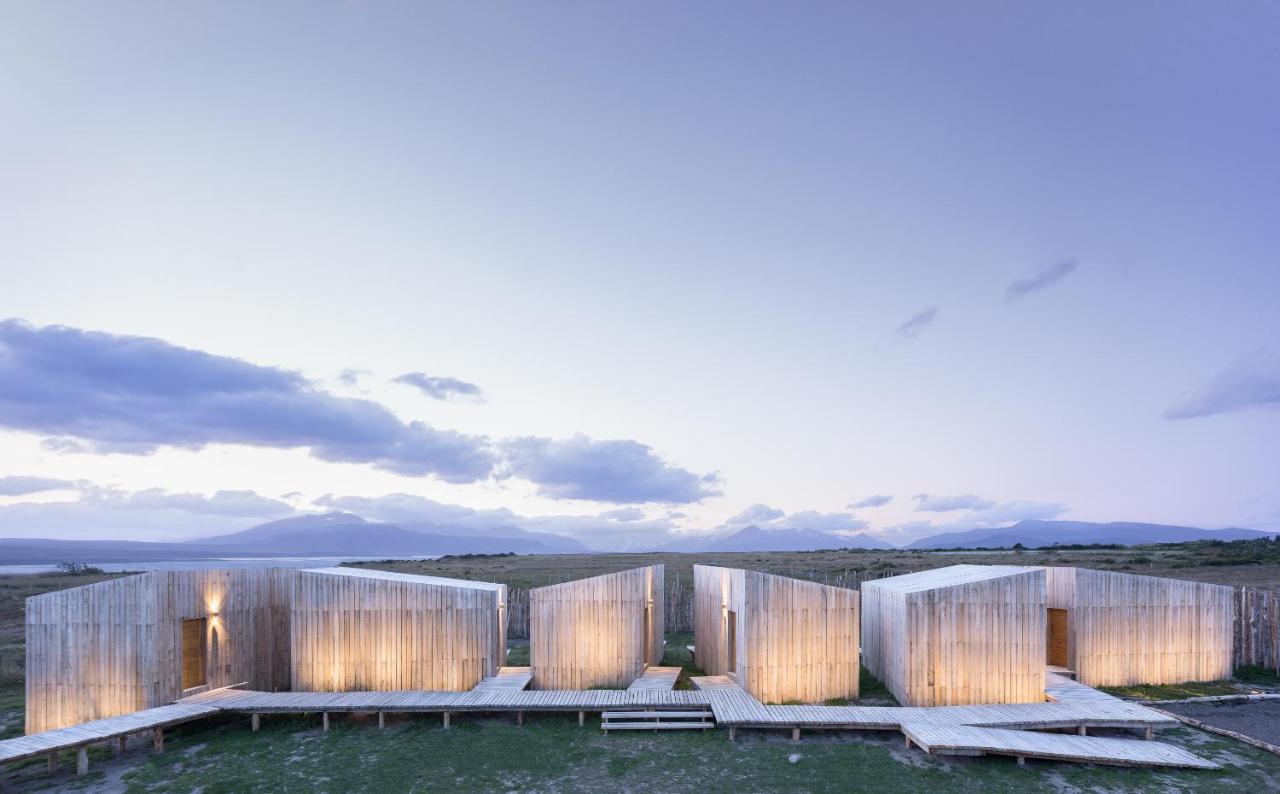
Unterkünfte im Torres del Paine Nationalpark
Du kannst natürlich auch im Park selbst übernachten, was allerdings wesentlich teurer ist. Bei den meisten Unterkünften im und am Rande des Parks bietet sich ein Mietwagen an, da einige abgelegen sind. Der Vorteil ist, dass du eine kurze Anreise hast und auch von den Unterkünften selbst viele Touren und Wanderungen unternehmen kannst.
$$ Cabañas Lago Tyndall: Wunderschöne Cabañas in herrlicher Lage am Rande des Torres del Paine Nationalparks. Fantastische Aussicht und wilde Pferde, die morgens vor dem Haus grasen. Die Miniküche und das Wohn-/Esszimmer sind sehr praktisch. Gutes Preis-Leistungs-Verhältnis.
$$$ Pampa Lodge : Die Pampa Lodge ist eines der wenigen Hotels, die von Gauchos geführt werden. In diesem Hotel tauchst du von dem Moment an in die patagonische Kultur ein, in dem du die Schwelle überschreitest. Verbringe deine Tage beim Reiten mit den Meistern und entspanne dich am Abend am Kamin und beobachte durch die Panoramafenster, wie sich die Berge verfärben.
$$$ Eco Camp Patagonia : Diese Unterkunft zählt wohl zu den schönsten und exklusivsten der Welt aufgrund ihrer einmaligen Lage mit direktem Blick auf die Türme des Paine-Massivs. Die Räumlichkeiten sind einzigartig und gemütlich, das Essen ein wahrer Genuss und die Atmosphäre ist warm und authentisch.
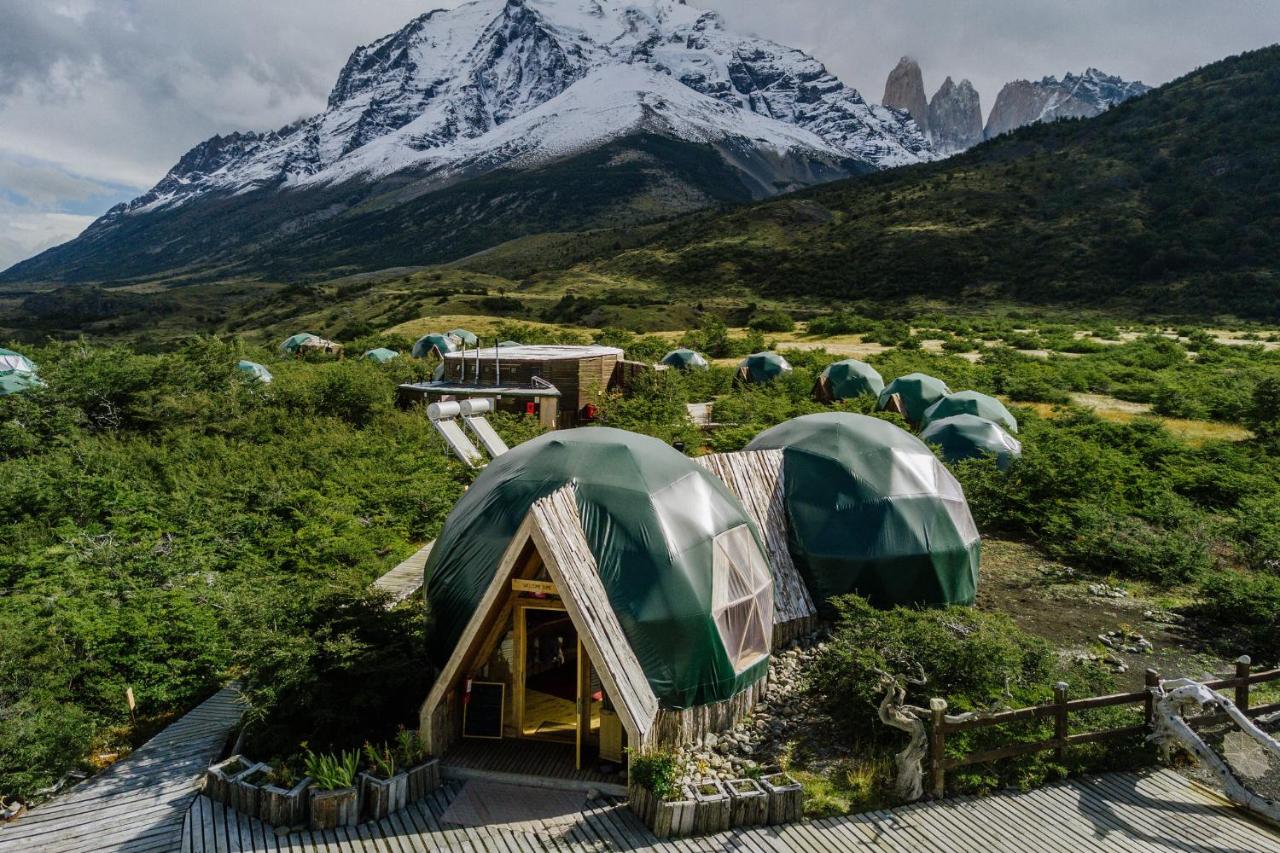
Die Eingänge im Torres del Paine Nationalpark
Es gibt zwei Eingänge zum Park, die du je nach Route wählen kannst. Wenn du planst, das “W” oder das “O” von Ost nach West zu laufen, bringt dich der Bus von Puerto Natales zum Eingang der Laguna Amarga , von wo aus du einen Shuttle zum Ausgangspunkt ( Besucherzentrum Torres del Paine , CLP 4.000 ≈ 5 €) nehmen kannst. Du kannst die Strecke alternativ auch zu Fuß zurücklegen (7 km).
Es gibt noch einen weiteren Eingang (Pudeto). Um von dort in den Park zu gelangen, musst du den Katamaran über den Lago Pehoé (CLP 25.000 ≈ 26 € einfacher Weg) nehmen. Du startest dann ab dem Campingplatz Paine Grande deine Wanderung.
Eintritt in den Torres del Paine Nationalpark
Der Nationalpark wird von der chilenischen Forstbehörde CONAF betrieben und ist grundsätzlich das ganze Jahr geöffnet. Allerdings ist im Winter der “O-Trail” und meist auch das Valle Frances (Teil des “W”) nicht immer zugänglich und man sollte sich vorab über die Gegebenheiten informieren.
Am besten besorgst du dir die Eintrittskarte für den Nationalpark vor deiner Reise online. Gehe dazu auf Pase Parques und wähle dort im Menü Parque Nacional Torres del Paine aus. Gebe deine Daten ein und du kannst deine Tickets bequem per Paypal zahlen.
Du kannst bei der Buchung angeben, wieviele Tage du den Park besuchen willst. Das ist gut für Leute, die keine komplette Wanderung machen, sondern nur die Highlights sehen möchten und an mehreren aufeinanderfolgenden Tagen den Park betreten.
Wenn du das W- oder den O-Trail laufen willst, zahlst du nur einmal 44.500 CLP und kannst für die Zeit deiner Wanderung im Park verbleiben.
Erwachsene (+18 Jahre alt) Bis zu 3 Tage Ticket $ 31.200 3+Tage Ticket $ 44.500
Wenn man den Park mit dem Bus erreicht, wird man zur Registrierung geführt. Man erhält in der Regel (ansonsten einfach fragen) auch eine Karte mit allen wichtigen Informationen, so dass man sich im Voraus keine kaufen muss.
Eine Belehrung erklärt die Sicherheitsbestimmungen im Park, da bereits mehrfach durch unsachgemäßen Umgang mit Feuer schwere Waldbrände ausgebrochen sind (Zuletzt 2012, als ein israelischer Wanderer Klopapier verbrannt und einen Teil des Parks abgefackelt hat).
Aus diesem Grund sollte man nur einen Gaskocher mitnehmen und diesen in den Camps in Innenräumen oder an den dafür ausgewiesenen Stellen verwenden. Offenes Feuer ist verboten und wird mit drastischen Strafen geahndet. Also immer schön vorsichtig!
Wie buche ich Campingplätze im Torres del Paine Nationalpark?
In den letzten Jahren hat sich der W-Trek und die O-Wanderung durch den Torres del Paine Nationalpark zu einer der gefragtesten Aktivitäten des südamerikanischen Kontinents entwickelt. Diese Popularität (allein im Jahr 2019 haben die Besucherzahlen eine Viertelmillion erreicht) hat jedoch zu enormen Schwierigkeiten für potenzielle Besucher geführt, was das Buchen von Zeltplätzen im Park angeht.
Je früher du dich an die Planung setzt, umso größer die Chancen, noch einen Platz zu ergattern. Die Besucher beginnen immer früher im Jahr zu reservieren, so dass die Verfügbarkeit für diejenigen, die später im Jahr buchen möchten, geringer ist.
Als jemand, der sowohl den W-Trek als auch das O gewandert ist, habe ich den Prozess der Reservierung von Torres del Paine Campingplätzen mehrfach durchlaufen und zeige dir, wie und wo du am besten buchst. Die Campingplätze im Park werden von 2 verschiedenen Anbietern verwaltet:
Die Campingplätze von Las Torres
Die Campingplätze Frances, Cuernos, Chileno und Serron (nur O-Trail) gehören zu Las Torres (früher Fantastico Sur). In diesen Camps kannst du Betten in Mehrbettzimmern oder bereits fertig aufgebaute Zelte mit Matratze, Schlafsack und sogar Lunchpakete buchen, so dass du diese Ausrüstung nicht tragen musst. Um einen einfachen Stellplatz, ein fertiges Zelt oder ein Bett im Mehrbettzimmer in einem Refugio zu buchen, gehe auf die Webseite zu folgender Seite .
Hier kannst du W-Trek und das Datum angeben, dann werden dir alle verfügbaren Campingplätze und Refugios angezeigt. Wenn du Schwierigkeiten hast, eine Reservierung vorzunehmen, kontaktiere sie per E-Mail unter [email protected] . Die Mitarbeiter sprechen gut Englisch. Außerdem haben sie ein Büro in Puerto Natales: Esmeralda 661, Puerto Natales.
Ich persönlich empfehle die bequemen, bereits fertigen Zelte, da du dort im Gegensatz zu den Mehrbettzimmer mehr Privatsphäre hast.
Übersicht der Preise für die Saison 23/24 :
Vollständig ausgestatteter Zeltplatz: Wenn du ins Camp kommst, warten dein Zelt und dein Schlafsack schon auf dich. Das Zelt steht auf einer hölzernen Plattform und ist mit einem Schlafsack und einer Isomatte ausgestattet. Die Sanitäranlagen werden gemeinsam genutzt und verfügen über Duschen mit heißem Wasser (nach einem Zeitplan). Maximal finden 2 Personen im Zelt Platz.
Preise für die Saison 23/24:
- Einzelbelegung: $90.00
- Doppelbelegung: $220.00
Individueller Zeltplatz : Für Wanderer mit eigenem Zelt. Die Zeltplätze liegen auf einer Wiese oder auf einer Holzplattform, je nachdem, wie die Platzverhältnisse sind. Du schlägst dein eigenes Zelt auf, schläfst in deinem eigenen Schlafsack und hast Zugang zu den Sanitäranlagen mit heißen Duschen (nach einem Zeitplan).
- Eine Person: $51.00
- Zwei Personen: $60.00
Mietpreise pro Nacht :
- Schlafsack $28.00
- Matratze $10.00
- Zelt (max. 2 Personen) $46.00
Verpflegung:
- Halbpension $70.00
- Vollpension $100.00
- Abendessen $50.00
- Frühstück $28.00
- Mittagessen $30.00
- Lunchpaket $30.00
Die Campingplätze von Vertice Patagonia
Die zweite Gruppe von Campingplätzen gehört zu Vertice Patagonia : Grey und Paine Grande (W-Trek), Dickson, Los Perros (nur O-Trail).
Um eine Reservierung bei Vertice Patagonia zu tätigen, musst du diesem Link zur Buchungsseite auf ihrer Webseite folgen. Hier kannst du auf der Startseite auswählen, welche Camps und Unterbringung du reservieren willst. Wenn du irgendwelche Probleme mit der Buchung deines Platzes in einem Refugium oder auf dem Campingplatz hast, kontaktiere Vertice Patagonia direkt über ventas@verticepatagonia .
Übersicht der Preise von Vertice für die Saison 23/24 :
- Etagenbett im Gemeinschaftsschlafsaal (mit Bettwäsche) $100.00
- Campingplatz Paine Grande: $13.00 / Camping Grey: $11.00
- Zelt (max. 2 Personen) $40.00
- Matratze $12.00
- Schlafsack $25.00
- Vollpension $80.00
- Frühstück $25.00
- Mittagessen oder Lunchpaket $25.00
- Abendessen $40.00
In allen Camps gibt es warme Duschen, saubere Toiletten und Verpflegung (die aber sehr teuer ist, also am besten selbst vorher in Puerto Natales einkaufen und mitnehmen).
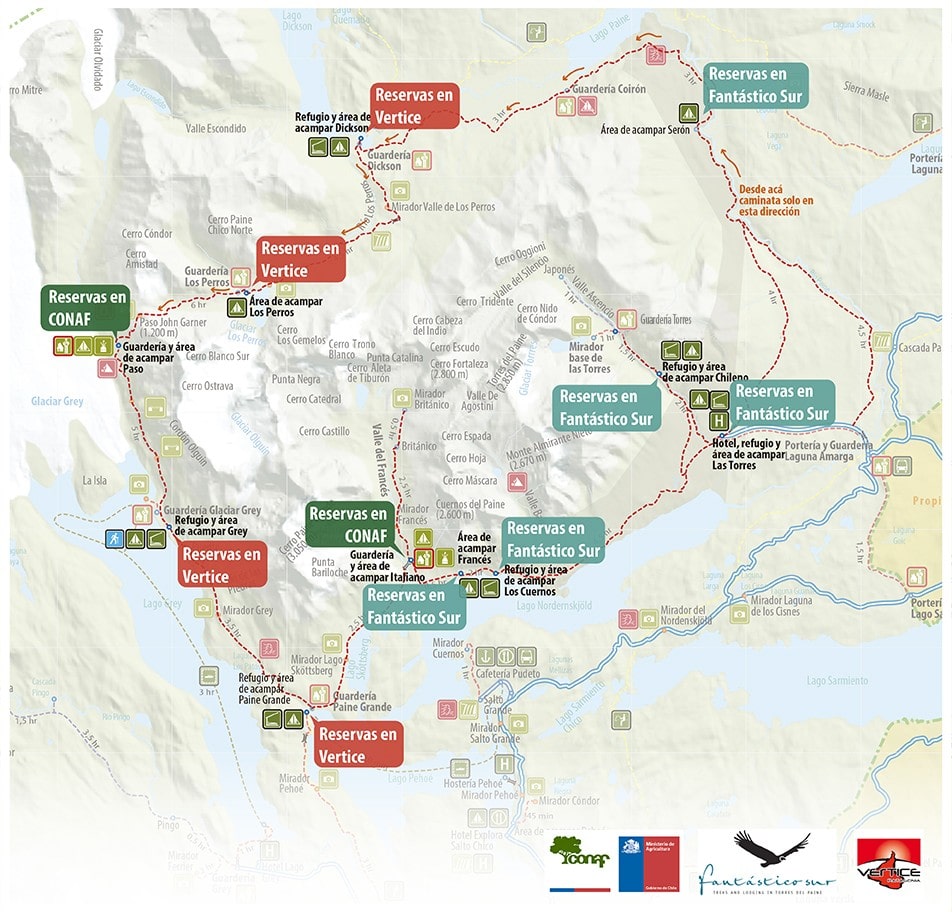
Mein Tipp: Auf der neuen Website von Booking Patagonia kannst du einfach alle Campingplätze und Refugios für den W- und O-Trek auf einer Website buchen!
Wenn dir das zu mühsam ist, kann ich dir helfen, ein Komplettpaket für den W-Trek mit meinem Reiseveranstalter Go South zu buchen.
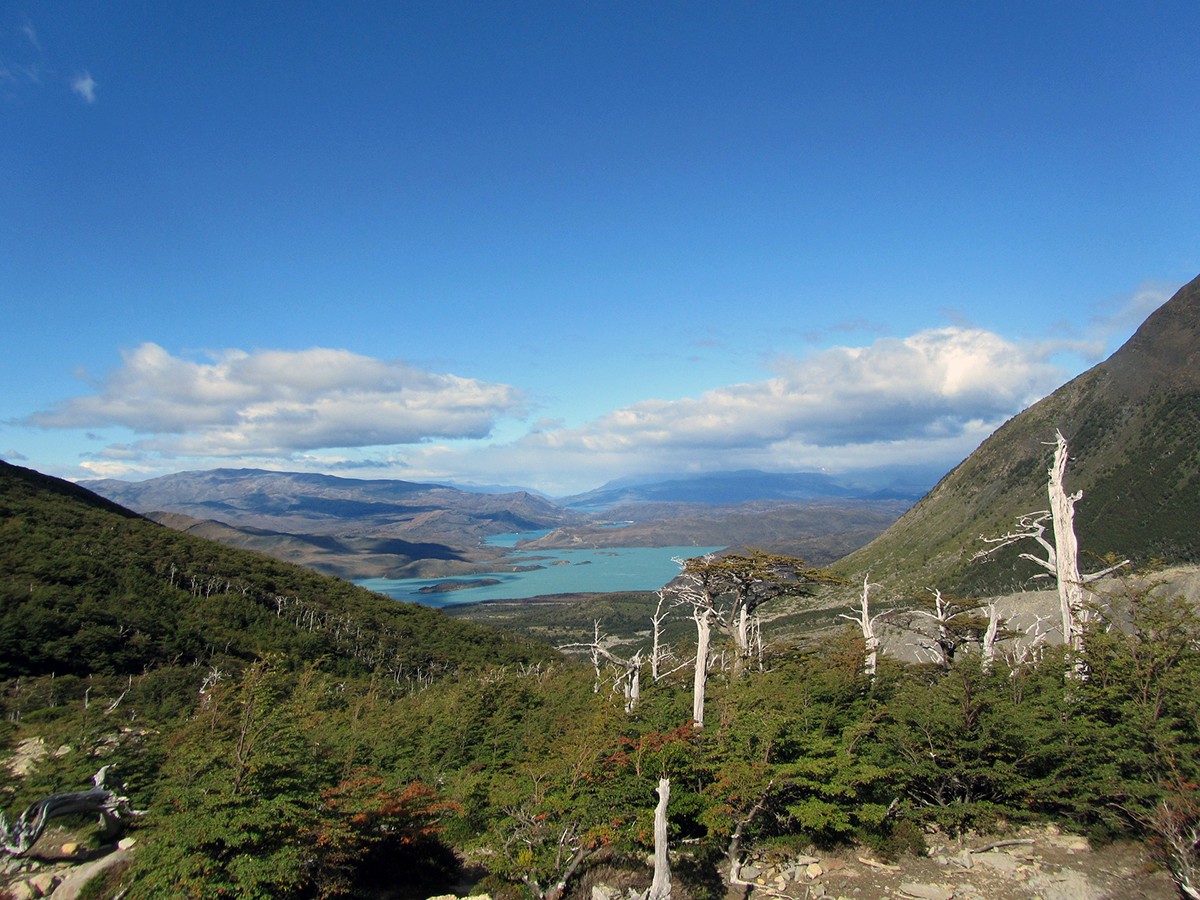
Der W-Trek im Torres del Paine Nationalpark
Als W-Trek bezeichnet man die 4 -6 tägige Mehrtageswanderung, in der du nur den südlichen Teil des Massivs in Form eines W erwanderst. Auf dem Trail erreichst du die drei Hauptsehenswürdigkeiten im Park: den Grey Gletscher , das Valle Frances und das Torres Massiv . Man kann den Trek in beide Richtungen wandern.
Meine Tipps zur Vorbereitung des W-Trek:
- Jeden Tag gibts im Erratic Rock Hostel in Puerto Natales ein Info-Seminar mit Tipps zum W-Trek im Torres del Paine – sehr empfehlenswert!
- Im Park und auf dem gesamten W-Trek gibt es keine Geldautomaten . Es empfiehlt sich, genügend Bargeld und/ oder die Kreditkarte dabei zu haben.
- Handyempfang gibt es im Park und auf dem W-Trek nur sehr schlecht. Internet kannst du an den Refugios ab 12.000 CLP pro Stunde kaufen.
- Du solltest für die Hauptsaison sowohl die Campingplätze als auch die Refugios am besten vier – sechs Monate im Voraus reservieren.
- Lebensmittel sind sehr teuer im Park. Kaufe vorher alles in Punta Arenas oder Puerto Natales ein, was du für die Tour benötigst. Müsli- bzw. Power-Riegel, Nudeln (mit Ketchup), Nüsse bzw. Studentenfutter und Instant Tütensuppen bieten sich an. Auf Dosen solltest du aufgrund des Gewichts besser verzichten.
Der W-Trek in 5 Tagen von Westen aus
Ich persönlich empfehle die Wanderung von Westen aus. So hat man das Highlight mit den Türmen am Ende. Hier der Ablauf:
- Mit dem Bus von Puerto Natales um 7.00 Uhr zur Katamaran-Haltestelle Pudeto .
- Mit dem Katamaran geht es um 11:00 Uhr auf die 25-minütige Fahrt über den Lago Pehoe. Dieser Service wird von Hielos Patagonicos betrieben, mit Abfahrten um 9 Uhr, 11 Uhr, 16.15 Uhr und 18 Uhr zwischen Dezember und März (und 11 Uhr und 18 Uhr zwischen September und November und April (25.000 CLP einfach, nur Barzahlung). Tickets können nicht im Voraus reserviert werden; du kaufst sie direkt am Fährhafen.
- Start des W-Trek von Refugio und Camping Paine Grande aus.
Diese Route bedeutet, dass du am ersten Tag zu den Aussichtspunkten des Glacier Grey wanderst und am dritten oder vierten Tag zu den Türmen hinaufsteigst, bevor es zurück nach Puerto Natales geht.
Von Westen musst du die Campingplätze entlang des W-Trek wie folgt buchen:
- Nacht 1: Refugio und Camping Grey (bezahlter Campingplatz und Refugio im Besitz von Vertice Patagonia)
- Nacht 2: Refugio und Camping Paine Grande (bezahlter Campingplatz und Refugio von Vertice Patagonia)
- Nacht 3: Camping Francés (bezahlter Campingplatz von Fantastico Sur) , Alternativ Camping Italiano (CONAF)
- Nacht 4: Refugio und Camping El Chileno (bezahlter Campingplatz und Refugio von Fantastico Sur)
Alternativ reichen für geübte Wanderer auch 4 Tage. Dann buchst du am ersten Tag Camping Paine Grande, am zweiten Camping Frances und am dritten Tag Camp Chileno. Am vierten Tag geht es hoch zu den Türmen und danach zurück nach Puerto Natales.
Du kannst den W-Trek in zwei Richtungen laufen, also von West nach Ost oder Ost nach West. Die meisten Wanderer starten jedoch im Westen, von daher habe ich dir diese Strecke im Detail beschrieben. Der Vorteil: Da der Wind meistens von Westen kommt, hast du bei der Wanderung Rückenwind. In Patagonien ein nicht unerheblicher Faktor! Für die nachfolgende Tour musst du 5 Tage einplanen.
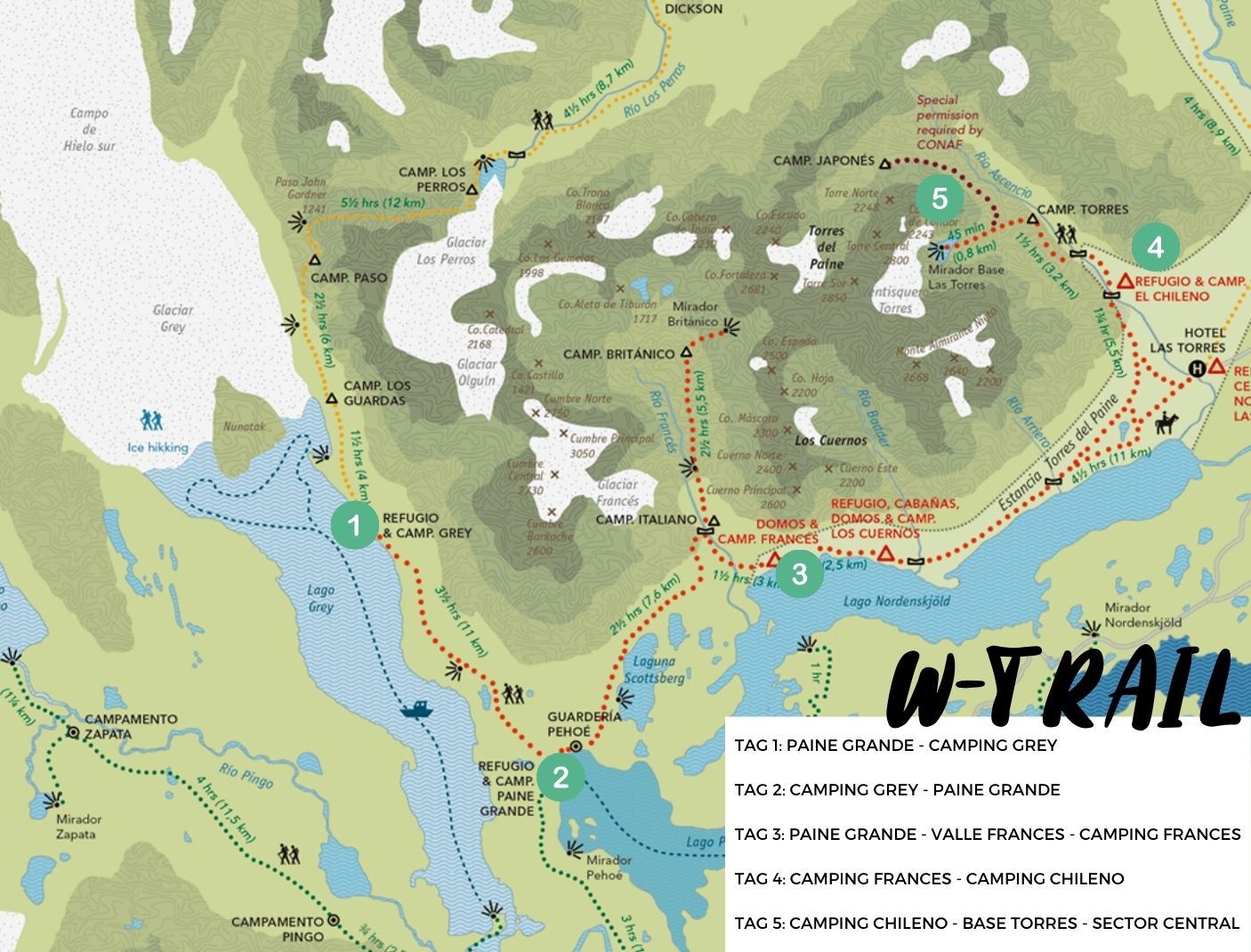
Tag 1: Puerto Natales – Camping / Refugio Grey
Start der wanderung: paine grande ende der wanderung: refugio grey strecke: 11,6 km, 3,5 std. übernachtung: camping / refugio grey (vertice).
Nimm den Bus um 7:00 Uhr in Puerto Natales. Schon auf dem Weg von Puerto Natales in Richtung des Parks bekommst du eine Vorstellung von der Schönheit dieser einzigartigen Landschaft. Gegen 10:15 Uhr kommst du im Park an. Vom Parkeingang (wo deine Eintrittskarte für den Nationalpark kontrolliert wird) geht es weiter zur Station Pudeto, wo du um 11 Uhr mit dem Katamaran über den Lago Pehoe fährst (25 Minuten).
Am Refugio Paine Grande angekommen folgst du dem Weg in Richtung Camping / Refugio Grey. Dort kannst du dein Gepäck im Zelt deponieren und zum Grey Gletscher laufen, um Fotos zu machen und die gigantischen Eismassen zu bestaunen.
Kosten für den Campingplatz mit eigener Ausrüstung p/p: $11 USD Kosten für das Zelt inkl. Schlafsack und Matratze: $78 USD
Ausstattung: – Kochbereich mit Tischen – Heiße Duschen (17-21 Uhr) – Eine Kantine – Eine Bar – Ein kleiner Laden mit Grundnahrungsmitteln
Diese Unterkunft musst du bei Vertice Patagonia buchen.
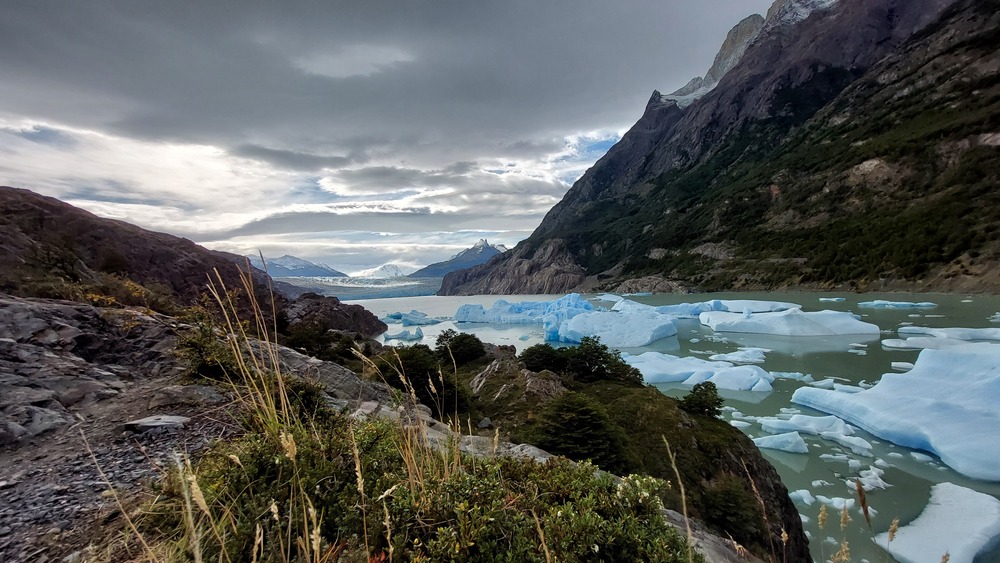
Tag 2: Camping Grey – Paine Grande
Start der wanderung: refugio / camping grey ende der wanderung: refugio / camping paine grande strecke: 11,6 km , 3,5 std. übernachtung: refugio / camping paine grande (vertice).
Stehe auf und starte deine Wanderung zurück zum Camping / Refugio Paine Grande. Du kannst es entspannt angehen lassen, da die Wanderung nur 3,5 Stunden dauert.
Vom Refugio Grey aus ist der Weg die erste Stunde relativ flach. Er führt durch einen Wald, überquert einige kleine Bäche und steigt dann ein wenig an. Auf der rechten Seite gibt es verschiedene Möglichkeiten, den Grey-See zu sehen. Die Wanderung steigt langsam an, um eine flache Hochebene im Wald auf einer Höhe von 485 m zu erreichen. Auf diesem Teil der Strecke kannst du innehalten und zurückblicken, woher du gekommen bist, um einen herrlichen Blick auf den Grey-Gletscher in der Ferne zu genießen.
Sobald du das Waldgebiet erreicht hast und den flachen Abschnitt gehst, dauert es nicht mehr lange, bis du den Pfad erreichst, der bergab führt und dich bis zum Refugio Paine Grande bringt.
Verstaue deine Sachen im Zelt und breche zu einer Wanderung entlang des Sees Pehoe auf. Du findest den etwas versteckten Weg rechts vor dem Fährableger, wo es steil hoch geht. Hier lassen sich bei gutem Wetter tolle Fotos vom Paine-Massiv schießen.
Kosten für Camping mit eigener Ausrüstung p/p: $13 USD Kosten für das Zelt inkl. Schlafsack und Matratze: $78 USD
Ausstattung:
– Duschräume mit heißen Duschen – Speisesaal mit Kochbereich – Kapazität für 100 Personen – Vollverpflegung möglich – Restaurant mit Barbereich – Lebensmittelladen
Buchung bei Vertice
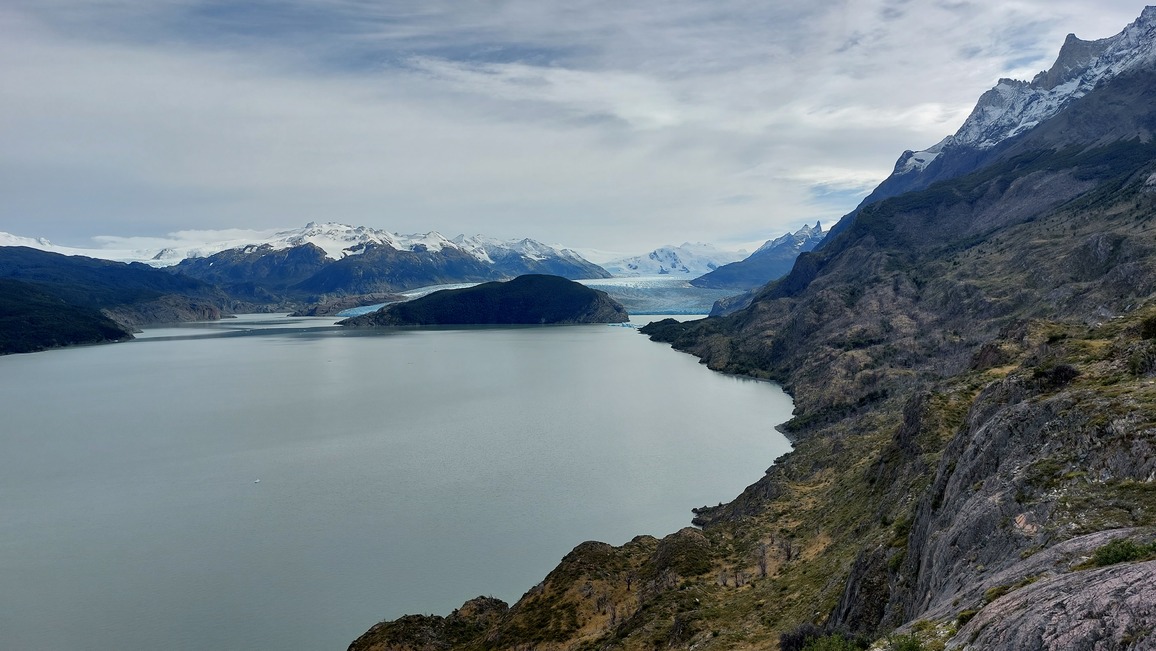
Tag 3: Paine Grande – Italiano – Valle Frances- Camping Frances
Start der wanderung: refugio / camping paine grande ende der wanderung: camping frances strecke (mit valle frances hin und zurück): 25,9 km , 10 std. übernachtung: frances (las torres).
Vom Refugio Paine Grande führt der gut ausgetretene Pfad am See entlang. Der Weg ist eben, steigt teilweise etwas an und führt durch Wälder und über kleine Bäche. Auf der rechten Seite hast du einen Blick auf den Nordenskjold-See und auf der anderen Seite kannst du die verworrenen Schichten von altem Sedimentgestein in den Hügeln sehen.
Nach etwa 2,5 Stunden kommst du zu einer klapprigen Fußgänger-Hängebrücke. Auf der anderen Seite der Brücke befindet sich der ehemalige Campingplatz Italiano von CONAF. Hier kannst du deinen Rucksack verstauen und nur mit dem Nötigsten ins Valle Frances aufbrechen.
Der Abschnitt ins Valle Frances führt stetig bergauf, es geht über Stock und Stein. Bei klarem Wetter sind die Aussichten im Tal spektakulär, vor allem rund um die Aussichtspunkte Mirador Frances und Britanico. Nachdem du Flüsse überquert und einen Buchenwald durchquert hast, belohnt dich das ersehnte Ziel mit zahlreichen Granittürmen und dem “Paine Grande” – dem höchsten Berg des Parks mit 3.050 m über dem Meeresspiegel. Ein einmaliges Panorama, das dich fesseln wird.
Auf dem Rückweg geht es bis zum Camp Italiano, wo du deinen Rucksack wieder aufnimmst. Von hier aus gehst du weiter in Richtung Camp Frances – etwa eine Stunde vom Camp Italiano entfernt. Der Weg führt ein wenig auf und ab, ist aber nicht zu anstrengend und führt am herrlichen Nordenskjold See entlang.
Kosten für Camping mit eigener Ausrüstung (1 Person): $51 USD Kosten für Camping mit eigener Ausrüstung (2 Personen): $60 USD Kosten für Premium Campsite (Zelt inkl. Schlafsack und Matratze) für 1 Person: $190 USD Kosten für Premium Campsite (Zelt inkl. Schlafsack und Matratze) für 2 Personen: $220 USD
– Sanitäranlagen mit heißen Duschen – Kochbereich – Vollverpflegung möglich – Restaurant mit Barbereich
Buchung bei Las Torres
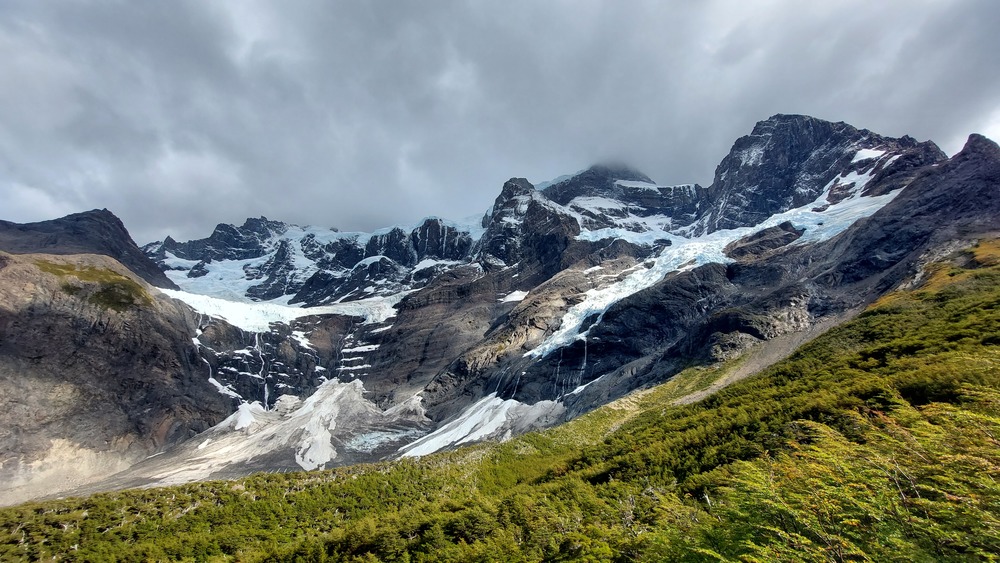
Tag 4: Camping Frances – Camping Chileno
Start der wanderung: camping frances ende der wanderung: camping chileno strecke: 14,8 km , 4,5 std. übernachtung: camping chileno (las torres).
Die Wanderung führt durch einen Buchenwald und weiter entlang des Nordufers des Nordenskjold-Sees mit seinem erstaunlichen dunkelblauen Wasser auf der rechten Seite und auf der linken Seite die atemberaubenden Granittürme von Los Cuernos. Die Wanderung führt über mittelschweres Gelände mit einigen Hügeln, aber jedes Mal, wenn du die Spitze eines Hügels erreichst, bietet sich dir eine fantastische Aussicht.
Nach etwa 2 Stunden und 30 Minuten beginnt der Weg, sich nach oben zu wenden. Zum Refugio Chileno musst du etwa 1 Stunde und 30 Minuten bergauf wandern, bis du zu einem Punkt kommst, an dem der Weg schmaler wird und eine scharfe Kurve nach links macht. Dies ist der Eingang zum Ascensio-Tal. Hier ist es oftmals sehr windig. Auf der rechten Seite geht es steil hinunter zum Talboden und zum Fluss – Sobald du diese Kurve hinter dir gelassen hast, beginnt der Weg abzufallen und nach etwa 1 Stunde erreichst du das Refugio Chileno.
– Sanitäranlagen mit heißen Duschen (sehr begrenzt und teilweise schmutzig) – Kochbereich – Vollverpflegung möglich – Restaurant
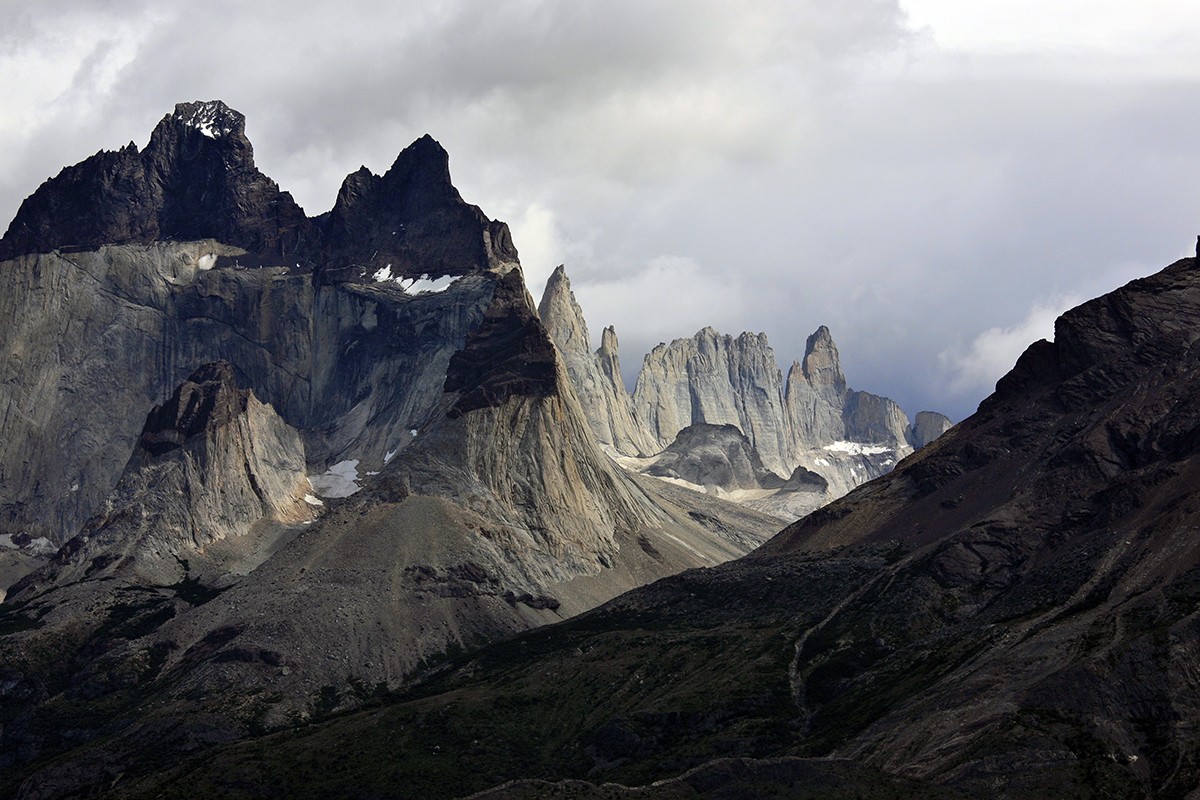
Tag 5: Camping Chileno – Base Torres – Puerto Natales
Start der wanderung: camping chileno ende der wanderung: sector central strecke: 15,7 km , 5,5 std..
Early Bird Action ist angesagt. Heute steht nämlich das Highlight an – der Aufstieg zu den berühmten Granittürmen. Wenn du zu Sonnenaufgang da sein willst, musst du gegen 4:00 Uhr los. Hier kommt deine Stirnlampe zum Einsatz.
Du kannst deinen Rucksack im Camp lassen. Die Wanderung vom Camping Chileno aus führt über einen hügeligen Weg, der in kurzen Abschnitten steil ist. Es gibt zwei Flüsse mit Brücken und einen dichten Buchenwald zu durchqueren.
Es geht ca. 2 Stunden bergauf, über und zwischen großen Felsbrocken aus Gletschermoräne, was der schwierigste Teil ist und Wanderstöcke sehr hilfreich sind. Da dieser Teil der Wanderung in Richtung Norden zum Mirador führt, weht der Wind meist von vorne, was die Wanderung anstrengender und schwieriger macht.
Sobald du um die letzte “Kurve” gebogen bist, siehst du das imposante Schauspiel der senkrecht stehenden Türme und des blau-milchigen Sees an der Basis. Die meisten Leute nehmen sich etwa 30 Minuten Zeit, um sich auszuruhen, etwas zu essen und die Aussicht zu genießen. Allerdings ist es hier in der Höhe windig und sehr kalt.
Du gehst den Weg zurück, den du gekommen bist, holst dein Gepäck am Refugio Chileno. Dann geht es in etwa 2 Stunden zurück zum Sektor Central, vom wo aus um 14 Uhr ein Shuttlebus (4000 CLP) zur Haltestelle Laguna Armaga fährt. Von hier aus fahren die Busse zurück nach Puerto Natales. Herzlichen Glückwunsch – du hast den W-Trek bezwungen!
Weniger Zeit zur Verfügung? Dann kannst du den W-Trek auch in 4 Tagen absolvieren und wanderst an Tag 2 direkt weiter ins Camping Frances.
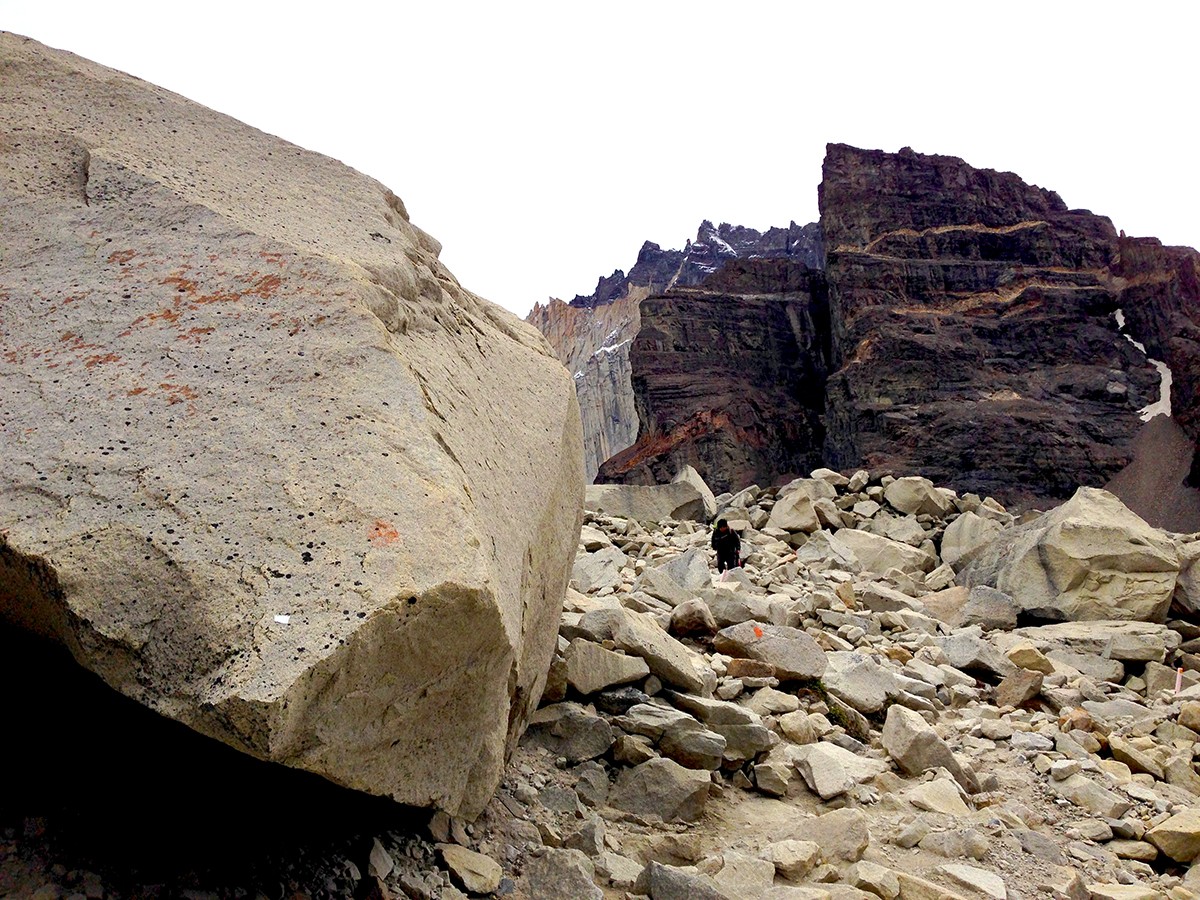
Mehr Zeit? Nicht verpassen: Wanderung zum Grey Gletscher
Solltest du mehr Zeit zur Verfügung haben: In einer leichten Tagestour kannst du an Tag 1 oder 2 zum Campamento Paso laufen (4 Std.). Auf dem Weg dorthin hast du die eindrucksvollste Sicht auf den Grey Gletscher und das südpatagonische Eisfeld.
Du überquerst zwei größere Schluchten mit Hängebrücken. Der Hin- und Rückweg ist gut an einem Tag machbar, so dass du abends wieder zum Camp Grey zurückkehren kannst.
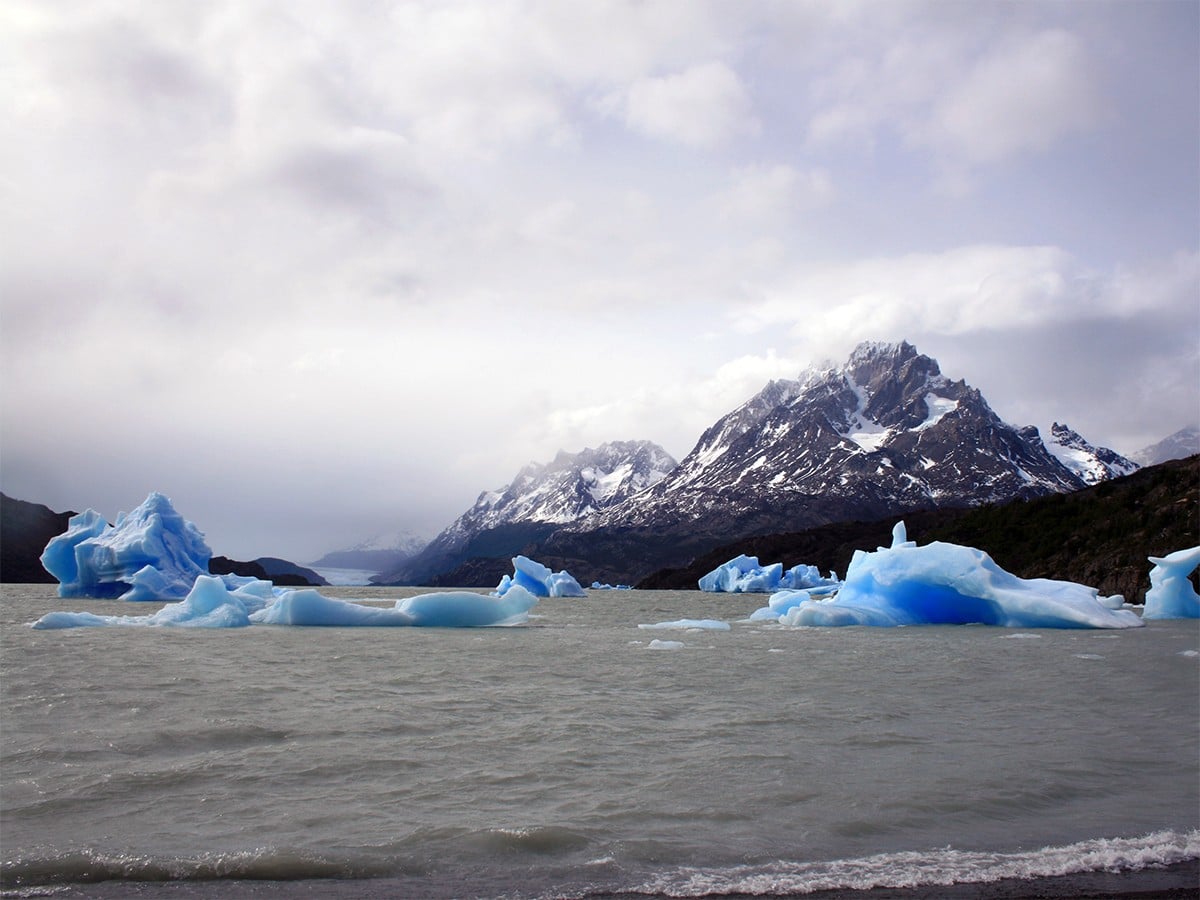
Kostenaufstellung für den W-Trek
Diese Kosten zeigen dir eine ungefähre Aufstellung der Kosten, wenn du deine eigene Ausrüstung, also Zelt, Schlafsack etc. mitnimmst und die viertägige Variante des W-Trek läufst.
- Hin- und Rückfahrt mit dem Bus von Puerto Natales zum Torres del Paine Nationalpark: $24.000 CLP (ca. 25€)
- Eintrittsgebühr für Erwachsene in den Park : 49 US$
- Katamaran (One-Way) von Pudeto zum Refugio Paine Grande : $25.000 CLP (ca. 28€) oder 30US$, nur Barzahlung!
- Grey Zeltplatz : 11 USD pro Person
- Paine Grande Zeltplatz: 13 USD pro Person*
- Francés-Campingplatz : 51 USD (1 Person) oder 60 USD (zwei Personen)*
- Zeltplatz El Chileno : 51 USD (1 Person) oder 60 USD (zwei Personen)*
*Die Preise sind nur für den Platz, fertige Campsites sind teurer – siehe oben. Du musst bei dieser Variante deine eigene Ausrüstung mitnehmen.
Campingplätze auf dem W-Trek ausgebucht? Was tun?
Was machst du, wenn bereits alle Campingplätze ausgebucht sind? Dann hast du immer noch die Möglichkeit, eine oder mehrere organisierte Tagestouren organisiert im Torres del Paine Nationalpark zu machen.
Viele Anbieter sichern sich Anfang der Saison schon bestimmte Kontingente, so dass sie oft noch Plätze frei haben. Mit Viator * kannst du diese Touren bereits vorab einfach und bequem online reservieren.
Der O-Trail im Torres del Paine Nationalpark
Beim ca. 8 -10 tägigen O-Trek umrundest du das Torres Massiv komplett und läufst dabei auch die Strecke des W-Trek ab. Gerade in der Hauptsaison (Mitte Dezember- Ende Februar) kannst du hier den Massen von Wanderern besser aus dem Weg gehen, da die meisten nur Tagestouren im Süden oder den W-Trek wandern.
Das Besondere an dieser Tour ist der malerische Lago Dickson mit dem gleichnamigen Gletscher (Glaciar Dickson) mit dem Cerro Cubo im Hintergrund und die Überquerung des Gardner Pass, benannt nach dem britischen Bergsteiger John Gardner. Diese Orte erreichst du nur mit der Wanderung des O.
Mehr Infos zum “O-Trail” findest du bei Steve auf Backpacker.org .
Meine Torres del Paine Nationalpark Wander-Tipps
Du musst kein Hardcore Wanderer sein, um die Wanderung im Park zu absolvieren. Eine gewisse Grundfitness sollte jedoch vorhanden sein. Folgende Dinge solltest du beim Trekking beachten:
- Wäge Entfernungen und Zeit ab, bevor du mit der Wanderung beginnst. Lege Dir ein Tageslimit fest und überschätze dich nicht.
- Laufe dein Tempo und teile deine Kondition gut ein. Lege Ruhepausen ein.
- Denke an genügend Wasser für den Weg (es empfiehlt sich ein Minimum von 2 l Wasser pro Tag und Person). Das Wasser im Park ist sauber und problemlos trinkbar, Bäche am Wegesrand zum Nachfüllen der Flaschen sind zahlreich. Nimm also eine eigene Trinkflasche oder Trinkblase mit.
- Auf Wetterveränderungen achten. Patagonien ist bekannt für seine Wetterumschwünge, “vier Jahreszeiten an einem Tag“ sind keine Seltenheit.
- Geeignete bequeme Kleidung zum Wechseln mitnehmen.
- Gute Wanderschuhe mit rutschfester Profilsohle benutzen. Ich mag am liebsten die Schuhe von Meindl *.
- Nimm auf jeden Fall einen warmen, guten, aber auch leichten Schlafsack * mit (Ich kann Therm-a-Rest absolut empfehlen!). Alternativ kannst du vor Ort einen ausleihen, z.B. bei Rental Natales .
- Magnesium-Tabletten helfen gegen müde Muskeln.
- Iss nicht zu viel auf einmal, sondern verteile die Mahlzeiten auf vier bis sechs kleinere Einheiten. Dadurch muss der Körper weniger Energie auf die Verdauung verwenden und du bist leistungsfähiger.
- Sonnencreme (am besten vegan und ohne Mikroplastik) einpacken aufgrund der hohen UV-Belastung im Süden des Kontinents.
Sicherheit beim Trekking im Torres del Paine Nationalpark
Ein mehrtägiges Trekking dieser Art (besonders das O) absolviert man am besten zu Zweit, da im Notfall einer Hilfe holen kann. Auch in der Nebensaison und bei schlechten Witterungsbedingungen sollte man diese Tour nicht alleine machen.
In den Sommermonaten ist der W-Trek aber stark frequentiert und meist jemand in Rufweite. In den Refugios besteht die Möglichkeit, per Funk Hilfe zu erhalten. Mobiltelefone funktionieren im Park nur schlecht. Im Gepäck solltest du immer ein Erste Hilfe Kit mit Binden, Pflastern, Schmerzmitteln und Salben dabei haben.
Mehr Links zum Torres del Paine Nationalpark und dem W-Trek
- Packliste für das Torres del Paine Trekking
- Die offizielle Seite des Torres del Paine Nationalpark
- Wanderkarte Torres del Paine *
Ich hoffe, dieser Beitrag hilft Dir zur Planung deines Besuches im Torres del Paine Nationalpark und der Wanderung auf dem W-Trek. Ich freue mich auf dein Feedback. Merken Merken
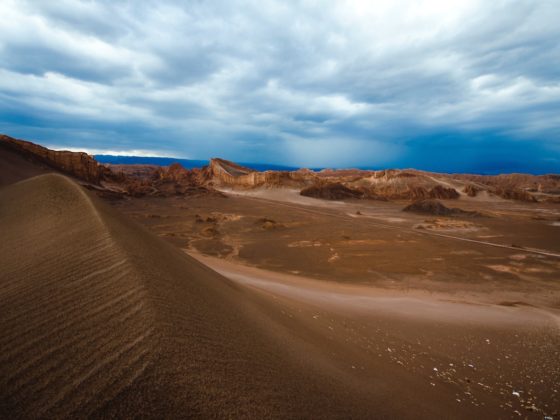
Atacama Wüste in Chile: Sehenswürdigkeiten & Reisetipps
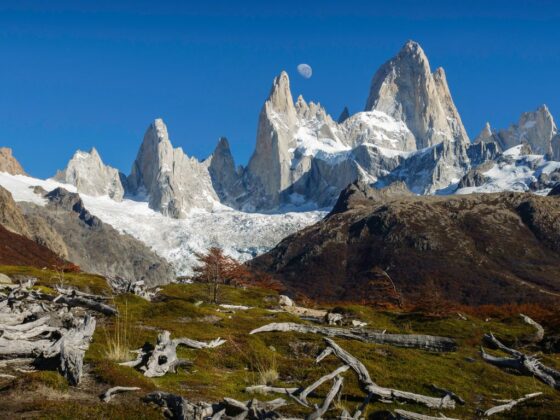
Die 15 besten Reiseziele in Südamerika 2024
Diese beiträge könnten dir auch gefallen:.

Von schick bis nachhaltig – 8 schöne Hotels in Santiago de Chile
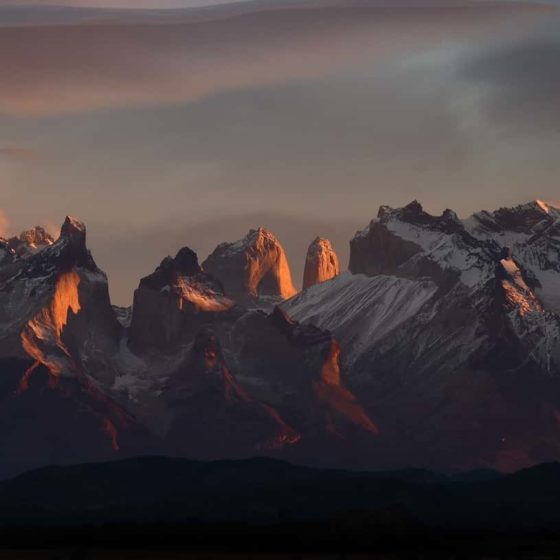
Die Top 21 Patagonien Sehenswürdigkeiten

Top 22 Santiago de Chile Sehenswürdigkeiten & Tipps
52 kommentare.
Hallo Daniel, zuerst mal vielen Dank für die tolle Website, wirklich hlfreiche Informationen findet man hier !!! Wir wollten zu 3. (2 Erw., 1 Jugendlicher) ab 12. Mai in den Nationalpark. Ich habe jetzt gesehen, dass man über die beiden Links der Unterkunft-Betreiber nichts buchen kann a Mai. Weißt du zufällig, ob der Park a) ab Mai dauerhaft geschlossen ist oder b) Die Unterkünfte geschlossen sind (oder sind welche offen) c) man mit dem eigenen Zelt die Campingplätze samt Infrastruktur nutzen kann ? Danke Dir (Antwort gerne auch an meine prov. EMail.)
Hallo Daniel, ich habe dir eine Mail dazu geschrieben 🙂
Hallo Daniel,
ich verbringe gerade ein Auslandssemester in Chile und habe mich recht spontan entschlossen, am 16.03.24 nach Puerto Natales zu fliegen, um u.a. den Nationalpark Torres del Paine zu besuchen. Natürlich ist es angesichts der Spontanität auch eine Option, nur Tagesausflüge in den Park zu unternehmen, doch ich wollte es zumindest nicht unversucht lassen, auch die Machbarkeit einer W-Tour zu prüfen. Der Plan wäre: Nacht 1 Paine Grande, Nacht 2 Francés oder Italiano, Nacht 3 Chileno oder Las Torres. Alternativ könnte man nach dem dritten Tag auch nach Puerto Natales fahren und den Mirador Base Torres auch extra machen. Paine Grande wäre tatsächlich verfügbar, für Francés und el Chileno gibt es aber keine verfügbaren Plattformen mehr, sondern nur deutlich teurere Optionen. Leider habe ich keine Infos oder Reservierungsmöglichkeiten zum Camp Italiano gefunden. Gibt es das noch? Dann könnte man vielleicht zumindest zwei Nächte im Park machen und den Mirador Base Torres dann separat. Weißt du da mehr dazu? Oder hast vielleicht noch einen Trick parat, wie wir noch an eine Plattform in Francés und Chileno kommen könnten? Freue mich auf deine Antwort! Beste Grüße Max
Hallo Max, Italiano wird gar nicht mehr betrieben. Schreib mir mal privat an [email protected] und ich schaue mal, was ich tun kann. Viele Grüße Daniel
ist es nach Deiner Einschätzung möglich direkt vom Camping Las Torres zur Paine Grande Lodge/ Camping zu gehen? (und den Abstecher hoch zum Mirador Britanico auzulassen). Hintergrund – kein Platz auf Camping Frances / Italiano… Wie lange dauert das ca.? Danke für eine Einschätzung. VG Marion
Hola Marion, das kann man machen, muss aber mit 10 Stunden wandern rechnen. Italiano ist sowieso geschlossen, aber es gibt noch Los Cuernos – das vielleicht mal versuchen. VG Daniel
erstmal vielen Dank für den tollen, hilfreichen Artikel!!
Wir sind gerade in Chile und fahren kommende Woche nach Patagonien. Bei der Planung sind wir über diese Website gestolpert: https://shop.pasesparques.cl/evento/2557/parque-torres-del-paine Hier soll man wohl seit dem 01.01.24 alle Natinalparks in Chile buchen (was ja sonst auch noch oft in Cash ging). Über welche Seite ist es besser den Torres del Paine zu buchen? Diese oder deine? Haben etwas Sorge, dass Tickets nicht “anerkannt” werden..
Vielen lieben Dank im Voraus und liebe Grüße, Constanze
p.s. du hasttest weiter oben 2 Wanderunden empfohlen, wenn man nur 2 Tage im Nationalpark Zeit hat. Wo finde ich die genauen Beschreibungen zu denen? Falls es welche gibt 🙂
Hallo Constanze, Ich habe das gerade geändert, da diese Seite ganz neu ist. Sie ist von der chilenischen Forstbehörde, also alles offiziell 🙂 Die Wanderungen findest du hier: https://southtraveler.de/tageswanderungen-im-torres-del-paine-nationalpark/
Schöne Zeit in Chile und viele Grüße aus Santiago
Hallo Daniel erst einmal herzlichen Dank für die vielen guten Tipps 🙂 Eine Frage: Erhalte ich als Grundnahrungsmitteln im Campamento Grey und Paine Grande zB Suppen, Kartoffelstock, Couscous und auch Käse? Kann ich dort auch Gas kaufen? Wir machen den O Trek inkl W Trek und wären froh, wenn wir nicht das ganze Essen und Gas für die ganze mittragen müssten. Gruss aus Chile, Johanna Mösinger
Hallo Johanna, du bekommst solche Dinge in den Camps, allerdings viel teurer. Viele Grüße aus Santiago, Daniel
Hey Daniel,
der Beitrag ist wirklich super. Aber ich glaube, dass du ihn nochmal überarbeiten solltest und nicht nur das Datum der Überschrift anpasst, damit es aktuell ist (Entschuldige die kleine Kritik). Aber das Camp Italiano beispielsweise ist schon seit ein paar Jahren geschlossen und macht auch diese Saison nicht auf. Diese Informationen sind also sehr lange schon veraltet. Genauso verhält es ich mit anderen bisher kostenfreien Camps.
Wir kommen gerade erst vom W-Trek zurück und die Informationen sind sogar auf einer großen Wand im Welcome Center eingedruckt.
Auch der Preis für den Shuttlebus stimmt nicht mehr.
Liebe Grüße, Diana und Dieter
Hallo Ihr Beiden, Ich war gerade wieder im Park und habe nun alles angepasst 😉 Aber Danke für euren Hinweis. Viele Grüße aus Santiago, Daniel
danke für den super Beitrag, sehr hilfreich. Meine Freundin und ich werden von Mitte Januar an ca 4 Wochen in Argentinien verbringen und da darf der W Trek nicht fehlen, ein lang ersehnter Traum. Leider stellt sich das (eigenständige) buchen als Mammutaufgabe heraus und gefühlt scheint es in dem Zeitraum keine Konstellation mehr zu geben mit der das möglich zu sein scheint. 3 Monate vorher scheint wohl echt schon zu spät zu sein, was wirklich enttäuschend wäre…
Was wäre Deiner Einschätzung nach noch die beste Option den W Trek doch noch möglich zu machen? Für den Fall der Fälle, dass es wirklich gar nicht klappen sollte, was würdest Du als Alternative vorschlagen, bspw. Tagesausflüge aus Puerto Natales?
Danke und beste Grüße, Patrick
Hallo Patrick, das ist dieses Jahr gar nicht so einfach mit dem W-Trail, vor allem im Januar – Februar. Schreibe mir doch gerne mal eine Mail mit den genauen Daten an meinen Reiseveranstalter: [email protected] und wir schauen was wir tun können.
Viele Grüße Daniel
Hi Daniel, wir haben für Torres del paine nur 2 Tage Zeit und würden jeden tag mit dem Bus von Puerto Natales in den park fahren. Was wären Deine Empfehlungen, das am besten zu organisieren. und welche Trecks würdest du für 2 medium fitte wanderer empfehlen? Vielen Dank, Sandra
Hallo Sandra, Ich würde euch die Wanderung zum Grey Gletscher und die Base Torres Wanderung empfehlen. Dann habt ihr zwei der schönsten Orte im Park gesehen. Viele Grüße Daniel
Hallo, erstmal vielen Dank für deine Tipps, die wir regelrecht aufgesogen haben. Bei uns steht nächste Woche auch 2 Tage Torres del Paine an und wir möchten es so wie Sanne oben machen, also in Puerto Natales übernachten. Nun stellt sich uns die Frage ob man mit dem 3-Tages-Ticket den Park verlassen und wieder betreten darf oder ob man für jeden Tag ein neues Ticket braucht.
Hallo Marco, mit dem 3 Tagesticket kannst du an den Tagen wieder rein und raus aus dem Park! Viele Grüße und eine tolle Zeit in Patagonien 😉 Daniel
Hallo zusammen, zuerst einmal danke und großes Lob für den tollen Beitrag!
Ich würde gerne den O´Trek ende Oktober diesen Jahres laufen Also in knapp 8 Wochen). Bei meiner Anfrage an einen Organisator vor Ort meinte dieser, der O´Trek kann erst ab November gelaufen werden. Wenn ich aber über Booking Patagonia suche, sieht es für mich so aus, also ob ich alles buchen kann. Kann mir jemand sagen, ob man den O´Trek im Oktober laufen darf oder nicht? Ich finde leider nichts dazu wenn ich danach bei google suche. Gruß Sandro
Hallo Sandro, da bin ich leider auch überfragt, da ich das O bisher immer im Hochsommer gemacht habe und auch nur gehört habe, dass es erst ab November geht. Frag doch direkt mal bei lastorres.com oder https://www.vertice.travel/ , die betreiben schließlich die Camps und müssen es am besten wissen. Viele Grüße Daniel
erst einmal herzlichen Dank für deinen Blog – vor allem als Inspiration, aber auch, um uns vor der Verzweiflung der patagonischen Buchungssysteme zu retten. Kurzer Hinweis für die Buchung bei Vertice (wir gehen Mitte Dezember 2023 Patagonien): die bauen gerade das Buchungssystem um, weshalb der obere Link aus dem Blog bei mir nicht mehr funktioniert hat für die Buchung. Der freundliche Kontakt von Vertice hat mir dann folgende Adresse gegeben, damit funktioniert es problemlos: https://booking.vertice.travel/booking
Viel Spaß an alle Mitreisenden, Grüße Sandra
Hallo Sandra, Danke für den Tipp. Am besten bucht man alles zusammen auf einer Seite bei bookingpatagonia.travel Viele GRrüße 🙂
Hallo Sandra, vielen Dank für den Tipp. Hier würde ich noch ergänzen, wählt als Sprache Spanisch bei dem Link. Auf Englisch funktionierte die Darstellung der Inhalte auf der Website bei uns nicht, sowohl in IOS als auch auf dem PC. Alles erschien kryptisch und wir kamen bei der Auswahl der Art der Unterkunft nicht weiter. Auf Spanisch klappte es problemlos. Wir sind auch Mitte Dezember dort. VG, Chris
Hallo Chris, noch einfacher geht es bei bookingpatagonia.travel oder torreshike.com
vielen Dank für deinen Blog und deinen Reiseführer, der meine Freundin und mich schon viel beim Planen unterstützt hat! Der W-Trek soll das Highlight unserer Reise im kommenden November werden. Sehr lange ging es nicht, die Camps zu buchen.Die Portale haben erst jetzt, am 4. Juli, ihre Pforten geöffnet. Ich war just zu dem Zeitpunkt beruflich unterwegs und als ich am 7. Juli endlich buchen konnte, war die Seite von Vertice kaputt (ist sie immer noch) und bei Lastorres ist das Meiste an den Tagen, die für unsinfrage kommen, bis auf ein paar Premiumplätze restlos ausgebucht. Das hat sich seitdem auch nicht geändert. Da ist uns erst einmal das Herz in die Hose gerutscht und wir waren natürlich ziemlich desillusioniert, was unsere Reise angeht und wir haben uns gefragt: “Kann unser Plan noch klappen?” Nun unsere Frage: Wir denken, es liegt an den Kontingenten, die anderen Reiseunternehmen zugesichert werden, dass die Campingplätze so schnell ausgebucht waren (innerhalb von zwei Tagen). So hast du es auch mal im Blog geschrieben. Ist das plausibel? Würde es sich dann lohnen noch zu warten, ob noch Kontingente frei werden? Was meinst du? Nicht, dass es dann gar nicht mehr klappt auf “das W” zu kommen… Meinst du, es gibt noch eine andere Möglichkeit an Schlafplätze zu gelangen? Alternative Anbieter haben wir bereits angefragt. Bisher noch ergebnislos. Vielleicht über deine Reiseveranstaltung? Ist es zur Not auch gut möglich Tagesausflüge von außerhalb oder dem Trailhead (Camping Central, Hotel LasTorres….) zu machen? oder würdest du dann eher zu Alternativen raten?
Wir freuen uns sehr über deine Einschätzung und sind schon sehr gespannt! Viele Grüße, Simon
wenn man sich ( mit Mietwagen) in den Cabanas Lago Tyndal einmietet, hat man dann leichten Zugang zu verschiedenen Mehrtagestouren? Ich kann die Dimensionen im Park so schlecht abschätzen. Wir wollten erst den W Trek machen, tendieren aber nun zu Tagestouren und der ein oder anderen Erkundung mit dem Auto. Was würdest du empfehlen? Und passen das Tyndal alojamiento als Ausgangspunkt oder sollten wir evtl. zwischendurch einmal wechseln? LG
Hallo Kristina, in den Park selbst kommst du mit dem Auto nur bis zum Hotel Las Torres. Von dort kann man bis zu den Türmen hochlaufen. Sind etwas über 50 Kilometer von eurer Unterkunft. In andere Teile des Parks kann man nur laufen, nicht mit dem Auto rein, daher ist gerade der W-Trail so schön, weil man die verschiedenen Punkte erwandern kann. Wenn ihr da Hilfe oder Unterstützung benötigt, kann ich euch gerne auch telefonisch beraten.
Hey, erstmals: echt ein toller Blog hier von dir. Ich möchte im Jänner den W Trek laufen und kann weder bei verticepatagonia noch bei lastorres ein refugio buchen. Es ist egal welches Datum ich auswählen will, irgendwie ist bei lastorres alles ausgegraut und bei verticepatagonia komme ich nicht weiter wenn ich ein Datum auswähle. Weißt du was hier das Problem sein könnte?
Hallo Jennifer, die Buchungen für die kommende Saison sind meist erst Mitte-Ende Juli möglich. Viele Grüße!
super Blog! Ich plane gerade mit meinem Freund eine dreimonatige Reise durch Südamerika Ende des Jahres. Dein Blog hat uns bisher tolle Inspirationen gebracht. Eine Frage habe ich zu deinem Beitrag zu den Buchungssystem im Torres del Paine. Du schreibst oben, man solle auf diese neue Seite von Fantastico Sur gehen ( https://lastorres.com/circuitos-de-trekking/circuito-w/ ) um eine Reservierung vorzunehmen. Auf der Webseite finde ich leider nur Angebote für so all-inclusive Packete (also 5 Tage Trekking mit Zelten schon aufgebaut/Refugios und Mahlzeiten für ~ 1000 / 1300 USD). Gibt es auch die Möglichkeiten die Refugios (oder Alternativ Campingplätze) von Fantastico Sur einzeln zu buchen (und ohne Mahlzeiten)? Ich finde auf der Webseite leider nichts dazu.
Danke dir und Viele Grüße
Hallo Sarah, danke dir! Das geht ebenso auf der Seite, ist nur etwas versteckt: https://lastorres.com/donde-alojar/camping/ . Hier die Tage auswählen und über das Menü die Sachen buchen. Viele Grüße Daniel
Danke dir 🙂
vielen Dank für dein Blog, er hat mir und meiner Freundin beim planen sehr geholfen. Wir möchten den W-Trek wandern. Leider ist das Camp Chileno schon ausgebucht aber wir möchten unbedingt zum Schluss unserer Wanderung Base Torres sehen. Meine Frage an dich: Denkst du, dass es machbar ist vom Camp Central aus zu den Base Torres zu gelangen und am selben Tag wieder zurück oder ist das zu ambitioniert? Besten Dank im Voraus!
Viele Grüße Joris
Hola Joris, Man kann auch vom Camping Central zu den Türmen laufen, das geht an einem Tag (ca. 7-8 Stunden je nach Fitness) Viele Grüße Daniel 🙂
Toller Ratgeber, Daniel. Weißt du zufällig ob man mit einem Leihauto auch direkt von El Calafate zum Torres del Paine fahren wie Google Maps vorgibt: https://www.google.com/maps/dir/El+Calafate,+Santa+Cruz+Province/Torres+Del+Paine+Welcome+Center/@-50.791276,-72.6779773,9z/data=!3m1!4b1!4m14!4m13!1m5!1m1!1s0xbdbb0cc0138f62cb:0x30d4035d88e4dc69!2m2!1d-72.2647982!2d-50.337969!1m5!1m1!1s0xbda53109b6cbad41:0x9d975ad81e7d7f80!2m2!1d-72.8634685!2d-50.9651117!3e0?authuser=1&hl=en
Hallo Elias, das würde gehen, allerdings brauchst du eine Genehmigung des Mietwagenanbieters für die Grenzüberschreitung. Viele Grüße Daniel
Hi, ich komme gerade vom O zurück und kann ein paar updates geben: -Bustickets kosten je 10.000(~10$/€) zum Park und zurück -Katamaran 25000 und kann nur bar bezahlt werden (oder 30 USD) -Im Park kann man übrall mit kreditkarte zahlen und das wird meistens auch gewünscht, Preise: Cola 2000(Vertice)- 3000(FS), M&M 3000. Die FS Minimarkets sind sehr spärlich ausgestattet, die Vertice sind besser. -Auf dem W mussder Müll meistens mitgenommen werden, auf dem O nur bei Los Perros. – Die CONAF Campingplätze sind alle geschlossen, sollen aber in 2-3 Jahren wieder geöffnet werden. – Treehouse hat nur noch Doppelzimmer, Pancho ist aber nicht so glücklich damit, weil zu wenig los ist im Haus :-), vielleicht baut er an. Während der Pandemie hat er recht zu kämpfen gehabt und war sehr froh, dass er für diese Saison fast ausgebucht ist, war 2 Nächte dort, eine davon sind wir in der Keneipe versackt ^^. – Nehmt Sonnencreme mit !!!
War ein super Trip und Deine Hinweise haben mir viel bei der Planung geholfen, vielen Dank. Ich war übrigens einer der wen igen die ich getroffen habe, die über die einzelnen Seiten gebucht haben, bei den anderen hat das nicht recht funktioniert und die sind oft über bookingpatagonia gegangen. Die scheinen auch viel zu blocken, Service funktioniert aber wohl gut.
Hola Jörg, vielen Dank für deine Nachricht und deine tollen Tipps, die ich direkt recherchiert und eingebaut habe, damit der Beitrag wieder aktuell ist. Und schön, dass es bei Pancho wieder aufwärts geht nach der schwierigen Zeit. Herzliche Grüße Daniel
Danke für den Blogeintrag und Danke auch an Jörg für das Update. – kannst du sagen ob es aktuell möglich ist im Park mit dem Mietwagen zu parken (während dem W-Trek)? – gab es Corona-Maßnahmen beim W-Trek oder auch generell bei der Einreise/Grenzüberschreitung? LG Patrick
Hallo Patrick, Ich weiß nur, dass es an der Laguna Amarga einen Stellplatz für Wohnmobile gibt. Ich würde für den W-Trail immer die Fahrt mit dem Bus aus Puerto Natales empfehlen, da der genau am Katamaran hält, wo man startet. Lg Daniel
Hallo Daniel, Vielen Dank für die hilfreichen Informationen. Wir fliegen in ein paar Tagen nach Chile und eine Frage ist noch offen. Kann man das Auto vor dem Torres del Paine parken, während man den W-Treck läuft oder muss man den Bus von Puerto Natales nehmen? Und kann man dann vom Parkplatz einen Bus buchen, der zum Katamaran fährt? Falls du hierzu Informationen hast, schon mal vielen Dank vorab. Viele Grüße, Tanja
Hallo Tanja, ich würde dafür immer den Bus nehmen, anstatt das Auto 5 Tage dort stehen zu lassen. Das ist wesentlich bequemer und der Bus lässt euch direkt an der Fähre raus. Viele Grüße und eine tolle Zeit in Chile! Daniel
Hallo Daniel! Ich werde im März 2022 nach Patagonien reisen. Auf der Suche nach einem gscheiten Reiseführer bin ich auf deinen gestoßen. Gibt es deinen Reiseführer auch als Printversion? Wäre sehr schön….! 🙂 Grüße Ralf
Hallo Ralf, ich mache mich bald an die neue Ausgabe – die wird es als Printversion geben. Diese hier nur als E-Book. Grüße Daniel
Hey Daniel, vielen lieben Dank für deine Infos. Denkst du, man kann die Wanderung im November auch alleine machen, da man immer wieder auf andere Wanderer trifft? “Leider” bin ich alleine unterwegs, möchte aber nicht immer auf bestimmte Touren verzichten. Natürlich weiß ich, dass man eigentlich nicht alleine eine Wanderung unternehmen sollte… Aber ich habe schon einige Touren gemacht, die dann doch sehr gut besucht waren, sodass man eigentlich eh nicht alleine unterwegs war. Vielleicht kannst du eine Einschätzung geben. Vielen lieben Dank und liebe Grüße
Hallo Vera, klar kannst du die Tour im November allein machen, da sind schon viele Wanderer unterwegs. Die Wege sind auch nicht allzu schwierig (außer hoch ins Valle Frances). Liebe Grüße und viel Spass!
Hallo Daniel, wir waren Anfang März im Torres del Paine. Mittlerweile sind die Preise (p. P.) folgendermaßen gestiegen: Parkeintritt (mehr als 3d) 35000 (kann mittlerweile an einem conaf Stand am Busbahnhof in p. Natales mit Karte gezahlt werden) Katamaran 23000 Shuttle Bus vom Welcome Center zur Laguna 3000 Der Campamento Torres ist nach wie vor gesperrt. Vielen Dank für deinen ausführlichen Blog, das ist wirklich toll. Viele Grüße Sabine
Liebe Sabine, vielen Dank für die Tipps – wurde gleich berichtigt – es ändert sich wirklich immer so schnell 😉 Liebe Grüße Daniel
schöne web site mit vielen nützlichen Informationen. Ich habe den W-trail November 2017 absolviert. Da O war gesperrt wegen Schnee aber das hatte ich sowieso nicht vor. Eintritt min den Park kostet mittlerweile 21000 CLP, Katamaran 18000 CLP. Beides nur cash. Refugio Francais 130 US$ (nur Übernachtung), ansonsten habe ich in meinem eigenes Zelt übernachtet. verticeparagonia anwortet nicht auf e-mail und nimmt auch kein Telefon ab. Das ging nicht nur mir so sondern allen die ich dort getroffen habe.
Für diejenigen die von/nach Puerto Nateles nach/von Punta Arenas per Bus fahren: man sollte das Ticket unbedingt ein paar Tage vorher kaufen. Einige Verbindungen sind sonst ausgebucht und in der Vorsaison (wie gesagt ich war im November dort) gibt es nicht viele davon. Die web site von Bus Sur nimmt anscheinend auch keine internationalen Kreditkarten. Viele Grüsse, Detlef.
Lieber Detlef, Vielen Dank für die ausführlichen Infos. Ich habe den Beitrag gerade bearbeitet und die neuen Preise eingepflegt, damit das wieder aktuell ist. Liebe Grüße Daniel
Hallo Daniel, danke für die Info. Hast du auch Erfahrungen mit dem Besuch des Torres im Winter, um genauer zu sein: jetzt? Ich bin zur Zeit in Puerto Madryn und mich reizt der Süden. Nur ist es teilweise schwer überhaupt Informationen zu bekommen.
Gruß Marion
Hallo Marion,
Eigene Erfahrungen leider nicht, aber ich kenne jemanden der dort wohnt. Der sagt, das der Torres im Winter richtig schön ist und es nicht so windig ist wie im restlichen Jahr. Nur man muss gut im Vorraus planen, auch wegen des Transports, der im Winter eingeschränkt ist. Das Hotel Las Torres und Hosteria Grey sind geöffnet und haben in dieser Zeit (relativ) günstige Preise. Das einzig geöffnete Refugio ist Lodge Paine Grande, allerdings nicht beheizt, also dicke Schlafsäcke mitnehmen! Schau mal hier http://www.verticepatagonia.com/
Viel Spass und Erfolg 🙂
Schreibe einen Kommentar Antworten abbrechen
Deine E-Mail-Adresse wird nicht veröffentlicht. Erforderliche Felder sind mit * markiert
Meinen Namen, meine E-Mail-Adresse und meine Website in diesem Browser für die nächste Kommentierung speichern.
Möchtest du meinen Newsletter erhalten?
Gib dein Suchwort ein und drücke Enter.
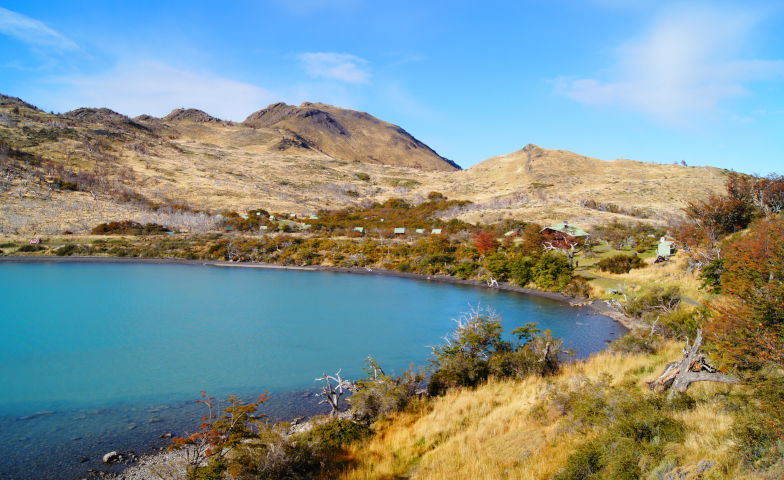
Wo übernachten im Torres del Paine Nationalpark? Die besten Hoteltipps zwischen Puerto Natales und Lago Grey
Du suchst nach einem Hotel im Torres del Paine Nationalpark? Perfekt, ich stelle dir hier die typischen Orte zum Übernachten in Torres del Paine vor und zeige dir die besten Hoteltipps in Puerto Natales. Im Nationalpark gibt es verschiedene Unterkunftsmöglichkeiten, von Campingplätzen, einfachen Hütten (Refugios) bis hin zu komfortableren Lodges. Die Auswahl hängt von deinen persönlichen Vorlieben, dem Budget und den verfügbaren Hotels ab.
Torres del Paine Nationalpark – das sind schneebedeckte Gipfel, tiefblaue Seen und malerische Gletscher. Er liegt in Patagonien und gehört zu den bekanntesten Nationalparks in Chile. Die magischen Landschaften, machen jede Wanderung zu einem Abenteuer. Und die drei bekannten Granitfelsen erheben sich majestätisch auf 2.800 m in den Himmel und bieten eine spektakuläre Kulisse. Wusstest du, dass Torres del Paine in der indigenen Sprache „Türme des blauen Himmels“ bedeutet? Die Region um den Torres del Paine Nationalpark ist besonders bei Naturliebhabern und Abenteuerreisenden beliebt, da sie eine beeindruckende Landschaft und vielfältige Outdoor-Aktivitäten bietet. Hier findest du die aktuellen Preise für den Torres del Paine Nationalpark
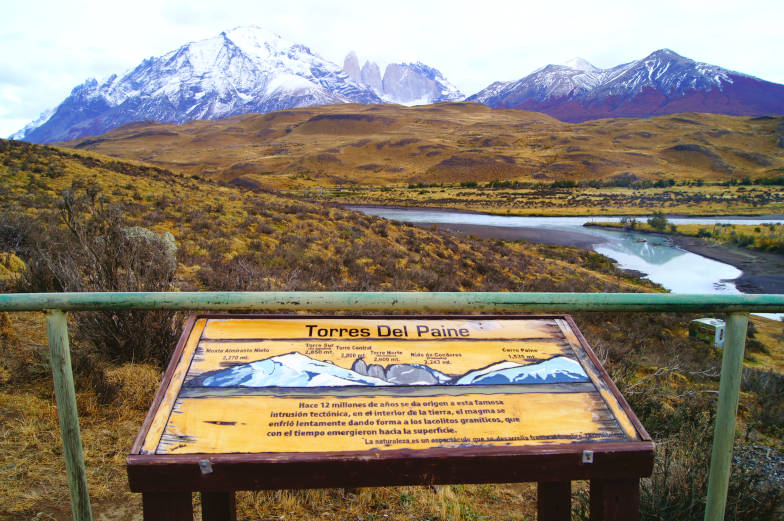
Für dein Chile Abenteuer unbedingt eine Auslandskrankenversicherung * abschließen!
Um den Torres del Paine Nationalpark erkunden zu können empfehle ich mindestens 3-4 Tage einzuplanen. Möchtest du den bekannten W-Trek oder O-Circuit * wandern, dann musst du dafür natürlich mehr Zeit einkalkulieren.
Da wir durch einen Flugstreik in Santiago de Chile leider weniger Zeit hatten, übernachteten wir für 4 Tage in Puerto Natales und machten von dort aus geführte Tagestouren * in den Torres del Paine Nationalpark. Das war einfach wunderschön!
Hier findest du noch weitere Chile-Beiträge:
- Tagesausflug von Puerto Natales in den Torres del Paine Nationalpark
- Atacama Wüste – Die besten Ausflugstipps, Tagestouren und Sehenswürdigkeiten
- Günstig nach Chile: Flug -Tipps und Erfahrungen
- Die besten Santiago de Chile Tipps – Der praktische Guide für deine Reise!0
- Wo übernachten in Santiago de Chile? Meine besten Hoteltipps
- 81 spannende Fakten über Chile!
- Spektakuläre Busfahrt von Santiago nach Mendoza in Bildern
Inhaltsverzeichnis
Wo übernachten am Torres del Paine Nationalpark? Wo sind die schönsten Stopps?
Hier zeige ich dir die beliebtesten Plätze und Hotelstandorte zum Übernachten zwischen Puerto Natales und dem Lago Grey.
-> Falls du es eilig hast, findest du hier auch gleich die besten Hotels für den Torres del Paine Nationalpark im Überblick:
Puerto Natales – günstige Hotels und guter Ausgangspunkt für Touren in den Nationalpark. Unterkunftstipps -> Big Bang Patagonia * Cerro Castillo – kleiner Ort, vor den Toren des Nationalparks. -> Riverline Lodge * Lago del Toro – größter See im Torres del Paine Nationalpark. -> Hosteria Lago del Toro * Lago Sarmiento – Natur pur mit toller Bergkulisse. -> Tierra Patagonia Hotel & Spa * Laguna Amarga – in der Nähe des Eingangs und Welcome Centers des Torres del Paine Nationalparks. -> Goiien House * Lago Pehoe – wunderschön mitten im Torres del Paine Nationalpark. -> Camping Lago Pehoe Lago Grey – Gletscher hautnah erleben durch Wanderungen oder per Schiff. -> Refugio Grey
Puerto Natales: Günstig übernachten und guter Ausgangspunkt für Wanderungen
Puerto Natales liegt außerhalb vom Torres del Paine Nationalpark und ist ein praktischer Start- und Endpunkt für Wanderungen in den Nationalpark. Zudem sind die Hotels in Puerto Natales um ein Vielfaches günstiger als im Park und du hast auch mehr Restaurants zur Auswahl und Supermärkte in denen du dein Proviant kaufen kannst. Ich hab mich in der Hafenstadt sehr wohl gefühlt und kann dir daher eine Übernachtung hier nur empfehlen. Der Torres del Paine Nationalpark ist 140 km von Puerto Natales entfernt, du kannst ihn entweder mit deinem Mietauto, mit dem Bus oder mit einer geführten Tagestour * erreichen. Puerto Natales ist ideal zum Übernachten, wenn du budgetfreundlich unterwegs sein möchtest.
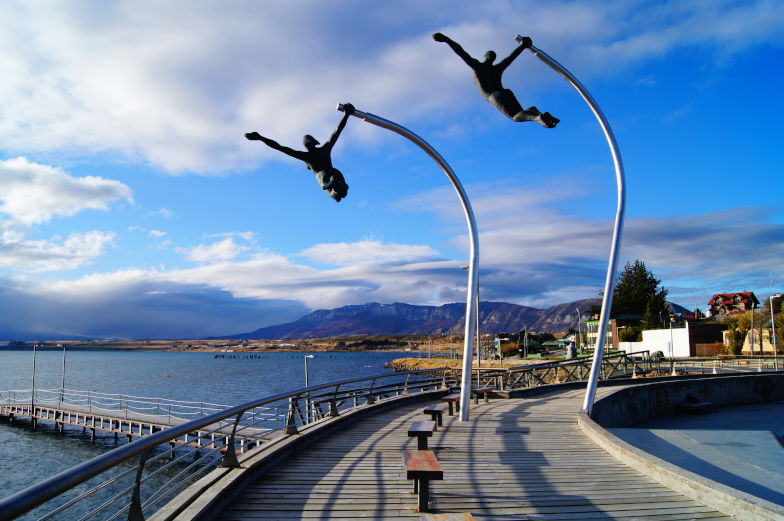
Mehr Tipps zu Puerto Natales und Umgebung kannst du hier nachlesen: Tagesausflug von Puerto Natales in den Torres del Paine Nationalpark
Hoteltipps für Puerto Natales:
+ Top Preis
Big Bang Patagonia * – befindet sich 400 m vom Busbahnhof und 800 m von der Innenstadt entfernt.
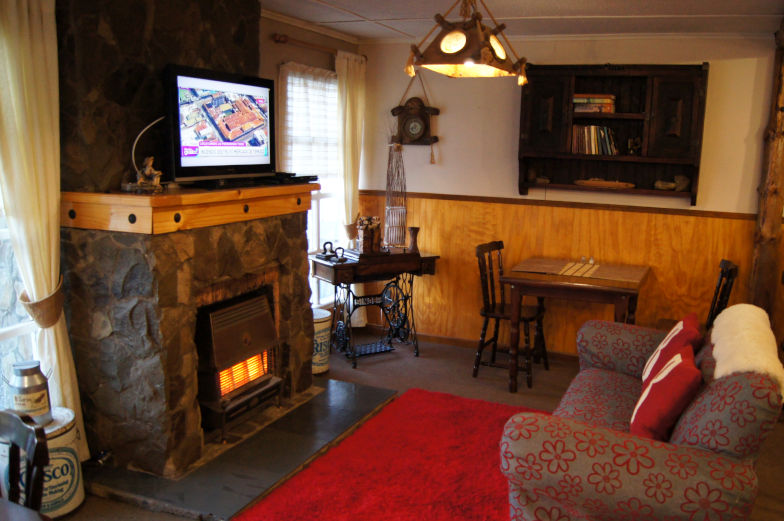
- In dieser Unterkunft haben wir übernachtet und können sie nur empfehlen, vor allem der gemütliche Aufenthaltsraum mit Kamin hat uns gut gefallen und die Küche konnte man jederzeit für heiße Getränke nutzen.
- Die Zimmer sind mit Heizung, Schreibtisch und eigenem Bad ausgestattet
- Frühstück ist im Preis inbegriffen
Verfügbarkeit vom Big Bang Patagonia prüfen *
Hostal America en Puerto Natales * – gute Lage nur 5 min. vom Busbahnhof und 10 min. von der Innenstadt entfernt.
- Das Hostal hat eine 24 Stunden Rezeption, heißes Wasser für Tee kann man sich die ganze Zeit holen.
- Die Zimmer sind alle mit Heizung und eigenem Badezimmer ausgestattet
- Frühstück und Parklätze sind im Preis inbegriffen
Verfügbarkeit vom Hostal America en Puerto Natales *
Hotel Vendaval * – befindet sich mitten in der Stadt am Plaza de Armas.
- Die stylische Unterkunft bietet eine 24 Stunden-Rezeption, Gemeinschaftslounge, Garten, Terrasse, Restaurant und Bar.
- Die Zimmer sind modern mit Heizung eigenem Bad eingerichtet
- Frühstück ist kostenlos
Verfügbarkeit vom Hotel Vendaval prüfen *
+++ Außergewöhnlich
Domos by Toore Patagonia * – liegt 5 km von Puerto Natales entfernt, Mietauto erforderlich.
- Originelle und ruhige Unterkunft mit Garten und Bergblick
- Die Domos sind alle mit eigener Küche, Bad, Heizung und Sitzmöglichkeiten ausgestattet.
- Frühstück und Parkplatz ist im Preis inbegriffen
Verfügbarkeit vom Domos by Toore Patagonia prüfen *
Campingplatz Puerto Natales
Camping Güino * – liegt nur 500 m vom Busbahnhof von Puerto Natales entfernt.
- Gemütlicher Gemeinschaftsbereich und große Küche mit Esstisch und sauberem Bad
- Stellplatz (Zelt und Schlafsack müssen selbst mitgebracht werden)
- Der Garten der Unterkunft lädt zum Entspannen ein. Gegen Aufpreis stehen Parkplätze für Anhänger mit Zugang zum Strom zur Verfügung.
Verfügbarkeit vom Camping Güino prüfen *
Cerro Castillo – auf dem Weg zum Torres del Paine Nationalpark
Das kleine Ort liegt 40 km vom Torres del Paine Nationalpark entfernt, auf der Ruta del Fin del Mundo. Hier gibt es Unterkünfte, einen kleinen Shop und ein Restaurant. Die Preise sind hier günstiger als im Torres del Paine Nationalpark. Praktisch zum Übernachten, wenn du nicht direkt im Park schlafen möchtest.
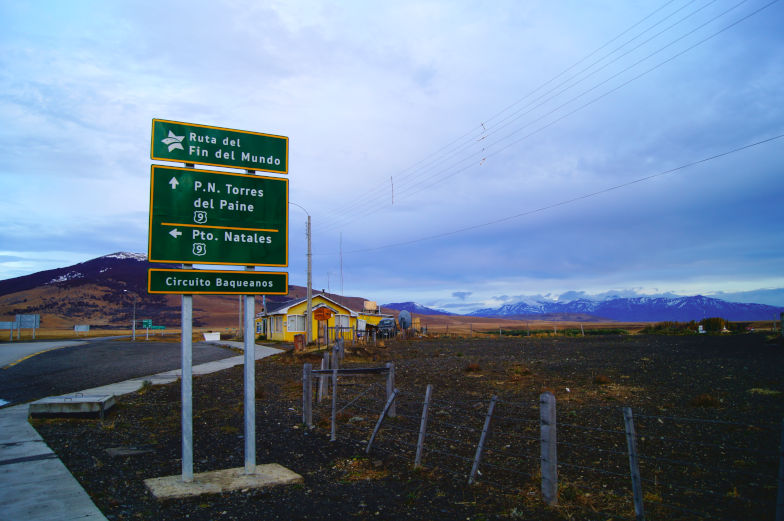
Hoteltipps für Cerro Castillo
Riverline Lodge * – ruhige Lage im kleinen Ort Castillo gelegen
- Die Unterkunft bietet eine Bar
- Die Zimmer sind mit eigenem Bad ausgestattet
- Frühstück und Parkplatz im Preis inbegriffen
Verfügbarkeit vom Riverline Lodge prüfen *
Estancia Dos Elianas * – liegt mehrere Kilometer von Cerro Castillo entfernt dafür näher am Torres del Paine Nationalpark.
- Die Unterkunft bietet ein Restaurant, Bar und eine Gemeinschaftslounge
- Die Zimmer sind mit eigenem Bad und Heizung ausgestattet
Verfügbarkeit vom Estancia Dos Elianas prüfen *
Lago del Toro – übernachte am größten See am Torres del Paine
Lago del Toro ist der größte See im Torres del Paine Nationalpark. Durch seine 30 km Länge und der starken Winden, die dort oft herrschen, können bis zu 4 m hohe Wellen auf dem See entstehen. Der Lago del Toro ist wegen seiner zentralen Lage ein beliebter Ort zum Übernachten beim Torres del Paine Nationalpark.
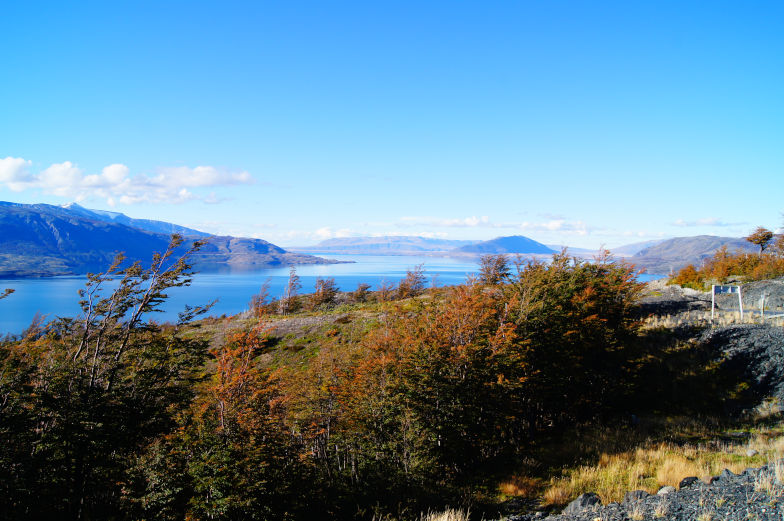
Hoteltipps für Lago del Toro
Hosteria Lago del Toro * – liegt 500 m vom Rio Serrano entfernt.
- Die Unterkunft bietet ein Restaurant mit tollen Panoramablick auf den Torres del Paine. Nationalpark.
- Die Zimmer verfügen über ein eigenes Bad, Bergblick und Sitzmöglichkeiten
- Parkplatz und Frühstück ist im Preis inbegriffen
Verfügbarkeit vom Hosteria Lago del Toro prüfen *
Cabanas Lago Tyndall * – die Lage ist traumhaft, ruhig am Serrano Fluss gelegen und mit dem Auto ist man in 5 min im Park
- Die Unterkunft verfügt über verschiedene Bungalows, mit Blick auf das Bergmassiv.
- Die Bungalows verfügen über eine eigene Küche, Badezimmer, Essbereich und Holzofen
- Parkplatz steht kostenlos zur Verfügung
Verfügbarkeit vom Cabanas Lago Tyndall prüfen *
Vista al Paine – Refugio de Aventura * – gute Lage um den Torres del Paine Nationalpark zu erkunden, in der Nähe vom Lago del Toro gelegen.
- Kleine einfache Berghütte mit Gemeinschaftsküche, Tourenschalter und Shuttleservice. Licht und Heizung stehen nach 24 Uhr nicht mehr zur Verfügung.
- Einige Zimmer bieten eine Aussicht auf den Torres del Paine und manche haben ein eigenes Bad
Verfügbarkeit vom Refugio de Aventura prüfen *
Patagonia Camp * – süßes und luxuriöses Camp mit komfortablen Jurten, dass einsam am Lago del Toro liegt.
Lago Sarmiento – idyllisch übernachten
Der zweitgrößte See im Nationalpark ist bekannt für sein klares tiefblaues Wasser und dass er mit Thromboliten (Kalziumkarbonat-Ablagerungen) umrandet ist. Der Lago Sarmiento befindet sich auf der östlichen Seite des Parks und bietet sich ebenfalls perfekt zum Übernachten an, da er ein guter Ausgangspunkt für Wanderungen ist.
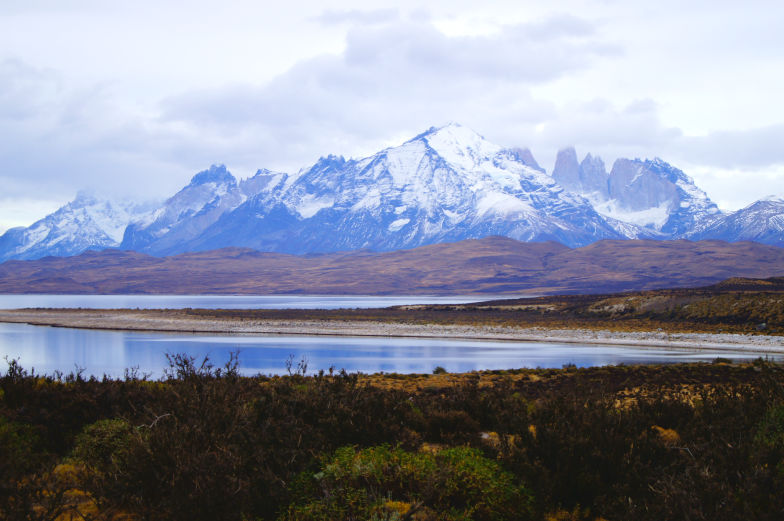
Hoteltipps für Lago Sarmiento
Tierra Patagonia Hotel & Spa * – liegt am See Sarmiento mit Blick auf den Nationalpark Torres del Paine
- Das Hotel bietet 3,4 und 5 All Inklusiv Pakete an. Ein weiteres gehobenes Hotel außerhalb des Parks mit Panoramablick auf den See Sarmiento und die umliegende Landschaft
- Das Hotel bietet einen Innenpool, Spa & Wellnesscenter, Restaurant und Bar
- Die Zimmer sind mit einem tollen Ausblick auf die Berge, Sitzmöglichkeiten und Heizung ausgestattet
Verfügbarkeit vom Tierra Patagonia Hotel & Spa prüfen *
Laguna Amarga – Eingang zum Torres del Paine Nationalpark
Die grünlich schimmernde Lagune Amarga liegt in der Nähe des Parkeingangs. Die Umgebung der Lagune bietet Wanderwege für alle Schwierigkeitsgrade. Einige Routen führen zu Aussichtspunkten mit Blick auf die Torres del Paine, während andere die patagonische Steppe und zu nahegelegenen Sehenswürdigkeiten führen. Die Übernachtungsmöglichkeiten an der Laguna Amarga sind begrenzt, daher ist es sinnvoll schon im Voraus zu buchen, insbesondere in der Hauptsaison.
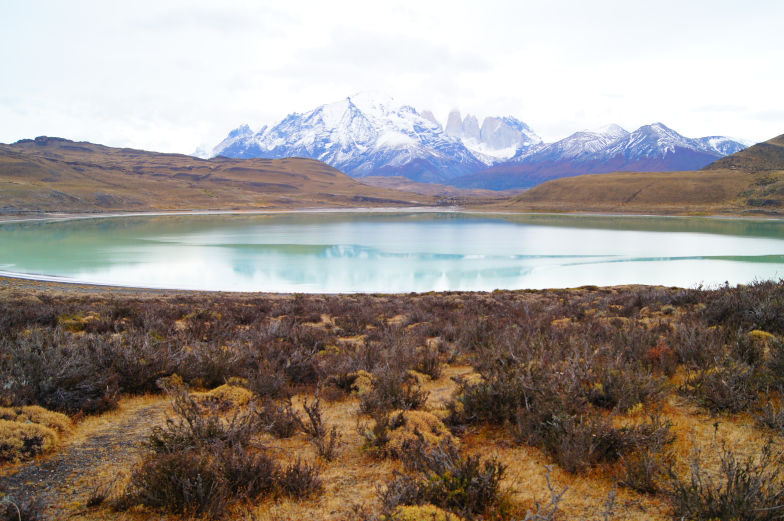
Hoteltipps für Amarga
Goiien House * – liegt im Torres del Paine Nationalpark 2,6 km von der Lagune Amarga entfernt.
- Der Unterkunft bietet ein Restaurant, Bar und ein Gemeinschaftstraum an
- Die Schlafsaal verfügt über eine Heizung
- Das Frühstück ist im Preis inbegriffen
Verfügbarkeit vom Golien House prüfen *
Lago Pehoe – übernachte mitten im Torres del Paine Park
Der Lago Pehoe liegt mitten im Torres del Paine Nationalpark, somit sind die meisten Sehenswürdigkeiten ca. 1 Stunde Autofahrt entfernt. Vom Seeufer aus hast du einen atemberaubenden Blick auf die Gipfel der Cuernos del Paine, wenn du dort übernachtest kannst du den Sonnenuntergang mit seinem beeindruckenden Farbenspiel genießen. Eine beliebte Wanderung führt entlang des Sees und bietet spektakuläre Ausblicke auf die umliegenden Berge und den Salto Chico. Du hast hier auch noch die Möglichkeit Bootsausflüge zu unternehmen oder zu angeln.
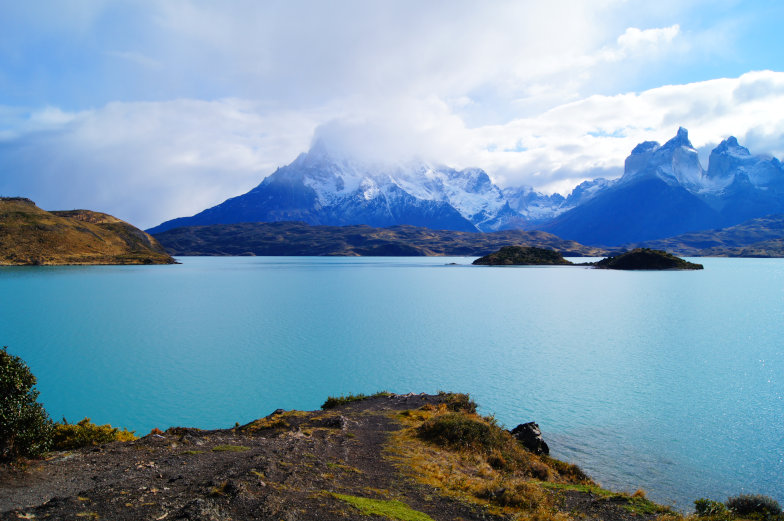
Der wunderschöne Pehoe See war mein Highlight auf unserer Tour! Die Ruhe, die geniale Aussicht auf die Berge und dazu Sonne :) Definitiv mein Favorit zum Überachten im Torres del Paine Nationalpark.
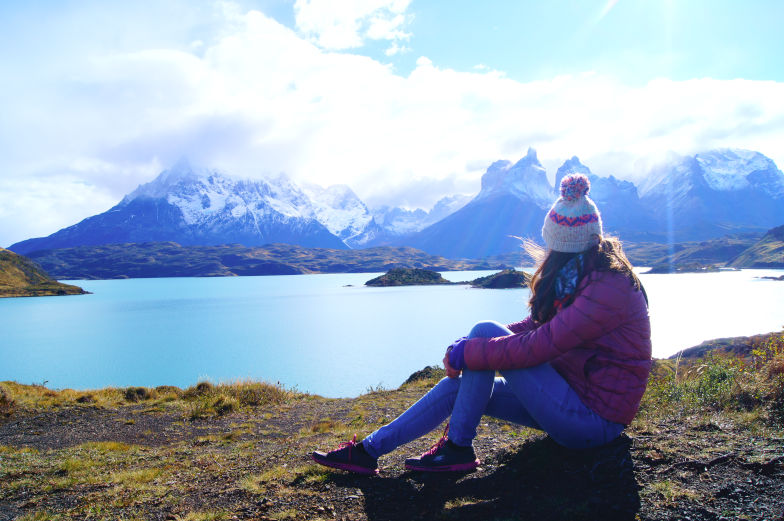
Hoteltipps Lago Pehoe
Campingplatz
Camping Lago Pehoe – wunderschöner Campingplatz direkt am See, den ich dir nur empfehlen kann.
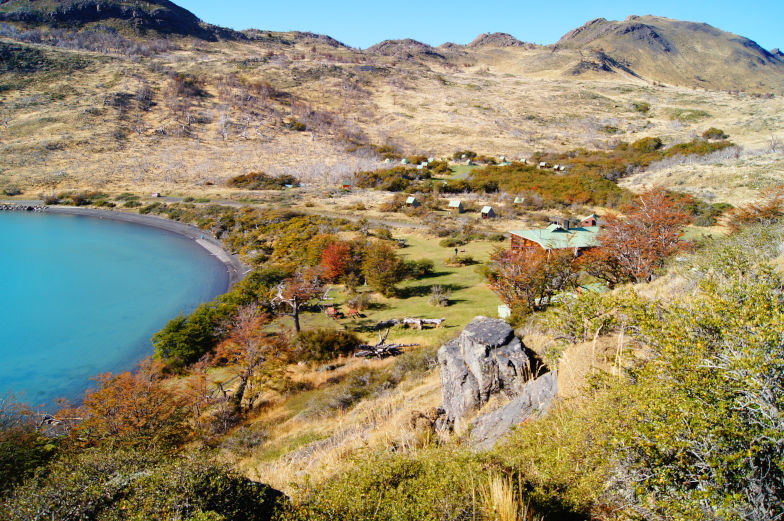
++++ Luxus
Explora en Torres del Paine * – im Nationalpark am Ufer des Sees gelegen und bietet 3 Tage All Inklusiv Pakete mit Transport, Ausflügen und Verpflegungen an,
- Das Hotel verfügt über einen kostenlosen Flughafentransfer, Innenpool, Spa & Wellnesscenter, Restaurant und Bar. Einen Katamaran um den See zu überqueren und Pferde um die Landschaft damit zu erkunden.
- Jedes Zimmer bietet eine atemberaubende Aussicht auf die Torres del Paine und den Wasserfall Salto Chico, sie verfügen über ein eigenes Bad, einen Safe und eine Heizung.
- Essen ist im Preis inbegriffen
Verfügbarkeit vom Explora en Torres del Paine prüfen *
Lago Grey – Perfekt, wenn du dem Gletscher nahe sein möchtest
Der Lago Grey ist ein von Gletschern gespeister See, der nur im Winter viel Wasser hat. Von dort kannst du schwimmende Eisbrocken sehen und mit dem Schiff zum Grey Gletscher fahren. Lago Grey ist ein großartiger Ausgangspunkt für einige Wanderrouten. Sowohl auf dem W Trek als auch auf dem O Circuit bietet der Grey-Gletscher eine beeindruckende Kulisse und ist ein Höhepunkt der Trekkingabenteuer im Torres del Paine Nationalpark. Am Grey-Gletscher kannst du auch Eiskletter-Touren machen, er bietet eindrucksvolle Eisformationen und steile Eiswände, die sich für anspruchsvolle alpine Aktivität eignen. Der Lago Grey ist ideal zum Übernachten, wenn du Gletschertouren unternehmen möchtest.
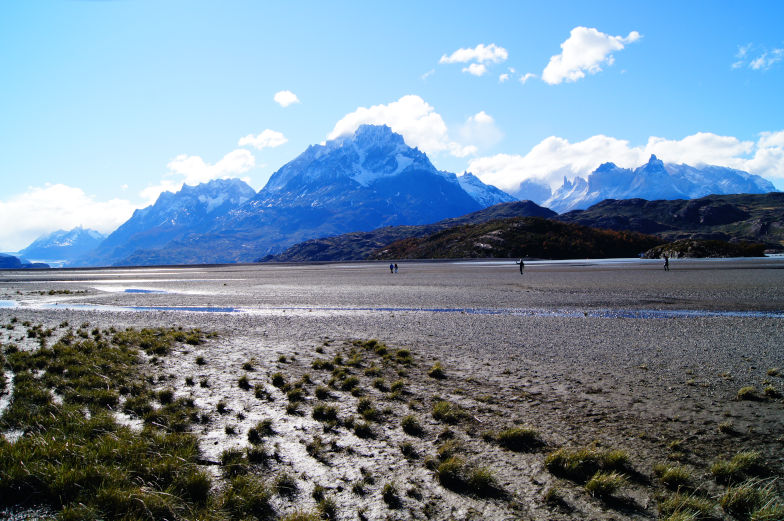
Hoteltipps für Lago Grey
Refugio Grey – in der Nähe des Grey-Gletschers und ist ein wichtiger Stopp für Wanderer auf dem O Circuit und dem W Trek. Es bietet einen spektakulären Blick auf den Gletscher.
Hotel Lago Grey * – direkt im Nationalpark am Lago Grey gelegen mit einmaliger Aussicht
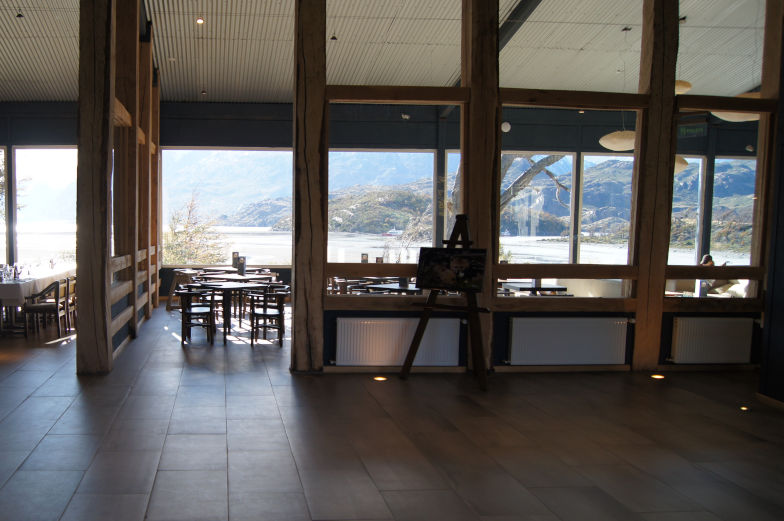
- Das Hotel verfügt über ein Restaurant, Bar, Lounge und Shop
- Die schicken Zimmer sind mit Heizung, Safe, Schreibtisch, Sitzmöglichkeiten und eigenem Bad ausgestattet.
- Frühstück und Parkplatze sind im Preis inbegriffen
Verfügbarkeit vom Hotel Lago Grey prüfen *
Campingplätze im Torres del Paine Nationalpark
Im Zelt übernachten ist die beliebteste Übernachtungsmöglichkeit im Torres del Paine Nationalpark. Es gibt daher mehrere Campingplätze im Park, die alle gut ausgestattet sind und eine großartige Möglichkeit bieten, die Natur hautnah zu erleben. Für alle die eine längere Tour durch den Park machen möchten, gibt es auch mehrere Wanderhütten, die komfortable Schlafplätze anbieten,
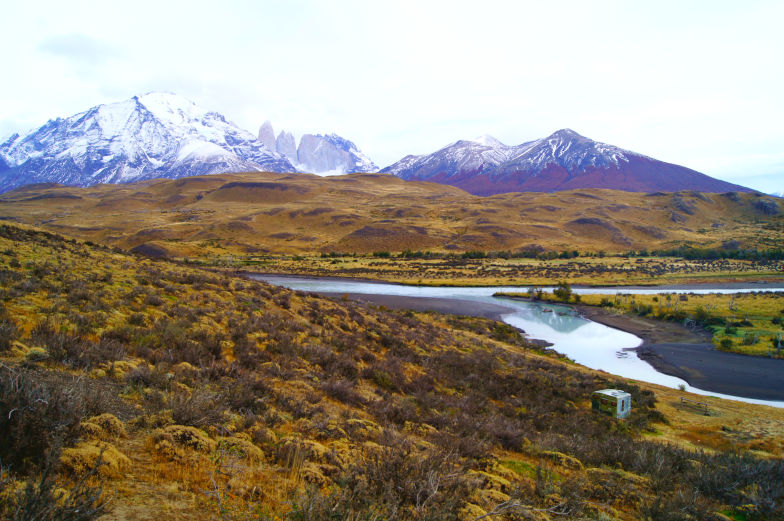
Camping Lago Pehoe – wunderschöne Campingplatz, direkt am Lago Pehoe, den ich dir nur empfehlen kann.
Refugio and Camping Paine Grande – liegt am Ufer des Lake Pehoe und ist ein zentraler Punkt auf dem W-Trek und O-Trek. Dort gibt es Hütten sowie Campingmöglichkeiten.
Nordenskjöld
Refugio Los Cuernos – mit Blick auf die Cuernos del Paine, bietet dieses Refugio eine malerische Lage am Ufer des Nordenskjöld-Sees. Liegt auf dem W-Trek.
Grey Gletscher
Refugio Grey – liegt in der Nähe des Grey-Gletschers und bietet einen tollen Blick darauf und ist ein praktischer Stopp, wenn man auf dem O-Circuit oder den W-Trek unterwegs ist.
Laguna Amarga / Torres del Paine Welcome Center
EcoCamp Patagonia * – die Kuppeln befinden sich in der Nähe des Welcome Center des Torres del Paine Nationalparks, perfekt zum Sterne schauen geeignet.
- In dieser Unterkunft kann man auch All-inclusive-Pakte mit Vollpension und zusätzlichen Aktivitäten buchen
- Die Unterkünfte sind teilweise mit eigenem Bad, Safe, Holzofen und eigener Terrasse ausgestattet
- Das Essen ist im Preis inbegriffen
Verfügbarkeit vom EcoCamp Patagonia prüfen *
Lago del Toro
Patagonia Camp – süßes Camp mit komfortablen Jurten, dass einsam am Lago del Toro liegt
Wann Hotels für den Torres del Paine Nationalpark buchen und wann ist die beste Reisezeit?
Die Hauptsaison für Wanderungen im Torres del Paine Nationalpark ist zwischen November und März. Ich würde dir empfehlen die Hotels frühzeitig zu buchen. Denn die Unterkünfte im Park, insbesondere die beliebten Refugios und Campingplätze sind schnell ausgebucht.
Mein Tipp: Besuche den Torres del Paine Nationalpark in der Nebensaison, dann ist weniger los und es gibt günstigere Preise für Unterkünfte und Touren.
Warum du eine Unterkunft im Torres del Paine Nationalpark buchen solltest
Was für eine Übernachtung im Torres del Paine Nationalpark spricht:
- Wenn du mehrere Tage am Stück durch den Park wandern möchtest.
- Wenn du frühmorgens mit deiner Wanderung beginnen möchtest, bevor die meisten Tagestouristen eintreffen. Dadurch kannst du die Ruhe der Natur in den frühen Stunden genießen.
- Die beeindruckenden Sehenswürdigkeiten sind nicht weit weg.
- Abends kannst du die Geräusche der Wildnis hören und den klaren Sternenhimmel bewundern.
Wenn du jedoch nur Tagestouren in den Park machen möchtest, reicht es auch in Puerto Natales zu übernachten.
Passende Reiselektüre über den Torres del Paine Nationalpark
- Senkov, Oleg (Autor)
Letzte Aktualisierung am 2.05.2024 / *= Affiliate Links / Bilder von der Amazon Product Advertising API
Hast du auch einen Hoteltipp für den Torres del Paine Nationalpark?
Bist du auch schon durch den Torres del Paine Nationalpark gewandert? Wo hast du übernachtet und hat es dir dort gefallen? Schreib deinen Hoteltipp in die Kommentare, ich freu mich auf Tipps!
Kennst du schon diese Südamerika Beiträge?
- Ultimativer Machu Picchu Guide – ohne Tour, mit Zug, flexibel und günstig!
- Buenos Aires – Mit diesen Tipps wird dein Aufenthalt perfekt!
- Bariloche – Schweizer Flair in Argentinien
- Montevideo – Insider Tipps für die Hauptstadt von Uruguay
Pinn dir die besten Hoteltipps zum Übernachten im Torres del Paine Nationalpark in dein Pinterest Board
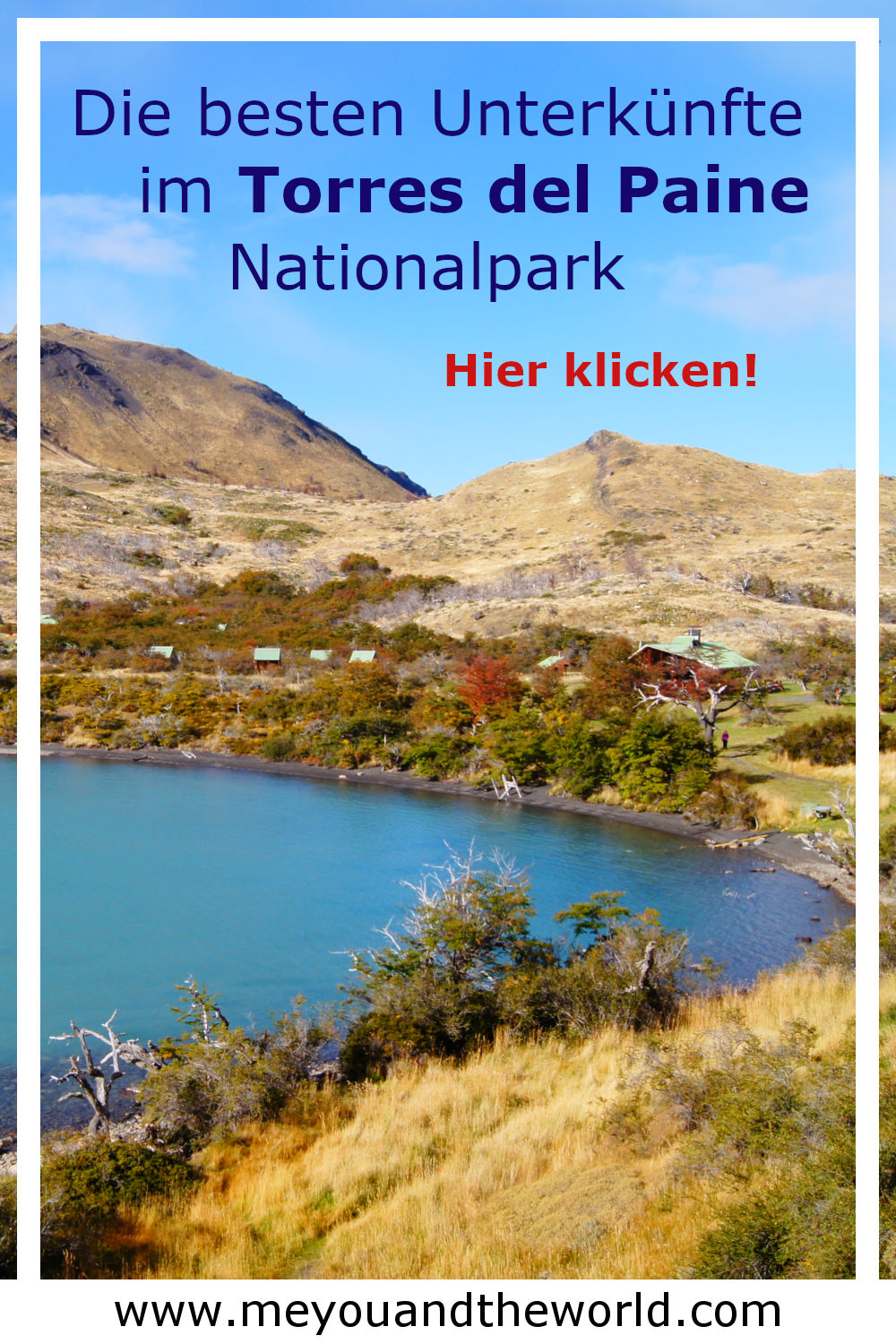
Erhalte regelmäßig Tipps und Inspirationen für deine Reisen
Das könnte dich auch interessieren:.

Schreibe einen Kommentar Antworten abbrechen
Durch das Anhaken der Checkbox erkläre ich mich mit der Speicherung meiner Daten durch meyouandtheworld.com einverstanden. Um Missbrauch zu verhindern, speichert diese Webseite den Kommentar, Name, E-Mail, die eingegebene URL, IP-Adresse und einen Zeitstempel deines Kommentars.
Ich habe die Datenschutzerklärung gelesen und akzeptiert. *

IMAGES
VIDEO
COMMENTS
In addition to the refugios Norte and Central, at the eastern end of the Torres del Paine W trek, there is also the Hotel Las Torres and Eco camp. All in all, the hotel is as is, that is to say a hotel. Eco Camp is a complex of dome-covered units and a central lounge, dining area. Accommodation here is under our "Luxury Camping" category.
W trek in Torres del Paine - a 4-day itinerary. If for some reason your time in Torres del Paine is limited you can walk the W trek in 4 days. Day 1. Paine Grande campsite - Grey campsite - Paine Grande campsite, 22 km/13,6 mi. Bus Puerto Natales Torres del Paine (Pudeto); ferry Pudeto - Paine Grande, 3-4 hours.
W Trek is a 5-day trek in Torres del Paine National Park. It is a popular hike named after the shape the hike takes. ... Also, there is a limited number of campsites, refugios, and hotels in the Torres del Paine National Park. People booking those accommodations are not just W Trek hikers but also, O Trek hikers and day hikers.
The W Trek is Torres del Paine's most famous hiking route, with views of the granite towers that give the park its name. In full, it's a four or five day hike that can be walked without carrying gear or food, between refugios or campsites. It can also be broken up into day hikes from luxury hotel bases, or incorporated into longer, wilder treks.
W-Trek Route. 26. November 2019. Für den W-Trek im Torres del Paine gibt es einige Variationsmöglichkeiten hinsichtlich der Unterkünfte. An manchen Tagen hat man bis zu drei Camps zur Auswahl, anderen nur Eines. Trotz dieser Möglichkeiten bleibt die grundsätzliche Route jedoch immer gleich. Lediglich die Tagesziele ändern sich durch die ...
While the Torres del Paine W Trek offers luxuries like warm beds, hot showers, bathrooms, and stock-up points along the way, it remains a physically demanding experience that will leave you amazed by its immense beauty. The 5-day/4 night W Hotel option lets you experience all the sights of the Torres del Paine W Trek but in a day trip format.
The Torres Del Paine W Trek in Patagonia is a 5-day, 100km adventure that brings you to some of the best features of Torres Del Paine. Visit Grey Glacier, the base of the Towers, the French Valley, and much more on this epic trek. ... Misc (additional food, unplanned travel/hotels, etc): $50; Total costs with tour agency: $2,000 - $4,000
The wildlife around Torres del Paine is actually mostly outside the park, rather than inside the park, Raffaele notes. "Outside the park, on the steppe, are a lot of opportunities to watch wildlife," he adds. Alternatives to the W Trek: 3 of the Best Hikes in Torres del Paine A suspension bridge looking on to Grey Glacier in Torres del Paine.
It was given its name because the trail resembles a capital "W". This 50 miles (80 km) trail will allow you to see incredible rock formations everywhere you turn, beautiful alpine lakes, and of course, the gorgeous 3 Towers. The Torres del Paine W Trek allows you to see all of this in a relatively short amount of time.
The red line is the Torres del Paine W Trek. You can see it forms a W on the map. Length: 80 km (50 mi) Elevation gain: 2,730 m (8,956 ft) Route type: Point to point Difficulty: Moderate The Torres del Paine W Trek is part of the complete circuit around the national park called the "O Circut" or "Big Circut".
The Patagonia W Trek can be done all year round, but the best time is from November to March. Chile is in the southern hemisphere, so this is spring/summer when temperatures are warmer and there's usually less rain and snow. If you're planning to hike Torres del Paine without a guide, it's critical to download a GPS map ahead of time.
Trip Summary and Itinerary Map. Day 1: Transfer from Puerto Natales; Trek to Weber Bridge. Day 2: Trek the Pingo Valley; Glacier Grey Boat Trip. Day 3: Trek the French Valley. Day 4: Cuernos and Cóndor Lookouts; Hike Lago Sarmiento/Laguna Amarga. Day 5: Trek to Las Torres (The Towers) Lookout. Start from Puerto Natales and end at Puerto ...
Call 1.406.541.2677. Start Planning My Trip. Hike the famous W Trek in the wilds of Patagonia's Torres del Paine National Park on this 8-day hiking and camping adventure. Your path follows the Paso Los Cuernos trail towards Refugio Los Cuernos and down into the French Valley. Experience panoramic views of Grey Glacier, witness the gigantic ...
Distance: 13 kilometers (8 miles) plus 8 kilometers (5 miles) for the hike from the Centro de Bienvenida to Laguna Amarga) Duration: 6 hours hiking (add an extra 1.5-2 hours for the hike to Laguna Amarga) 4:30am Wake up and take a small bag (including warm clothes and a snack) to see the torres at dawn.
Day 1 - Paine Grande to Grey Glacier Return. Let the trekking adventures begin! Today is a 22.4km return hike that will take around 6-8 hours.If trekking the Torres del Paine W Trek in a west-to-east direction, which is what we recommend, you'll catch the ferry to Paine Grande (more details on that here).Once you arrive at Paine Grande, go straight to reception to check in, set up your ...
1. Full passport details are required at the time of booking in order to purchase entrance fees to Torres del Paine National Parks. 2. This trip starts with a welcome meeting at 6 pm on Day 1. 3. Tour leader is also a qualified Trekking Guide and will join the group for Welcome Meting and then on the morning of Day 2 for the start of the trek. 4.
Trip Summary and Itinerary Map. Day 1: Transfer from Puerto Natales; Tierra Patagonia Hotel. Day 2: Boat trip and trek to Glacier Grey viewpoint; Tierra Patagonia Hotel. Day 3: Boat trip and trek to the French Valley; Tierra Patagonia Hotel. Day 4: Trek to the base of the Towers; Tierra Patagonia Hotel. Day 5: Transfer to Puerto Natales.
Am besten erlebst du die atemberaubende Landschaft des Torres del Paine W Treks, wenn du dir Zeit nimmst und sie über 4 Nächte und 5 Tage genießt. In diesem Abschnitt findest du einen detaillierten Tagesplan für den W-Trek in Patagonien, inklusive empfohlener Zwischenstopps und Unterkünfte, die du auf deiner Reise antreffen wirst.
Die Eingänge im Torres del Paine Nationalpark. Es gibt zwei Eingänge zum Park, die du je nach Route wählen kannst. Wenn du planst, das "W" oder das "O" von Ost nach West zu laufen, bringt dich der Bus von Puerto Natales zum Eingang der Laguna Amarga, von wo aus du einen Shuttle zum Ausgangspunkt (Besucherzentrum Torres del Paine, CLP 4.000 ≈ 5 €) nehmen kannst.
Warum du eine Unterkunft im Torres del Paine Nationalpark buchen solltest. Was für eine Übernachtung im Torres del Paine Nationalpark spricht: Wenn du mehrere Tage am Stück durch den Park wandern möchtest. Wenn du frühmorgens mit deiner Wanderung beginnen möchtest, bevor die meisten Tagestouristen eintreffen.